Grevillea fasciculata
Grevillea flexuosa
Grevillea floribunda
Grevillea formosa
Grevillea fulgens
Grevillea georgeana
Grevillea glauca
Grevillea goodii
Grevillea granulifera
Grevillea guthrieana
Grevillea heliosperma
Grevillea helmsiae
Grevillea hilliana
Grevillea hirtella
Grevillea hookeriana
Grevillea humifusa
Grevillea humilis
Grevillea iaspicula
Grevillea ilicifolia
Grevillea incrassata
Grevillea infundibularis
Grevillea insignis
Grevillea involucrata
Grevillea irrasa
Grevillea jephcottii
Grevillea johnsonii
Grevillea juncifolia
Grevillea juniperina
Grevillea kennedyana
Grevillea lanigera
Grevillea laurifolia
Grevillea lavandulacea
Grevillea leptobotrys
Grevillea linearifolia
Grevillea linsmithii
Grevillea longifolia
Grevillea longistyla
Grevillea macleayana
Grevillea masonii
Grevillea microstegia
Grevillea miniata
Grevillea mollis
Grevillea molyneuxii
Grevillea montis-cole
Grevillea mucronulata
Grevillea nana
Grevillea nematophylla
Grevillea fasciculata
Classification:
Class: Magnoliopsida
Order: Proteales
Family: Proteaceae
Genus: Is named in honour of C. F. Greville; 1749-1809, who was a British expert botanist on Algae, a foundation member of the London Horticultural Society and a collector of rare plants.
Species: From Fasiculus, which is Latin for a close cluster or to be bundled together. It refers to flattened stems, which are bundled together along the branches.
Sub Species:
Common Name:
Distribution:
Grevillea fasciculata is restricted to a small population in the far south west coast of Western Australia from Albany to Esperance on the coast and north to the Sterling Ranges.
https://avh.ala.org.au/occurrences/search?taxa=Grevillea+fasciculata#tab_mapView
Habitat Aspect Climate:
Grevillea fasciculata prefers dappled shade to light full shade. It grows in open eucalyptus woodlands, mallee scrubs and dense schlerophyll shrub lands. The altitude ranges from 2 meters ASL to 200 meters ASL.
The temperatures range from 3 degrees in August to 36 degrees in February.
The rainfalls range from lows of 300mm to an average 1200mm annually.
Soil Requirements:
Grevillea fasciculata prefers to grow in course sand, gravelly sands or at times lateritic fatty clays. The soils are derived from decomposed sandstones or accumulated sands. The soils pH ranges from 5.5pH to 6pH are preferred. It does not tolerate waterlogged soils. Non saline soils to moderately saline soils are tolerated.
Height & Spread:
Wild Plants: 0.3m to 1.5m by 0.5m to 1.5m.
Characteristics:
The stems are deep grey-brown dull to semi glossy and scabrous. The branchlets are pale grey-brown and densely covered in white tomentose hairs.
The alternate, simple, narrow elliptical, to narrow oblanceolate leaves measure 10mm to 60mm in length by 1mm to 7mm in width but can grow to 90mm in length by up to 10mm in width. The yellowish petiole measures 0.5mm to 2mm in length. The bases are tapering while the apexes are obtuse with a mucronate tip. The discolourous laminas are deep green to sea-green and minutely granulose to resinous or smooth on the upper lamina while the lower lamina is densely covered in off white to fawn subsericeous to tomentose hairs. The laminas are convex from the mid vein to near the margins while the margins are entire and recurved to strongly revolute where it forms a groove along the mid vein. The mid vein is prominent on the lower lamina and is visible as a groove on the upper lamina as a furrow.
The conflorescences of Grevillea fasciculata are short racemes which are born terminally or on short lateral branchlets. The rachises have 3 to 10 individual sub umbelloid to subsecunda flowers. The rachises and pedicels are covered in short golden-yellow villous hairs. The rachises measure 0.3mm to 3mm in length while the pedicels measure 3.2mm to 4.3mm in length. The perianth and style are the most prominent parts of the flower. The individual perianths are red, orange-red or orange from the base through to the lobes. The lobes are joined and are yellow to yellow-orange. The perianth is covered in red or orange hirsute hairs externally and internally. The perianths are densely covered in reddish-orange tomentose hairs or sparsely covered in reddish-orange subsericeous hairs externally while internally it is covered in white hirtellous hairs. The perianths measure 3.2mm to 4.3mm in length by 3mm to 4mm in diameter while the lobes measure 2.5mm to 3.5mm in length.
The style is bright yellow to bright orange from the base to the stigma. The stigma and pollen presenter are bright yellow. The pistil measure 6.5mm to 8.5mm in length. The style is covered in golden-yellow appressed hairs while the orbicular, lateral stigma is covered in longer golden puberulent hairs. The ovary is stipitate and densely covered in golden-yellow hairs. The perianths peduncles measure 3mm to 6mm in length. The flowers appear from May to November with some flowers appearing throughout this period.
Grevillea fasciculata fruits are narrow ovoidal follicles. The style is persistent on the ripe follicles. The glossy green follicles turn grey-brown on ripening. It is covered in long, white tomentose hairs and measure 10mm to 15mm in length by 7mm to 8mm in width.
Wildlife:
Grevillea fasciculata are very attractive to small nectar eating honeyeaters, butterflies, beetles, native flies and native bees.
Cultivation:
Grevillea fasciculata is an unusual foliaged small shrub for most gardens in semi-arid and temperate zones. It has a distinctive arid appearance about them being squat with arching stems. It is a very reliable bloomer. As garden subjects it will grow from 1.8 meters to 2.2 meters in height by 1.8 meters to 2.2 meters in diameter when cultivated in the open. It is fast growing, drought and cold tolerant, at least down to temperatures of minus 2 degrees.
Garden beds would need to be open with plenty of space between plants to allow air flow as well as to give the leaves a chance to be appreciated for its unique beauty. Crowding this type of foliage with other plants sees them lose all the effectiveness of the harsh environment they originated from. Correct spacing will contrast the foliages better without one overpowering the other and prevent mosaic spot on the foliage.
When mass planting space the plants at 1.8 meters to 2 meter centers should be considered. If you are using it amongst rocks or around the small desert garden, plant them sparingly, so not to make the area look cluttered or detract from the other features. 3 or 4 in an area of 100 square meters would be ample. 4 plants separately planted or plant 2 close together and separate the other 2 to give width and depth where you want it. The use of annuals helps to attract the viewer to the permanent plants foliage as it is the predominant foliage patch in sight. In the case of this Grevillea you could substitute other very small Grevillea specie or natives instead of the native annuals. In addition most annuals flower when this Grevillea is resting during the summer. Annuals mixed with Grevillea centristigma help to give small gardens depth and make them look larger than what they really are. It works well with Grevillea masonii or other Grevillea species of similar size but use contrasting foliages and interesting flowers.
When you design a miniature desert garden, use contours to display the plants to their best. Plant a row on the top to represent the hills or a ridge they would taller than those planted in valleys or on plains. Don’t make the ridge straight curve it, wind it around. Use small tussock grasses or Lomandra specie adjacent to Grevillea centristigma to give them height. Prune plants up the valleys and background so they remain shorter than those in the foreground to give greater depth.
Place them near old stumps and roots to make the stumps or roots look larger. Select an area of ground and let your hair down and be imaginative and this is the plant that may just change your life. Remember this plant naturally grows as a small squat plant with a few longer arching stems. In this type of garden be sparingly with the other plants when planting and remember that deserts are rolling flat plains not steep hills so it is best to use a gentle slope or a basin with a small pool at the bottom. A billabong affect is the go, not a waterfall or cascades.
It has a tendency to look unkempt and in need of a good pruning especially from a distance if planted in isolation. This is its appeal. It will need occasional tip pruning or if it become a little vigorous remove one or two of the longer arching stems from near their base in order to maintain that harsh arid look. Its upside is the spares of foliage along the long arching stems gives them that harsh almost bonsai look naturally.
Propagation:
Seeds: Sow the seeds of Grevillea fasciculata directly into a seed raising mix. Cover them with 5mm of fine sand and keep moist not wet. Place the tray in a warm sunny position. When the seedlings are 25mm to 50mm tall, prick them out and plant them into 50mm native tubes using a good organic mix.
Once the seedlings reach 150mm to 200mm in height, nip the tips out before planting them out into their permanent position. For mass plantings plant them out at 0.7 meter to 2 meter centers depending on the form or whether it is used as a hedge of feature shrub.
Fertilize using Seaweed, fish emulsion or a half strength solution of organic chicken pellets soaked in water on an alternate basis. Fertilize every 3 months until the plants are well established then annually to assist in prolific blooming and good health.
Cuttings: Use 70mm to 100mm long half ripened material when growing from cuttings from the present season’s growth. Take them in mid-autumn or early spring. Remove half the leaves from the bottom section being careful not to tear the bark.
1 Prepare the cutting mix by adding one third sharp clean river sand, one third peat and one third perlite. These ingredients are sterilize,
2 Select good material from non diseased plants,
3 Select semi green stems for cuttings. Look for a stem with two or three nodes,
4 Place the cutting on a flat, hard surface, and make a clean cut down one side of the cutting at the base for 10mm with a sharp sterile knife or razor blade. – This scarification of the node will increase the chances of roots emerging from this spot. Now remove all but one or two the leaves, leaving the apex leaves in tact. If the leaves are very large in proportion to the stem, cut off the apical halves.
5 Fill a saucer with water, and place a little medium strength rooting hormone into another container like a milk bottle top. Dip the node end of the cutting into the water and then into the rooting hormone. Tap off any excess hormone,
6 Use a small dipple stick or old pencil to poke a hole into the soilless potting mix. Ensure the hole is slightly larger than the stem diameter and be careful not to wipe the rooting hormone off the cuttings base, place the cuttings in a pattern ensuring the cuttings are not touching each other,
7 I like to place the pots in Plastic bags to help maintain temperature and moisture. Place in a semi shaded place like under 50mm shade cloth.
8 When the cuttings have struck, open the bag to allow air circulation for a few days to a week,
9 Once hardened off remove the cuttings from the bag and allow to further hardening for a few more days,
10 Transplant into a good potting mix to grow on.
Fertilize using seaweed, fish emulsion or organic chicken pellets soaked in water on an alternate basis. Fertilize every two months until the plants are established then twice annually in early September or March to maintain health, vitality and better flowering. Avoid synthetic fertilizers as they will most likely contain calcium and phosphorus at levels, which are toxic to most Proteaceae.
Further Comments from Readers:
Hi reader, it seems you use The Bible of Botany a lot. That’s great as we have great pleasure in bringing it to you! It’s a little awkward for us to ask, but our first aim is to purchase land approximately 1,600 hectares to link several parcels of N.P. into one at The Pinnacles NSW Australia, but we need your help. We’re not salespeople. We’re amateur botanists who have dedicated over 30 years to saving the environment in a practical way. We depend on donations to reach our goal. If you donate just $5, the price of your coffee this Sunday, We can help to keep the planet alive in a real way and continue to bring you regular updates and features on Australian plants all in one Botanical Bible. Any support is greatly appreciated. Thank you.
In the spirit of reconciliation we acknowledge the Bundjalung, Gumbaynggirr and Yaegl and all aboriginal nations throughout Australia and their connections to land, sea and community. We pay our respect to their Elders past, present and future for the pleasures we have gained.
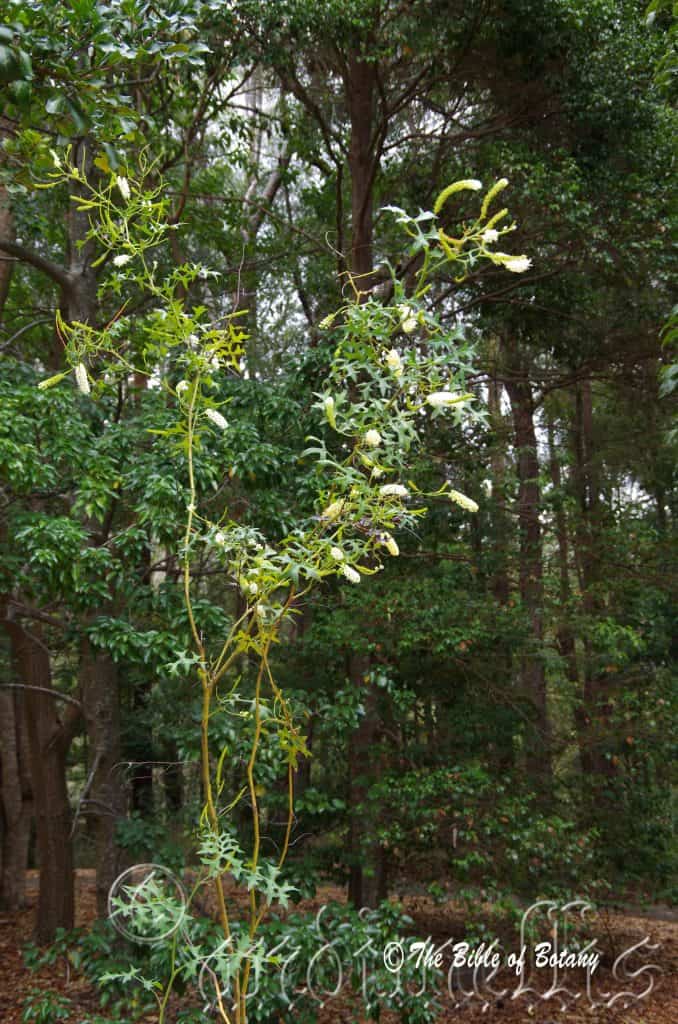
National Botanic Gardens ACT
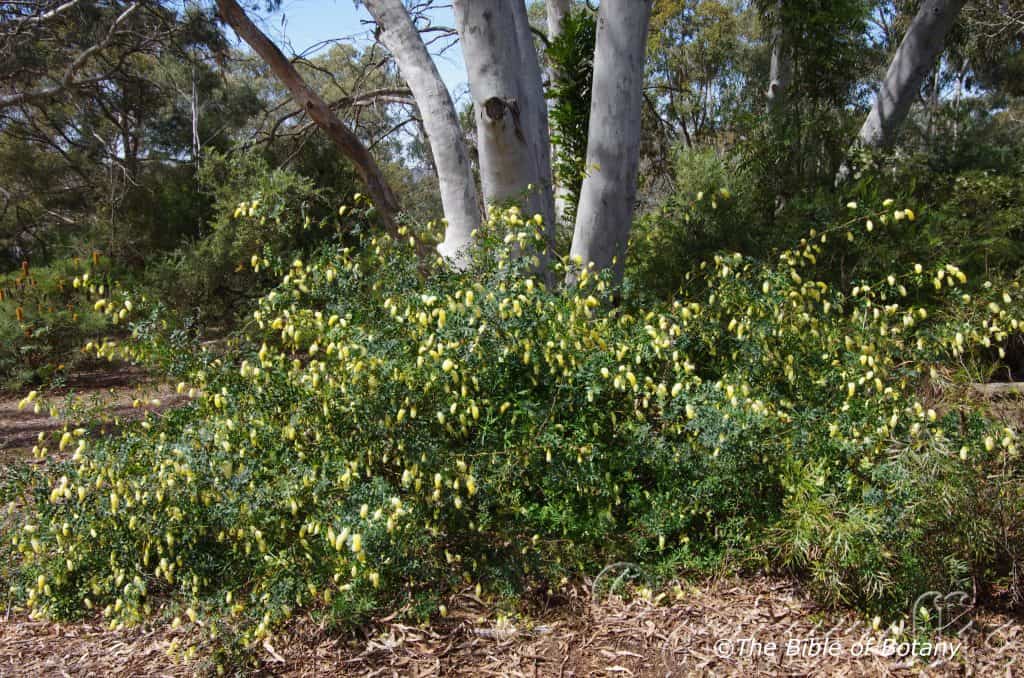
National Botanic Gardens ACT
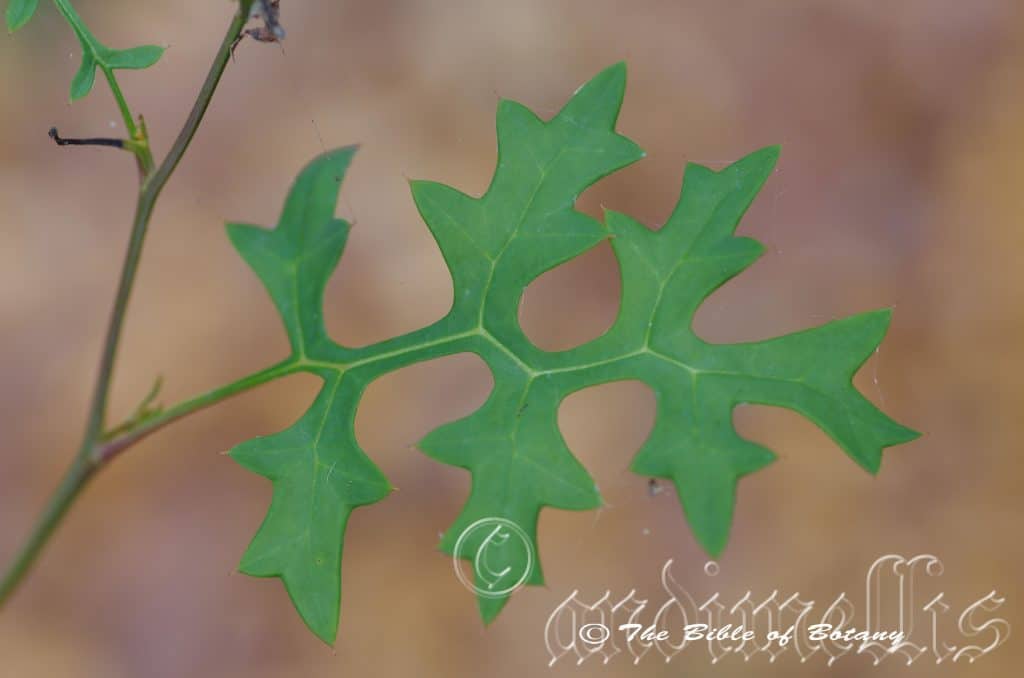
National Botanic Gardens ACT
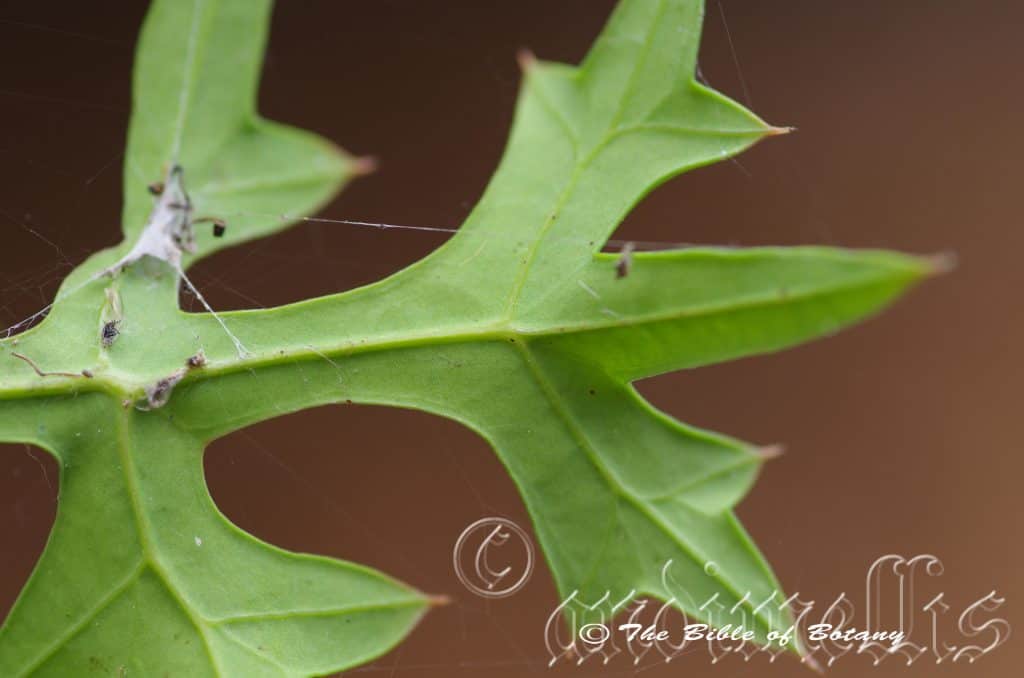
National Botanic Gardens ACT

National Botanic Gardens ACT
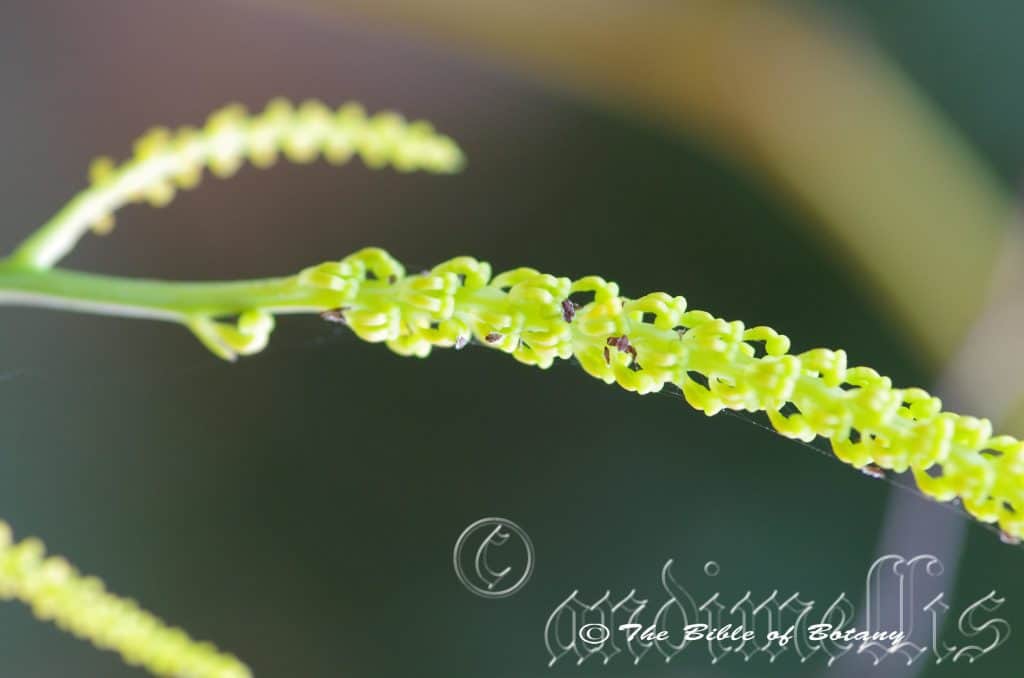
National Botanic Gardens ACT
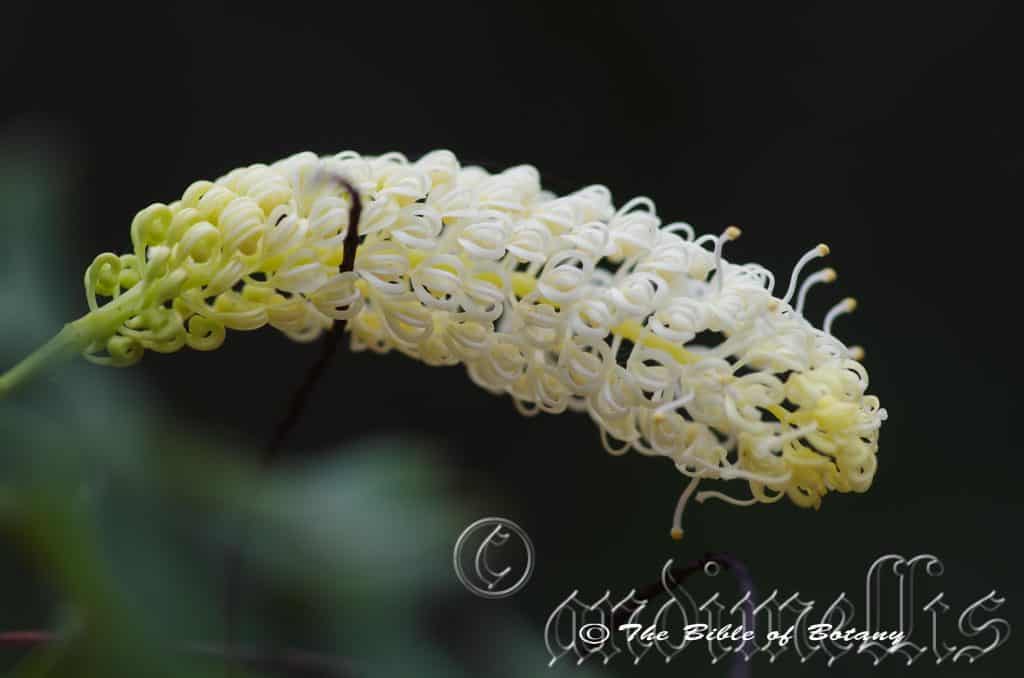
National Botanic Gardens ACT
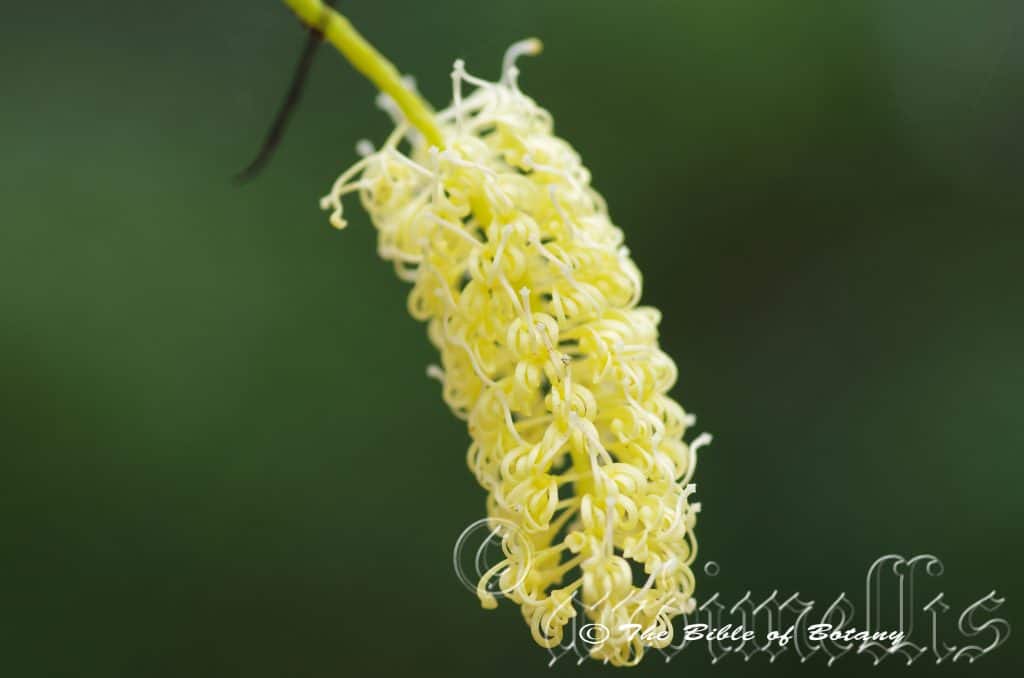
National Botanic Gardens ACT
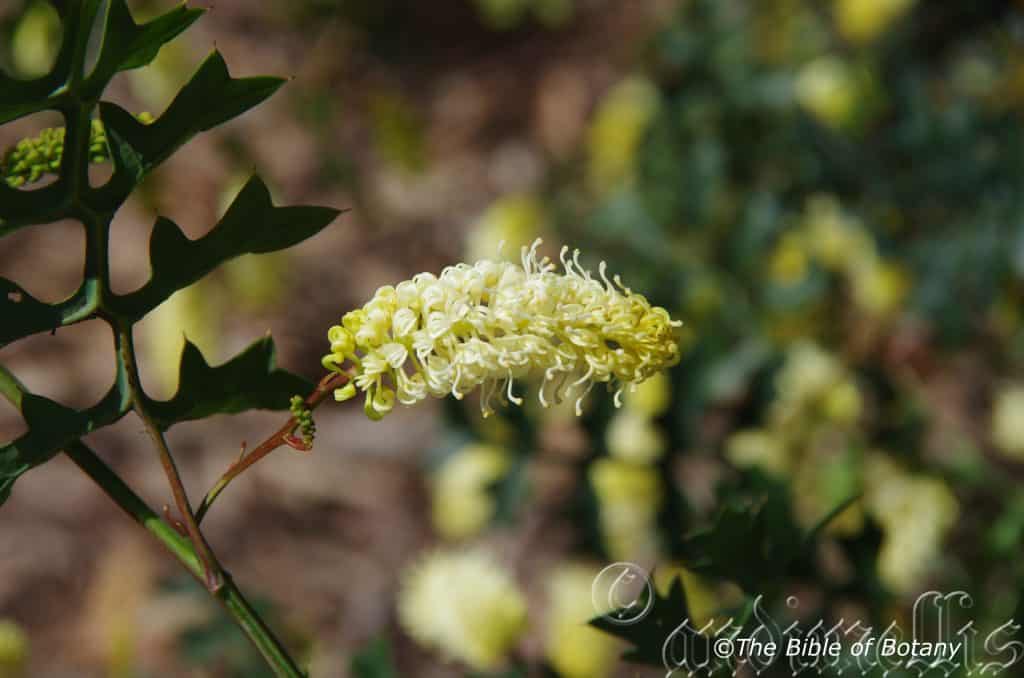
National Botanic Gardens ACT
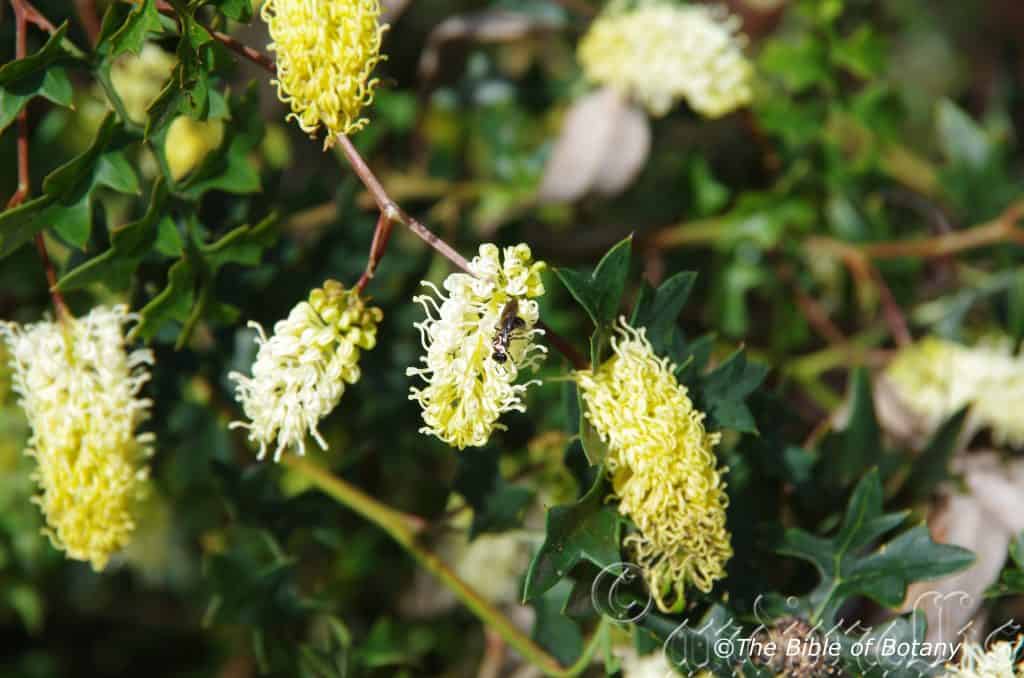
National Botanic Gardens ACT
Grevillea flexuosa
Classification:
Class: Magnoliopsida
Order: Proteales
Family: Proteaceae
Genus: Is named in honour of C. F. Greville; 1749-1809, who was a British expert botanist on Algae, a foundation member of the London Horticultural Society and a collector of rare plants.
Species: From Flexus, which is Latin for bent, torturous, winding. It refers to branches or more often the stems, which are twisted or weeping and bend even further in the wind.
Sub Species:
Common Name:
Distribution:
Grevillea flexuosa is restricted to a small population in south western, Western Australia west on the Swan River Plains.
https://avh.ala.org.au/occurrences/search?taxa=Grevillea+flexuosa#tab_mapView
Habitat Aspect Climate:
Grevillea flexuosa prefers full sun to dappled shade. It grows on slopes, hills, ridges and granite outcrops, in dry schlerophyll forests, open woodlands and adjacent to or in openings in closed forests. The altitude ranges from 5 meters ASL to 160 meters ASL.
The temperatures range from 4 degrees in August to 36 degrees in February.
The rainfalls range from lows of 450mm to an average 1000mm annually.
Soil Requirements:
Grevillea flexuosa prefers heavy granitic sands, better quality red and brown sandy loams through to medium gritty clays. The soils are usually derived from decomposed granites. The soils pH ranges from 5.5pH to 6pH are preferred. It does not tolerate waterlogged soils. Non saline soils to moderately saline soils are tolerated.
Height & Spread:
Wild Plants: 1m to 2m by 1m to 2m.
Characteristics:
The stems are very variable from deep grey-brown, red-browns, olive-green, deep green and red-green. The stems all have one thing in common being semi glossy and glabrous.
The alternate leaves are dissected to the mid vein, pinnatifid to pinnatisect or bipinnatifida and bipinnatisectus with 7 to 18 primary lobes and 3 to 5 ultimate lobes on the primary lobes. The primary lobes measure 150mm to 260mm in length by 100mm to 160mm in width. The ultimate lobes are broad triangular to narrow triangular and measure 5mm to 30mm in length by 5mm to 10mm in width. The floral leaves are dorsiventralis and measure 50mm to 100mm in length by 50mm to 70mm in width.
The bases are attenuate while the apexes are dentate and end in a sharp pungent spine. The discolourous laminas are deep grass-green to a pale or deep olive-green and glabrous on the upper laminas while the lower laminas are paler. The mid vein is prominent on both laminas being pinkish-red and distinctly zig-zags between the primary lobes while the main lateral zigzags between the triangular teeth.
The acroscopic inflorescence of Grevillea flexuosa is a densely compact cylindrical raceme which is born terminally or from the leaf axils. The glabrous are simple or with 2 to 3 branches have 90 to 130 flowers and measure 35mm to 65mm in length. The perianth and style are the most prominent parts of the flower. The individual perianths are white, cream or pale yellow from the base through to the lobes. The lobes are joined. The perianth is glabrous externally and papillose internally. The perianths measure 3mm to 5mm in length while the lobes measure 2mm to 4mm in length. The perianths peduncles measure 1mm to 2mm in length.
The style is white, cream or pale yellow at the base through to the stigma. The conical, pollen presenter is cream or pale yellow. The pistils measure 5mm to 9mm long. The erect style, lateral stigma and ovary are all glabrous. The flowers appear from July to September.
Grevillea flexuosa’s fruits are ovoidal to ellipsoidal follicles. The style is persistent on the ripe follicles at the attenuate apex. The pale green with red to apricot tinged markings are a semi glossy similar to green and red apples and turn a deep tan-brown when ripe. The follicles are rugose, semi glossy and measure 18mm to 21mm by 7mm to 8mm wide. The semi elliptical brown seeds measure 8mm to 12mm in length by 6mm to 7mm in width.
Wildlife:
Grevillea flexuosa are very attractive to small nectar eating honeyeaters, butterflies, beetles, native flies and native bees.
Cultivation:
Grevillea flexuosa is an unusual foliaged small shrub for most gardens in semi-arid and temperate zones. It has a distinctive arid appearance about them being squat with arching stems. It is a very reliable bloomer. As garden subjects it will grow from 1.5 meters to 2.2 meters in height by 1.8 meters to 2.2 meters in diameter when cultivated in the open. It is fast growing, drought and cold tolerant, at least down to temperatures of 1 degree.
The leaves form a nasty barrier on the plant or once they fall to the ground. This is another one of my favourites for its unattractiveness to feral dogs and cats, while at the same time offers a safe corridor for small native wildlife including small birds. Because of this they should be planted back from paths and edges to avoid scratching.
It is best used adjacent to small areas of bush close to paths or the house so their flowers can be viewed regularly yet back from the path to avoid unnecessary scratching. It is an ideal in medium or large rockeries. Here it can be planted in small groups of 2 or 3 or as a standalone plant to create a dense bush scene with other semi-arid plants or if surrounded by shorter plants with fine foliages and red flowers can be the center of attention giving height and strength to the bed. Both methods are best achieved with raised beds. Do not use plants with large leaves as these will be too overpowering and they will blend into each other. They will need to be tipped pruned on a regular basis when young to encourage a denser bushier plant with plenty of flowers in late winter and early spring.
Grevillea flexuosa makes a great wildlife corridors on farms so can be mass planted at 1.5 meter to 2 meter centers along fence lines or dry creek banks.
Propagation:
Seeds: Sow the seeds of Grevillea flexuosa directly into a seed raising mix. Cover them with 5mm of fine sand and keep moist not wet. Place the tray in a warm sunny position. When the seedlings are 25mm to 50mm tall, prick them out and plant them into 50mm native tubes using a good organic mix.
Once the seedlings reach 150mm to 200mm in height, nip the tips out before planting them out into their permanent position. For mass plantings plant them out at 0.7 meter to 2 meter centers depending on the form or whether it is used as a hedge of feature shrub.
Fertilize using Seaweed, fish emulsion or a half strength solution of organic chicken pellets soaked in water on an alternate basis. Fertilize every 3 months until the plants are well established then annually to assist in prolific blooming and good health.
Cuttings: Use 70mm to 100mm long half ripened material when growing from cuttings from the present season’s growth. Take them in mid-autumn or early spring. Remove half the leaves from the bottom section being careful not to tear the bark.
1 Prepare the cutting mix by adding one third sharp clean river sand, one third peat and one third perlite. These ingredients are sterilize,
2 Select good material from non diseased plants,
3 Select semi green stems for cuttings. Look for a stem with two or three nodes,
4 Place the cutting on a flat, hard surface, and make a clean cut down one side of the cutting at the base for 10mm with a sharp sterile knife or razor blade. – This scarification of the node will increase the chances of roots emerging from this spot. Now remove all but one or two the leaves, leaving the apex leaves in tact. If the leaves are very large in proportion to the stem, cut off the apical halves.
5 Fill a saucer with water, and place a little medium strength rooting hormone into another container like a milk bottle top. Dip the node end of the cutting into the water and then into the rooting hormone. Tap off any excess hormone,
6 Use a small dipple stick or old pencil to poke a hole into the soilless potting mix. Ensure the hole is slightly larger than the stem diameter and be careful not to wipe the rooting hormone off the cuttings base, place the cuttings in a pattern ensuring the cuttings are not touching each other,
7 I like to place the pots in Plastic bags to help maintain temperature and moisture. Place in a semi shaded place like under 50mm shade cloth.
8 When the cuttings have struck, open the bag to allow air circulation for a few days to a week,
9 Once hardened off remove the cuttings from the bag and allow to further hardening for a few more days,
10 Transplant into a good potting mix to grow on.
Fertilize using seaweed, fish emulsion or organic chicken pellets soaked in water on an alternate basis. Fertilize every two months until the plants are established then twice annually in early September or March to maintain health, vitality and better flowering. Avoid synthetic fertilizers as they will most likely contain calcium and phosphrous at levels, which are toxic to most Proteaceae.
Further Comments from Readers:
Hi reader, it seems you use The Bible of Botany a lot. That’s great as we have great pleasure in bringing it to you! It’s a little awkward for us to ask, but our first aim is to purchase land approximately 1,600 hectares to link several parcels of N.P. into one at The Pinnacles NSW Australia, but we need your help. We’re not salespeople. We’re amateur botanists who have dedicated over 30 years to saving the environment in a practical way. We depend on donations to reach our goal. If you donate just $5, the price of your coffee this Sunday, We can help to keep the planet alive in a real way and continue to bring you regular updates and features on Australian plants all in one Botanical Bible. Any support is greatly appreciated. Thank you.
In the spirit of reconciliation we acknowledge the Bundjalung, Gumbaynggirr and Yaegl and all aboriginal nations throughout Australia and their connections to land, sea and community. We pay our respect to their Elders past, present and future for the pleasures we have gained.
Grevillea floribunda
Classification:
Class: Magnoliopsida
Order: Proteales
Family: Proteaceae
Genus: Is named in honour of C. F. Greville; 1749-1809, who was a British expert botanist on Algae, a foundation member of the London Horticultural Society and a collector of rare plants.
Species: From Floris, which is Latin for a flower or Flos, which is Roman for the Goddess of spring and flowers and Bundus, which is Latin for abundant or plenty. It refers to flowers, which are born in prolific numbers when in flower.
Sub species: Grevillea floribunda subsp. floribunda. From Floris, which is Latin for a flower or Flos, which is Roman for the Goddess of spring and flowers and Bundus, which is Latin for abundant or plenty. It refers to flowers, which are born in prolific numbers when in flower.
Sub species: Grevillea floribunda subsp. tenella. From Tenella, which is Latin for small, delicate and tender. It refers plants, which are dainty or petite in size.
Common Name: Seven Dwarfs Grevillea.
Distribution:
Grevillea floribunda subsp. floribunda is found south from to the Black Down tablelands in Southern Queensland to near the Victorian New South Wales border. It is found on the Western Plains, Western Slopes and on the Great Dividing Range. There is an isolated population on Mount Stewart near Charters Towers.
Grevillea floribunda subsp. tenella is found south from the North Burnett River to Hampton in Southern Queensland on the Great Dividing Range.
https://avh.ala.org.au/occurrences/search?taxa=Grevillea+floribunda#tab_mapView
Habitat Aspect Climate:
Grevillea floribunda prefers full sun to light dappled shade. It grows in cooler open Eucalyptus woodlands or dry sclerophyll woodlands, dry schlerophyll forests. The altitude ranges from near 200 meters ASL to 1200 meters ASL.
The temperatures range from minus 6 degree in August to 38 degrees in January.
The rainfalls range from lows of 390mm to an average of 990mm annually.
Soil Requirements:
Grevillea floribunda prefers better quality cream, yellow-orange or reddish gravelly sands through to medium gravelly, sandy clays and light fatty clays. The soils are usually derived from decomposed sandstones, granites or at times brown basalt, black basalt. The soils pH ranges from 5pH to 6.5pH are preferred. It does not tolerate waterlogged soils. Non saline soils to moderately saline soils are tolerated.
Height & Spread:
Wild Plants: 0.3m to 2m by 0.5m to 1.8m.
Characteristics:
Grevillea floribunda larger stems are a pale red-brown to fawn and glabrous to sparsely covered in white villose hairs. Branchlets are a creamy fawn colour and densely covered in white villose hairs.
Grevillea floribunda‘s simple, alternate, narrow, oblong-elliptical, obovate or linear leaves measure 20mm to 80mm in length by 2mm to 20mm in width. The petioles are densely covered in white villose hairs and measure 1mm to 4mm in length. The bases are cuneate to rounded while the apexes are broadly acute, obtuse or mucronate. The discolourous laminas are semi glossy pale green to a mid olive-green and glabrous on the upper lamina while the lower laminas are densely covered in white villous hairs. The northern plants in New South Wales are densely covered in white subsericeous on the lower laminas. The leaf margins are entire and strongly recurve.
The inflorescence is decurve short raceme which is born in the leaf axils. It is sub globose to sub secund with 10 to 30 individual flowers to a cluster. The style and perianth are the most prominent part of the flower. Individual perianths are yellow, orange, scarlet red, or a variation of these. The base of the perianth is saccate. The perianths are sparsely to moderately covered in white, rusty, brown or orange villous hairs externally and covered in rusty to hirtellous hairs internally. The perianths measure 3mm to 4mm in length while the lobes measure 3mm to 5mm in length.
The bright yellow anthers are very distinct. The styles are red, orange or yellow with an orange or orange-green stigma. The oval stigma is enlarged and extends in a straight line from the perianth. The pistils measure 9.5mm to 14mm in length. The style is covered in rusty to orange-green villous hairs near the base while the sessile ovary is covered in villous hairs. The flowers appear throughout the year with a peak from September to November.
The fruits are ovoidal to ellipsoidal follicle. The follicles are produced singularly radiating out from raceme. They measure 12mm to 15mm in length by 5mm to 6mm in width. The brown follicles are sparsely covered in rusty to orange-green villous hairs and have3 faint longitudinal ridges when ripe. The ovate seeds are brown with a hard testa.
Confusing Species:
Grevillea floribunda subsp. tenella is found on the Great Dividing Range. The leaves measure 40mm to 50mm in length by 2mm to 5mm in width.
Grevillea floribunda subsp. floribunda‘s is found west of the Great Diviving Range. The leaves measure 50mm to 80mm in length by 7mm to 15mm in width.
Wildlife:
The dense foliage and proliferation of small flowers throughout the year is a great attraction and safe zone for smaller honeyeaters like the Silver Eyes, Yellow Face Honeyeater, Brown Honeyeater and the eastern Spinebill. (Acanthorhynchus tenuirostris).
Cultivation:
Grevillea floribunda is a very beautiful Grevillea for cool temperate to cool subtropical areas in native gardens where course sandy soils prevail or light clays soils occur. In cultivation it grows as a small dense shrub from 1.2 meters to 1.5 meters in height by 1.2 meters to 2 meters in diameter when grown in the open. The foliage can be regularly tip pruned to encourage new growth, bushiness and flowering. It is best grown on banks, native bush gardens or along driveways.
It is also a good supply of nectar for birds throughout the year. In Native gardens it can be used to attract birds. A bend in a path can be broken up by placing them at the bend.
Place them at the end of the path. Place taller growing plants at the back that have deep green leaves with deep red or white flowers or plants that flower at a different times. This will lead your eyes over to the midground or down to it depending on which is in flower at the time and onto the background when their flowering is out of season. However they will grab your attention throughout winter. Do not use Acacia specie as their flowering will be far too strong.
Grevillea floribunda is great in bush gardens where whole beds or sections can be devoted to them using the various foliage forms and different colours in the flowers to blend one area into the next.
The area where it would excel is in arid scenes where it is the stand alone plant or in isolated pockets. Mix them with other small shrubs and annuals with any coloured flower except red. Properly used with a prostrate ground cover adjacent to small fish ponds or small frog ponds can give contrast and colour all year.
Because it flowers all year it offers the landscaper a treasure trove of ideas. It can be used around swimming pools, pruned for low hedges or more upright for low screens large rockeries on embankments or even as a standalone feature. I did one as a standalone feature in the center of a sunny courtyard with white quartz where it gained everyone’s attention as they arrived and departed.
Propagation:
Seeds: Sow the seeds of Grevillea floribunda directly into a seed raising mix. Cover them with 5mm of fine sand and keep moist not wet. Place the tray in a warm sunny position. When the seedlings are 25mm to 50mm tall, prick them out and plant them into 50mm native tubes using a good organic mix.
Once the seedlings reach 150mm to 200mm in height, nip the tips out before planting them out into their permanent position. For mass plantings plant them out at 0.5 meter to 2 meter centers depending on the sub specie or whether it is used as a hedge, barrier of feature shrub.
Fertilize using Seaweed, fish emulsion or a half strength solution of organic chicken pellets soaked in water on an alternate basis. Fertilize every 3 months until the plants are well established then annually to assist in prolific blooming and good health.
Cuttings: Use 70mm to 100mm long half ripened material when growing from cuttings from the present season’s growth. Take them in mid-autumn or early spring. Remove half the leaves from the bottom section being careful not to tear the bark.
1 Prepare the cutting mix by adding one third sharp clean river sand, one third peat and one third perlite. These ingredients are sterilize,
2 Select good material from non diseased plants,
3 Select semi green stems for cuttings. Look for a stem with two or three nodes,
4 Place the cutting on a flat, hard surface, and make a clean cut down one side of the cutting at the base for 10mm with a sharp sterile knife or razor blade. – This scarification of the node will increase the chances of roots emerging from this spot. Now remove all but one or two the leaves, leaving the apex leaves in tact. If the leaves are very large in proportion to the stem, cut off the apical halves.
5 Fill a saucer with water, and place a little medium strength rooting hormone into another container like a milk bottle top. Dip the node end of the cutting into the water and then into the rooting hormone. Tap off any excess hormone,
6 Use a small dipple stick or old pencil to poke a hole into the soilless potting mix. Ensure the hole is slightly larger than the stem diameter and be careful not to wipe the rooting hormone off the cuttings base, place the cuttings in a pattern ensuring the cuttings are not touching each other,
7 I like to place the pots in Plastic bags to help maintain temperature and moisture. Place in a semi shaded place like under 50mm shade cloth.
8 When the cuttings have struck, open the bag to allow air circulation for a few days to a week,
9 Once hardened off remove the cuttings from the bag and allow to further hardening for a few more days,
10 Transplant into a good potting mix to grow on.
Fertilize using seaweed, fish emulsion or organic chicken pellets soaked in water on an alternate basis. Fertilize every two months until the plants are established then twice annually in early September or March to maintain health, vitality and better flowering. Avoid synthetic fertilizers as they will most likely contain calcium and phosphrous at levels, which are toxic to most Proteaceae.
Further Comments from Readers:
Hi reader, it seems you use The Bible of Botany a lot. That’s great as we have great pleasure in bringing it to you! It’s a little awkward for us to ask, but our first aim is to purchase land approximately 1,600 hectares to link several parcels of N.P. into one at The Pinnacles NSW Australia, but we need your help. We’re not salespeople. We’re amateur botanists who have dedicated over 30 years to saving the environment in a practical way. We depend on donations to reach our goal. If you donate just $5, the price of your coffee this Sunday, We can help to keep the planet alive in a real way and continue to bring you regular updates and features on Australian plants all in one Botanical Bible. Any support is greatly appreciated. Thank you.
In the spirit of reconciliation we acknowledge the Bundjalung, Gumbaynggirr and Yaegl and all aboriginal nations throughout Australia and their connections to land, sea and community. We pay our respect to their Elders past, present and future for the pleasures we have gained.
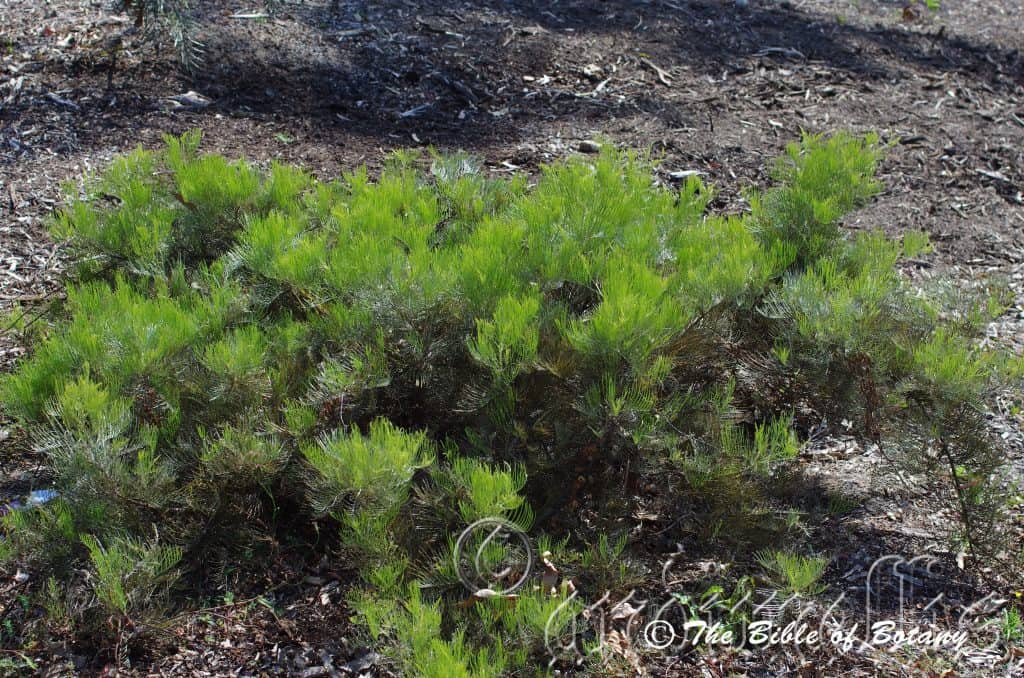
Mount Cootha Botanic Gardens Qld.
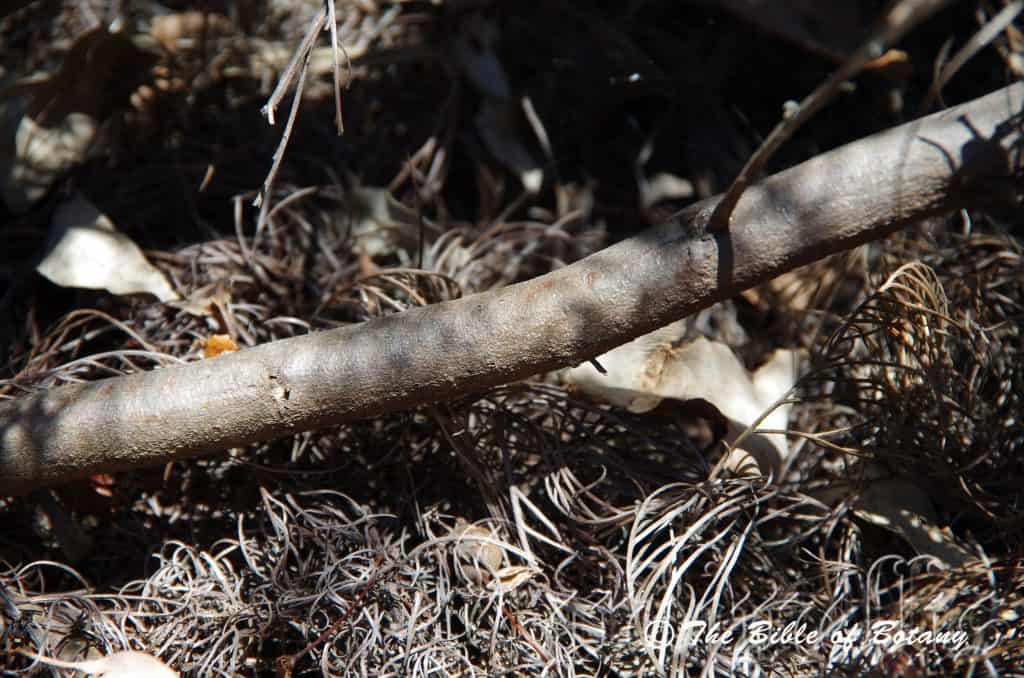
Mount Cootha Botanic Gardens Qld.
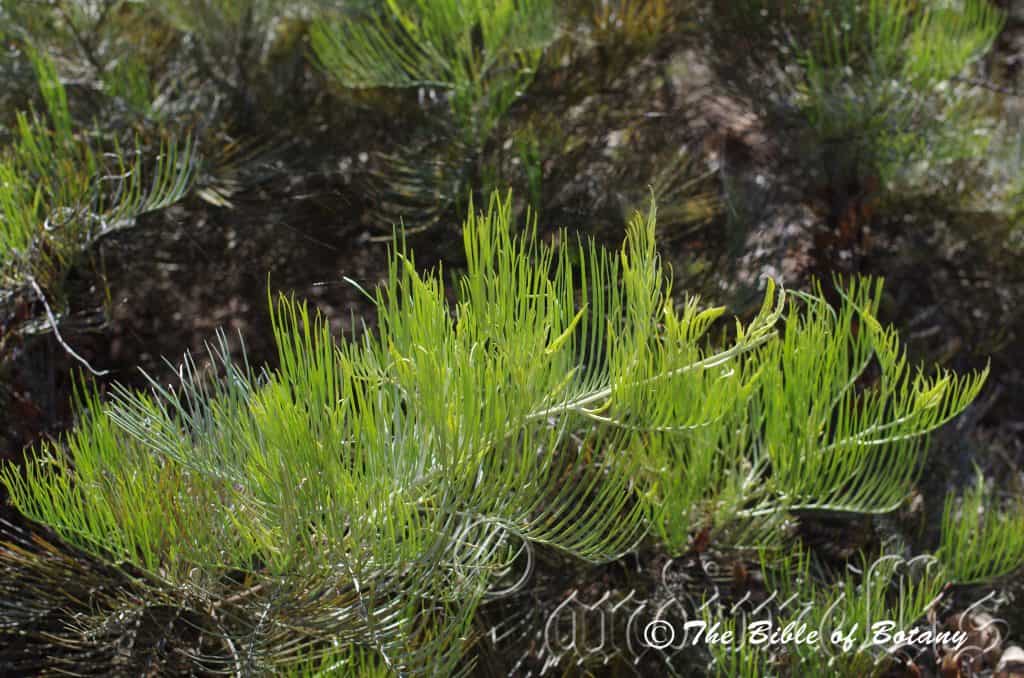
Mount Cootha Botanic Gardens Qld.
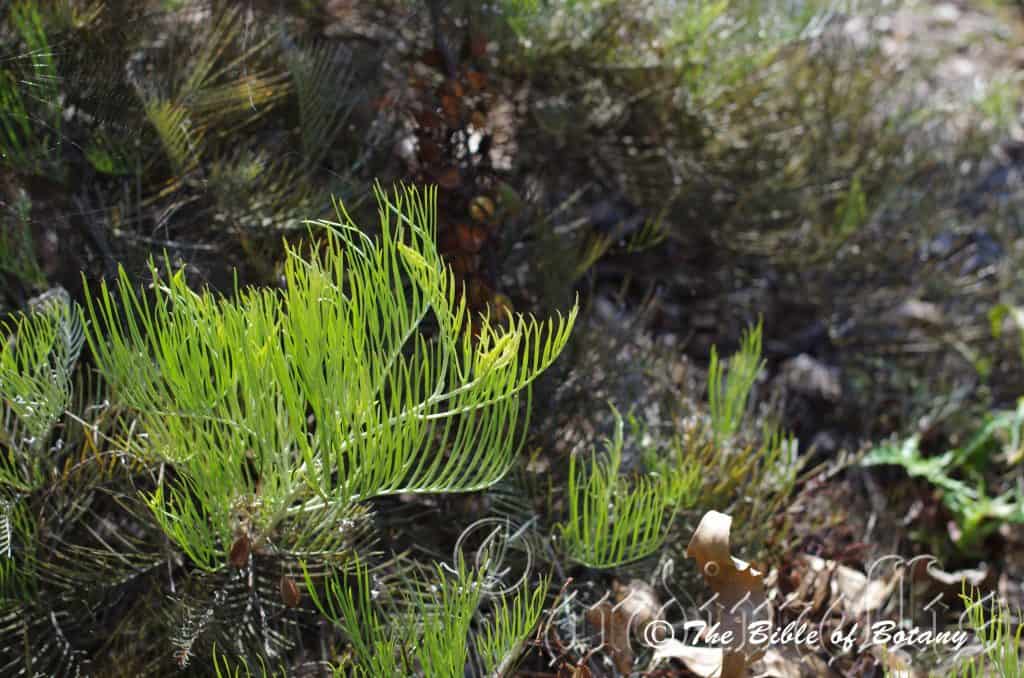
Mount Cootha Botanic Gardens Qld.
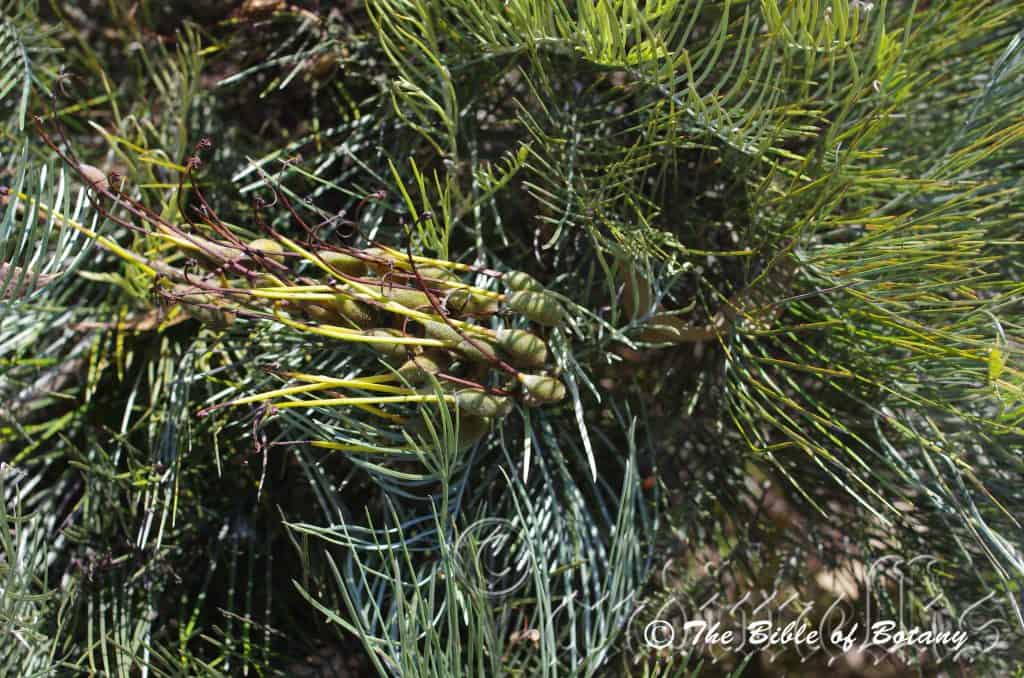
Mount Cootha Botanic Gardens Qld.
Grevillea formosa
Classification:
Class: Magnoliopsida
Order: Proteales
Family: Proteaceae
Genus: Is named in honour of C. F. Greville; 1749-1809, who was a British expert botanist on Algae, a foundation member of the London Horticultural Society and a collector of rare plants.
Species: From Formosa, which is Latin for beautiful or vivacious. It refers to the brilliance of the flowers.
Sub Species:
Common Name: Mount Brockman Grevillea.
Distribution:
Grevillea formosa is restricted to an area in the top end of the Northern Territory in Kakadu National Park and the river tributaries surrounding Kakadu National Park.
https://avh.ala.org.au/occurrences/search?taxa=Grevillea+formosa#tab_mapView
Habitat:
Grevillea formosa prefers full sun to dappled shade. It grows on ridges escarpments and steep cliff faces, in dry schlerophyll forests, open woodlands and adjacent to or in openings surrounding rocky slopes. The altitude ranges from near 100 meters ASL to 350 meters ASL.
The temperatures range from 10 degrees in August to 39 degrees in February.
The rainfalls range from lows of 1000mm to an average 2000mm annually.
Soil Requirements:
Grevillea formosa prefers better quality red and brown skeletal or shallow soils over sandstone rock, sandy loams to medium red, brown fatty clays or light silts to heavy silts. The soils are derived from partially decomposed or decomposed sandstones or alluvial deposits. The soils pH ranges from 5.5pH to 6pH are preferred. It does not tolerate waterlogged soils. Non saline soils to moderately saline soils are tolerated.
Height & Spread:
Wild Plants: 0.5m to 1m by 1.5m to 2m.
Characteristics:
Grevillea formosa’s bark is a dark grey, rough with a slightly flanged base on older trees. Older branches are glabrous and a dull grey green while the branchlets are a pale grey-green and are densely covered in pale grey sericeous hairs. Branches are brittle and are susceptible to wind damage.
The leaves are pinnatisect have 6 to 26 ascending primary lobes. The leaves measure 60mm to 180mm in length by 50mm to 130mm in width. The ultimate lobes are linear and measure 30mm to 90mm in length by 0.5mm to 1mm in width. The petioles are densely covered in pale grey sericeous hairs and measure 20mm to 50mm in length. The apexes are narrow acute. The discolourous laminas are pale grey-green to glaucous green and dull on the upper laminas while the lower laminas are sparsely covered in short, off white sericeous hairs. The margins are entire, recurved to revolute enclosing the entire lower surface except for the mid vein.
The inflorescence is a long, oblong-triangular secund which is born from the leaf axils. The rachises measure 120mm to 300mm in length. The style and perianth are the most prominent part of the flower.
The perianths are lime-green to deep grass-green through to the lobes turning deep golden-yellow close to anthesis. The perianth is sparsely covered in white sericeous hairs externally and is sparsely covered in golden yellow biramous hairs internally. The perianths measure 10mm to 15mm in length while the lobes measure 6mm to 8mm in length.
The styles are lime-green and turn bright yellow or bright yellow-green through to the stigma. The style is erect with a slight lateral curve towards the apex. The pistil measures 54mm to 60mm in length. The pistil is glabrous while the ovary is covered in off white villous hairs. The stigma is oblique while the pollen presenter is bright yellow. Flowering occurs throughout the year with a peak from January to March.
The fruits are flattened, broad ellipsoidal follicles. The style is persistent on the ripe follicles. The follicles are produced singularly radiating out from the central rachis. They measure 11mm to 16mm in length by 8mm to 10mm in width. The green follicles are covered in pale grey hirsute and biramous hirsute hairs and turn brown when ripe. The follicles contain two flat oval grey seeds.
Wildlife:
The light foliage and proliferation of large nectar filled flowers of Grevillea formosa makes it a great attraction for medium size and large nectar eating birds alike. Along the east coast the eastern spine bill (Acanthorhynchus tenuirostris.) will risk attacks from larger more aggressive birds to visit the shrubs.
Cultivation:
Grevillea formosa is an unusual foliaged large shrub for most gardens in semi-arid, subtropical and tropical zones. It is a very reliable bloomer. As garden subjects they will grow to 1 meter to 1.5 meters in height by 3.5 meters to 4.5 meters in diameter when cultivated in the open. It is fast growing, drought tolerant resistant but are cold sensitive and will be damaged by temperatures below 0 degrees. They will need a well-drained sunny position in the garden where frequent summer watering can be maintained.
It is best used as a center feature in medium to large rockeries or raised beds because of their large spread and large flowers which are produced abundantly. They make a great display when planted adjacent to a single or a small cluster of red flowering Grevillea like Grevillea banksii var. fosteri. Neither over powers the other. The foliages complement each other as do the flowers.
Grevillea formosum has been known to hybridize with Grevillea banksii and Grevillea pteridifolia so seeds from cultivated plants may not be true to form however it may produce some magnificent mule hybrids.
Propagation:
Seeds: Sow the seeds directly into a seed raising mix. Cover them with 5mm of fine sand and keep moist not wet. Place the tray in a warm sunny position. When the seedlings are 25mm to 50mm tall, prick them out and plant them into 50mm native tubes using a good organic mix.
Once the seedlings reach 150mm to 200mm in height, nip the tips out before planting them out into their permanent position. For mass plantings plant them out at 0.5 meter to 2 meter centers depending on the sub specie or whether it is used as a hedge, barrier of feature shrub.
Fertilize using Seaweed, fish emulsion or a half strength solution of organic chicken pellets soaked in water on an alternate basis. Fertilize every 3 months until the plants are well established then annually to assist in prolific blooming and good health.
Cuttings: Use 70mm to 100mm long half ripened material when growing from cuttings from the present season’s growth. Take them in mid-autumn or early spring. Remove half the leaves from the bottom section being careful not to tear the bark.
1 Prepare the cutting mix by adding one third sharp clean river sand, one third peat and one third perlite. These ingredients are sterilize,
2 Select good material from non diseased plants,
3 Select semi green stems for cuttings. Look for a stem with two or three nodes,
4 Place the cutting on a flat, hard surface, and make a clean cut down one side of the cutting at the base for 10mm with a sharp sterile knife or razor blade. – This scarification of the node will increase the chances of roots emerging from this spot. Now remove all but one or two the leaves, leaving the apex leaves in tact. If the leaves are very large in proportion to the stem, cut off the apical halves.
5 Fill a saucer with water, and place a little medium strength rooting hormone into another container like a milk bottle top. Dip the node end of the cutting into the water and then into the rooting hormone. Tap off any excess hormone,
6 Use a small dipple stick or old pencil to poke a hole into the soilless potting mix. Ensure the hole is slightly larger than the stem diameter and be careful not to wipe the rooting hormone off the cuttings base, place the cuttings in a pattern ensuring the cuttings are not touching each other,
7 I like to place the pots in Plastic bags to help maintain temperature and moisture. Place in a semi shaded place like under 50mm shade cloth.
8 When the cuttings have struck, open the bag to allow air circulation for a few days to a week,
9 Once hardened off remove the cuttings from the bag and allow to further hardening for a few more days,
10 Transplant into a good potting mix to grow on.
Fertilize using seaweed, fish emulsion or organic chicken pellets soaked in water on an alternate basis. Fertilize every two months until the plants are established then twice annually in early September or March to maintain health, vitality and better flowering. Avoid synthetic fertilizers as they will most likely contain calcium and phosphorus at levels, which are toxic to most Proteaceae.
Further Comments from Readers:
Hi reader, it seems you use The Bible of Botany a lot. That’s great as we have great pleasure in bringing it to you! It’s a little awkward for us to ask, but our first aim is to purchase land approximately 1,600 hectares to link several parcels of N.P. into one at The Pinnacles NSW Australia, but we need your help. We’re not salespeople. We’re amature botanists who have dedicated over 30 years to saving the environment in a practical way. We depend on donations to reach our goal. If you donate just $5, the price of your coffee this Sunday, We can help to keep the planet alive in a real way and continue to bring you regular updates and features on Australian plants all in one Botanical Bible. Any support is greatly appreciated. Thank you.
In the spirit of reconciliation we acknowledge the Bundjalung, Gumbaynggirr and Yaegl and all aboriginal nations throughout Australia and their connections to land, sea and community. We pay our respect to their Elders past, present and future for the pleasures we have gained.
Grevillea fulgens
Classification
Class: Magnoliopsida
Order: Proteales
Family: Proteaceae
Genus: Is named in honour of C. F. Greville; 1749-1809, who was a British expert botanist on Algae, a foundation member of the London Horticultural Society and a collector of rare plants.
Species: From Fulgens, which is Latin for bright and shiny. It refers to flowers, which are bright and shiny.
Sub Species:
Common Name: Shiny Stem Grevillea.
Distribution:
Grevillea fulgens is restricted to a small area on the south western coast of Western Australia north to Hopetoun, Ravensthorpe and Jerdacuttup districts.
https://avh.ala.org.au/occurrences/search?taxa=Grevillea+fulgens#tab_mapView
Habitat:
Grevillea fulgens prefers full sun to dappled shade. It grows in open woodlands, heaths and open country on rocky ridges slopes and steep banks. The altitude ranges from 15 meters ASL to 400 meters ASL.
The temperatures range from 3 degrees in August to 36 degrees in February.
The rainfalls range from lows of 260mm to an average 600mm annually.
Soil Requirements:
Grevillea fulgens prefers poorer white, yellow, red or brown skeletal to shallow sandy loams, rocky terrain or course gravelly soils. The soils are usually derived from partially decomposed to decomposed sandstones, granites, basalts or accumulated beach sands in land from the beaches. It is often one of the first plants to recolonize disused road side verges and quarries. The soils pH ranges from 5pH to 6.5pH are preferred. It does not tolerate waterlogged soils. Non saline soils to moderately saline soils are tolerated.
Height & Spread:
Wild Plants: 0.5m to 3m by 1m to 3m.
Characteristics:
The stems are a pale yellow green to rusty red-brown glabrous and semi glossy. Branchlets are pale yellow brown tinged pink or green glabrous and covered in rusty-red hirsute hairs.
The juvenile leaves are usually pinnatifid with 2 to 11 twisted lobes that measure 10mm to 15mm in length by 1mm to 2mm in width.
The alternate simple leaves are linear and measure 20mm to 110mm in length by 1mm to 4mm in width. The petiole measures 1mm to 2mm in length. The bases are tapering while the apexes are narrow acute. The discolourous laminas are pale olive-green, grass-green or blue-green and glossy on the upper lamina while the lower lamina is covered in short white or pale rusty-red sericeous hairs. The mid vein is prominent on the lower lamina and is not visible on the upper lamina. The margins are entire and strongly revolute, either forming a groove along the mid vein or leaving the lower lamina exposed.
The inflorescence of Grevillea fulgens are born singularly, in pairs or sometimes in small clusters of 3 flowers from the leaf axils. The rachis and pedicels are covered in white villous hairs. The rachises measure 0.5mm to 2mm in length while the pedicels measure 6mm to 7mm in length. The perianth and style are the most prominent parts of the flower. The individual perianths are variable in shades of pink to pinkish-reds turning white on the limbs. The perianth is glabrous externally and covered in white hirtellous hairs internally while the lobes are sparsely to densely covered in white hairs biramous hirsute hairs. The perianths measure 4mm to 5mm in length while the lobes measure 6mm to 7mm in length. The limbs are strongly recurved and joined.
The style is pale pink to deep pinkish-red at the base through to the stigma. The semi oblique pollen presenter is deep pinkish-red. The erect style is covered in white villous hairs near the base becoming very sparse to glabrous on the apical half. The pistils measure 12mm to 15mm in length. The ovary is covered in white villous hairs. The flowers appear from June to October.
The fruits are ovoidal follicles. The style is persistent on the ripe follicles. The dull pale green follicles are densely covered in long, white villous hairs and turn grey-brown when ripe. They measure 12mm to 15mm in length by 7mm to 9mm in width. The flat grey seeds measure 6mm to 7mm in length by 3.5mm to 4.5mm in width. There is a 2mm to 3mm hyaline papery wing surrounding the seed.
Wildlife:
Grevillea fulgens wildlife is unknown to the author.
Cultivation:
Grevillea fulgens is an unusual foliaged small shrub for most gardens in semi-arid, temperate and subtropical zones. It is a very reliable bloomer. As garden subjects it will grow to 0.5 meters to 1.5 meters in height by 1 meter to 2 meters in diameter when cultivated in the open. It is fast growing, drought tolerant and cold resistant to temperatures down to minus 4 degrees. It is interesting in that the flowers are usually born singularly along the entire length of the stems making them an unusual choice in a bush garden. The drawback is the plants are very variable in height and width so planning a garden around them is difficult. As usual you want a small form you get a tall growing form and vice versa. It can be tip pruned when young to encourage a smaller plant to a small degree.
It makes great displays when backed by larger leaf plants or where a she oak look is required in a small area. The advantage is because of the linear leaves the flowers are well displayed.
In the formal or Japanese type gardens they can be used as the fill in plants or as the main plant beside the water feature. Imagine a small pond with fish swimming. Beside it is one two or even three Grevillea fulgens, and above them is water cascading down over small rocks. This is very powerful yet formal and relaxing. It can partially surround such a scene and still look effective. Use them in small groups with larger rocks or in front of a large log. The large log gives a strong horizontal affect with depth if placed on an angle. Right along the front plant Grevillea fulgens is open inviting and with a splash of colour that does not dominate the scene. The horizontal stems and narrow linear leaves will create a stronger bolder log. The plants are dainty in comparison yet display a very relaxing and thought provoking scene.
Another area where this Grevillea can be used is in the heath garden. When you design a flat heath garden which Grevillea fulgens is ideal. Try not to use contours or straight lines to display the plants as heath lands are almost always flat or have a slight rise but plant it in random spots. Plants must be planted close together and be short so you can see over the tallest ones with the exception of one or two plants at the most. These will be feature plants. The idea is to achieve a feeling of expansive flatness. This can be achieved with using the Grevillea fulgens’ deep green linear leaves and having them contrasting other simple pale green or soft grey to glaucous coloured foliages is the ideal situation. Use a lot of procumbent plants like Carpobrotus edulis or Hibbertia specie. Mix them with other smaller shrubs so none of them dominate the scene but blend in to give a mosaic of foliage colours that you oversee. Here I immediately think of Actinotis helianthi, Xerochrysum bracteatum, Xerochrysum viscosum or Grevillea thelemanniana for two great contrasting foliages.
Propagation:
Seeds: Sow the seeds directly into a seed raising mix. Cover them with 5mm of fine sand and keep moist not wet. Place the tray in a warm sunny position. When the seedlings are 25mm to 50mm tall, prick them out and plant them into 50mm native tubes using a good organic mix.
Once the seedlings reach 150mm to 200mm in height, nip the tips out before planting them out into their permanent position. For mass plantings plant them out at 0.5 meter to 2 meter centers depending on the sub specie or whether it is used as a hedge, barrier of feature shrub.
Fertilize using Seaweed, fish emulsion or a half strength solution of organic chicken pellets soaked in water on an alternate basis. Fertilize every 3 months until the plants are well established then annually to assist in prolific blooming and healthy growth.
Cuttings: Use 70mm to 100mm long half ripened material when growing from cuttings from the present season’s growth. Take them in mid-autumn or early spring. Remove half the leaves from the bottom section being careful not to tear the bark.
1 Prepare the cutting mix by adding one third sharp clean river sand, one third peat and one third perlite. These ingredients are sterilize,
2 Select good material from non diseased plants,
3 Select semi green stems for cuttings. Look for a stem with two or three nodes,
4 Place the cutting on a flat, hard surface, and make a clean cut down one side of the cutting at the base for 10mm with a sharp sterile knife or razor blade. – This scarification of the node will increase the chances of roots emerging from this spot. Now remove all but one or two the leaves, leaving the apex leaves in tact. If the leaves are very large in proportion to the stem, cut off the apical halves.
5 Fill a saucer with water, and place a little medium strength rooting hormone into another container like a milk bottle top. Dip the node end of the cutting into the water and then into the rooting hormone. Tap off any excess hormone,
6 Use a small dipple stick or old pencil to poke a hole into the soilless potting mix. Ensure the hole is slightly larger than the stem diameter and be careful not to wipe the rooting hormone off the cuttings base, place the cuttings in a pattern ensuring the cuttings are not touching each other,
7 I like to place the pots in Plastic bags to help maintain temperature and moisture. Place in a semi shaded place like under 50mm shade cloth.
8 When the cuttings have struck, open the bag to allow air circulation for a few days to a week,
9 Once hardened off remove the cuttings from the bag and allow to further hardening for a few more days,
10 Transplant into a good potting mix to grow on.
Fertilize using seaweed, fish emulsion or organic chicken pellets soaked in water on an alternate basis. Fertilize every two months until the plants are established then twice annually in early September or March to maintain health, vitality and better flowering. Avoid synthetic fertilizers as they will most likely contain calcium and phosphorus at levels, which are toxic to most Proteaceae.
Further Comments from Readers:
Hi reader, it seems you use The Bible of Botany a lot. That’s great as we have great pleasure in bringing it to you! It’s a little awkward for us to ask, but our first aim is to purchase land approximately 1,600 hectares to link several parcels of N.P. into one at The Pinnacles NSW Australia, but we need your help. We’re not salespeople. We’re amature botanists who have dedicated over 30 years to saving the environment in a practical way. We depend on donations to reach our goal. If you donate just $5, the price of your coffee this Sunday, We can help to keep the planet alive in a real way and continue to bring you regular updates and features on Australian plants all in one Botanical Bible. Any support is greatly appreciated. Thank you.
In the spirit of reconciliation we acknowledge the Bundjalung, Gumbaynggirr and Yaegl and all aboriginal nations throughout Australia and their connections to land, sea and community. We pay our respect to their Elders past, present and future for the pleasures we have gained.
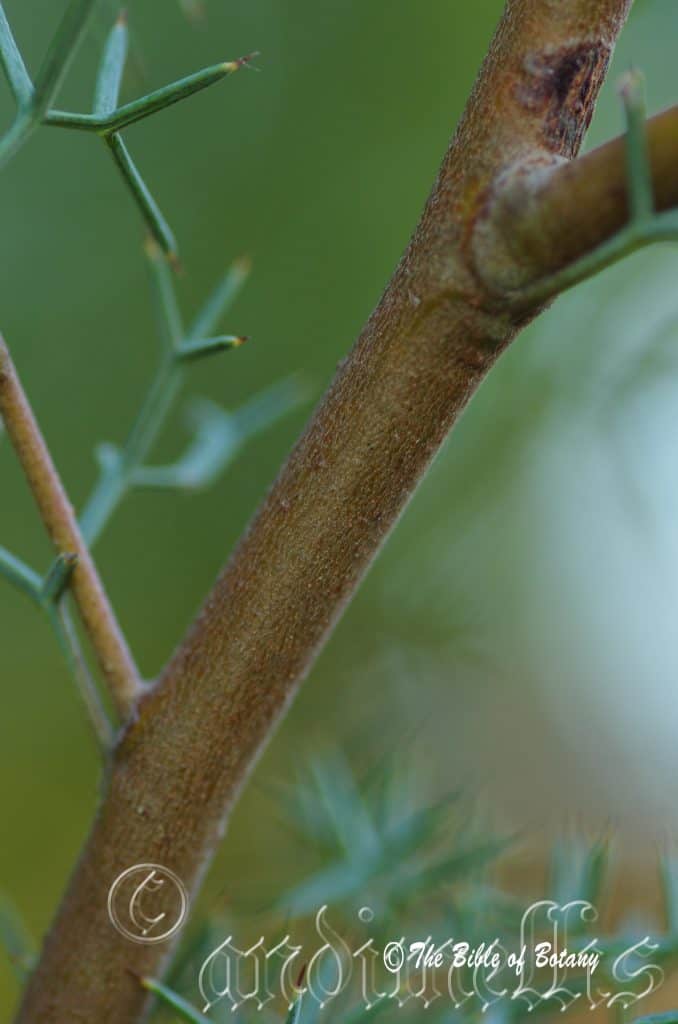
Norman Park Qld.
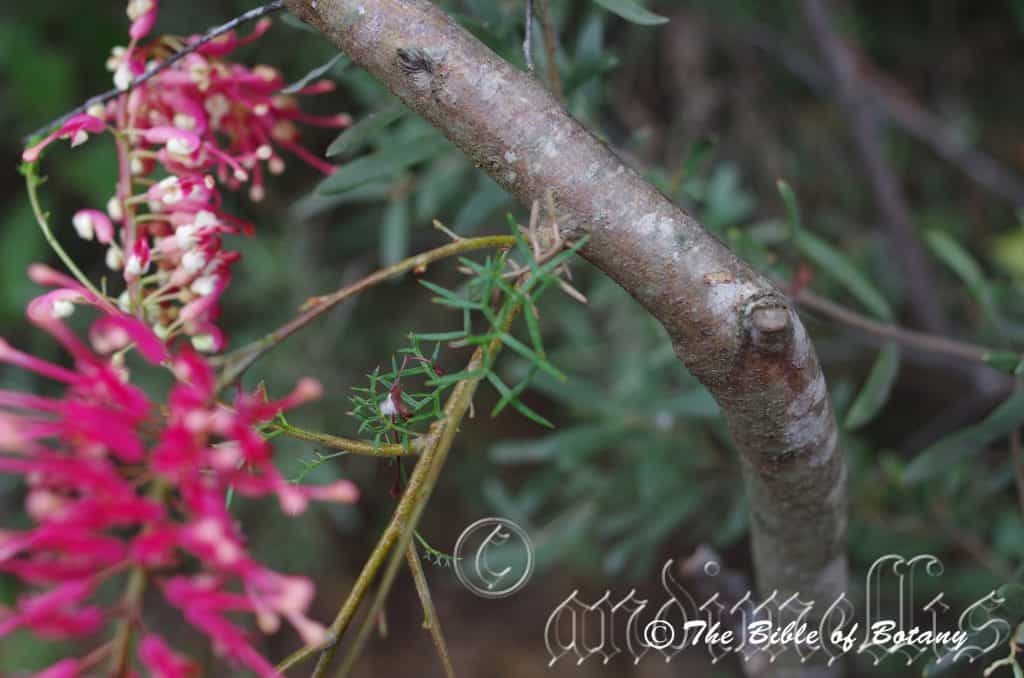
Norman Park Qld.
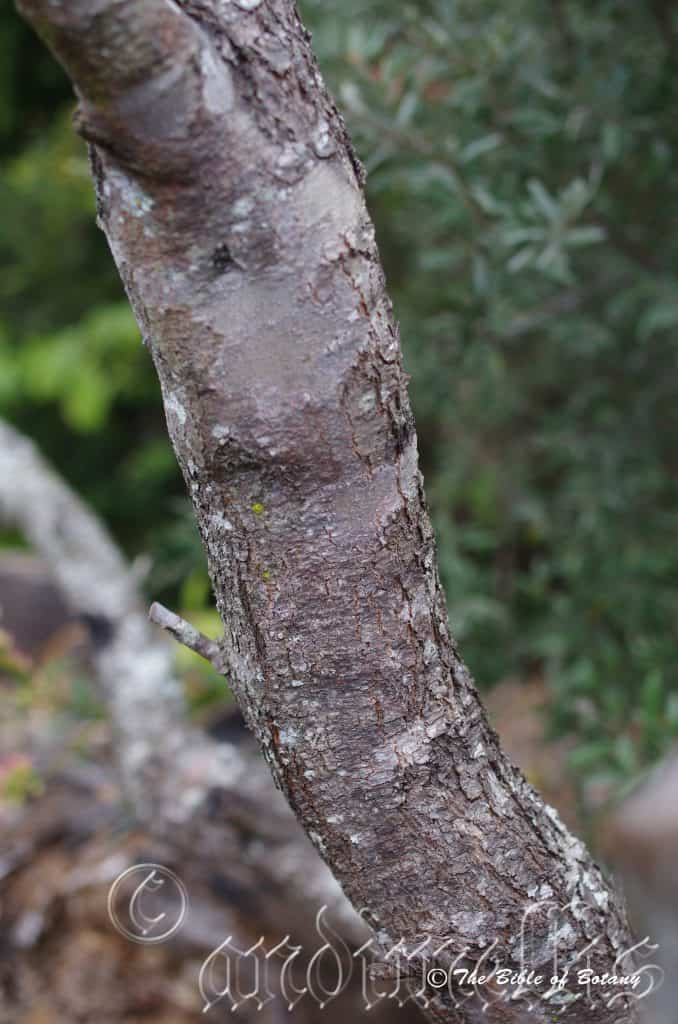
Norman Park Qld.
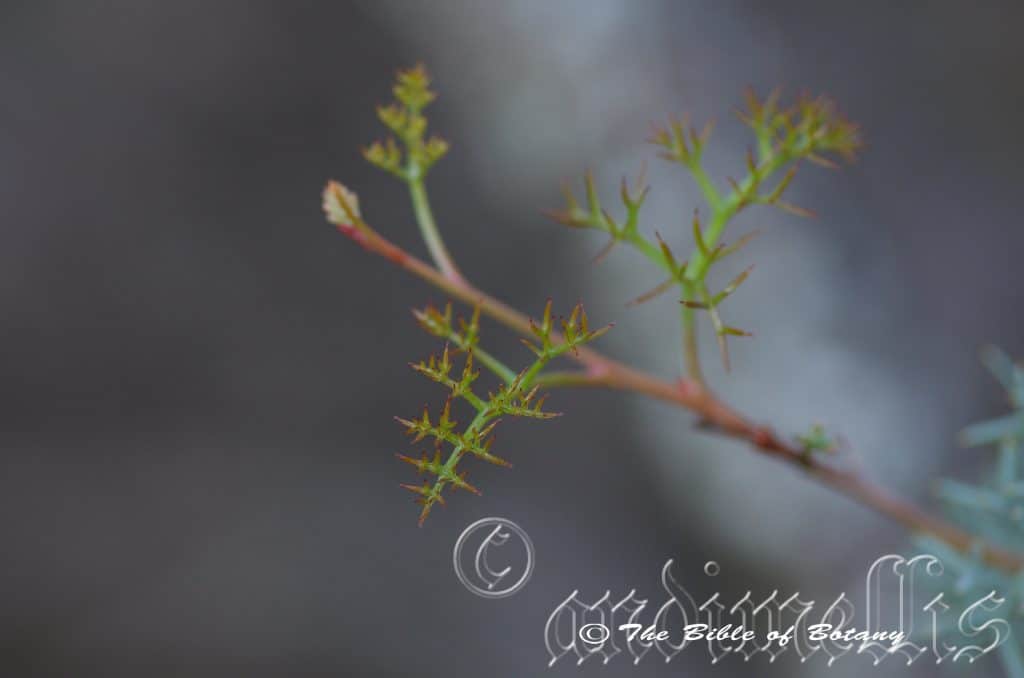
Norman Park Qld.
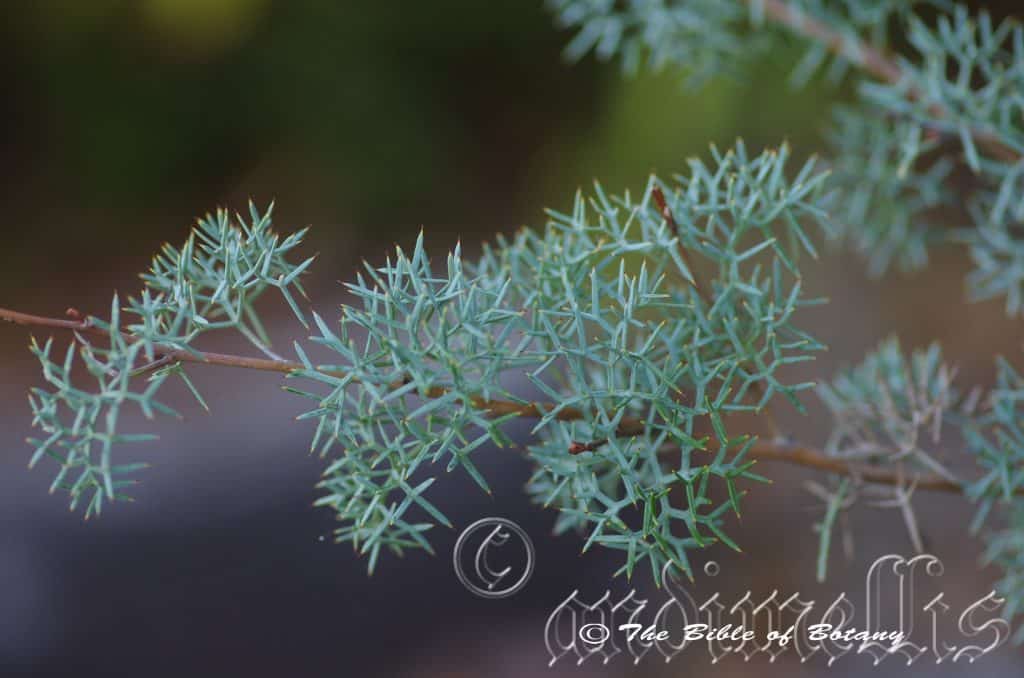
Norman Park Qld.
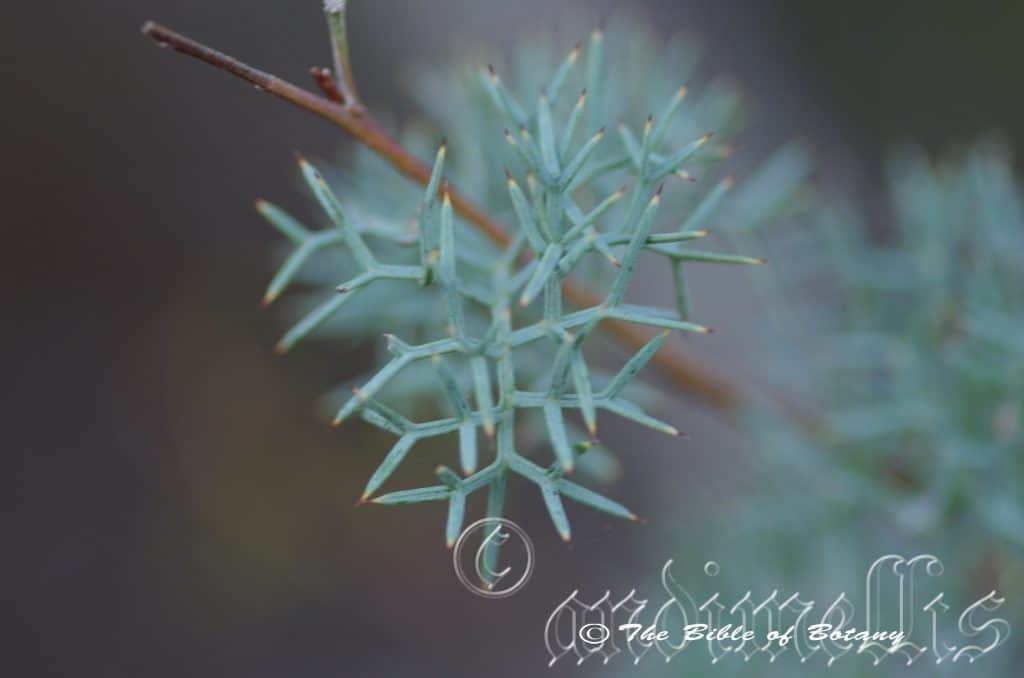
Norman Park Qld.
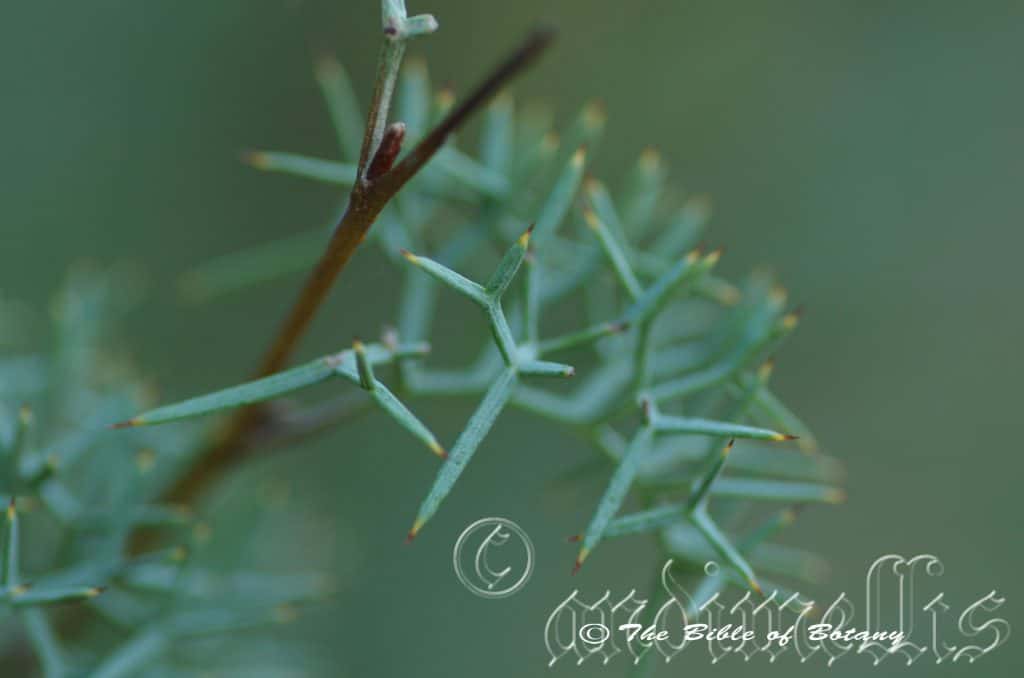
Norman Park Qld.
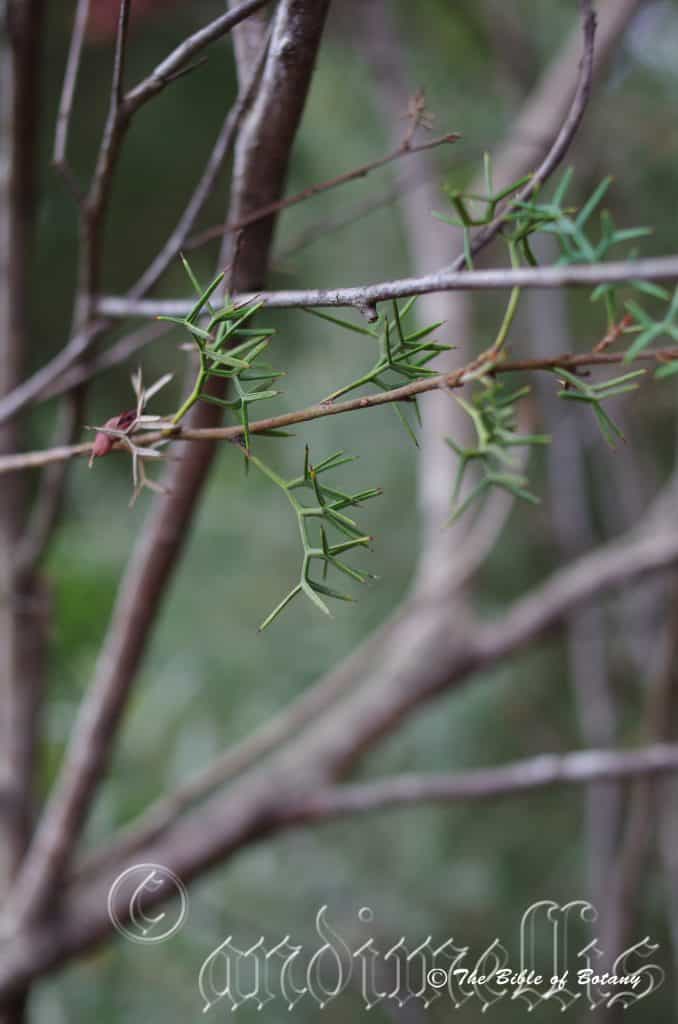
Norman Park Qld.
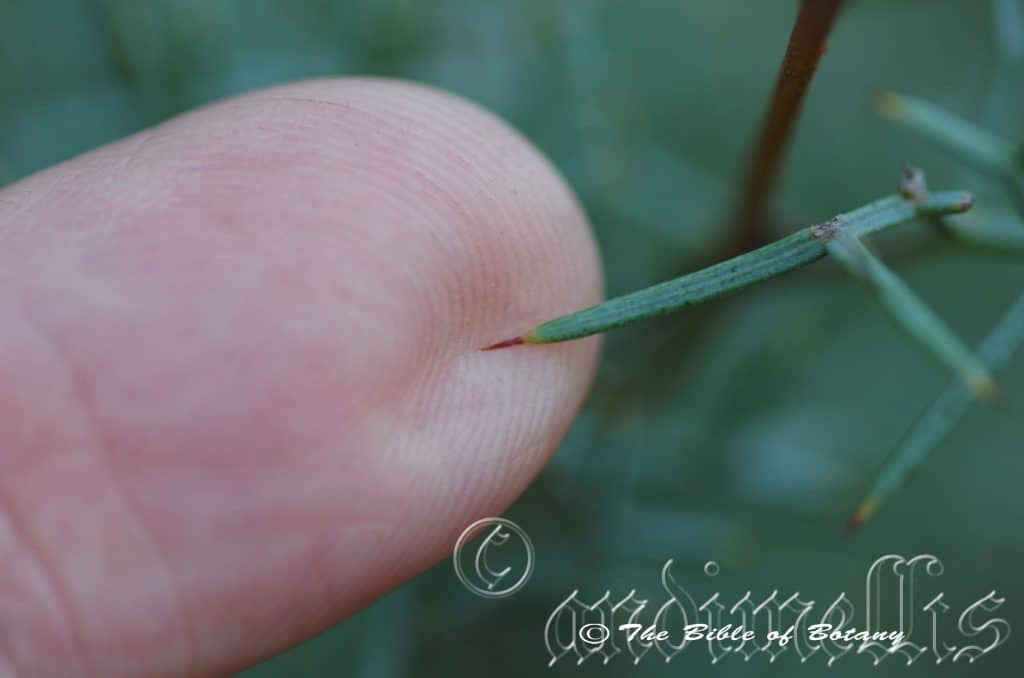
Norman Park Qld.
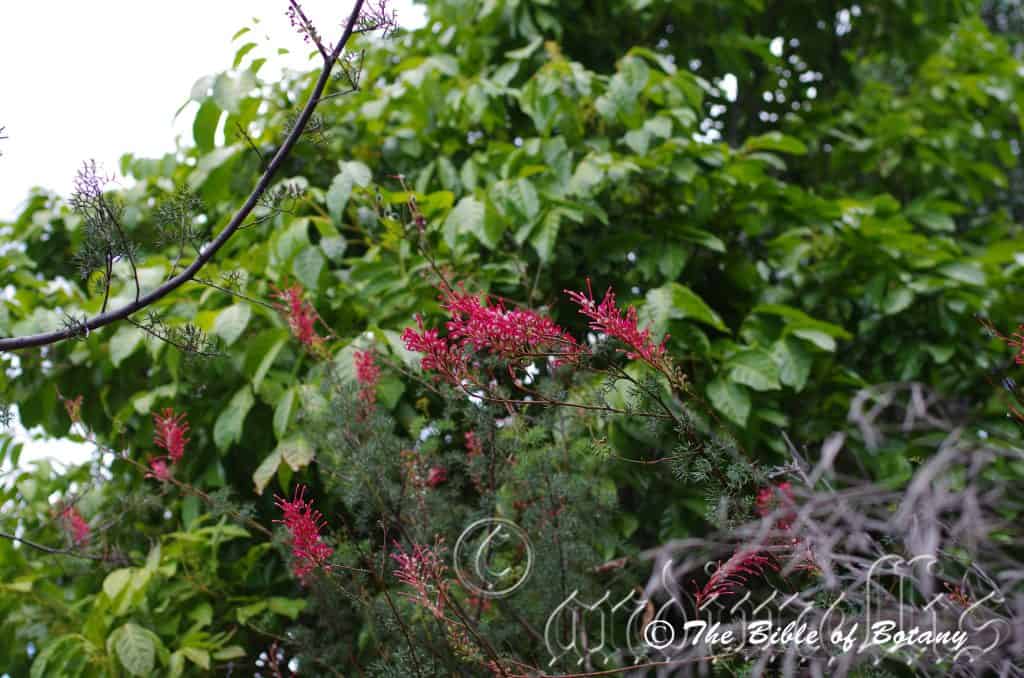
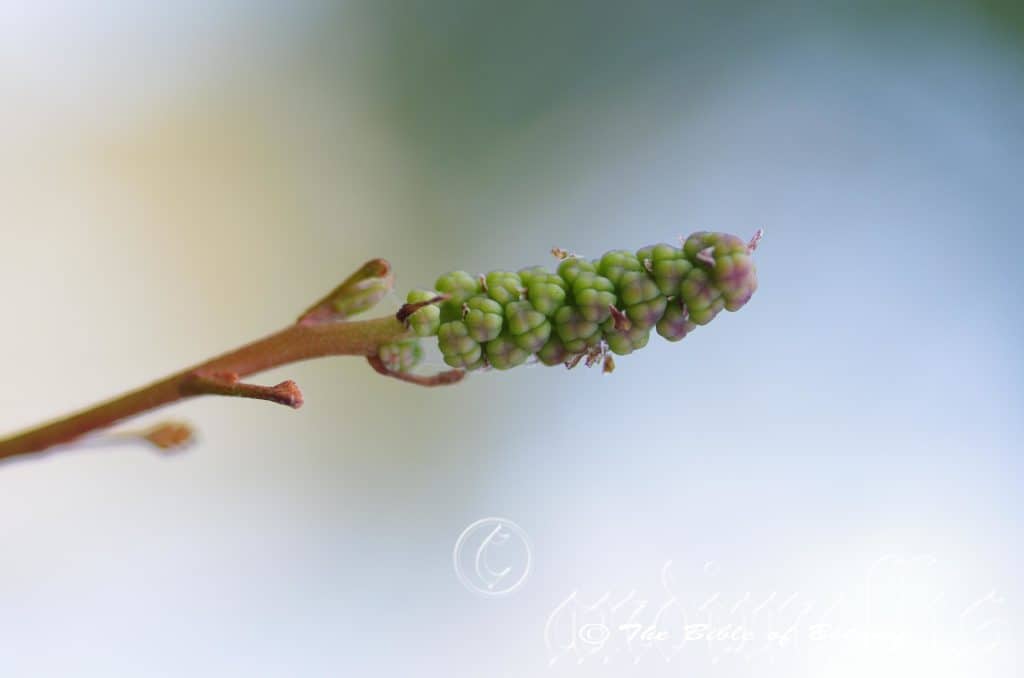
Norman Park Qld.
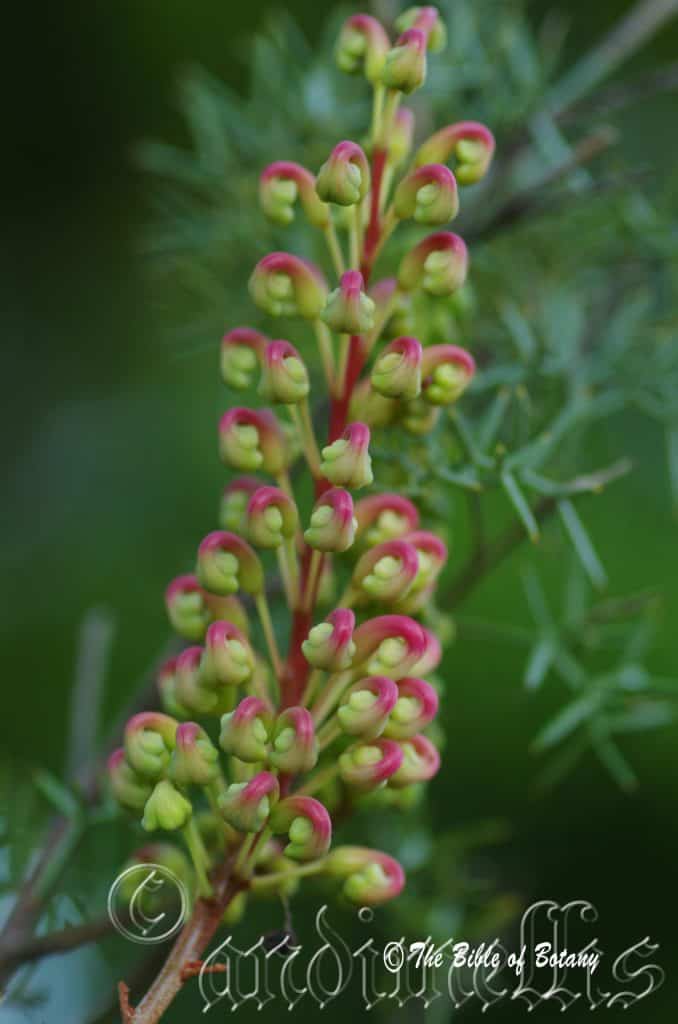
Norman Park Qld.
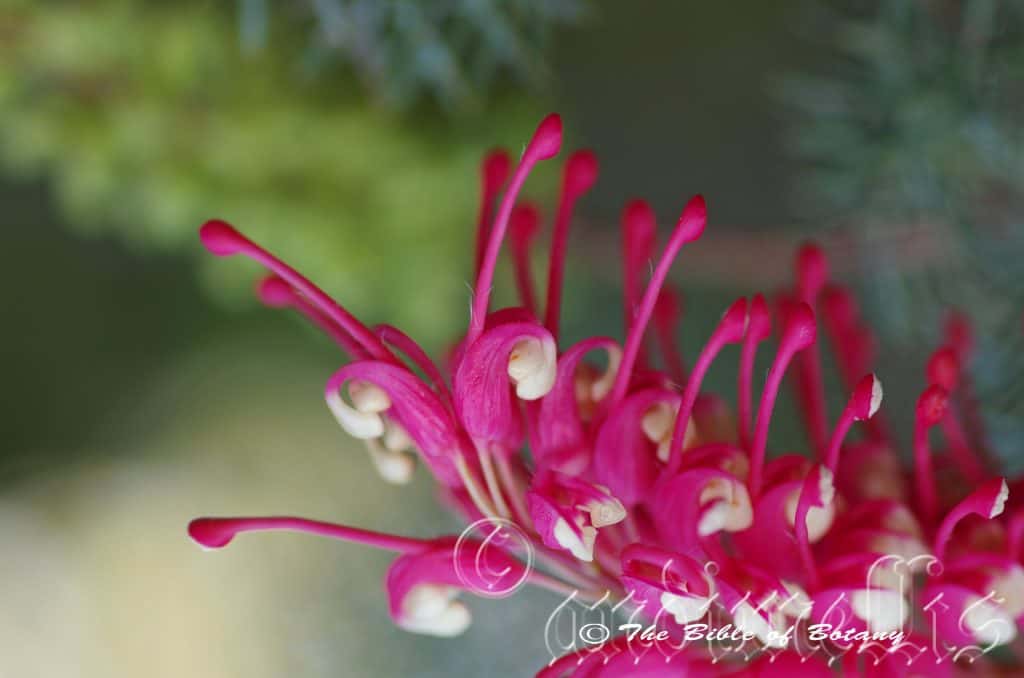
Norman Park Qld.
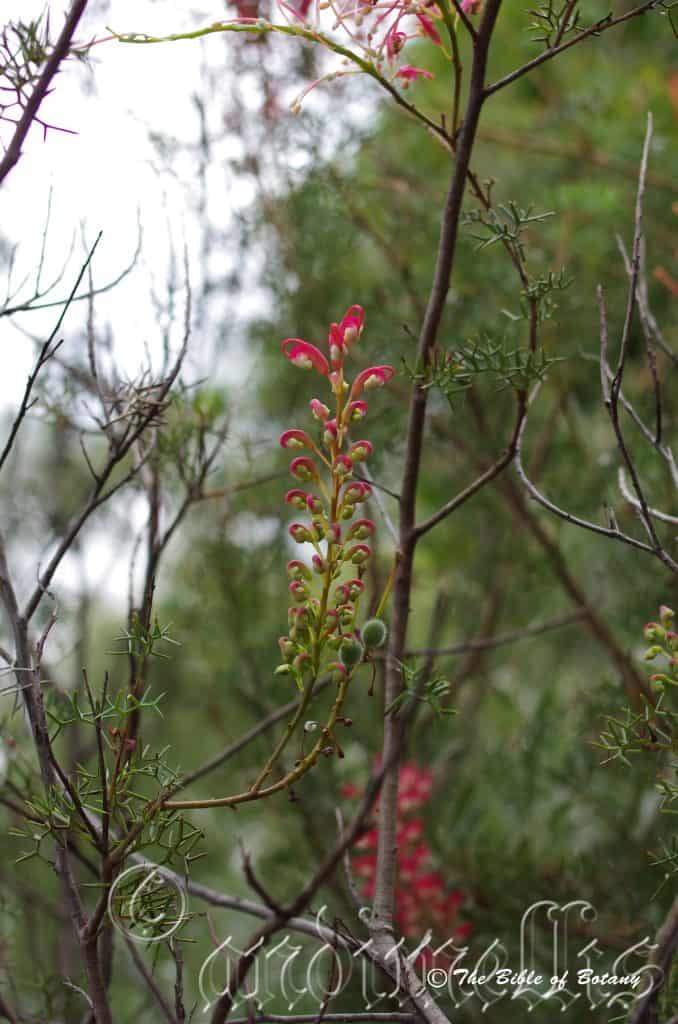
Norman Park Qld.
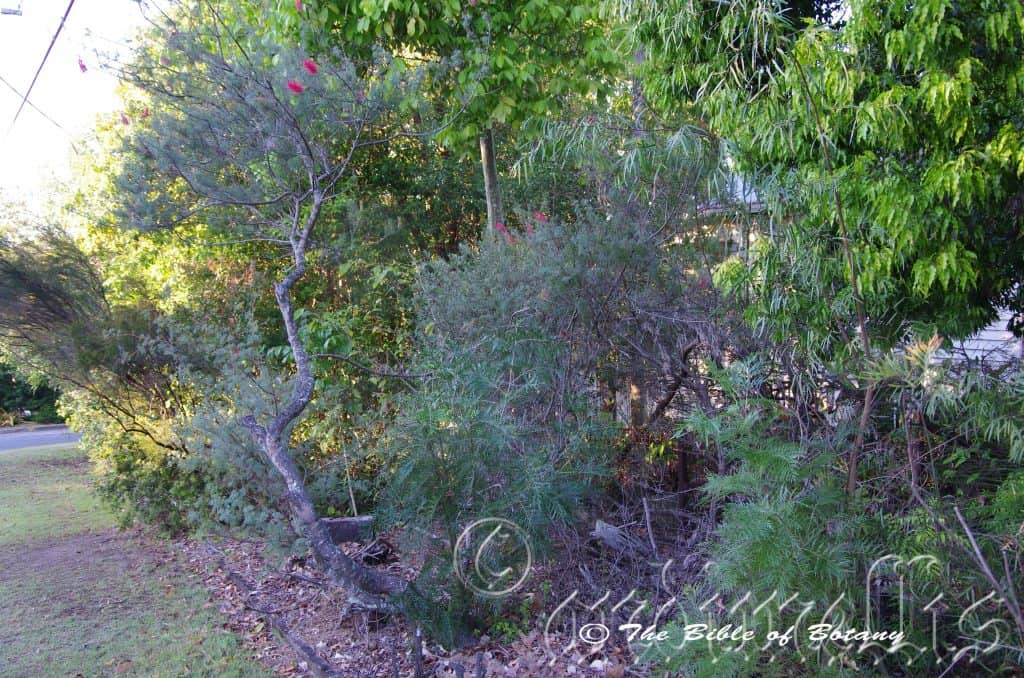
Norman Park Qld.
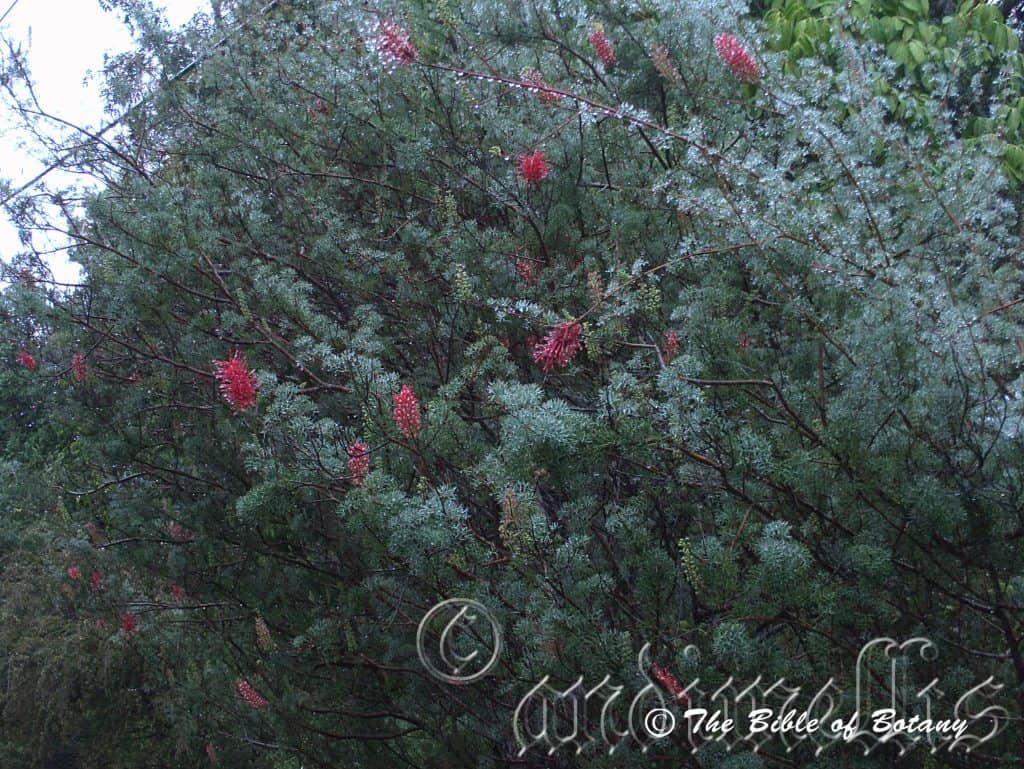
Grevillea georgeana
Classification
Class: Magnoliopsida
Order: Proteales
Family: Proteaceae
Genus: Is named in honour of C. F. Greville; 1749-1809, who was a British expert botanist on Algae, a foundation member of the London Horticultural Society and a collector of rare plants.
Species: Is named in honour of George but which George cannot be substantiated.
Common Name:
Distribution:
Grevillea georgeana is restricted to 2 small populations in south western, Western Australia. It is found in the Ranges around Koolyanobbing to Kalgoorlie.
https://avh.ala.org.au/occurrences/search?taxa=Grevillea+georgeana#tab_mapView
Habitat Aspect Climate:
Grevillea georgeana prefers full sun. It grows below medium size trees, low trees, or in low well drained dry heaths on ironstone hilltops, rocky slopes or low flat ridges. The altitude ranges from 320 meters ASL to 440 meters ASL.
The temperatures range from 5 degrees in July to 36 degrees in January.
The rainfalls range from lows of 150mm to an average of 300mm annually.
Soil Requirements:
Grevillea georgeana prefers rocky, stony or gravelly light clays. The soils are usually derived from partially decomposed sandstones or granites. The soils pH ranges from 5pH to 6pH are preferred. It does not tolerate waterlogged soils. Non saline soils to moderately saline soils are tolerated.
Height & Spread:
Wild Plants: 1.5m to 2.5m by 1m to 3m.
Characteristics:
Grevillea georgeana bark is a deep rusty-brown, glabrous and semi glossy on the main stems or small trunk. The branchlets are similar to the main stems only tuning a blue green where the leaves are present.
Grevillea georgeana is an erect prickly shrub. The deeply pinnasect or bipinnasect leaves are deeply divided and measure 30m to 70mm in length by 20m to 36mm in width overall. The deeply divided, 3 to 7 pairs of linear lobes measure 4mm to 19mm in length by 1mm to 2mm in width near the base. The glabrous petiole measures 12mm to 20mm in length. The bases are tapering while the apexes are narrow acute. The discolourous laminas are pale grey-green to pale blue-green and glabrous on the upper laminas while the lower laminas are bisulcata and covered in short off white to pale grey sericeous hairs in the grooves. The mid vein is prominent on the lower lamina and is not visible on the upper lamina. The margins are entire and strongly revolute, either forming a groove along the mid vein or leaving the lower lamina partially exposed.
The inflorescence of Grevillea georgeana are erect, usually terminal cylindrical racemes or at times on short lateral branchlets. The perianth and style are the most prominent parts of the flower. The individual perianths are variable in shades of pink to pinkish-reds from the base through to the very distinct cream or creamy white limbs. The perianths are glabrous externally and covered in white pilose hairs internally on the basal half. The perianth and limbs measure 10mm to 15mm in length. The limbs are strongly recurved, are joined and are irregular. The rachises and pedicels are glabrous. The rachises measures 15mm to 120mm in length while the pedicels measure 6mm to 9mm in length.
The style is pink to deep pinkish-red at the base becoming paler as it approaches the oblique stigma. The style and ovary measure 21mm to 27mm in length. The ovary is sparsely covered in white villous hairs while the stigma is sparsely covered in white villous hairs on the basal third. The flowers appear from July to October.
Grevillea georgeana fruits are flattened sub globose to broad ellipsoidal follicles. The follicles are produced singularly radiating out from the rachis. They measure 7mm to 10mm in length by 7mm to 10mm in width and 4mm to 5mm in depth. The follicles are initially covered in white villous hairs becoming brown and almost glabrous when ripe. It is not viscid.
Wildlife:
The dense prickly foliage and proliferation of flowers in late winter makes it a great attraction and safe haven for smaller honeyeaters and small mammals like the yellow-footed antechinus, Antechinus flavipes.
Cultivation:
Grevillea georgeana is a magnificent looking small Grevillea which should be more widely grown. It suits small to large gardens. Garden subjects in Brisbane grew well on shale and decomposed shale. Cultivated plants will grow from 2.5 meters to 3.5 meters in height by 3 meters to 3.5 meters in diameter when grown in the open. Tip pruning would control the height but means more work. The subject plants were continually being visited by the eastern spinebill, yellow faced honeyeaters and brown honeyeaters.
In Native gardens it can be used for bird attraction or placed behind and to one side of plants in a position to force a change of direction. Most red flowering Grevillea specie and this one is no exception look great but this one has the additional benefit of having glaucous blue leaves.
It can be used in raised garden beds surrounded by small shrubs with fine pale green leaves which flower at a different time of the year as the pink flowers would be lost amongst strong reds and purples while lilacs, pinks and whites would blend leaving a feeling that something is missing. Alternatively they can be used with pale yellow to yellow flowering plants that do not have an overpowering affect. Good plants would include Hibbertia scandens or most of the pea family such as Gompholobium specie, Xerochrysum bracteatum, Xerochrysum viscosum or Pultenaea specie.
It can be used as wildlife corridors or on long steep bank where it is mass planted to form impregnable barriers.
When planting be aware of the prickly foliage and plant away from paths or where children play. Then it is an excellent plant to help deter unwanted pets from the neighbours or unwanted sticky beaks.
Propagation:
Seeds: Sow the seeds of Grevillea georgeana directly into a seed raising mix. Cover them with 5mm of fine sand and keep moist not wet. Place the tray in a warm sunny position. When the seedlings are 25mm to 50mm tall, prick them out and plant them into 50mm native tubes using a good organic mix.
Once the seedlings reach 150mm to 200mm in height, nip the tips out before planting them out into their permanent position. For mass plantings plant them out at 0.5 meter to 2 meter centers depending on the sub specie or whether it is used as a hedge, barrier of feature shrub.
Fertilize using Seaweed, fish emulsion or a half strength solution of organic chicken pellets soaked in water on an alternate basis. Fertilize every 3 months until the plants are well established then annually to assist in prolific blooming and healthy growth.
Cuttings: Use 70mm to 100mm long half ripened material when growing from cuttings from the present season’s growth. Take them in mid-autumn or early spring. Remove half the leaves from the bottom section being careful not to tear the bark.
1 Prepare the cutting mix by adding one third sharp clean river sand, one third peat and one third perlite. These ingredients are sterilize,
2 Select good material from non diseased plants,
3 Select semi green stems for cuttings. Look for a stem with two or three nodes,
4 Place the cutting on a flat, hard surface, and make a clean cut down one side of the cutting at the base for 10mm with a sharp sterile knife or razor blade. – This scarification of the node will increase the chances of roots emerging from this spot. Now remove all but one or two the leaves, leaving the apex leaves in tact. If the leaves are very large in proportion to the stem, cut off the apical halves.
5 Fill a saucer with water, and place a little medium strength rooting hormone into another container like a milk bottle top. Dip the node end of the cutting into the water and then into the rooting hormone. Tap off any excess hormone,
6 Use a small dipple stick or old pencil to poke a hole into the soilless potting mix. Ensure the hole is slightly larger than the stem diameter and be careful not to wipe the rooting hormone off the cuttings base, place the cuttings in a pattern ensuring the cuttings are not touching each other,
7 I like to place the pots in Plastic bags to help maintain temperature and moisture. Place in a semi shaded place like under 50mm shade cloth.
8 When the cuttings have struck, open the bag to allow air circulation for a few days to a week,
9 Once hardened off remove the cuttings from the bag and allow to further hardening for a few more days,
10 Transplant into a good potting mix to grow on.
Fertilize using seaweed, fish emulsion or organic chicken pellets soaked in water on an alternate basis. Fertilize every two months until the plants are established then twice annually in early September or March to maintain health, vitality and better flowering. Avoid synthetic fertilizers as they will most likely contain calcium and phosphorus at levels, which are toxic to most Proteaceae.
Fertilize using seaweed, fish emulsion or organic chicken pellets soaked in water on an alternate basis. Fertilize every two months until the plants are established then twice annually in early September or March to maintain health, vitality and better flowering. Avoid synthetic fertilizers as they will most likely contain calcium and phosphorus which are toxic to most Proteaceae.
Further Comments from Readers:
Hi reader, it seems you use The Bible of Botany a lot. That’s great as we have great pleasure in bringing it to you! It’s a little awkward for us to ask, but our first aim is to purchase land approximately 1,600 hectares to link several parcels of N.P. into one at The Pinnacles NSW Australia, but we need your help. We’re not salespeople. We’re amature botanists who have dedicated over 30 years to saving the environment in a practical way. We depend on donations to reach our goal. If you donate just $5, the price of your coffee this Sunday, We can help to keep the planet alive in a real way and continue to bring you regular updates and features on Australian plants all in one Botanical Bible. Any support is greatly appreciated. Thank you.
In the spirit of reconciliation we acknowledge the Bundjalung, Gumbaynggirr and Yaegl and all aboriginal nations throughout Australia and their connections to land, sea and community. We pay our respect to their Elders past, present and future for the pleasures we have gained.
Grevillea glauca
Classification:
Class: Magnoliopsida
Order: Proteales
Family: Proteaceae
Genus: Is named in honour of C. F. Greville; 1749-1809, who was a British expert botanist on Algae, a foundation member of the London Horticultural Society and a collector of rare plants.
Species: From Glaucous which is Latin for a filmy blueish or greyish white powdery covering. It refers to the stems leaves or fruits, which have a blueish to greyish powdered layer over the surface.
Sub Species:
Common Name:
Distribution:
Grevillea glauca is found south from the tip of Cape York Peninsula to Jericho in central Queensland.
https://avh.ala.org.au/occurrences/search?taxa=Grevillea+glauca#tab_mapView
Habitat Aspect Climate:
Grevillea glauca prefers full sun to light dappled shade. It grows in the monsoonal woodlands, savannah woodlands, coastal heath woodlands, vine forests, monsoonal coastal forests or dry open Eucalyptus forests. The altitude ranges from 10 meters ASL to 600 meters ASL.
The temperatures range from minus 6 degree in August to 40 degrees in January.
The rainfalls range from lows of 550mm to an average of 2100mm annually.
Soil Requirements:
Grevillea glauca prefers white, yellow, red and brown shallow sandy loams, course gravelly light clays or podsolic soils. The soils are usually derived from decomposed sandstones, granites, basalts or alluvial deposits. The soils pH ranges from 4.5pH to 7pH. It does not tolerate waterlogged soils however the soils often experience seasonal flooding for short periods during the wet season. Non saline soils to moderately saline soils are tolerated.
Height & Spread:
Wild Plants: 4m to 10m by 2m to 7m.
Characteristics:
Grevillea glauca‘s larger stems are a deep grey to grey-black and scabrous. Branchlets are a pale grey-green and covered in white pulverulent hairs.
Grevillea glauca’s simple, alternate, narrow ovate to elliptical leaves measure 60mm to 200mm in length by 10mm to 65mm in width. The bases are asymmetrical, broad cuneate to rounded while the apexes are obtuse. The concolourous laminas are pale grey-green to a mid grey-green and covered in white pulverulent hairs on the upper lamina while the lower laminas are covered in white, appressed pulverulent hairs. The leaf margins are entire. The petiole measures 1.5mm to 5mm in length.
The inflorescence of Grevillea glauca is decurve cylindrical conflorescences born terminally. It is 2 to 8 branched from the base with each raceme measuring 60mm to 180mm in length. The style and perianth is the most prominent part of the flower. Individual perianths are cream to creamy green. The perianths are covered in white subsericeous to tomentose hairs externally and glabrous internally. The perianths measure 3mm to 5mm in length while the lobes are free and measure 5mm to 6mm in length.
The styles are cream with cream stigma. The style extends in a straight line from the perianth opening. The Pistils measure 14mm to 17mm in length. The gynoecium are glabrous while the stigma and pollen presenter is conical. The flowers appear from April to August.
Grevillea glauca’s fruits are sub globose to sub ovoidal follicles. The follicles are produced singularly radiating out from raceme. They measure 24mm to 40mm in length by 19mm to 35mm in diameter. The green follicles turn brown when ripe with a longitudinal ridge and are rugose to glabrous. The semi ovate seeds are brown with a hard testa.
Wildlife:
Grevillea glauca is very attractive to smaller honeyeaters like the Silver Eyes (Zosterops lateralis), Yellow Face Honeyeater (Lichenostomus chrysops), Brown Honeyeater (Lichmera indistincta) and the eastern Spinebill (Acanthorhynchus tenuirostris) as well as larger honeyeaters like the Blue Faced Honeyeater (Entomyzon cyanotis).
Cultivation:
Grevillea glauca is a large bushy shrub for tropical and subtropical areas in native gardens where sandy or light clays soils occur. The foliage can be regularly tip pruned to encourage new growth, bushiness and flowering. It is best grown on banks, native bush gardens.
It is also a good supply of nectar for birds throughout the year. In Native gardens it can be used to attract birds. The area where it would excel is that of the arid scene where they can be tip pruned and have other smaller plants surrounding them so that foliage can be obscured by the other plants yet the flowers can still be fully appreciated. Mix them with other small shrubs and annuals with any coloured flower.
Propagation:
Seeds: Sow the seeds of Grevillea glauca directly into a seed raising mix. Cover them with 5mm of fine sand and keep moist not wet. Place the tray in a warm sunny position. When the seedlings are 25mm to 50mm tall, prick them out and plant them into 50mm native tubes using a good organic mix.
Once the seedlings reach 150mm to 200mm in height, nip the tips out before planting them out into their permanent position. For mass plantings plant them out at 0.5 meter to 2 meter centers depending on the sub specie or whether it is used as a hedge, barrier of feature shrub.
Fertilize using Seaweed, fish emulsion or a half strength solution of organic chicken pellets soaked in water on an alternate basis. Fertilize every 3 months until the plants are well established then annually to assist in prolific blooming and healthy growth.
Cuttings: Use 70mm to 100mm long half ripened material when growing from cuttings from the present season’s growth. Take them in mid-autumn or early spring. Remove half the leaves from the bottom section being careful not to tear the bark.
1 Prepare the cutting mix by adding one third sharp clean river sand, one third peat and one third perlite. These ingredients are sterilize,
2 Select good material from non diseased plants,
3 Select semi green stems for cuttings. Look for a stem with two or three nodes,
4 Place the cutting on a flat, hard surface, and make a clean cut down one side of the cutting at the base for 10mm with a sharp sterile knife or razor blade. – This scarification of the node will increase the chances of roots emerging from this spot. Now remove all but one or two the leaves, leaving the apex leaves in tact. If the leaves are very large in proportion to the stem, cut off the apical halves.
5 Fill a saucer with water, and place a little medium strength rooting hormone into another container like a milk bottle top. Dip the node end of the cutting into the water and then into the rooting hormone. Tap off any excess hormone,
6 Use a small dipple stick or old pencil to poke a hole into the soilless potting mix. Ensure the hole is slightly larger than the stem diameter and be careful not to wipe the rooting hormone off the cuttings base, place the cuttings in a pattern ensuring the cuttings are not touching each other,
7 I like to place the pots in Plastic bags to help maintain temperature and moisture. Place in a semi shaded place like under 50mm shade cloth.
8 When the cuttings have struck, open the bag to allow air circulation for a few days to a week,
9 Once hardened off remove the cuttings from the bag and allow to further hardening for a few more days,
10 Transplant into a good potting mix to grow on.
Fertilize using seaweed, fish emulsion or organic chicken pellets soaked in water on an alternate basis. Fertilize every two months until the plants are established then twice annually in early September or March to maintain health, vitality and better flowering. Avoid synthetic fertilizers as they will most likely contain calcium and phosphorus at levels, which are toxic to most Proteaceae.
Fertilize using seaweed, fish emulsion or organic chicken pellets soaked in water on an alternate basis. Fertilize every two months until the plants are established then twice annually in early September or March to maintain health, vitality and better flowering. Avoid synthetic fertilizers as they will most likely contain calcium and phosphorus which are toxic to most Proteaceae.
Further Comments from Readers:
Hi reader, it seems you use The Bible of Botany a lot. That’s great as we have great pleasure in bringing it to you! It’s a little awkward for us to ask, but our first aim is to purchase land approximately 1,600 hectares to link several parcels of N.P. into one at The Pinnacles NSW Australia, but we need your help. We’re not salespeople. We’re amature botanists who have dedicated over 30 years to saving the environment in a practical way. We depend on donations to reach our goal. If you donate just $5, the price of your coffee this Sunday, We can help to keep the planet alive in a real way and continue to bring you regular updates and features on Australian plants all in one Botanical Bible. Any support is greatly appreciated. Thank you.
In the spirit of reconciliation we acknowledge the Bundjalung, Gumbaynggirr and Yaegl and all aboriginal nations throughout Australia and their connections to land, sea and community. We pay our respect to their Elders past, present and future for the pleasures we have gained.
Grevillea goodii
Classification:
Class: Magnoliopsida
Order: Proteales
Family: Proteaceae
Genus: Is named in honour of C. F. Greville; 1749-1809, who was a British expert botanist on Algae, a foundation member of the London Horticultural Society and a collector of rare plants.
Species: Is named in honour of Peter Good; 17..-1803, who was a collector of plants from India, Pacific Islands and accompanied Robert brown to Australia.
Sub Species: The two subspecies have recently been upgraded to specie level.
Common Name:
Distribution:
Grevillea goodii is found in an area bounded by the coast, the Daly River on the west, Pine Creek in the south and Gove in the north east of the northern part of the Northern Territory.
There is an isolated population in the desert region between Barcaldine and Jericho in central Queensland.
https://avh.ala.org.au/occurrences/search?taxa=Grevillea+goodii#tab_mapView
Habitat:
Grevillea goodii prefers full sun to light dappled shade. It grows in tropical open Eucalyptus forests, open woodlands, Eucalyptus grasslands and open dry savannah country as is the case of the Queensland region. The altitude ranges from 10 meters ASL to 500 meters ASL.
The temperatures range from minus 2 degrees (Queensland) in August to 40 degrees in January.
The rainfalls range from lows of 300mm (Queensland) or 700mm to an average of 2100mm annually for the Northern Territory plants.
Soil Requirements:
Grevillea goodii prefers white, yellow, red and brown skeletal to deep sandy loams, course gravelly light fatty clays or course silts. The soils are usually derived from decomposed sandstones, granites, alluvial deposits. The soils pH ranges from 5pH to 7pH. It does not tolerate waterlogged soils however the soils often experience seasonal flooding for short periods during the wet season. Non saline soils to moderately saline soils are tolerated.
Height & Spread:
Wild Plants: 0.3m to 0.5m by 1m to 3m.
Characteristics:
Grevillea goodii’s is prostrate shrub with the larger stems being mid grey and slightly glabrous to scabrous. Branchlets are mid grey and are glabrous. The pale pink-grey to pinkish-grey stems of the present season’s growth are glabrous to sparsely covered in white appressed biramous hairs. The plants have a lignotuber in which new stems may arise annually at the beginning of the wet season.
Grevillea goodii’s alternate, ovate to narrowly elliptic leaves are often slightly to moderately falcate and measure 50mm to 240mm in length by 15mm to 50mm in width. The pinkish-grey based petiole turns pale greenish-blue at the apex and is glabrous to sparsely covered in white appressed biramous hairs. The petiole measures 3mm to 9mm in length. The symmetrical bases are usually truncate or rarely broad cuneate while the apexes are tapering obtuse. The discolourous laminas are mid blue-green and glabrous on the upper laminas while the lower laminas are sparsely covered in white, appressed biramous hairs and are also very sparsely to moderately covered in minute papillae lumps. The laminas recurve from the mid veins to the undulating margins. The leaf margins are entire. The mid vein is prominent on the lower lamina and is clearly visible from the upper lamina being pale to pastel blue-green. The lateral veins are slightly prominent on the lower lamina. The tertiary reticulate venation is faintly prominent on the lower lamina.
The conflorescences of Grevillea goodii are erect terminal or rarely from the upper leaf axis. The secund usually is longer than the foliage with the mid blue-green rachis measuring 45mm to 100mm in length. The style and perianth are the most prominent part of the flower. The individual perianths are pale green with pink to red pistil. The perianth is sparsely to moderately covered in long white sericeous and white and paler rusty orange-brown biramous hairs externally and white pilose internally. The perianths measure 9mm to 11mm in length while the lobes are free and measure 7mm to 10mm in length.
The pistil measures 36mm to 42mm in length while the stipe measures 5mm to 6mm in length. The ovary is moderately covered in white villous hairs while the style is sparsely or at times moderately covered in long, white villous on the basal third to basal half while the apical section is almost always glabrous. The flowers appear from April to August.
Grevillea goodii’s fruits are obloidal to sub globose follicles. The follicles are produced singularly radiating out from raceme. They measure 13mm to 17mm in length by 11mm to 13mm in width. The green follicles turn brown when ripe with irregular red-brown blotches and long, white, tomentose hairs.
Confusing Specie:
Grevillea goodiii leaves are glabrous without any papillae on the lower laminas while the laminas are usually always cuneate or rarely truncate. It has a prostrate growth habit. The inflorescences exceed the foliage. The pistils measure 36mm to 42mm in length.
Grevillea pluricaulis leaves have papillae on the lower laminas while the laminas are usually truncate or rarely broad cuneate. It has an erect growth habit growing 1 meter to 3 meters in height by 1 meter to 3 meters in diameter. The inflorescences do not exceed or are equal to the foliage in length. The pistils measure 40mm to 45mm in length.
Wildlife:
Grevillea goodii is very attractive to smaller to larger honeyeaters. On the east coast around Grafton, Silver Eyes (Zosterops lateralis), Yellow Face Honeyeater (Lichenostomus chrysops), Brown Honeyeater (Lichmera indistincta) and the eastern Spinebill (Acanthorhynchus tenuirostris), as well as larger honeyeaters like the Blue Faced Honeyeater (Entomyzon cyanotis) are attracted to the flowers.
Cultivation:
Grevillea goodii is a small prostrate shrub for tropical and subtropical regional native gardens where sandy or light fatty clay soils occur. The foliage can be regularly tip pruned to encourage new growth, bushiness and better flowering in the following season. It is best grown on banks and adjacent to native heath or bush gardens or in open woodland gardens.
It also has a good supply of nectar for birds throughout the year. In Native gardens it can be used to attract birds but be aware of cats as its growth habit is not conducive to being a safe haven for birds in a suburban garden. The area where it would excel is that of the arid scene where it can be used in the foreground with annuals and other larger plants with finer foliages or contrasting coloured foliages in the mid ground.
Propagation:
Seeds: Sow the seeds of Grevillea goodii directly into a seed raising mix. Cover them with 5mm of fine sand and keep moist not wet. Place the tray in a warm sunny position. When the seedlings are 25mm to 50mm tall, prick them out and plant them into 50mm native tubes using a good organic mix.
Once the seedlings reach 150mm to 200mm in height, nip the tips out before planting them out into their permanent position. For mass plantings plant them out at 0.5 meter to 2 meter centers depending on the sub specie or whether it is used as a hedge, barrier of feature shrub.
Fertilize using Seaweed, fish emulsion or a half strength solution of organic chicken pellets soaked in water on an alternate basis. Fertilize every 3 months until the plants are well established then annually to assist in prolific blooming and healthy growth. Avoid synthetic fertilizers as they may contain high levels of phosphorus and calcium which are toxic to most members of the Proteaceae family.
Cuttings: Use 70mm to 100mm long half ripened material when growing from cuttings from the present season’s growth. Take them in mid-autumn or early spring. Remove half the leaves from the bottom section being careful not to tear the bark.
1 Prepare the cutting mix by adding one third sharp clean river sand, one third peat and one third perlite. These ingredients are sterilize,
2 Select good material from non diseased plants,
3 Select semi green stems for cuttings. Look for a stem with two or three nodes,
4 Place the cutting on a flat, hard surface, and make a clean cut down one side of the cutting at the base for 10mm with a sharp sterile knife or razor blade. – This scarification of the node will increase the chances of roots emerging from this spot. Now remove all but one or two the leaves, leaving the apex leaves in tact. If the leaves are very large in proportion to the stem, cut off the apical halves.
5 Fill a saucer with water, and place a little medium strength rooting hormone into another container like a milk bottle top. Dip the node end of the cutting into the water and then into the rooting hormone. Tap off any excess hormone,
6 Use a small dipple stick or old pencil to poke a hole into the soilless potting mix. Ensure the hole is slightly larger than the stem diameter and be careful not to wipe the rooting hormone off the cuttings base, place the cuttings in a pattern ensuring the cuttings are not touching each other,
7 I like to place the pots in Plastic bags to help maintain temperature and moisture. Place in a semi shaded place like under 50mm shade cloth.
8 When the cuttings have struck, open the bag to allow air circulation for a few days to a week,
9 Once hardened off remove the cuttings from the bag and allow to further hardening for a few more days,
10 Transplant into a good potting mix to grow on.
Fertilize using seaweed, fish emulsion or organic chicken pellets soaked in water on an alternate basis. Fertilize every two months until the plants are established then twice annually in early September or March to maintain health, vitality and better flowering. Avoid synthetic fertilizers as they will most likely contain calcium and phosphorus at levels, which are toxic to most Proteaceae.
Fertilize using seaweed, fish emulsion or organic chicken pellets soaked in water on an alternate basis. Fertilize every two months until the plants are established then twice annually in early September or March to maintain health, vitality and better flowering. Avoid synthetic fertilizers as they will most likely contain calcium and phosphorus which are toxic to most Proteaceae.
Further Comments from Readers:
Hi reader, it seems you use The Bible of Botany a lot. That’s great as we have great pleasure in bringing it to you! It’s a little awkward for us to ask, but our first aim is to purchase land approximately 1,600 hectares to link several parcels of N.P. into one at The Pinnacles NSW Australia, but we need your help. We’re not salespeople. We’re amateur botanists who have dedicated over 30 years to saving the environment in a practical way. We depend on donations to reach our goal. If you donate just $5, the price of your coffee this Sunday, We can help to keep the planet alive in a real way and continue to bring you regular updates and features on Australian plants all in one Botanical Bible. Any support is greatly appreciated. Thank you.
In the spirit of reconciliation we acknowledge the Bundjalung, Gumbaynggirr and Yaegl and all aboriginal nations throughout Australia and their connections to land, sea and community. We pay our respect to their Elders past, present and future for the pleasures we have gained.
Grevillea granulifera
Classification:
Class: Magnoliopsida
Order: Proteales
Family: Proteaceae
Genus: Is named in honour of C. F. Greville; 1749-1809, who was a British expert botanist on Algae, a foundation member of the London Horticultural Society and a collector of rare plants.
Species: From Granum, which is Latin for grains, resembling beads and Ferae/Ferurum, which is Latin for to bear or bearing. It refers to structures or organs, which are somewhat tuberculate or lumpy surface.
Sub Species:
Common Name:
Distribution:
Grevillea granulifera is found south from the Wollomombi falls to Wingham and the Barrington Tops in central eastern New South Wales.
https://avh.ala.org.au/occurrences/search?taxa=Grevillea+granulifera#tab_mapView
Habitat:
Grevillea granulifera prefers full sun to light dappled shade. It grows in the cooler dry Eucalyptus forests on ridges and along high river banks. The altitude ranges from 200 meters ASL to 1400 meters ASL.
The temperatures range from minus 3 degree in August to 38 degrees in January.
The rainfalls range from lows of 600mm to an average of 1100mm annually.
Soil Requirements:
Grevillea granulifera prefers to grow on poor white, yellow, red or brown skeletal to shallow sandy loams, rocky terrain, coarse gravelly soils or screes. The soils are usually derived from decomposed serpentine based rocks or ultramafic based serpentine soils. The soils pH ranges from 6.5pH to 7.2pH. It does not tolerate waterlogged soils. Non saline soils to moderately saline soils are tolerated.
Height & Spread:
Wild Plants: 1m to 4.5m by 1m to 2m.
Characteristics:
The larger stems are a pale grey to pinkish brown and glabrous and semi glossy. Branchlets are a pale grey and densely covered in white sericeous hairs.
The simple, alternate, narrow elliptical to elliptical or narrow ovate leaves measure 15mm to 60mm in length by 3mm to 11mm in width. The bases are broadly cuneate-rounded while the apexes are obtuse with a mucronate tip. The bases are broadly cuneate-rounded while the apexes are obtuse with a mucronate tip. The pedicel measures 3.5mm to 8mm in length. The discolourous laminas vary from a semi glossy to glossy green to deep sea green and are sparsely covered in white sericeous hairs on the upper lamina while the lower lamina is densely covered in white sericeous or sub tomentose hairs. The upper lamina is also covered in fine tuberculate lumps. The leaf margins are entire and slightly recurved.
The inflorescence is decurve short secund which is born in the leaf axils or terminal. The rachis measures 2mm to 15mm in length. It is sub ovoid with 10 to 16 flowers. The style and perianth are the most prominent part of the flower. Individual perianths are pale pink to a deep pink turning cream to creamy lime-green on the lobes. The perianth is sparsely covered in white tomentose hairs externally and densely covered in white hirsute hairs internally. The perianth and lobes measure 20mm to 22mm in length.
The styles are deep pink to purple-red with a lime-green or yellow-green stigma and pollen presenter. The lateral oval pollen presenter is enlarged. The style and ovary measure 21mm to 24mm long. The style is sparsely covered in white tomentose hairs while the ovary is covered in appressed villose and tomentose hairs. Flowering occurs from September to January however odd flowers may appear throughout the year.
Grevillea granulifera fruits are narrow ellipsoidal follicles. The style is persistent on the ripe follicles. The pale green follicles are sparsely covered in white tomentose hairs and have faint longitudinal ridges. It is 10mm to 14mm in length.
Wildlife:
The dense foliage and proliferation of small flowers during September to January with the odd flower throughout the year is a great attraction and safe zone for smaller honeyeaters like the Silver Eyes, Yellow Face Honeyeater, Brown Honeyeater and the eastern Spinebill. (Acanthorhynchus tenuirostris).
Cultivation:
Grevillea granulifera is a very beautiful small Grevillea for temperate to subtropical areas in native gardens where sandy or light clays soils predominate. It is small dense well rounded shrubs which will grow 1 meter to 1.5 meters in height by 1.2 meters to 1.5 meters in diameter under cultivation when grown in the open. The foliage can be regularly tip pruned to encourage new growth, bushiness, a smaller shrub and flowering. It is best grown on banks, native bush gardens or along driveways.
It is also a good supply of nectar for birds having a long flowering period. In Native gardens it can be used to attract birds.
Grevillea granulifera is great in bush gardens where there bright clean green foliage enhances the foliage of plants with the more mundane olive greens or deep sea greens.
It can be used around swimming pools, pruned for low hedges or more upright for low screens large rockeries on embankments or even as a standalone feature.
Another concept is to use them in the heath garden where an expansive flat area can take advantage of numerous foliage forms. Plants must be planted close together and be short so you can see over the tallest ones with the exception of one or two plants at the most. These will be the feature plants. The idea is to achieve a feeling of expansive flatness. This can be achieved with using the Grevillea granuliferra‘s deep green ovate leaves and having them contrasting finer pale green or soft grey to glaucous coloured foliages. Crowded they will resort to an upright virgatum form to 3 meters in height or given a little room to expand can be used as dome features amongst the other low growing shrubs. Use a lot of procumbent plants like Carpobrotus edulis, Xerochrysum bracteatum, Xerochrysum viscosum or Hibbertia specie. Mix it with other smaller shrubs so none of them dominate the scene but blend in to give a mosaic of foliage colours that you oversee. Here I immediately think of Actinotis helianthi or Grevillea thelemanniana for two great contrasting foliages or even small banksias like Banksia oblongifolia which is kept trimmed to control its height.
In the formal or Japanese Gardens they can be used as the fill in plants or as the main feature beside the water feature. Imagine a small pond with fish swimming. Beside it is one, two or three Grevillea granuliferra, and above them is water cascading down over small rocks. This is very powerful yet formal and relaxing scene. It can partially surround such a scene and still look effective. Use them in small groups with larger rocks or in front of a large log. The large log gives a strong horizontal affect with depth if placed on an angle. Right along the front plant the Hybanthus specie. It can be a mixture of the purple flowered Hybanthus monopetalus with one of the yellow or orange flowering forms. The vertical stems and linear leaves will create a longer looking log that has a greater diameter. The plants will dainty yet display a very relaxing and thought provoking scene.
Propagation:
Seeds: Sow the seeds directly into a seed raising mix. Cover them with 5mm of fine sand and keep moist not wet. Place the tray in a warm sunny position. When the seedlings are 25mm to 50mm tall, prick them out and plant them into 50mm native tubes using a good organic mix.
Once the seedlings reach 150mm to 200mm in height, nip the tips out before planting them out into their permanent position. For mass plantings plant them out at 0.5 meter to 2 meter centers depending on the sub specie or whether it is used as a hedge, barrier or feature shrub.
Fertilize using Seaweed, fish emulsion or a half strength solution of organic chicken pellets soaked in water on an alternate basis. Fertilize every 3 months until the plants are well established then annually to assist in prolific blooming and healthy growth. Avoid synthetic fertilizers as they may contain high levels of phosphorus and calcium which are toxic to most members of the Proteaceae family.
Cuttings: Use 70mm to 100mm long half ripened material when growing from cuttings from the present season’s growth. Take them in mid-autumn or early spring. Remove half the leaves from the bottom section being careful not to tear the bark.
1 Prepare the cutting mix by adding one third sharp clean river sand, one third peat and one third perlite. These ingredients are sterilize,
2 Select good material from non diseased plants,
3 Select semi green stems for cuttings. Look for a stem with two or three nodes,
4 Place the cutting on a flat, hard surface, and make a clean cut down one side of the cutting at the base for 10mm with a sharp sterile knife or razor blade. – This scarification of the node will increase the chances of roots emerging from this spot. Now remove all but one or two the leaves, leaving the apex leaves in tact. If the leaves are very large in proportion to the stem, cut off the apical halves.
5 Fill a saucer with water, and place a little medium strength rooting hormone into another container like a milk bottle top. Dip the node end of the cutting into the water and then into the rooting hormone. Tap off any excess hormone,
6 Use a small dipple stick or old pencil to poke a hole into the soilless potting mix. Ensure the hole is slightly larger than the stem diameter and be careful not to wipe the rooting hormone off the cuttings base, place the cuttings in a pattern ensuring the cuttings are not touching each other,
7 I like to place the pots in Plastic bags to help maintain temperature and moisture. Place in a semi shaded place like under 50mm shade cloth.
8 When the cuttings have struck, open the bag to allow air circulation for a few days to a week,
9 Once hardened off remove the cuttings from the bag and allow to further hardening for a few more days,
10 Transplant into a good potting mix to grow on.
Fertilize using seaweed, fish emulsion or organic chicken pellets soaked in water on an alternate basis. Fertilize every two months until the plants are established then twice annually in early September or March to maintain health, vitality and better flowering. Avoid synthetic fertilizers as they will most likely contain calcium and phosphorus at levels, which are toxic to most Proteaceae.
Further Comments from Readers:
Hi reader, it seems you use The Bible of Botany a lot. That’s great as we have great pleasure in bringing it to you! It’s a little awkward for us to ask, but our first aim is to purchase land approximately 1,600 hectares to link several parcels of N.P. into one at The Pinnacles NSW Australia, but we need your help. We’re not salespeople. We’re amature botanists who have dedicated over 30 years to saving the environment in a practical way. We depend on donations to reach our goal. If you donate just $5, the price of your coffee this Sunday, We can help to keep the planet alive in a real way and continue to bring you regular updates and features on Australian plants all in one Botanical Bible. Any support is greatly appreciated. Thank you.
In the spirit of reconciliation we acknowledge the Bundjalung, Gumbaynggirr and Yaegl and all aboriginal nations throughout Australia and their connections to land, sea and community. We pay our respect to their Elders past, present and future for the pleasures we have gained.
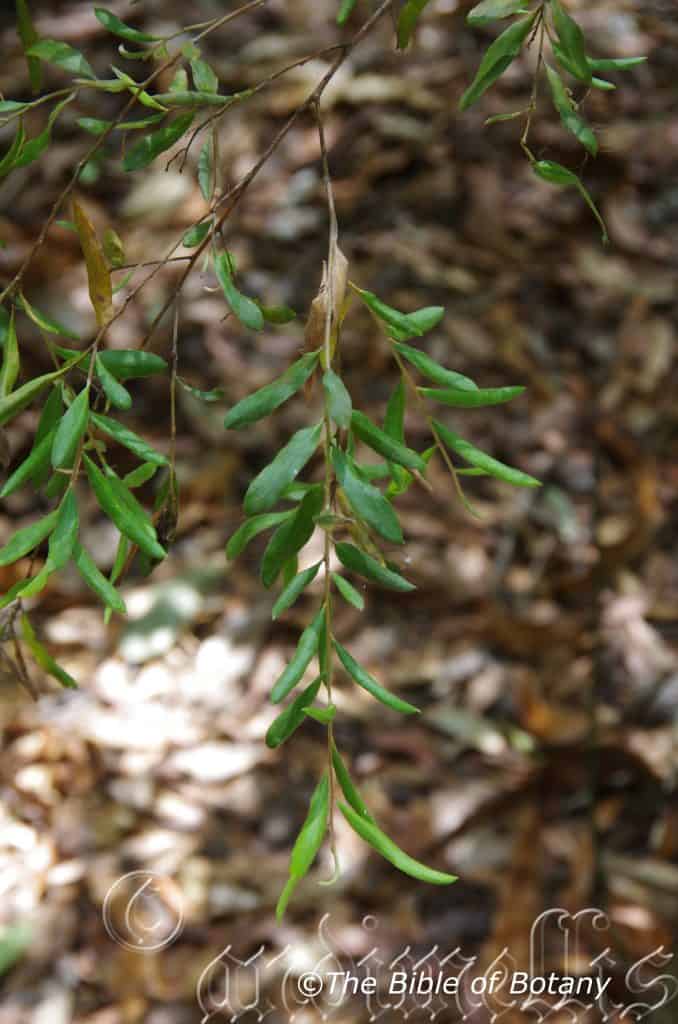
NCBG Coffs Harbour NSW
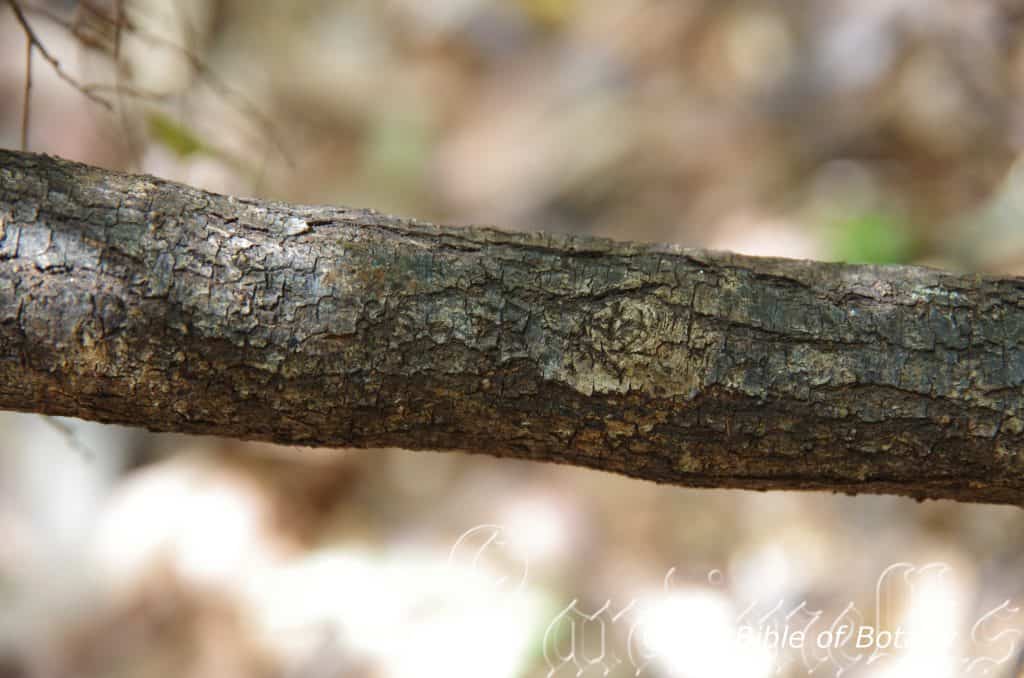
NCBG Coffs Harbour NSW
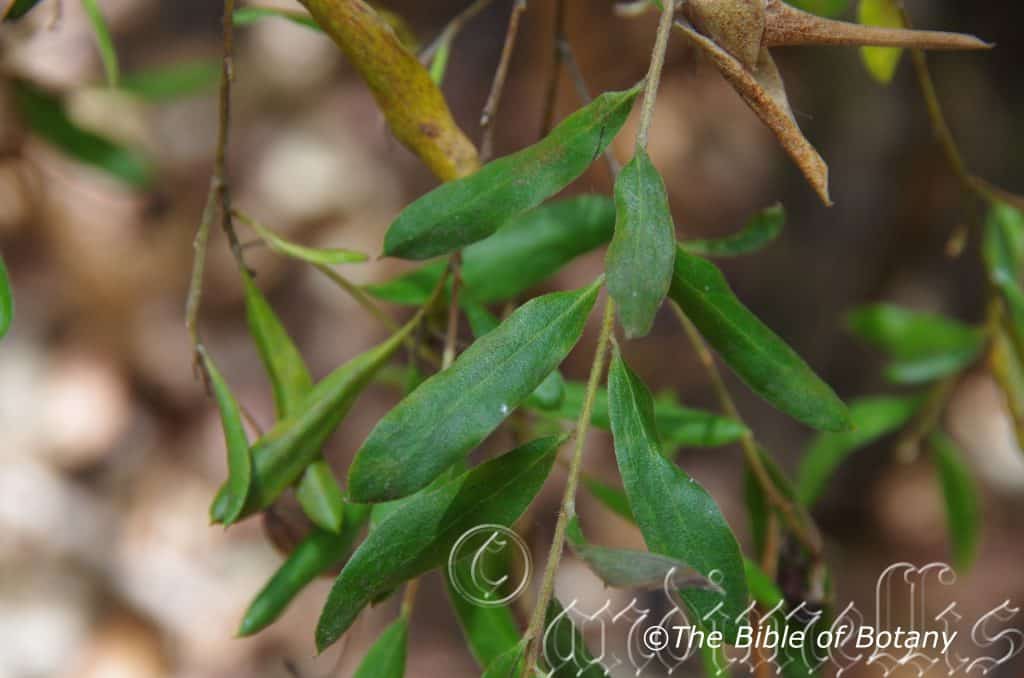
NCBG Coffs Harbour NSW
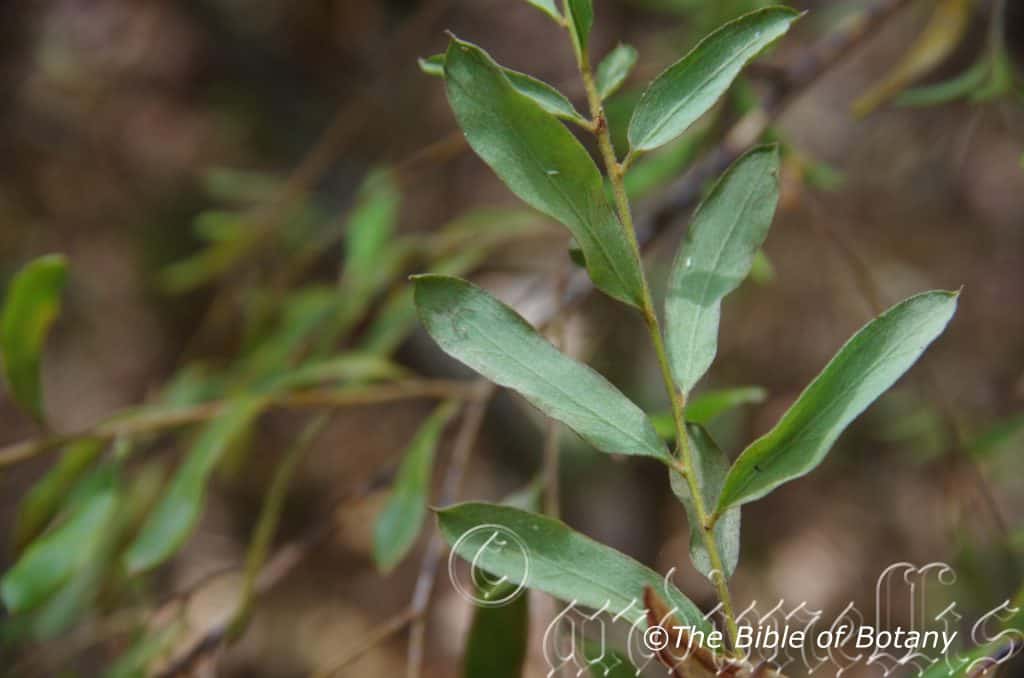
NCBG Coffs Harbour NSW
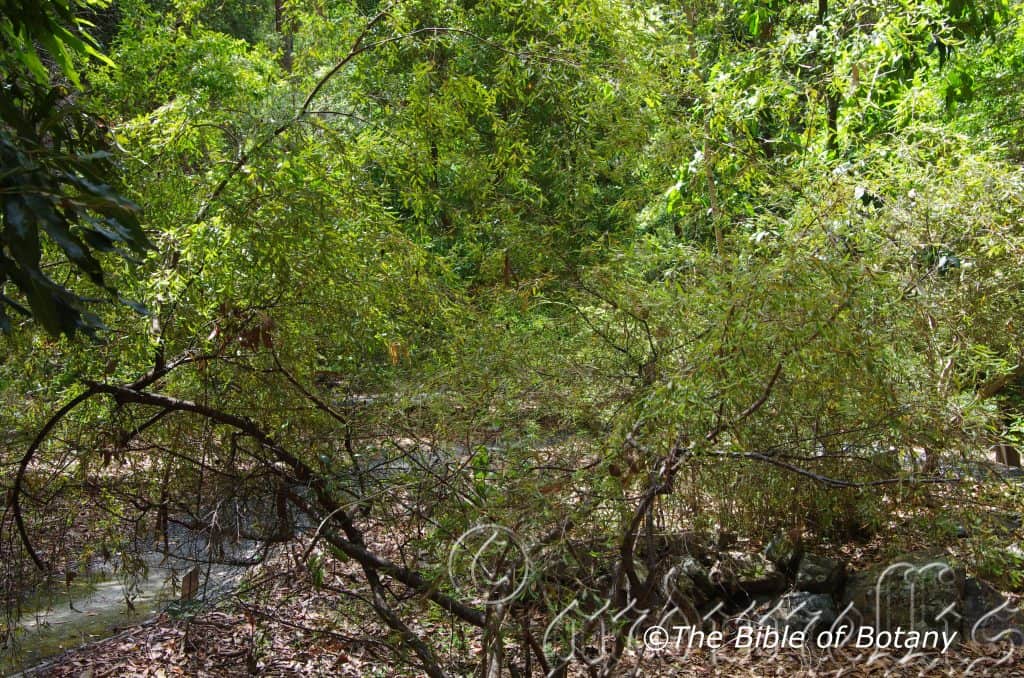
NCBG Coffs Harbour NSW
Grevillea guthrieana
Classification:
Class: Magnoliopsida
Order: Proteales
Family: Proteaceae
Genus: Is named in honour of C. F. Greville; 1749-1809, who was a British expert botanist on Algae, a foundation member of the London Horticultural Society and a collector of rare plants.
Species: Is named in honour of Christine Guthrie, who is an amateur botanist and collector of Australian plants especially Grevillea species. She is secretary and Treasurer of the Grevillea Study Group within the Australian Native Plants Society.
Sub Species:
Common Name:
Distribution:
Grevillea guthrieana is restricted to a few isolated pockets in north eastern New South Wales between Wollomombi Falls and Booral. It is found on the western and eastern slopes of the Great Dividing Range.
https://avh.ala.org.au/occurrences/search?taxa=Grevillea+guthrieana#tab_mapView
Habitat:
Grevillea guthrieana prefers full sun to light dappled shade. It grows in the cooler moist Eucalyptus forests on ridges and along high river banks. The altitude ranges from 25 meters ASL to 900 meters ASL.
The temperatures range from minus 6 degree in August to 38 degrees in January.
The rainfalls range from lows of 400mm to an average of 900mm annually.
Soil Requirements:
Grevillea guthrieana prefers to grow on poorer quality white, often skeletal to shallow sandy loams, rocky terrain, course gravelly soils or screes. The soils are usually derived from decomposed sandstone or granite. The soils pH ranges from 6pH to 7pH. It does not tolerate waterlogged soils. Non saline soils to moderately saline soils are tolerated.
Height & Spread:
Wild Plants: 1.5m to 2.5m by 1.5m to 2.5m.
Characteristics:
Grevillea guthrieana’s larger stems are a mid grey to brown and are somewhat tessellated. The smaller stems are pale green and moderately to densely covered in straggly, white villous hairs.
Grevillea guthrieana‘s simple, alternate, narrow elliptical to oblong-elliptical leaves have a Fibonacci Sequence of 2:5 and measure 20mm to 60mm in length by 4mm to 9mm in width. The terete pedicel are moderately to densely covered in white villous hairs and measures 2.5mm to 5mm in length. The bases are broad cuneate to cuneate, while the apexes are strongly mucronate. The discolourous laminas vary from a mid blue-green, moderately to coarsely granular on the upper lamina while the lower lamina is paler and moderately to densely covered in white villous hairs. The lamina decurves downwards from the midvein to the margins and decurves strongly near the apex. The leaf margins are entire and slightly undulating. The mid vein is prominent on the lower lamina, clearly visible on the upper lamina, while the lateral and reticulated venation are obscure.
The inflorescence of Grevillea guthrieana is decurve short secund which is born in the leaf axils or terminal. It is sub ovoid with 2 to 10 individual flowers. The style and perianth are the most prominent part of the flower. The flowers are decurved often pendent and conspicuously pedunculate. The peduncles are glabrous or sparsely to moderately covered in soft, white villous hairs. The pale lime green perianth is sparsely covered in soft white tomentose hairs externally, while, internally it is moderately covered in courser hirsute hairs at around 2mm from the base. The limb is subcubic, while the gynoecium measures 25mm to 26mm length. The ribbed ovary is moderately covered in soft, white pubescent, tomentose or villous hairs. The maroon style is sparsely to moderately covered in fine, soft, white tomentose hairs in the lower third and becomes almost glabrous in upper two-thirds. The lateral pollen presenter is flat to slightly convex short with basal attenuation.
The styles are deep pink to purple-red with a lime-green or yellow-green stigma and pollen presenter. The lateral oval pollen presenter is enlarged. The style and ovary measure 21mm to 24mm long. The style is sparsely covered in white tomentose hairs while the ovary is covered in appressed villose and tomentose hairs. Flowering occurs from August to October.
Grevillea guthrieana‘s fruits are narrow ellipsoidal follicles. The style is persistent on the ripe follicles. The pale green follicles are prominently ribbed and sparsely covered in white tomentose hairs. The follicles measure 20mm to 22mm in length.
Wildlife:
The dense foliage and proliferation of small flowers during August to October with the odd flower throughout spring is a great attraction and safe zone for smaller honeyeaters like the Silver Eyes (Zosterops lateralis), Yellow Face Honeyeater (Lichenostomus chrysops), Brown Honeyeater (Lichmera indistincta) and the eastern Spinebill. (Acanthorhynchus tenuirostris).
Cultivation:
Grevillea guthrieana is a very beautiful, rare small Grevillea for temperate to subtropical areas in native gardens where sandy or light clays soils predominate. It is small dense well rounded shrub which will grow 2 meter to 3 meters in height by 2 meters to 3.5 meters in diameter under cultivation when grown in the open. The foliage can be regularly tip pruned to encourage new growth, bushiness, a smaller shrub and increase flowering. It is best grown on banks or along driveways.
It is also a good supply of nectar for birds having a long flowering period. In Native gardens it can be used to attract small honeyeaters.
Grevillea guthrieana is great in bush gardens where there bright clean green foliage to enhance the foliage of plants with the more mundane olive greens or deep sea greens.
It can be used around swimming pools, pruned as a low hedge or more upright for low screens large rockeries on embankments or even as a standalone feature.
Another concept is to use it in the heath garden where an expansive flat area can take advantage of numerous foliage forms. Plants must be planted relatively close together and be shorter, to draw attention yet still allow the observer to see over the tallest ones. These will be the feature plants. The idea is to achieve a feeling of expansive flatness. This can be achieved with using the Grevillea guthrieana‘s leaves and having them contrasting with finer pale green or soft grey to glaucous coloured foliages. Crowded it will resort to an upright virgatum form to 3 plus meters in height or given a little room to expand can be used as dome features amongst the other low growing shrubs. Use a lot of procumbent plants like Carpobrotus edulis, Xerochrysum bracteatum, Xerochrysum viscosum or Hibbertia specie to add the colour this Grevillea lacks. Mix it with other smaller shrubs so none of them dominate the scene but blend in to give a mosaic of foliage colours that you oversee. Here I immediately think of Actinotis helianthi or Grevillea thelemanniana for two great contrasting foliages or even small banksias like Banksia robor which is kept trimmed to control its height.
In the formal or Japanese Gardens it can be used as the fill in plants or as the main feature beside the water feature. Imagine a small pond with fish swimming. Beside it is one, two or three Grevillea guthrieana, and above them is water cascading down over small rocks. This is very powerful yet formal and relaxing scene. It can partially surround such a scene and still look effective. Use it in small groups with larger rocks or in front of a large log. A large log will give a strong horizontal affect with depth if placed on an angle. Right along the front plant various Hybanthus specie. They can be a mixture of the purple flowered Hybanthus monopetalus with one of the yellow or orange flowering forms. The vertical stems and linear leaves will create a longer looking log that has a greater diameter. The plants are dainty yet display a very relaxing and thought provoking scene.
Propagation:
Seeds: Sow the seeds of Grevillea guthrieana directly into a seed raising mix. Cover them with 5mm of fine sand and keep moist not wet. Place the tray in a warm sunny position. When the seedlings are 25mm to 50mm tall, prick them out and plant them into 50mm native tubes using a good organic mix.
Once the seedlings reach 150mm to 200mm in height, nip the tips out before planting them out into their permanent position. For mass plantings plant them out at 0.5 meter to 2 meter centers depending on the sub specie or whether it is used as a hedge, barrier or feature shrub.
Fertilize using Seaweed, fish emulsion or a half strength solution of organic chicken pellets soaked in water on an alternate basis. Fertilize every 3 months until the plants are well established then annually to assist in prolific blooming and healthy growth. Avoid synthetic fertilizers as they may contain high levels of phosphorus and calcium which are toxic to most members of the Proteaceae family.
Cuttings: Use 70mm to 100mm long half ripened material when growing from cuttings from the present season’s growth. Take them in mid-autumn or early spring. Remove half the leaves from the bottom section being careful not to tear the bark.
1 Prepare the cutting mix by adding one third sharp clean river sand, one third peat and one third perlite. These ingredients are sterilize,
2 Select good material from non diseased plants,
3 Select semi green stems for cuttings. Look for a stem with two or three nodes,
4 Place the cutting on a flat, hard surface, and make a clean cut down one side of the cutting at the base for 10mm with a sharp sterile knife or razor blade. – This scarification of the node will increase the chances of roots emerging from this spot. Now remove all but one or two the leaves, leaving the apex leaves in tact. If the leaves are very large in proportion to the stem, cut off the apical halves.
5 Fill a saucer with water, and place a little medium strength rooting hormone into another container like a milk bottle top. Dip the node end of the cutting into the water and then into the rooting hormone. Tap off any excess hormone,
6 Use a small dipple stick or old pencil to poke a hole into the soilless potting mix. Ensure the hole is slightly larger than the stem diameter and be careful not to wipe the rooting hormone off the cuttings base, place the cuttings in a pattern ensuring the cuttings are not touching each other,
7 I like to place the pots in Plastic bags to help maintain temperature and moisture. Place in a semi shaded place like under 50mm shade cloth.
8 When the cuttings have struck, open the bag to allow air circulation for a few days to a week,
9 Once hardened off remove the cuttings from the bag and allow to further hardening for a few more days,
10 Transplant into a good potting mix to grow on.
Fertilize using seaweed, fish emulsion or organic chicken pellets soaked in water on an alternate basis. Fertilize every two months until the plants are established then twice annually in early September or March to maintain health, vitality and better flowering. Avoid synthetic fertilizers as they will most likely contain calcium and phosphorus at levels, which are toxic to most Proteaceae.
Further Comments from Readers:
Hi reader, it seems you use The Bible of Botany a lot. That’s great as we have great pleasure in bringing it to you! It’s a little awkward for us to ask, but our first aim is to purchase land approximately 1,600 hectares to link several parcels of N.P. into one at The Pinnacles NSW Australia, but we need your help. We’re not salespeople. We’re amature botanists who have dedicated over 30 years to saving the environment in a practical way. We depend on donations to reach our goal. If you donate just $5, the price of your coffee this Sunday, We can help to keep the planet alive in a real way and continue to bring you regular updates and features on Australian plants all in one Botanical Bible. Any support is greatly appreciated. Thank you.
In the spirit of reconciliation we acknowledge the Bundjalung, Gumbaynggirr and Yaegl and all aboriginal nations throughout Australia and their connections to land, sea and community. We pay our respect to their Elders past, present and future for the pleasures we have gained.
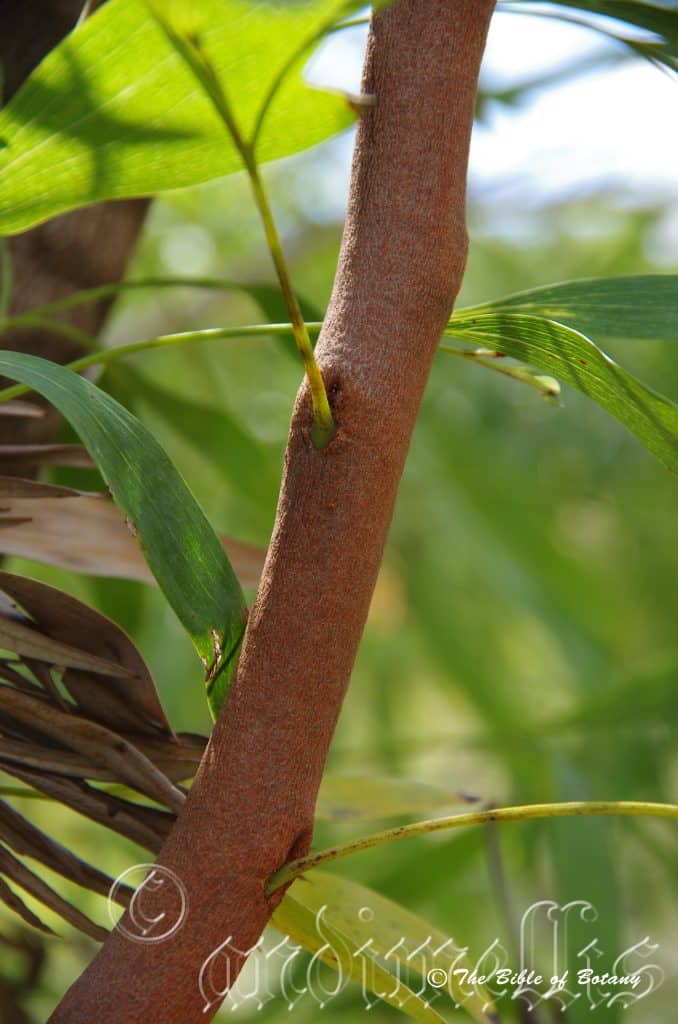
Mount Cootha Botanical Gardens Qld.
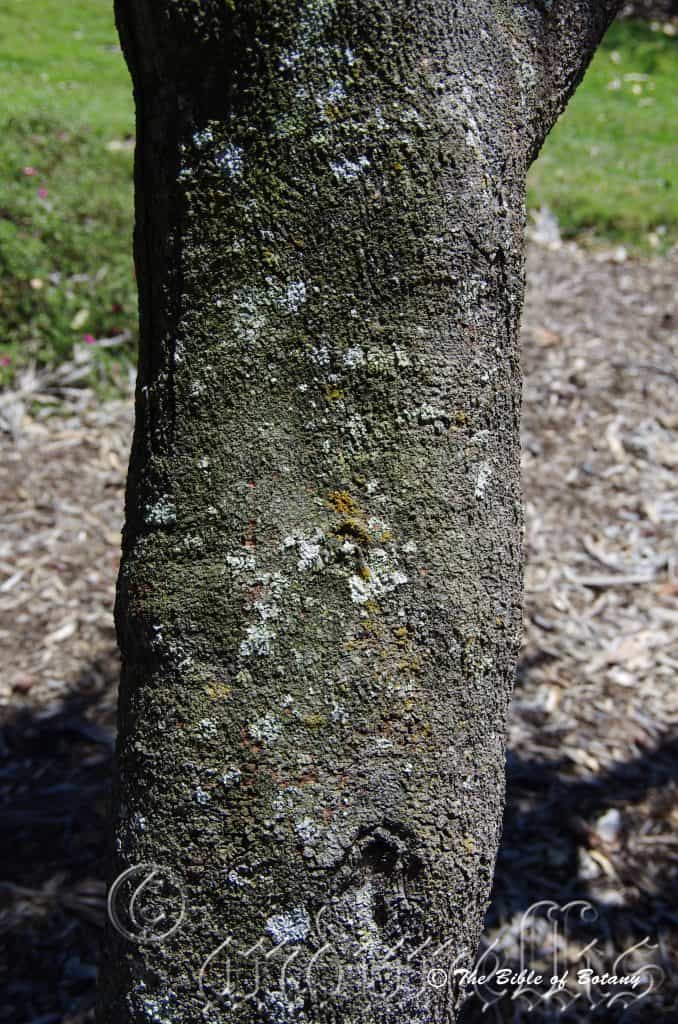
Mount Cootha Botanical Gardens Qld.
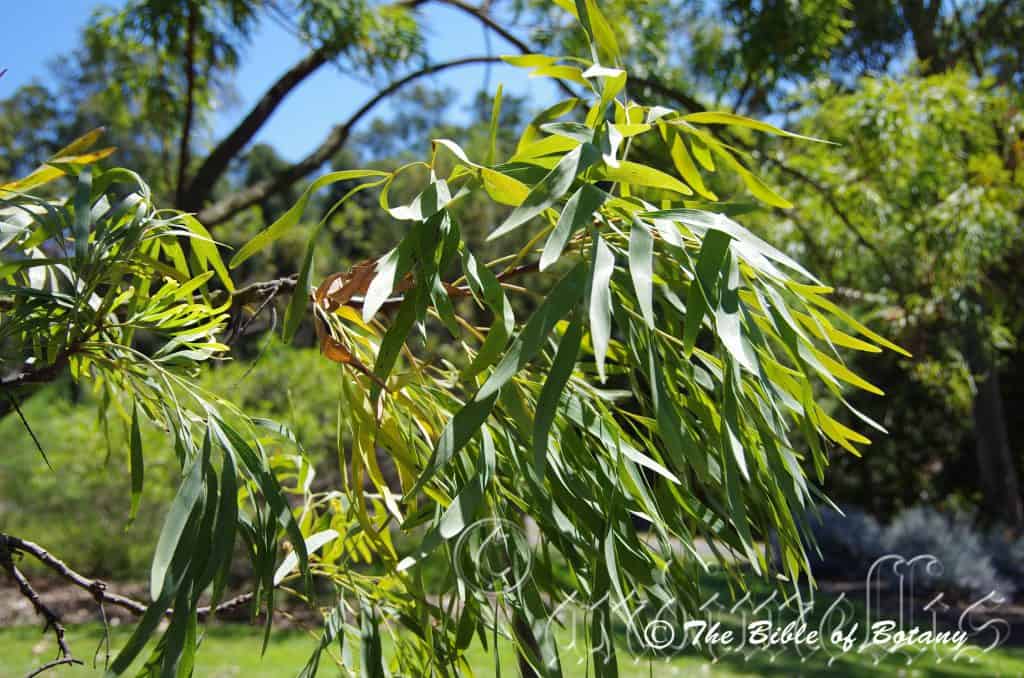
Mount Cootha Botanical Gardens Qld.
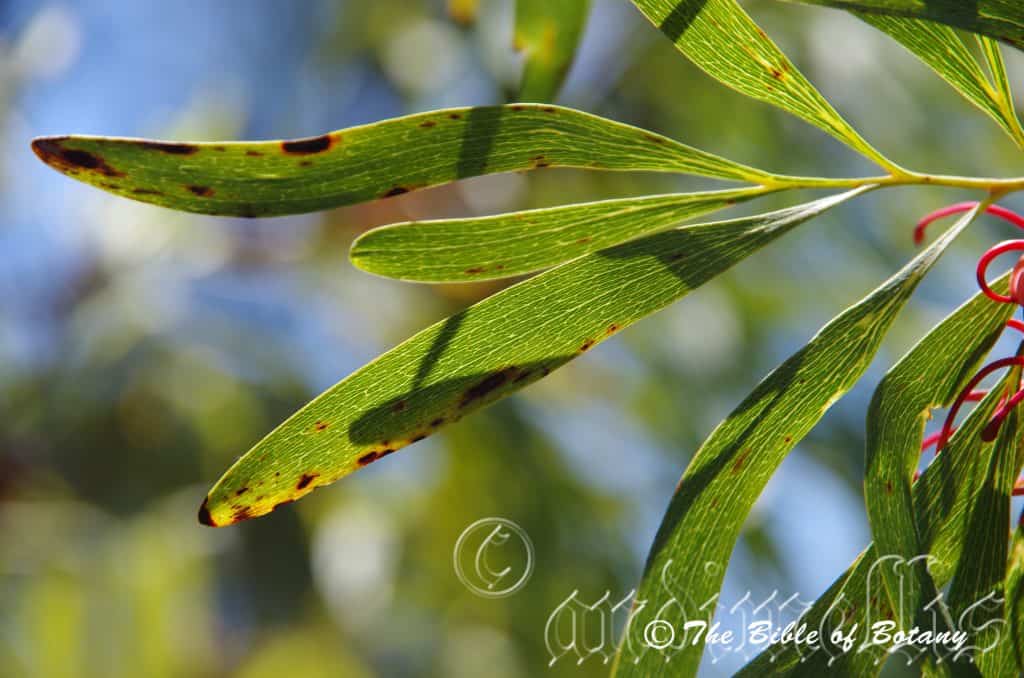
Mount Cootha Botanical Gardens Qld.
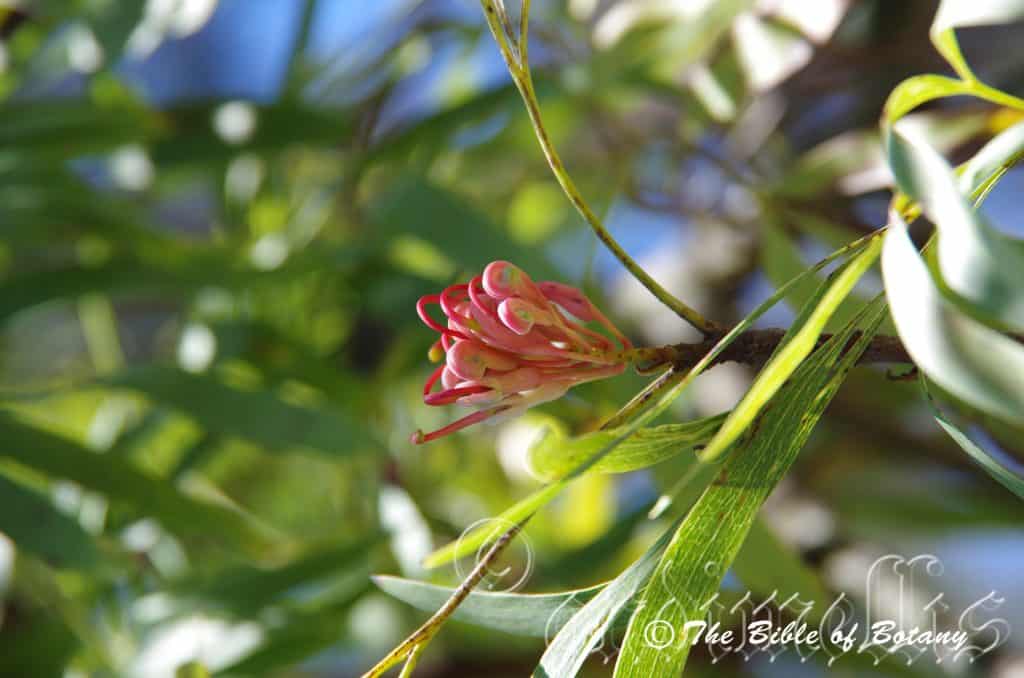
Mount Cootha Botanical Gardens Qld.
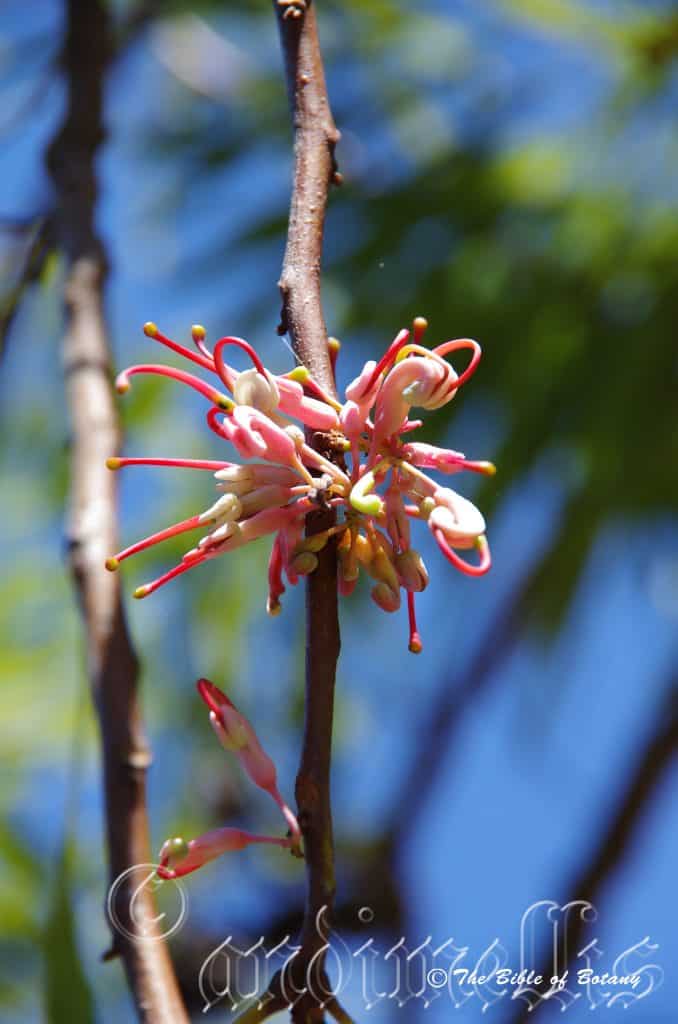
Mount Cootha Botanical Gardens Qld.
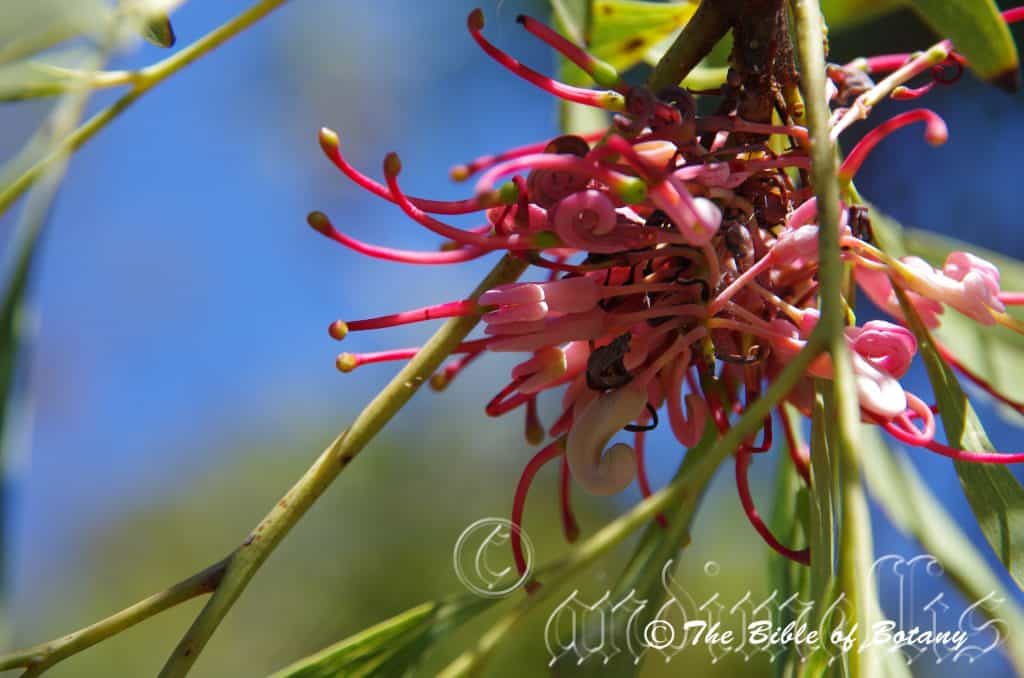
Mount Cootha Botanical Gardens Qld.
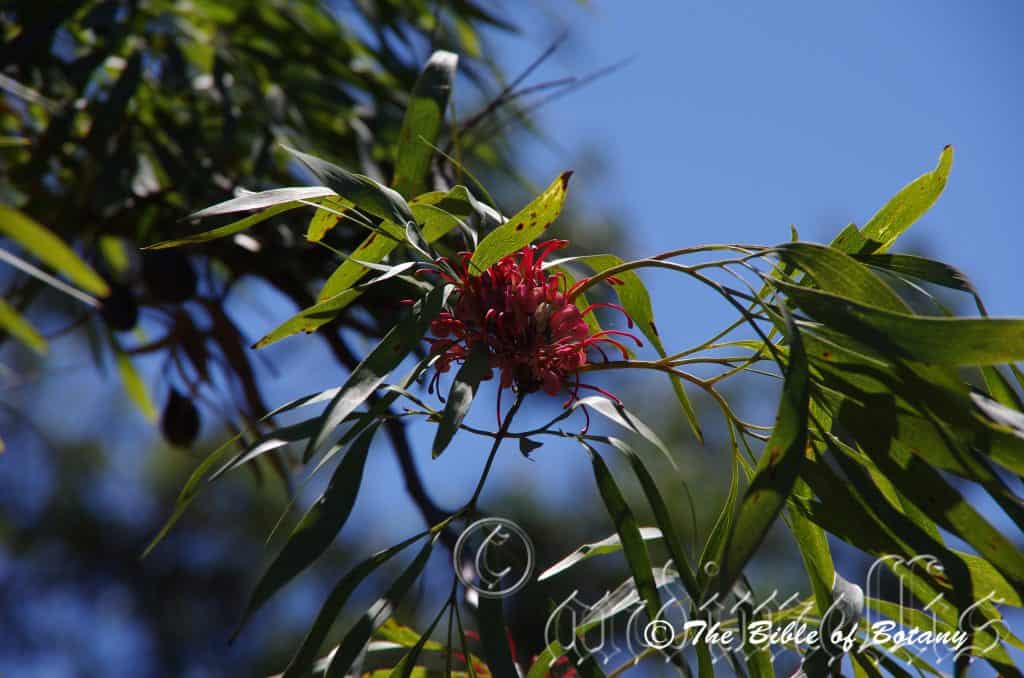
Mount Cootha Botanical Gardens Qld.
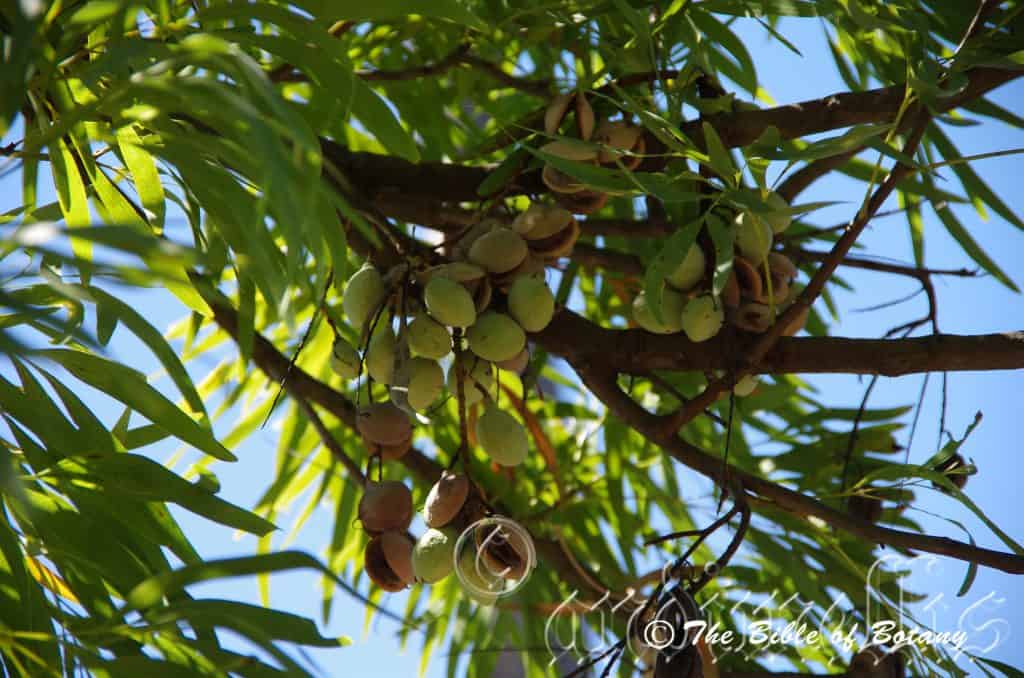
Mount Cootha Botanical Gardens Qld.
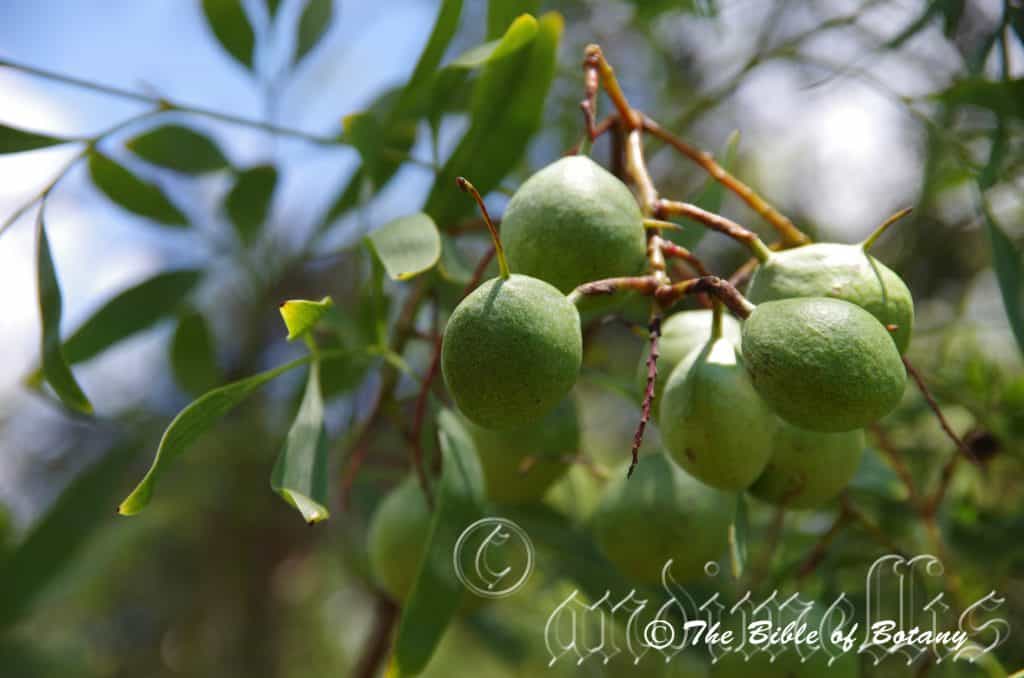
Mount Cootha Botanical Gardens Qld.
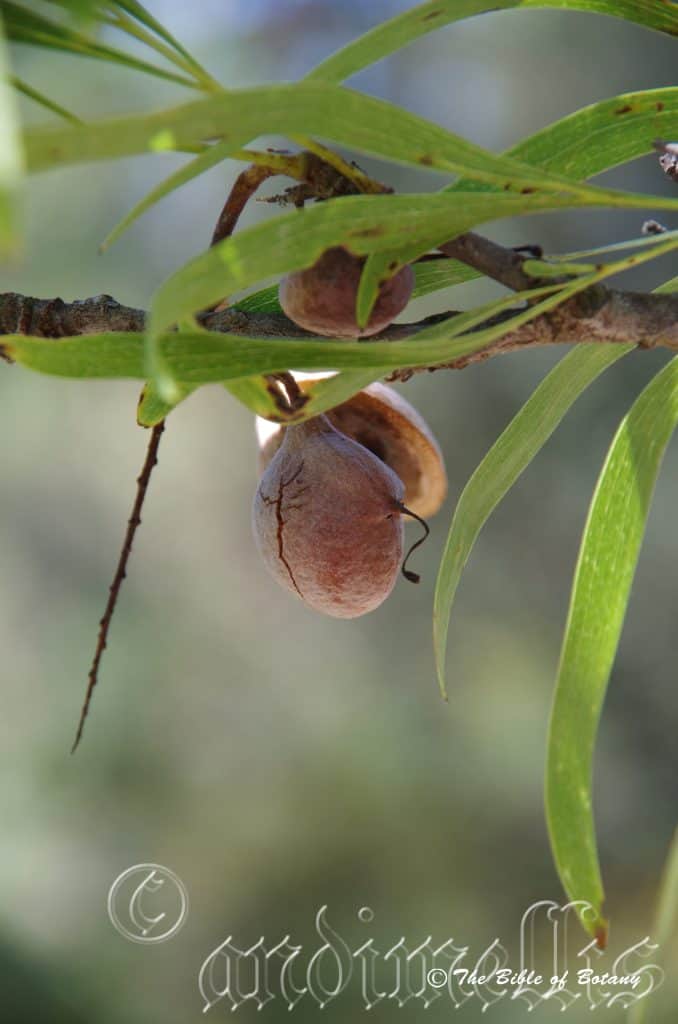
Mount Cootha Botanical Gardens Qld.
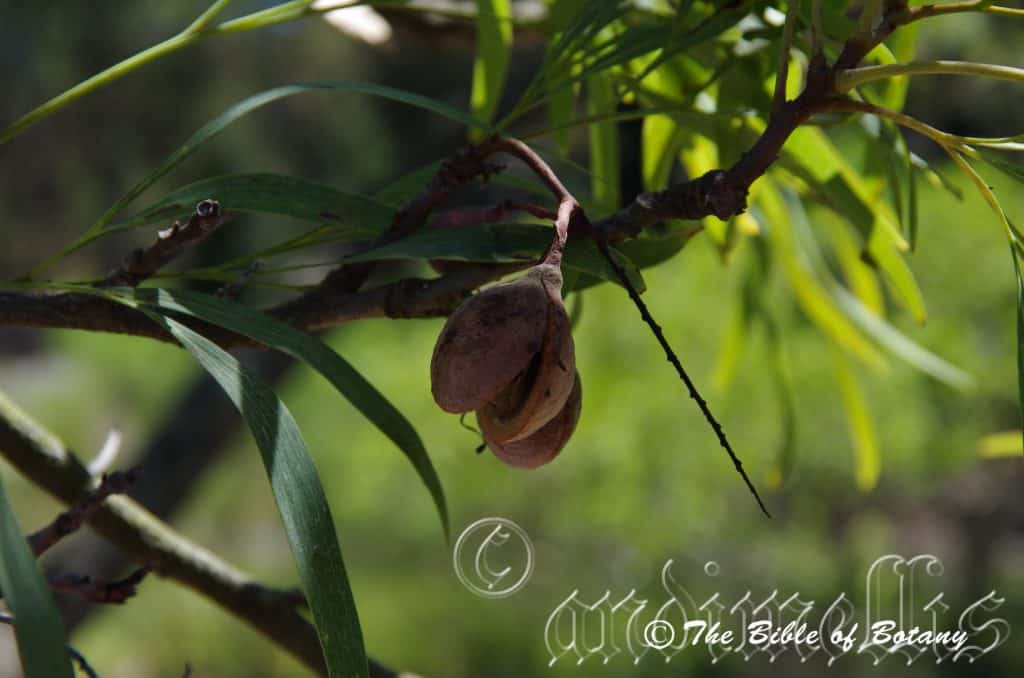
Mount Cootha Botanical Gardens Qld.
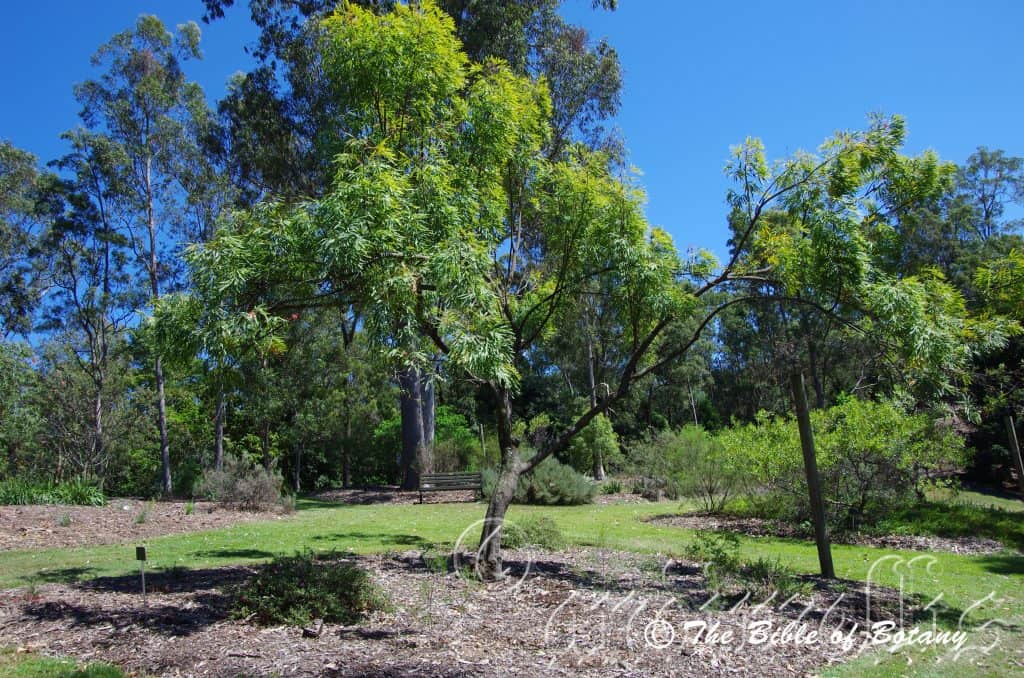
Mount Cootha Botanical Gardens Qld.
Grevillea heliosperma
Class: Magnoliopsida
Order: Proteales
Family: Proteaceae
Genus: Is named in honour of C. F. Greville; 1749-1809, who was a British expert botanist on Algae, a foundation member of the London Horticultural Society and a collector of rare plants.
Species: From Helios, which is Ancient Greek for the sun and Sperma, which is Ancient Greek for a seed. It refers to plant fruits, which are open very slowly exposing the seeds to the hot sun for prolonged periods before it is eventually dispersed by the wind.
Sub Species:
Common Name: Rock Grevillea or Red Grevillea.
Distribution:
Grevillea heliosperma is found east from the Kimberley Coast in north western, Western Australia through the top end of the Northern Territory to as far east as Burketown and Cloncurry in north western Queensland. It is probably more widespread than has been reported as I have found the plants near Gunpowder north of Mount Isa, near Lake Julius north of Mount Isa and at Home Hill back in early 1972 in Queensland.
https://avh.ala.org.au/occurrences/search?taxa=Grevillea+heliosperma#tab_mapView
Habitat Aspect Climate:
Grevillea heliosperma prefer full sun to dappled shade. It grows on ridges, escarpments and cliffs in open woodlands scrublands or dry schlerophyll forests. The altitude ranges from 10 meters ASL to 400 meters ASL.
The temperatures range from 10 degrees in August to 42 degrees in February.
The rainfalls range from lows of 400mm to an average 2000mm annually.
Soil Requirements:
Grevillea heliosperma prefers red or brown shallow sandy loams, rocky light clays or course gravelly soils especially where laterites and iron stone exist. The soils are usually derived from partially decomposed sandstones, granite or basalts. The soils pH ranges from 5PH to 6.5PH are preferred. It does not tolerate waterlogged soils. Non saline soils to moderately saline soils are tolerated.
Height & Spread:
Wild Plants: 3m to 8m by 3m to 5m.
Characteristics:
The trunk is a deep red-brown to grey brown and glabrous or slightly scabrous. Branchlets are yellow-brown to yellow-green tinged pink or green. The buds and new shoots are glabrous or sparsely covered in white sericeous hairs.
The alternate pinnatipartite leaves measure 150mm to 400mm in length overall. There are 7 to 13 primary lobes and 2 to 7 ultimate lobes. The broad linear to narrow ovate, oblong-lanceolate leaflets are asymmetrical and measure 30mm to 130mm in length by 5mm to 12mm in width. The petiole are glabrous or sparsely covered in white sericeous hairs and measures 5mm to 10mm in length. The bases are tapering to attenuate while the apexes are obtuse, truncate with an emarginate tip. The concolourous laminas are a mid green to blue-green and glabrous on the upper Laminas while the lower laminas are glabrous to sparsely covered in white sericeous hairs. The laminas are flat while the margins are entire. The mid vein is slightly prominent on the lower lamina and are visible on the upper lamina.
The basiscopic conflorescence of Grevillea heliosperma is a short single raceme or secund to 6 branched raceme born terminally, from the leaf axils or cauline from the previous seasons branchlets. The racemes and pedicels are glabrous and have 10 to 80 individual flowers. The racemes measure 50mm to 160mm in length while the pedicels measure 5mm to 12mm in length. The perianth and style are the most prominent parts of the flower.
The individual perianths are pale pink to deep pink from the base through to the pale pink lobes and are variable and very irregular. The perianths are glabrous externally and glabrous or sparsely covered in white pilose hairs internally. The perianths measure 11m to 15mm in length while the lobes measure 23mm to 32mm in length. The lobes are strongly recurved and joined.
The style is deep pinkish-red to red at the base through to the stigma. The oblique stigma has a yellowish-green pollen presenter. The glabrous style and ovary measure 34mm to 46mm in length. The style curves slightly as it approaches the stigma. The ovary is stipitate. The flowers appear from May to October.
The fruits are ovate-discoid follicles. The follicles are pale blue-green and turn mid brown to deep grey-brown almost black when ripe. It is granulated, glabrous and not viscid. They measure 19mm to 35mm in length by 15mm to 28mm in width and 12mm to 18mm in depth. The flat grey ovate seeds measure 9mm to 20mm in length by 5mm to 13mm in width. There is a 2.5mm to 4mm fawn chartaceous wing surrounding the seed.
Wildlife:
The light foliage and proliferation of large nectar filled flowers of Grevillea heliosperma is a great attraction for medium size and large nectar eating birds alike.
Cultivation:
Grevillea heliosperma is an unusual foliaged small tree for a Grevillea. It would suit most small gardens in semi-arid, tropical and subtropical zones. It is a very reliable and prolific bloomer despite the flowers being sparsely placed along the rachis. As garden subjects it grows from 3 meters to 5 meters in height by 2.5 meters to 3 meters in diameter when cultivated in the open. It is fast growing, drought tolerant but are not cold tolerant. Plants grow well in Brisbane on rocky shale however frost free areas south to Grafton maybe their limit.
In Native gardens it can be used for attracting medium to large honeyeaters and more aggressive nectar feeding birds like the rainbow and scaly breasted lorikeets, leather heads and noisy minor.
Placed at the center of a bush garden their striking display of leaves will draw your attention so that you will want to investigate further. Place them in the background with medium and smaller plants in front. Plants with either small white or yellow flowers can be used in the midground while the prostrate or smaller shrubs are best with red or white flowers in the front.
Red flowering shrubs can also be used to great effect as their flowering will compliment those from this Grevillea. The large red flowers will offset the strong flowers of any prostrate Acacias planted in the foreground. In fact it would be a very strong complementary contrast if the prostrate or smaller Acacia specie were to flower at the same time or in a different season. In a bush scene it is best scattered through the bush to give patches of colour to attract your attention rather than having a mass planting.
Propagation:
Seeds: Sow the seeds directly into a seed raising mix. Cover them with 5mm of fine sand and keep moist not wet. Place the tray in a warm sunny position. When the seedlings are 25mm to 50mm tall, prick them out and plant them into 50mm native tubes using a good organic mix.
Once the seedlings reach 150mm to 200mm in height, nip the tips out before planting them out into their permanent position. For mass plantings plant them out at 0.5 meter to 2 meter centers depending on the sub specie or whether it is used as a hedge, barrier or feature shrub.
Fertilize using Seaweed, fish emulsion or a half strength solution of organic chicken pellets soaked in water on an alternate basis. Fertilize every 3 months until the plants are well established then annually to assist in prolific blooming and healthy growth. Avoid synthetic fertilizers as they may contain high levels of phosphorus and calcium which are toxic to most members of the Proteaceae family.
Cuttings:
Use 70mm to 100mm long half ripened material when growing from cuttings from the present season’s growth. Take them in mid-autumn or early spring. Remove half the leaves from the bottom section being careful not to tear the bark.
1 Prepare the cutting mix by adding one third sharp clean river sand, one third peat and one third perlite. These ingredients are sterilize,
2 Select good material from non diseased plants,
3 Select semi green stems for cuttings. Look for a stem with two or three nodes,
4 Place the cutting on a flat, hard surface, and make a clean cut down one side of the cutting at the base for 10mm with a sharp sterile knife or razor blade. – This scarification of the node will increase the chances of roots emerging from this spot. Now remove all but one or two the leaves, leaving the apex leaves in tact. If the leaves are very large in proportion to the stem, cut off the apical halves.
5 Fill a saucer with water, and place a little medium strength rooting hormone into another container like a milk bottle top. Dip the node end of the cutting into the water and then into the rooting hormone. Tap off any excess hormone,
6 Use a small dipple stick or old pencil to poke a hole into the soilless potting mix. Ensure the hole is slightly larger than the stem diameter and be careful not to wipe the rooting hormone off the cuttings base, place the cuttings in a pattern ensuring the cuttings are not touching each other,
7 I like to place the pots in Plastic bags to help maintain temperature and moisture. Place in a semi shaded place like under 50mm shade cloth.
8 When the cuttings have struck, open the bag to allow air circulation for a few days to a week,
9 Once hardened off remove the cuttings from the bag and allow to further hardening for a few more days,
10 Transplant into a good potting mix to grow on.
Fertilize using seaweed, fish emulsion or organic chicken pellets soaked in water on an alternate basis. Fertilize every two months until the plants are established then twice annually in early September or March to maintain health, vitality and better flowering. Avoid synthetic fertilizers as they will most likely contain calcium and phosphorus at levels, which are toxic to most Proteaceae.
Further Comments from Readers:
Hi reader, it seems you use The Bible of Botany a lot. That’s great as we have great pleasure in bringing it to you! It’s a little awkward for us to ask, but our first aim is to purchase land approximately 1,600 hectares to link several parcels of N.P. into one at The Pinnacles NSW Australia, but we need your help. We’re not salespeople. We’re amature botanists who have dedicated over 30 years to saving the environment in a practical way. We depend on donations to reach our goal. If you donate just $5, the price of your coffee this Sunday, We can help to keep the planet alive in a real way and continue to bring you regular updates and features on Australian plants all in one Botanical Bible. Any support is greatly appreciated. Thank you.
In the spirit of reconciliation we acknowledge the Bundjalung, Gumbaynggirr and Yaegl and all aboriginal nations throughout Australia and their connections to land, sea and community. We pay our respect to their Elders past, present and future for the pleasures we have gained.
Grevillea helmsiae
Class: Magnoliopsida
Order: Proteales
Family: Proteaceae
Genus: Is named in honour of C. F. Greville; 1749-1809, who was a British expert botanist on Algae, a foundation member of the London Horticultural Society and a collector of rare plants.
Species: Is named in honour of Sabine Helms; 1866-1929, who was a Danish born Australian who was a botanical artist and collector of plants. She devoted her life to Australian flora in and around Isis in central eastern Queensland.
Sub Species:
Common Name: Bahrs Scrub Grevillea.
Distribution:
Grevillea helmsiae is found south from the Gregory River to near Bahrs Hill south of Brisbane. It is found on the Western Slopes, on and east of the Great Dividing Range.
https://avh.ala.org.au/occurrences/search?taxa=Grevillea+helmsiae#tab_mapView
Habitat:
Grevillea helmsiae prefer full sun to dappled shade. It grows on hills and mountains adjacent to rainforests, wet Eucalyptus forests, brigalow forests or dry rainforest margins. The altitude ranges from 10 meters ASL to 650 meters ASL.
The temperatures range from 4 degrees in August to 36 degrees in February.
The rainfalls range from lows of 620mm to an average 1600mm annually.
Soil Requirements:
Grevillea helmsiae prefers grey, white, yellow, red and brown shallow sandy loams, rocky or course gravelly light clays. The soils are usually derived from partially decomposed or decomposed sandstones, metamorphic rocks, black basalts or brown basalts. The soils pH ranges from 5pH to 7pH are preferred. It does not tolerate waterlogged soils. Non saline soils to moderately saline soils are tolerated.
Height & Spread:
Wild Plants: 10m to 17m by 4m to 5.5m.
Characteristics:
The bark is pale grey, glabrous and covered in lichens on older trees. The trunk is slightly flanged at the base. Branchlets are pale green and covered in short white sericeous hairs close to the apex. Trees often sucker at the base and have 2 to 6 short suckers up to a meter in height ready to grow if the main trunk is damaged or killed.
The alternate, simple, narrow elliptical, broad elliptical to narrow ovate or oblong-lanceolate leaves measure 50mm to 200mm in length by 7mm to 40mm in width. The petioles are glabrous or sparsely to moderately covered in white sericeous hairs and measure 10mm to 16mm in length. The bases are cuneate while the apexes are broad acuminate to obtuse even on the one tree. The discolourous laminas are grass-green to deep green and glabrous on the upper lamina while the lower laminas are paler and usually sparsely to moderately covered in white sericeous hairs or on rare occasions are glabrous. The laminas are flat to recurve slightly upwards from the mid vein to the margins while the margins are entire. The mid vein is prominent on the lower lamina and is visible on the upper lamina.
The basiscopic conflorescence is an erect short cylindrical or globose raceme born terminally. The racemes have 28 to 56 individual flowers and measure 20mm to 45mm in length overall. The rachis measures 4mm to 20mm in length. The perianth and style are the most prominent parts of the flower. The individual perianths are pale cream, white or pastel creamy green. The perianths are sparsely covered in white sub sericeous hairs externally and sparsely covered in white hirtellous hairs internally. The perianths measure 6mm to 10mmin length and lobes measure 6.5mm to 10mm in length. The lobes are strongly recurved and free
The style is mid green from the base to the lateral, ovoidal stigma. The lateral pollen presenter is pastel green to pale green. The pistils measure 12.5mm to 20mm in length. The erect styles curve 90 degrees as it approaches the stigma and is glabrous. The ovary is glabrous and measures 1mm to 2mm in diameter. The perianths peduncles are 2mm to 4.5mm long. The flowers appear from August to November.
The fruits are flattened ellipsoidal follicles. The style is persistent on the ripe follicles. The follicles are glabrous, pale lime-green and turn deep grey-brown when ripe. They measure 20mm to 31mm in length by 8mm to 13mm in width. The flat grey oval seeds measure 10mm to 14mm in length by 5mm to 7mm in width. There is a 2mm to 3mm fawn chartaceous wing surrounding the seed.
Wildlife:
The nectar filled flowers are a great attraction for small and medium size nectar eating birds, butterflies and native flies. This is an excellent tree for riparian zone reclamation work.
Cultivation:
Grevillea helmsiae is an unusual foliaged small tree for a Grevillea. It would suit most small gardens in semi-arid and subtropical and tropical zones in Australia. As garden subjects it will grow from 7 meters to 10 meters in height by 4 meters to 5 meters in diameter when cultivated in the open. It is fast growing, drought tolerant and cold tolerant down to at least minus 2 degrees.
Grevillea helmsiae is most suitable for use along long drive ways, screens, wind breaks or shelter belts for small native mammals and birds. In Native gardens they can be used for attracting smaller birds like silver eyes or butterflies, native bees, native flies or native beetles.
Grevillea helmsiae is best used as a standalone small feature tree because of its very formal narrow pyramidal shape. It is neat and tidy fairly fast growing and always look green and fresh. It can also be used where a small rainforest look is required. The bark on older trees is suitable for small epiphytic orchids and ferns.
Propagation:
Seeds: Sow the seeds directly into a seed raising mix. Cover them with 5mm of fine sand and keep moist not wet. Place the tray in a warm sunny position. When the seedlings are 25mm to 50mm tall, prick them out and plant them into 50mm native tubes using a good organic mix.
Once the seedlings reach 150mm to 200mm in height, nip the tips out before planting them out into their permanent position. For mass plantings plant them out at 0.5 meter to 2 meter centers depending on the sub specie or whether it is used as a hedge, barrier or feature shrub.
Fertilize using Seaweed, fish emulsion or a half strength solution of organic chicken pellets soaked in water on an alternate basis. Fertilize every 3 months until the plants are well established then annually to assist in prolific blooming and healthy growth. Avoid synthetic fertilizers as they may contain high levels of phosphorus and calcium which are toxic to most members of the Proteaceae family.
Cuttings: Use 70mm to 100mm long half ripened material when growing from cuttings from the present season’s growth. Take them in mid-autumn or early spring. Remove half the leaves from the bottom section being careful not to tear the bark.
1 Prepare the cutting mix by adding one third sharp clean river sand, one third peat and one third perlite. These ingredients are sterilize,
2 Select good material from non diseased plants,
3 Select semi green stems for cuttings. Look for a stem with two or three nodes,
4 Place the cutting on a flat, hard surface, and make a clean cut down one side of the cutting at the base for 10mm with a sharp sterile knife or razor blade. – This scarification of the node will increase the chances of roots emerging from this spot. Now remove all but one or two the leaves, leaving the apex leaves in tact. If the leaves are very large in proportion to the stem, cut off the apical halves.
5 Fill a saucer with water, and place a little medium strength rooting hormone into another container like a milk bottle top. Dip the node end of the cutting into the water and then into the rooting hormone. Tap off any excess hormone,
6 Use a small dipple stick or old pencil to poke a hole into the soilless potting mix. Ensure the hole is slightly larger than the stem diameter and be careful not to wipe the rooting hormone off the cuttings base, place the cuttings in a pattern ensuring the cuttings are not touching each other,
7 I like to place the pots in Plastic bags to help maintain temperature and moisture. Place in a semi shaded place like under 50mm shade cloth.
8 When the cuttings have struck, open the bag to allow air circulation for a few days to a week,
9 Once hardened off remove the cuttings from the bag and allow to further hardening for a few more days,
10 Transplant into a good potting mix to grow on.
Fertilize using seaweed, fish emulsion or organic chicken pellets soaked in water on an alternate basis. Fertilize every two months until the plants are established then twice annually in early September or March to maintain health, vitality and better flowering. Avoid synthetic fertilizers as they will most likely contain calcium and phosphorus at levels, which are toxic to most Proteaceae.
Further Comments from Readers:
Hi reader, it seems you use The Bible of Botany a lot. That’s great as we have great pleasure in bringing it to you! It’s a little awkward for us to ask, but our first aim is to purchase land approximately 1,600 hectares to link several parcels of N.P. into one at The Pinnacles NSW Australia, but we need your help. We’re not salespeople. We’re amature botanists who have dedicated over 30 years to saving the environment in a practical way. We depend on donations to reach our goal. If you donate just $5, the price of your coffee this Sunday, We can help to keep the planet alive in a real way and continue to bring you regular updates and features on Australian plants all in one Botanical Bible. Any support is greatly appreciated. Thank you.
In the spirit of reconciliation we acknowledge the Bundjalung, Gumbaynggirr and Yaegl and all aboriginal nations throughout Australia and their connections to land, sea and community. We pay our respect to their Elders past, present and future for the pleasures we have gained.
Grevillea hilliana
Class: Magnoliopsida
Order: Proteales
Family: Proteaceae
Genus: Is named in honour of C. F. Greville; 1749-1809, who was a British expert botanist on Algae, a foundation member of the London Horticultural Society and a collector of rare plants.
Species: Is named in honour of Walter Hill; 1819-1904, who was a director of the Brisbane Botanic Gardens.
Sub Species:
Common Name: White Yiel Yiel or White Silky Oak.
Distribution:
Grevillea hilliana is found south from Shipton flat near Cooktown in far North eastern Queensland to Brunswick Heads in coastal northern New South Wales. It is found on and east of the Great Dividing Range. https://avh.ala.org.au/occurrences/search?taxa=Grevillea+hilliana#tab_mapView
Habitat Aspect Climate:
Grevillea hilliana prefer full sun to dappled shade. It grows adjacent to moist well developed rainforests or moist gallery forests. The altitude ranges from 26 meters ASL to 500 meters ASL.
The temperatures range from 2 degrees in August to 38 degrees in February.
The rainfalls range from lows of 800mm to an average 3000mm annually.
Soil Requirements:
Grevillea hilliana prefers to better quality deep red or brown loams to medium clays or rocky medium clays. The soils are usually derived from decomposed black basalts or brown basalts. The soils pH ranges from 5pH to 6pH are preferred. It does not tolerate waterlogged soils. Non saline soils to moderately saline soils are tolerated.
Height & Spread:
Wild Plants: 5m to 30m by 5m to 12m.
Characteristics:
The trunk is pale grey and rough. The pale grey stems are terete and slightly scabrous. The smallest stems with leaves are pale grey-green and densely covered in white to pale grey sericeous hairs.
The alternate juvenile and intermediate leaves are trifid to 5 fid or 3 to 10 partite and measure 280mm to 400mm in length by 150mm to 300mm in width overall. The narrow oblong to narrow ovate ascending lobes measure 100mm to 250mm in length by 10mm to 50mm in width.
The alternate adult leaves are usually entire and are narrow oblong to narrow obovate. They measure 90mm to 240mm in length by 15mm to 60mm in width. The leaves are sessile. The bases are cuneate while the apexes are tapering obtuse. The discolourous laminas are mid green to sea-green and glabrous on the upper laminas while the lower laminas silvery, to pale grey and covered in white sericeous hairs. The laminas are undulating while the margins are entire. The mid vein is prominent on the lower lamina and is visible on the upper lamina.
The conflorescence is a long raceme born terminally or from the leaf axils. The racemes measure 90mmto 220mm in length. The perianth and style are the most prominent parts of the flower.
The individual perianths and lobes are pale green turning white or cream prior to anthesis at the lobes. The perianths are sparsely covered in white sericeous hairs externally and are glabrous or papillose or sparsely covered in white puberulent hairs internally. The perianths measure 7mm to 8mm in length while the lobes measure 6mm to 8mm in length. The lobes are strongly recurved and are free at their apexes.
The style is lime-green with a conical, oblique stigma. The pollen presenter is pale green. The pistils measure 13.5mm to 16mm in length. The gynoecium is glabrous while the style curves as it approaches the stigma. The ovary is stipitate. The flowers appear erratically from winter to summer but are usually contained from July to October.
The fruits are compressed ovoidal to broad ellipsoidal follicles. The style is persistent on the ripe follicles. The lime green follicles turn deep grey-brown, glabrous and rugose externally and creamy fawn internally when ripe. The follicles measure 17mm to 26mm in length by 14mm to 16mm in width. The dull fawn to dull pale brown seeds measure 6.5mm to 8mm in length by 4mm to 5mm in width. The seeds are surrounded by a wing that measures 4mm to 6mm.
Wildlife:
The nectar filled flowers are a great attraction for small and medium size nectar eating birds, butterflies and native flies.
Cultivation:
Grevillea hilliana is an excellent foliaged small tree for medium to large gardens in semi-arid, subtropical zones and could be worthwhile trying in warm frost free temperate zones. It is a very reliable and a prolific bloomer. As garden subjects it will grow from 12 meters to 16 meters in height by 6 meter to 9 meters in diameter when cultivated in the open. It is very fast growing, drought tolerant cold tolerant to at least minus 2 degrees. Plants are growing well in Brisbane’s botanic gardens.
It is most suitable as a starter plant in small rainforest gardens. In Native gardens it can be used for attracting smaller honeyeaters, butterflies, native bees and native flies. The trunks are suitable for placing epiphytic ferns and orchids on.
The trees would make very good accent trees in front of low set commercial sheds or industrial sheds and school classrooms where it will break up hard rigid architectural lines and give warmth and breadth to the building. In front of high rise buildings they give balance especially where they could be grown in curves
In the formal Garden it can be used as the main plant or as the main plant beside a water feature. Imagine a small pond with fish swimming. Beside it is a lone Grevillea hilliana and below it is water cascading down over small rocks. This is very powerful yet formal and relaxing. Mixed ferns can partially surround such a scene and still look effective. Use them in small groups with larger rocks or in front of a large log. The large log gives a strong horizontal affect with depth if placed on an angle. Along the front plant Hybanthus monopetalus. They can be a mixture of the purple flowered Hybanthus monopetalus with one of the yellow or orange flowering forms. The vertical stems and linear leaves will create a longer looking log that has a greater diameter. This is a strong scene with colour yet display a very relaxing, cool and thought provoking.
The trees could be used in Bonsai collections.
Propagation:
Seeds: Sow the seeds directly into a seed raising mix. Cover them with 5mm of fine sand and keep moist not wet. Place the tray in a warm sunny position. When the seedlings are 25mm to 50mm tall, prick them out and plant them into 50mm native tubes using a good organic mix.
Once the seedlings reach 150mm to 200mm in height, nip the tips out before planting them out into their permanent position. For mass plantings plant them out at 0.5 meter to 2 meter centers depending on the sub specie or whether it is used as a hedge, barrier or feature shrub.
Fertilize using Seaweed, fish emulsion or a half strength solution of organic chicken pellets soaked in water on an alternate basis. Fertilize every 3 months until the plants are well established then annually to assist in prolific blooming and healthy growth. Avoid synthetic fertilizers as they may contain high levels of phosphorus and calcium which are toxic to most members of the Proteaceae family.
Cuttings: Use 70mm to 100mm long half ripened material when growing from cuttings from the present season’s growth. Take them in mid-autumn or early spring. Remove half the leaves from the bottom section being careful not to tear the bark.
1 Prepare the cutting mix by adding one third sharp clean river sand, one third peat and one third perlite. These ingredients are sterilize,
2 Select good material from non diseased plants,
3 Select semi green stems for cuttings. Look for a stem with two or three nodes,
4 Place the cutting on a flat, hard surface, and make a clean cut down one side of the cutting at the base for 10mm with a sharp sterile knife or razor blade. – This scarification of the node will increase the chances of roots emerging from this spot. Now remove all but one or two the leaves, leaving the apex leaves in tact. If the leaves are very large in proportion to the stem, cut off the apical halves.
5 Fill a saucer with water, and place a little medium strength rooting hormone into another container like a milk bottle top. Dip the node end of the cutting into the water and then into the rooting hormone. Tap off any excess hormone,
6 Use a small dipple stick or old pencil to poke a hole into the soilless potting mix. Ensure the hole is slightly larger than the stem diameter and be careful not to wipe the rooting hormone off the cuttings base, place the cuttings in a pattern ensuring the cuttings are not touching each other,
7 I like to place the pots in Plastic bags to help maintain temperature and moisture. Place in a semi shaded place like under 50mm shade cloth.
8 When the cuttings have struck, open the bag to allow air circulation for a few days to a week,
9 Once hardened off remove the cuttings from the bag and allow to further hardening for a few more days,
10 Transplant into a good potting mix to grow on.
Fertilize using seaweed, fish emulsion or organic chicken pellets soaked in water on an alternate basis. Fertilize every two months until the plants are established then twice annually in early September or March to maintain health, vitality and better flowering. Avoid synthetic fertilizers as they will most likely contain calcium and phosphorus at levels, which are toxic to most Proteaceae.
Further Comments from Readers:
Hi reader, it seems you use The Bible of Botany a lot. That’s great as we have great pleasure in bringing it to you! It’s a little awkward for us to ask, but our first aim is to purchase land approximately 1,600 hectares to link several parcels of N.P. into one at The Pinnacles NSW Australia, but we need your help. We’re not salespeople. We’re amature botanists who have dedicated over 30 years to saving the environment in a practical way. We depend on donations to reach our goal. If you donate just $5, the price of your coffee this Sunday, We can help to keep the planet alive in a real way and continue to bring you regular updates and features on Australian plants all in one Botanical Bible. Any support is greatly appreciated. Thank you.
In the spirit of reconciliation we acknowledge the Bundjalung, Gumbaynggirr and Yaegl and all aboriginal nations throughout Australia and their connections to land, sea and community. We pay our respect to their Elders past, present and future for the pleasures we have gained.
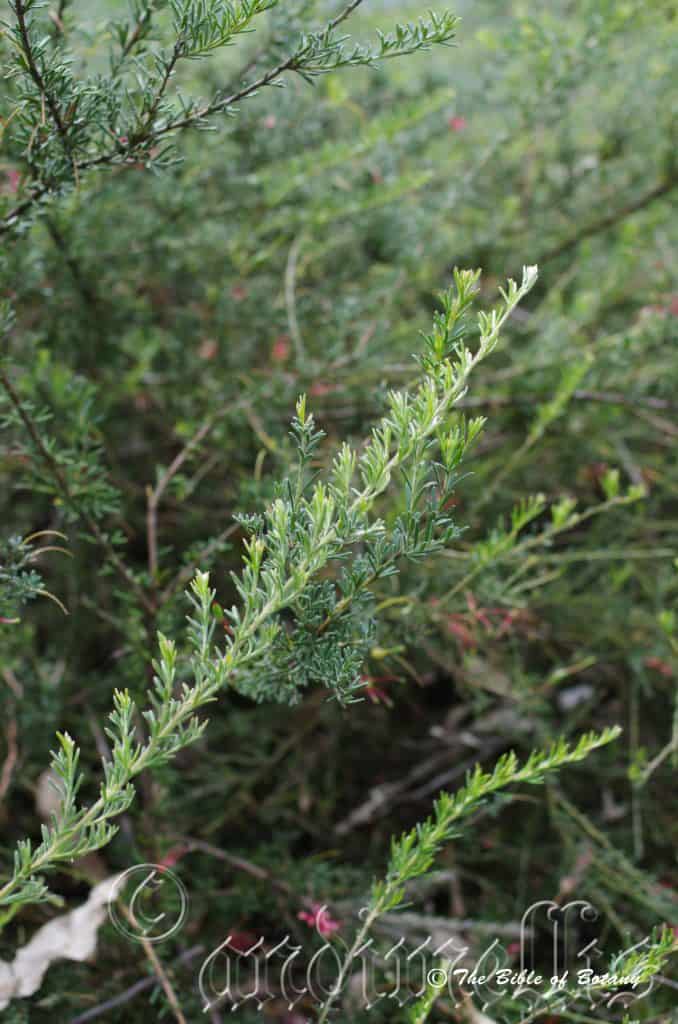
Mount Cootha Botanical Gardens Qld.
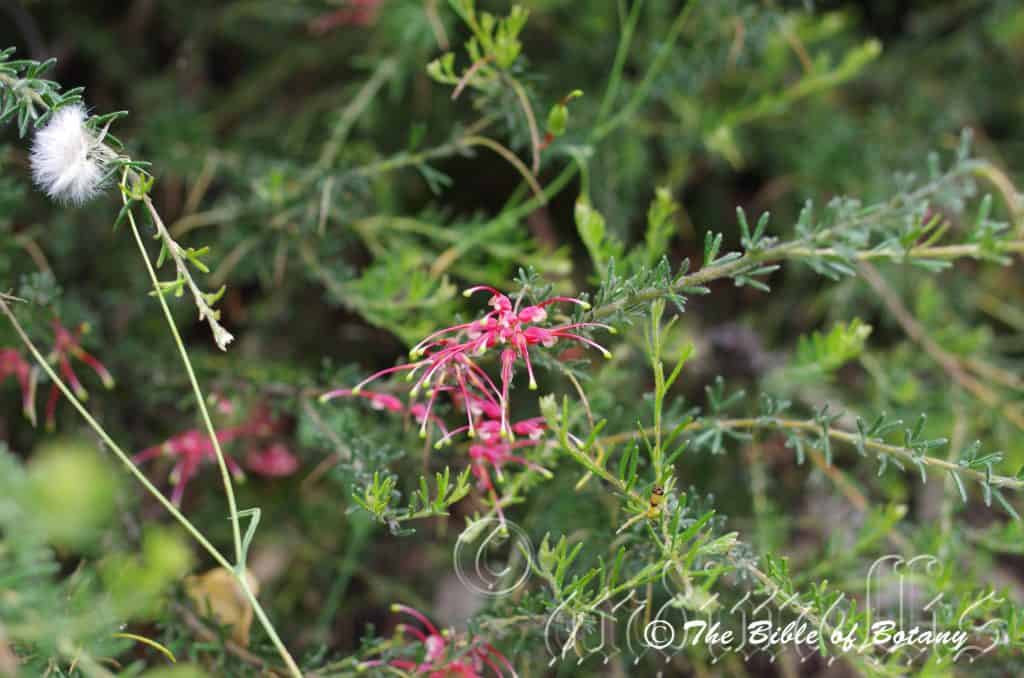
Mount Cootha Botanical Gardens Qld.
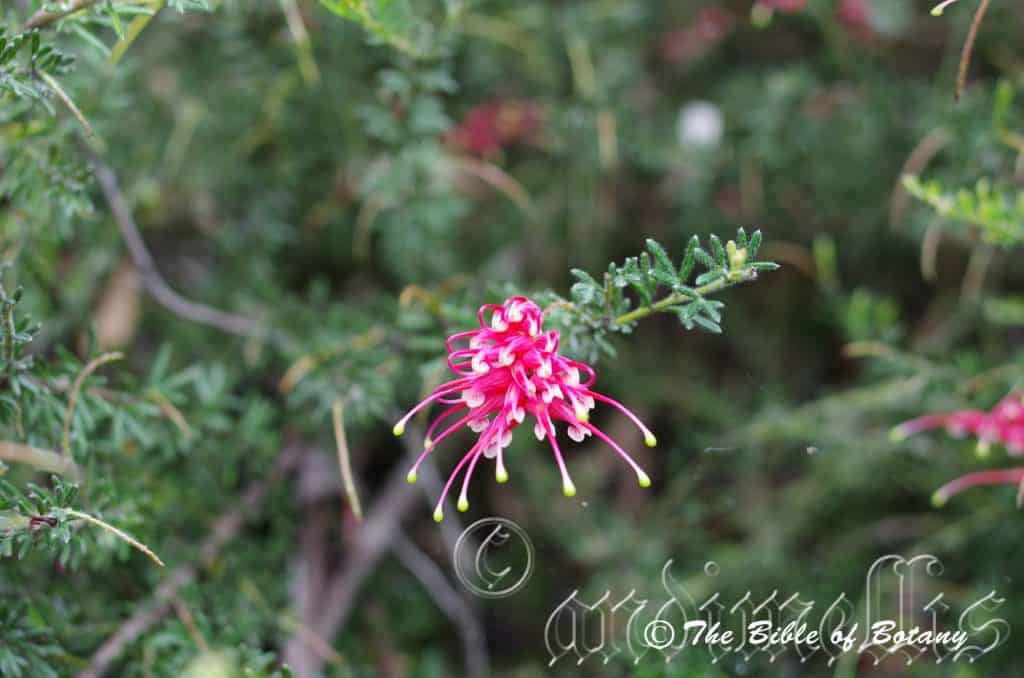
Mount Cootha Botanical Gardens Qld.
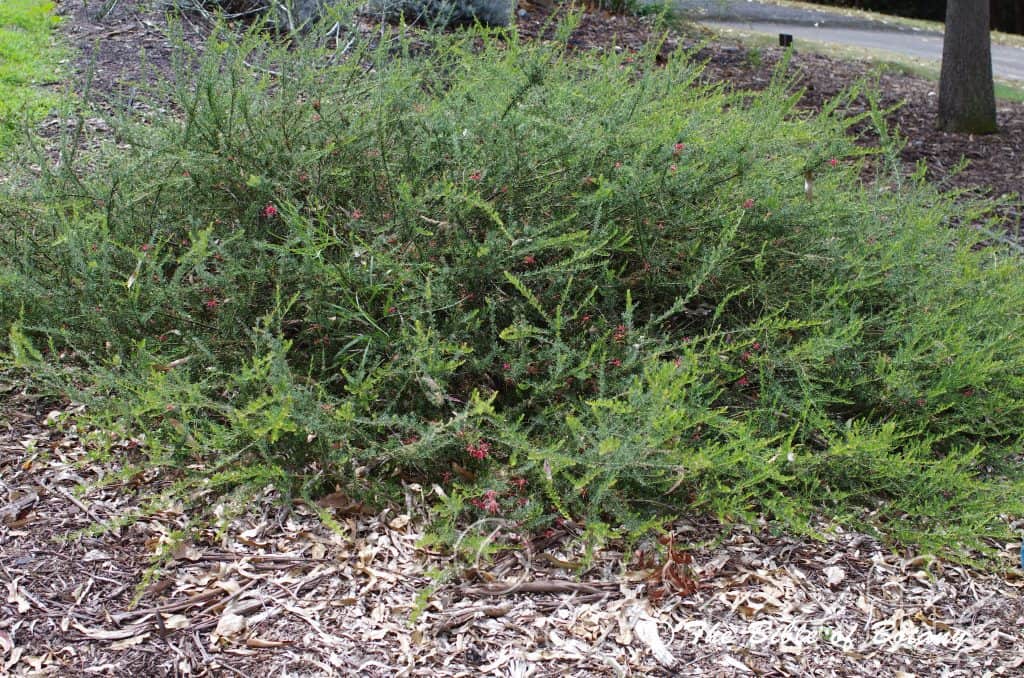
Mount Cootha Botanical Gardens Qld.
Grevillea hirtella
Classification
Class: Magnoliopsida
Order: Proteales
Family: Proteaceae
Genus: Is named in honour of C. F. Greville; 1749-1809, who was a British expert botanist on Algae, a foundation member of the London Horticultural Society and a collector of rare plants.
Species: From Hirsutus, which is Latin for a hairy and shaggy. It refers to structures or organs, which are covered in short, bristly, coarse shaggy hairs.
Sub Species:
Common Name: Red Spider Flower.
Distribution:
Grevillea hirtella is restricted to a small area in coastal Western Australia from Geraldton to Yalgool.
https://avh.ala.org.au/occurrences/search?taxa=Grevillea+hirtella#tab_mapView
Habitat Aspect Climate:
Grevillea hirtella prefer full sun to dappled shade. It grows on plains or flats in open woodlands, mallee scrubs or in dry heaths. The altitude ranges from 5 meters ASL to 120 meters ASL.
The temperatures range from 6 degrees in August to 40 degrees in February.
The rainfalls range from lows of 150mm to an average 500mm annually.
Soil Requirements:
Grevillea hirtella prefers poorer red or brown skeletal sandy loams over laterites, rocky terrains with skeletal sandy loams or course gravelly loams. The soils are usually derived from partially decomposed sandstones, metamorphic rocks, black basalts or brown basalts. The soils pH ranges from 5pH to 7pH are preferred. It does not tolerate waterlogged soils. Non saline soils to moderately saline soils are tolerated.
Height & Spread:
Wild Plants: 0.3m to 1m by 1m to 1.5m.
Characteristics:
The terete stems are pale pinkish-grey and slightly scabrous and flaky. The branchlets are pale grey-green and sparsely to densely covered in white to pale grey villous to pulverulent hairs.
The alternate leaves are linear, bifid or trifid, crowded at the apexes and measure 6mm to 20mm in length by 4 to 12mm in width over all. The lobes measure 2mm to 8mm in length by 0.5mm to 3mm in width. The leaves are sessile. The bases are cuneate while the apexes are obtuse with a small mucronate tip. The concolourous laminas are pale grey-green and sparsely covered in pale grey to white villous hairs on the upper laminas while the lower laminas are covered in villous hairs in the grooves. The margins are entire and revolute. The mid vein is slightly prominent on the lower lamina and is visible on the upper lamina.
The inflorescence is a short secund born terminally or from the leaf axils. The racemes have 10 to 16 individual flowers and are sparsely to densely covered in pale grey sub sericeous to sub tomentose hairs or very sparsely covered in long hirsute hairs. The rachises measure 5mm to 13mm in length while the pedicels measure 2.5mm to 4mm in length. The perianth and style are the most prominent parts of the flower.
The individual perianths are pale pink to deep pinks or scarlet-red at the base turning white or pastel pink at the lobes. The perianths are glabrous or very sparsely covered in white appressed hirsute hairs externally and covered in white tomentose or pulverulent hairs internally. The perianths measure 3mm to 5mm in length while the lobes measure 17mm to 20mm in length. The lobes are strongly recurved and are free at their apexes.
The style is deep pink to red at the base turning pale pink or white as it approaches the lime-green, globose stigma. The lateral pollen presenter is pale yellow-green. The pistils measure 20mm to 25mm in length. The style is glabrous and curves slightly as it approaches the stigma. The stipitate ovary is glabrous. The flowers appear from August to November.
The fruits are ellipsoidal or ovoidal follicles. The style is persistent on the ripe follicles. The pale lime green follicles turn grey-brown with a faint irregular slanting ridge or bulge just above the base and a longitudinal sub dorsal ridge on either side when ripe. It is heavily wrinkled and glabrous. The follicles measure 12mm to 13mm by 5mm to 6.5mm wide.
Wildlife:
The nectar filled flowers are a great attraction for small and medium size nectar eating birds, butterflies and native flies.
Cultivation:
Grevillea hirtella is an unusual foliaged small tree for a Grevillea. It would suit most small gardens in semi-arid and subtropical zones. It is a very reliable and prolific bloomer. As garden subjects it will grow from 300mm to 700mm in height by 1 meter to 1.5 meters in diameter when cultivated in the open. It is fast growing, drought tolerant cold tolerant to at least minus 2 degrees. Plants are growing well in Brisbane’s botanic gardens.
It is most suitable for use around swimming pools, sunny courtyards, besides pathways or driveways, rockeries, along sandy banks and for along drive-ways. In Native gardens they can be used for attracting smaller honeyeaters, butterflies, native bees and native flies.
It is an ideal planted in small rockeries amongst boulders and logs especially when trimmed and trained to surround such items. Mass plant them (2 to 6) in the foreground with medium and larger plants behind. Plants with broad green leaves with white yellow or pale orange flowers can be used in the midground while large flowering specie can be placed in the background. This will lead your eyes down and over to the background. Whether it is in flower or not these plants will catch your attention and the viewer will be transfixed on the display rather than watching the path.
Propagation:
Seeds: Sow the seeds directly into a seed raising mix. Cover them with 5mm of fine sand and keep moist not wet. Place the tray in a warm sunny position. When the seedlings are 25mm to 50mm tall, prick them out and plant them into 50mm native tubes using a good organic mix.
Once the seedlings reach 150mm to 200mm in height, nip the tips out before planting them out into their permanent position. For mass plantings plant them out at 0.5 meter to 2 meter centers depending on the sub specie or whether it is used as a hedge, barrier or feature shrub.
Fertilize using Seaweed, fish emulsion or a half strength solution of organic chicken pellets soaked in water on an alternate basis. Fertilize every 3 months until the plants are well established then annually to assist in prolific blooming and healthy growth. Avoid synthetic fertilizers as they may contain high levels of phosphorus and calcium which are toxic to most members of the Proteaceae family.
Cuttings: Use 70mm to 100mm long half ripened material when growing from cuttings from the present season’s growth. Take them in mid-autumn or early spring. Remove half the leaves from the bottom section being careful not to tear the bark.
1 Prepare the cutting mix by adding one third sharp clean river sand, one third peat and one third perlite. These ingredients are sterilize,
2 Select good material from non diseased plants,
3 Select semi green stems for cuttings. Look for a stem with two or three nodes,
4 Place the cutting on a flat, hard surface, and make a clean cut down one side of the cutting at the base for 10mm with a sharp sterile knife or razor blade. – This scarification of the node will increase the chances of roots emerging from this spot. Now remove all but one or two the leaves, leaving the apex leaves in tact. If the leaves are very large in proportion to the stem, cut off the apical halves.
5 Fill a saucer with water, and place a little medium strength rooting hormone into another container like a milk bottle top. Dip the node end of the cutting into the water and then into the rooting hormone. Tap off any excess hormone,
6 Use a small dipple stick or old pencil to poke a hole into the soilless potting mix. Ensure the hole is slightly larger than the stem diameter and be careful not to wipe the rooting hormone off the cuttings base, place the cuttings in a pattern ensuring the cuttings are not touching each other,
7 I like to place the pots in Plastic bags to help maintain temperature and moisture. Place in a semi shaded place like under 50mm shade cloth.
8 When the cuttings have struck, open the bag to allow air circulation for a few days to a week,
9 Once hardened off remove the cuttings from the bag and allow to further hardening for a few more days,
10 Transplant into a good potting mix to grow on.
Fertilize using seaweed, fish emulsion or organic chicken pellets soaked in water on an alternate basis. Fertilize every two months until the plants are established then twice annually in early September or March to maintain health, vitality and better flowering. Avoid synthetic fertilizers as they will most likely contain calcium and phosphorus at levels, which are toxic to most Proteaceae.
Further Comments from Readers:
Hi reader, it seems you use The Bible of Botany a lot. That’s great as we have great pleasure in bringing it to you! It’s a little awkward for us to ask, but our first aim is to purchase land approximately 1,600 hectares to link several parcels of N.P. into one at The Pinnacles NSW Australia, but we need your help. We’re not salespeople. We’re amature botanists who have dedicated over 30 years to saving the environment in a practical way. We depend on donations to reach our goal. If you donate just $5, the price of your coffee this Sunday, We can help to keep the planet alive in a real way and continue to bring you regular updates and features on Australian plants all in one Botanical Bible. Any support is greatly appreciated. Thank you.
In the spirit of reconciliation we acknowledge the Bundjalung, Gumbaynggirr and Yaegl and all aboriginal nations throughout Australia and their connections to land, sea and community. We pay our respect to their Elders past, present and future for the pleasures we have gained.
Grevillea hookeriana
Classification
Class: Magnoliopsida
Order: Proteales
Family: Proteaceae
Genus: Is named in honour of C. F. Greville; 1749-1809, who was a British expert botanist on Algae, a foundation member of the London Horticultural Society and a collector of rare plants.
Species: Is named in honour of Joseph Dalton Hooker; 1817-1911, who was one of the greatest British botanists and explorers of all times.
Sub Specie: Grevillea hookeriana subsp. apiciloba. From Apical, which is Latin for at the summit, top, at the apex or at the highest or furthest point and Lobos, which is Ancient Greek for an ear lobe. It refers to the lobes on the leaves, which have slightly pungent apexes.
Sub Specie: Grevillea hookeriana subsp. digitata. From Digitatus, which is Latin for a finger. It refers to the flower spikes or leaves spreading out like fingers on a hand.
Sub Specie: Grevillea hookeriana subsp. hookeriana. Is named in honour of Joseph Dalton Hooker; 1817-1911, who was one of the greatest British botanists and explorers of all times.
Common Name:
Distribution:
Grevillea hookeriana subsp. hookeriana is endemic to Western Australia, occurring in a large area in the south west corner. It is found east from the Swan River Plains to the Gold fields of Coolgardie and Kalgoorlie in the east and north to Geraldton and south to Esperance.
Grevillea hookeriana subsp. apiciloba is endemic to Western Australia, occurring in a large area in the south west corner. It is found east from the Swan River Plains to the Gold fields of Coolgardie and Kalgoorlie in the east and north to Geraldton and south to Esperance.
Grevillea hookeriana subsp. digitate is endemic to Western Australia, occurring in a large area in the south west corner. It is found east from the Swan River Plains to the Gold fields of Coolgardie and Kalgoorlie in the east and north to Geraldton and south to Esperance.
https://avh.ala.org.au/occurrences/search?taxa=Grevillea+hookeriana#tab_mapView
Habitat Aspect Climate:
Grevillea hookeriana prefers full sun. It grows coastal sclerophyll woodlands, open Eucalyptus forests or mallee scrubs mainly on flat plains. The altitude ranges from 50 meters ASL to 650 meters ASL.
The temperatures range from 1 degrees in July to 39 degrees in January.
The rainfalls range from lows of 150mm to an average of 830mm annually.
Soil Requirements:
Grevillea hookeriana prefers light fatty clays to medium clays embedded with lateritic gravels, stone to large rocks. The soils are usually derived from partially decomposed or decomposed sandstones or lateritic sandstones. The soils pH ranges from 5pH to 7pH are preferred. It does not tolerate waterlogged soils. Non saline soils to moderately saline soils are tolerated.
Height & Spread:
Wild Plants: 1.5m to 5m by 1m to 3m.
Characteristics:
Grevillea hookeriana‘s bark is a rusty grey brown, glabrous and semi glossy on the main stems or small trunk. The trunk becomes slightly furrowed on old plants. The branchlets are greenish brown to pinkish brown or fawn, slightly rough and sparsely to moderately covered in white to pale grey, sericeous or pubescent hairs near the apex.
Grevillea hookeriana is an erect shrub with erect simple finely divided leaves. Grevillea hookeriana sub sp. hookeriana leaves are simple or divided. The simple leaves are linear while the tripartite divided leaves have 3 to 9 linear lobes evenly spaced along the rachis. They measure 30mm to 90mm in length by 1mm to 2.5mm in width. The margins are revolute and form a groove along the mid vein of each lobe.
Grevillea hookeriana sub sp. apiciloba leaves are divided. The simple linear lobes are crowded closer to the apical of the rachis. They measure 35mm to 90mm in length by 1mm to 2mm in width. The margins are revolute and form a groove along the mid vein of each lobe. The apex of the lobes are acute.
Grevillea hookeriana subsp. digitata leaves are simple or divided. The simple linear lobes are crowded closer to the apical of the rachis. They measure 10mm to 20mm in length by 1mm to 2mm in width. The margins are revolute and form a groove along the mid vein of each lobe. The apex of the lobes is tapered.
The inflorescence of Grevillea hookeriana are a second born on the terminal or on special side shoots. The rachis measure 40mm to 50mm in length by 15mm to 20mm in width when fully extended. The perianth and style are the most prominent part of the flower. It is usually open as a green, yellow or pink before turning the final brick red with a creamy yellow limb. The perianths and style are glossy or on rare very occasions dull. The lobes are free and joined at their apexes. Individual perianths measure 8mm to 10mm in length and are very irregular.
The styles are yellow, red, and ochre or on rare occasions black. The oblique pollen presenter is pale yellow, lemon yellow, green or black. The style and ovary measure 18mm to 20mm in length. The lateral style is glabrous and curves slightly as it approaches the stigma. The ovary is also glabrous. The 4 stamens are stipitate and measure 3mm to 4mm in length. The perianth’s pedicels measure 1mm to 2mm in length. The flowers appear from August to November.
Grevillea hookeriana subsp. apiciloba‘s flowers are partly enclosed within the foliage.
Grevillea hookeriana subsp. digitata‘s flowers are not enclosed by the foliage.
Grevillea hookeriana fruits are an oblong to ellipsoidal follicle. The follicles are produced singularly radiating out from the central rachis. It is 12mm to 14mm long. The follicles are covered in short glandular hairs as the fruits ripen and are viscid. It is a deep brown and glossy internally. The style is persistent on the follicle.
Wildlife:
The dense foliage and proliferation of small flowers in late winter makes them a great attraction and safe haven for smaller honeyeaters.
Cultivation:
Grevillea hookeriana is a fast growing small Grevillea which should be more widely grown as a hedge or windbreak. It suits small to large gardens where it is good shrubs for starting a garden because of its rapid growth long flowering period and drought resistance even from an early age. In Native gardens it can be used for bird attraction as it attracts a lot of small nectar feeding birds. It is short lived and should be replanted after 5 years to ensure vigor in the garden and uninterrupted flowering.
Propagation:
Seeds: Sow the seeds of Grevillea hookeriana directly into a seed raising mix. Cover them with 5mm of fine sand and keep moist not wet. Place the tray in a warm sunny position. When the seedlings are 25mm to 50mm tall, prick them out and plant them into 50mm native tubes using a good organic mix.
Once the seedlings reach 150mm to 200mm in height, nip the tips out before planting them out into their permanent position. For mass plantings plant them out at 0.5 meter to 2 meter centers depending on the sub specie or whether it is used as a hedge, barrier or feature shrub.
Fertilize using Seaweed, fish emulsion or a half strength solution of organic chicken pellets soaked in water on an alternate basis. Fertilize every 3 months until the plants are well established then annually to assist in prolific blooming and healthy growth. Avoid synthetic fertilizers as they may contain high levels of phosphorus and calcium which are toxic to most members of the Proteaceae family.
Cuttings: Use 70mm to 100mm long half ripened material when growing from cuttings from the present season’s growth. Take them in mid-autumn or early spring. Remove half the leaves from the bottom section being careful not to tear the bark.
1 Prepare the cutting mix by adding one third sharp clean river sand, one third peat and one third perlite. These ingredients are sterilize,
2 Select good material from non diseased plants,
3 Select semi green stems for cuttings. Look for a stem with two or three nodes,
4 Place the cutting on a flat, hard surface, and make a clean cut down one side of the cutting at the base for 10mm with a sharp sterile knife or razor blade. – This scarification of the node will increase the chances of roots emerging from this spot. Now remove all but one or two the leaves, leaving the apex leaves in tact. If the leaves are very large in proportion to the stem, cut off the apical halves.
5 Fill a saucer with water, and place a little medium strength rooting hormone into another container like a milk bottle top. Dip the node end of the cutting into the water and then into the rooting hormone. Tap off any excess hormone,
6 Use a small dipple stick or old pencil to poke a hole into the soilless potting mix. Ensure the hole is slightly larger than the stem diameter and be careful not to wipe the rooting hormone off the cuttings base, place the cuttings in a pattern ensuring the cuttings are not touching each other,
7 I like to place the pots in Plastic bags to help maintain temperature and moisture. Place in a semi shaded place like under 50mm shade cloth.
8 When the cuttings have struck, open the bag to allow air circulation for a few days to a week,
9 Once hardened off remove the cuttings from the bag and allow to further hardening for a few more days,
10 Transplant into a good potting mix to grow on.
Fertilize using seaweed, fish emulsion or organic chicken pellets soaked in water on an alternate basis. Fertilize every two months until the plants are established then twice annually in early September or March to maintain health, vitality and better flowering. Avoid synthetic fertilizers as they will most likely contain calcium and phosphrous at levels, which are toxic to most Proteaceae.
Further Comments from Readers:
Hi reader, it seems you use The Bible of Botany a lot. That’s great as we have great pleasure in bringing it to you! It’s a little awkward for us to ask, but our first aim is to purchase land approximately 1,600 hectares to link several parcels of N.P. into one at The Pinnacles NSW Australia, but we need your help. We’re not salespeople. We’re amature botanists who have dedicated over 30 years to saving the environment in a practical way. We depend on donations to reach our goal. If you donate just $5, the price of your coffee this Sunday, We can help to keep the planet alive in a real way and continue to bring you regular updates and features on Australian plants all in one Botanical Bible. Any support is greatly appreciated. Thank you.
In the spirit of reconciliation we acknowledge the Bundjalung, Gumbaynggirr and Yaegl and all aboriginal nations throughout Australia and their connections to land, sea and community. We pay our respect to their Elders past, present and future for the pleasures we have gained.
Grevillea humifusa
Classification
Class: Magnoliopsida
Order: Proteales
Family: Proteaceae
Genus: Is named in honour of C. F. Greville; 1749-1809, who was a British expert botanist on Algae, a foundation member of the London Horticultural Society and a collector of rare plants.
Species: From Humifusa, which is Latin for flat on the ground or spreading out over the ground. It refers to plants, which grow or spread out flat on the ground.
Sub Species:
Common Name:
Distribution:
Grevillea humifusa is restricted to a small area in Western Australia between Cervantes and Jurien Bay.
https://avh.ala.org.au/occurrences/search?taxa=Grevillea+humifusa#tab_mapView
Habitat:
Grevillea humifusa prefer full sun to dappled shade. It grows in tall schlerophyll forests to short dry scrub forests. The altitude ranges from near sea level to 80 meters ASL.
The temperatures range from 6 degrees in August to 34 degrees in February.
The rainfall ranges from lows of 500mm to an average 800mm annually.
Soil Requirements:
Grevillea humifusa prefers sandy loams over lateritic loams to medium clays. The soils are usually derived from decomposed sandstones, metamorphic rocks, black basalts or brown basalts. The soils pH ranges from 5pH to 7pH are preferred. It does not tolerate waterlogged soils. Non saline soils to moderately saline soils are tolerated.
Height & Spread:
Wild Plants: 0.1m to 0.2m by 1m to 1.5m.
Characteristics:
The stems are pale grey to pale red-brown to red, semi glossy to glossy, glabrous. The branchlets and new growth are covered in white hirsute hairs.
The alternate leaves are simple dissected or bipinnatisect and measure 10mm to 20mm in length by 7mm to 15mm in width over all. The linear lobes measure 5mm to 10mm in length by 0.5mm to 0.8mm in width. The leaves are sessile. The apexes are tapering to narrow acute. The concolourous laminas are pale blue-green to pale grey-green and are densely covered in white hirsute hairs. The mid vein is prominent on the lower lamina and is not visible on the upper lamina. The margins are entire and strongly revolute to the mid vein.
The inflorescence is an erect short raceme born terminally. The racemes have 8 to 20 flowers and measure 40mm to 50mm in length. The perianth and style are the most prominent parts of the flower. The individual perianths are variable from scarlet red to mid pink from the base through to the irregular lobes. The perianth is glabrous both externally and internally. The perianth and lobes measure 6mm to 8mm in length. The lobes are strongly recurved and are free and joined at their apex. The perianth’s pedicels measure 2mm to 4mm in length.
The style is scarlet red, orange to mid pink from the base through to the stigma. The oblique pollen presenter and the style apex are both pale yellow-green to pale dull green. The style and ovary measure 20mm to 25mm in length. The erect style and ovary are glabrous. The flowers appear from July to October.
The fruit is an oblong follicle. The style is persistent. The follicles are glabrous, green with scarlet red markings and semi glossy. They turn rusty red with prominent ridges as they ripen. The follicles measure 10mm to 12mm in length by 5mm to 6mm in width. The brown oval seeds measure 8mm to 10mm in length by 3mm to 4mm diameter.
Wildlife:
The flowers are a great attraction for small and medium size nectar eating birds, butterflies and native flies.
Cultivation:
Grevillea humifusa is an unusual foliaged prostrate plant for small gardens. It would suit most small gardens in semi-arid, temperate and subtropical zones. It is a very reliable and prolific bloomer which has the advantage of a second display of scarlet red seed follicles about 6 weeks after flowering. As garden subjects it will grow from 80mm to 120mm in height by 1 meter to 1.6 meters in diameter when cultivated in the open. It is fast growing, drought and cold tolerant down to at least minus 2 degrees. Tip pruning will assist in maintaining a dense coverage on the ground.
It is most suitable for use around swimming pools, sunny courtyards, besides pathways, rockeries, along sandy banks and for along drive ways. It is too small to be placed in a bush setting and will be lost amongst the other natives unless mass planted.
Because it is best in formal gardens it can be used as the fill in plants or as the main feature plant beside water features, boulders or other formal ornaments to give them height and boldness. Imagine a small pond made with cream coloured rocks, with fish swimming. Now add the soft grey foliage and red flowers of Grevillea humifusa.
Beside a cascade there are two or three Grevillea humifusa, and above them the water cascading down over small rocks. This is very powerful yet formal and relaxing. You can interplant with other fine green leaf plants to add to the already strong contrast. Partially surrounding the cascade or other feature the scene is completely different when viewed from different angles yet it still looks very effective. Use them in small groups with larger rocks or in front of a large log but beware do not over plant the area or it will look too congested and cluttered. The large log gives a strong horizontal affect with depth if placed on an angle. Right along the front plant the Hybanthus specie. It can be a mixture of the purple flowered Hybanthus monopetalus with one of the yellow or orange flowering forms. The vertical stems and linear leaves will create a longer looking log that has a greater diameter. The plants will dainty yet display a very relaxing and thought provoking scene.
Propagation:
Seeds: Sow the seeds directly into a seed raising mix. Cover them with 5mm of fine sand and keep moist not wet. Place the tray in a warm sunny position. When the seedlings are 25mm to 50mm tall, prick them out and plant them into 50mm native tubes using a good organic mix.
Once the seedlings reach 150mm to 200mm in height, nip the tips out before planting them out into their permanent position. For mass plantings plant them out at 0.5 meter to 2 meter centers depending on the sub specie or whether it is used as a hedge, barrier or feature shrub.
Fertilize using Seaweed, fish emulsion or a half strength solution of organic chicken pellets soaked in water on an alternate basis. Fertilize every 3 months until the plants are well established then annually to assist in prolific blooming and healthy growth. Avoid synthetic fertilizers as they may contain high levels of phosphorus and calcium which are toxic to most members of the Proteaceae family.
Cuttings: Use 70mm to 100mm long half ripened material when growing from cuttings from the present season’s growth. Take them in mid-autumn or early spring. Remove half the leaves from the bottom section being careful not to tear the bark.
1 Prepare the cutting mix by adding one third sharp clean river sand, one third peat and one third perlite. These ingredients are sterilize,
2 Select good material from non diseased plants,
3 Select semi green stems for cuttings. Look for a stem with two or three nodes,
4 Place the cutting on a flat, hard surface, and make a clean cut down one side of the cutting at the base for 10mm with a sharp sterile knife or razor blade. – This scarification of the node will increase the chances of roots emerging from this spot. Now remove all but one or two the leaves, leaving the apex leaves in tact. If the leaves are very large in proportion to the stem, cut off the apical halves.
5 Fill a saucer with water, and place a little medium strength rooting hormone into another container like a milk bottle top. Dip the node end of the cutting into the water and then into the rooting hormone. Tap off any excess hormone,
6 Use a small dipple stick or old pencil to poke a hole into the soilless potting mix. Ensure the hole is slightly larger than the stem diameter and be careful not to wipe the rooting hormone off the cuttings base, place the cuttings in a pattern ensuring the cuttings are not touching each other,
7 I like to place the pots in Plastic bags to help maintain temperature and moisture. Place in a semi shaded place like under 50mm shade cloth.
8 When the cuttings have struck, open the bag to allow air circulation for a few days to a week,
9 Once hardened off remove the cuttings from the bag and allow to further hardening for a few more days,
10 Transplant into a good potting mix to grow on.
Fertilize using seaweed, fish emulsion or organic chicken pellets soaked in water on an alternate basis. Fertilize every two months until the plants are established then twice annually in early September or March to maintain health, vitality and better flowering. Avoid synthetic fertilizers as they will most likely contain calcium and phosphorus at levels, which are toxic to most Proteaceae.
Further Comments from Readers:
Hi reader, it seems you use The Bible of Botany a lot. That’s great as we have great pleasure in bringing it to you! It’s a little awkward for us to ask, but our first aim is to purchase land approximately 1,600 hectares to link several parcels of N.P. into one at The Pinnacles NSW Australia, but we need your help. We’re not salespeople. We’re amature botanists who have dedicated over 30 years to saving the environment in a practical way. We depend on donations to reach our goal. If you donate just $5, the price of your coffee this Sunday, We can help to keep the planet alive in a real way and continue to bring you regular updates and features on Australian plants all in one Botanical Bible. Any support is greatly appreciated. Thank you.
In the spirit of reconciliation we acknowledge the Bundjalung, Gumbaynggirr and Yaegl and all aboriginal nations throughout Australia and their connections to land, sea and community. We pay our respect to their Elders past, present and future for the pleasures we have gained.
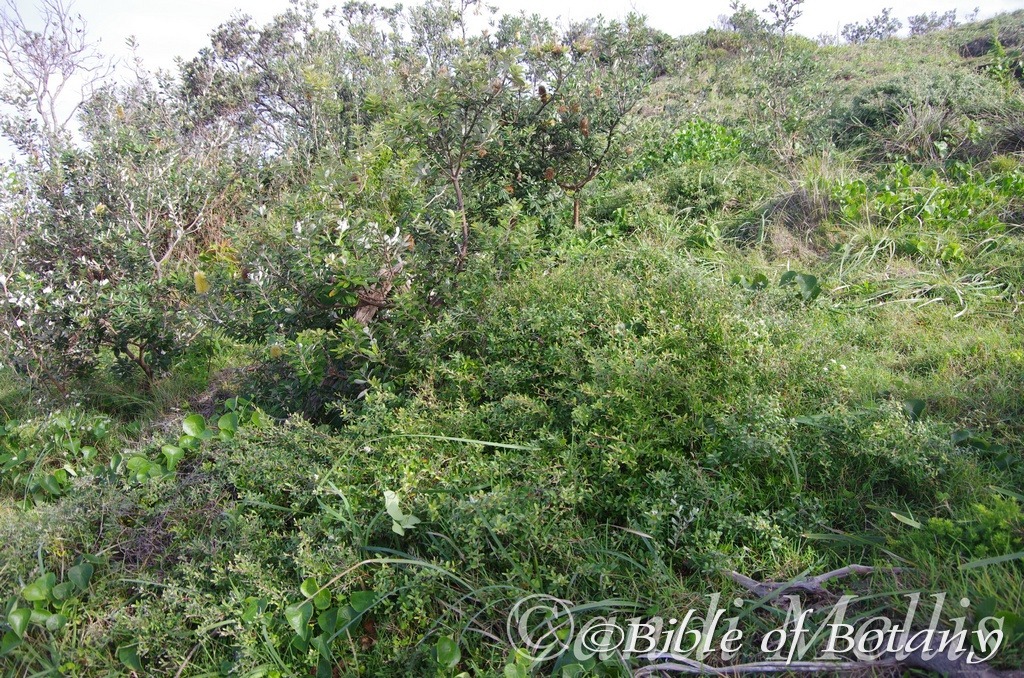
North Yuraygir National Park NSW
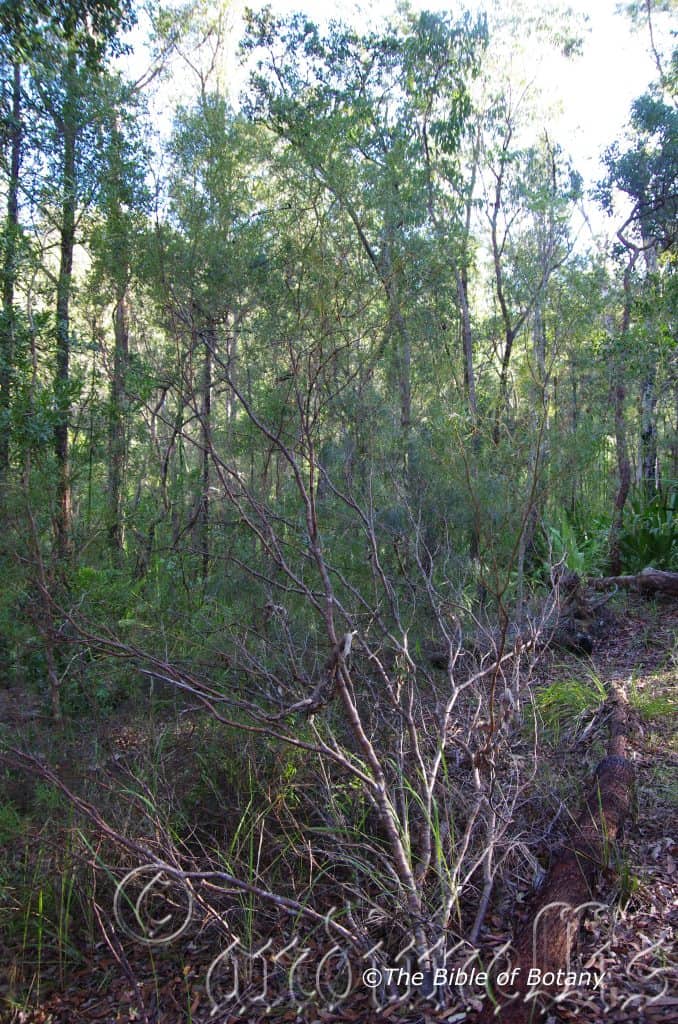
NCBG Coffs Harbour NSW
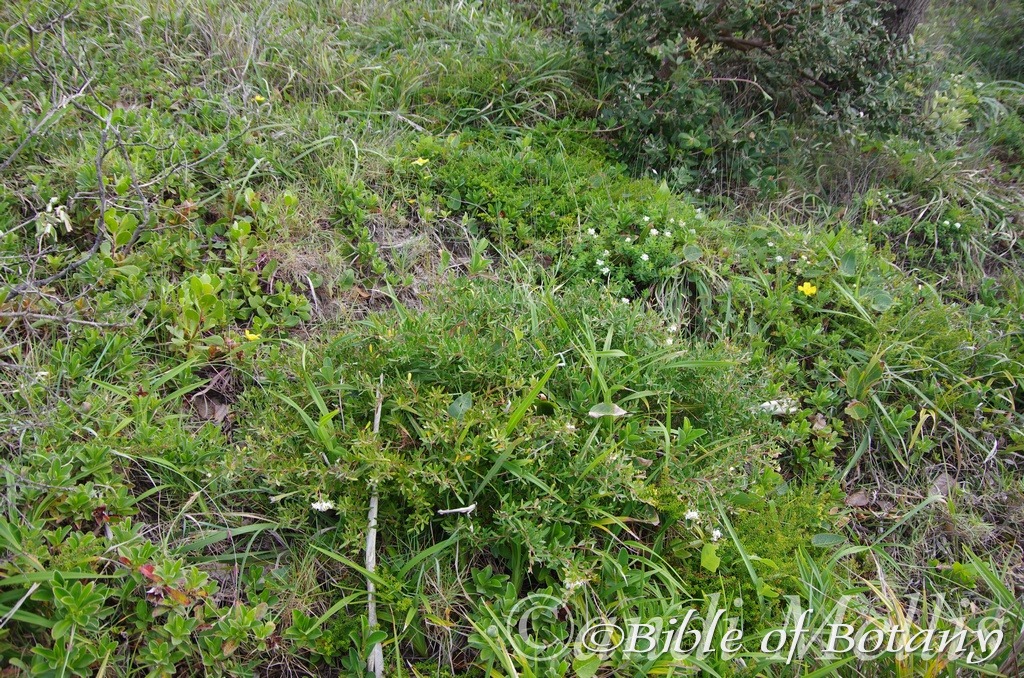
North Yuraygir National Park NSW
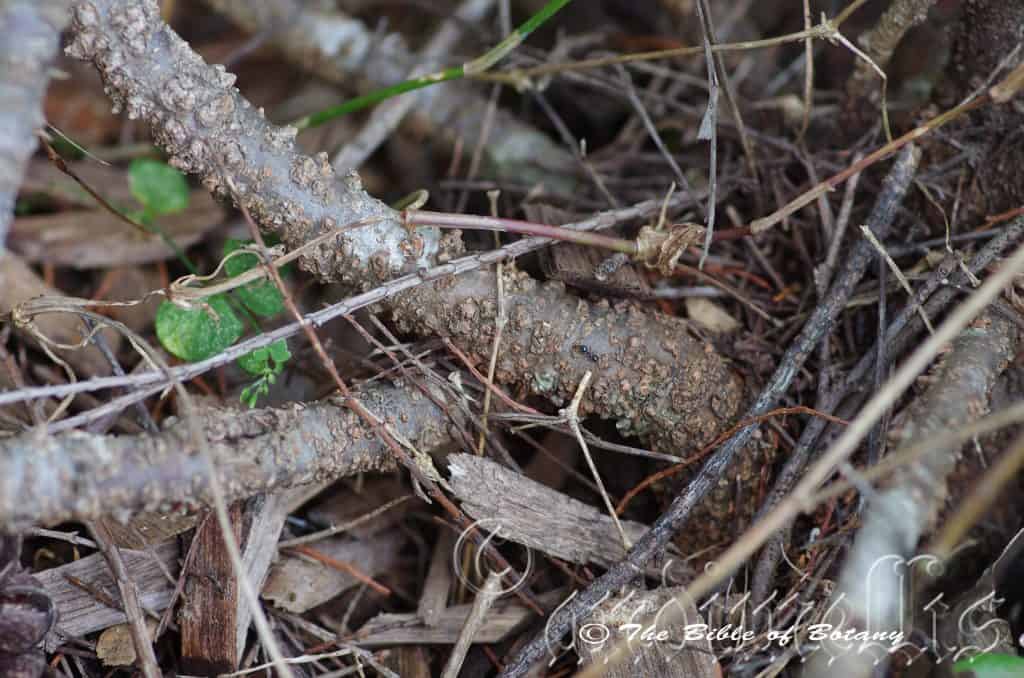
NCBG Coffs Harbour NSW
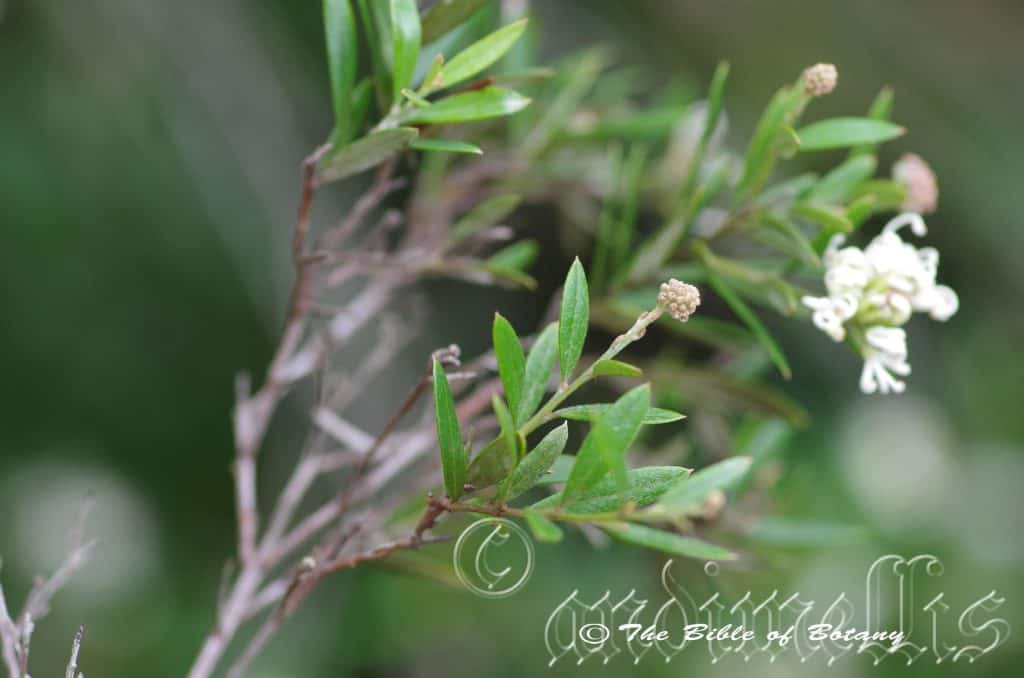
NCBG Coffs Harbour NSW
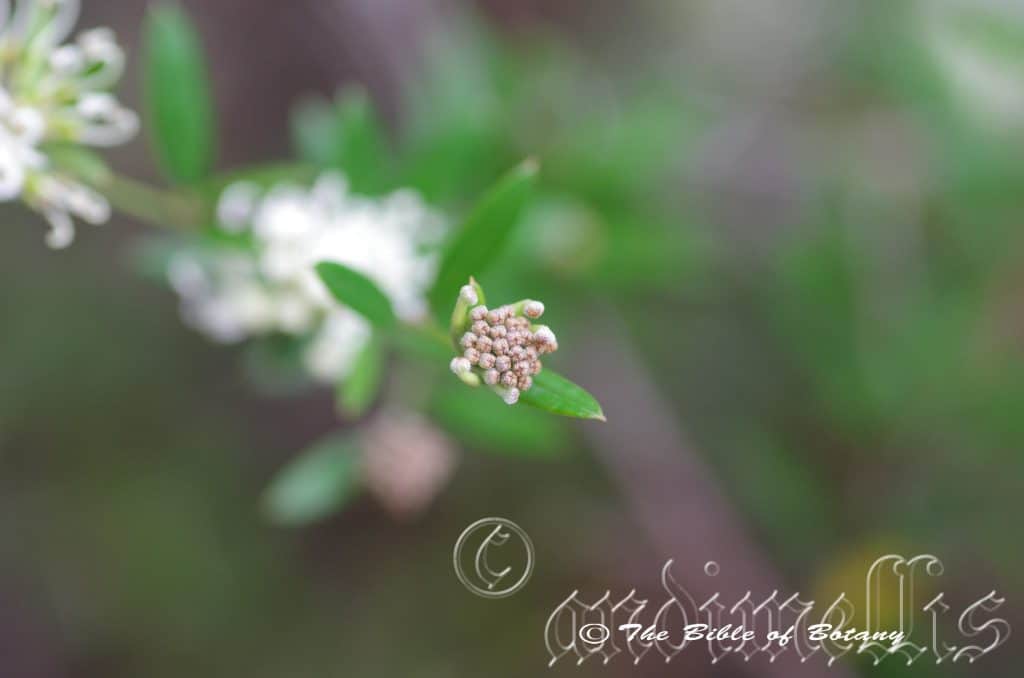
NCBG Coffs Harbour NSW
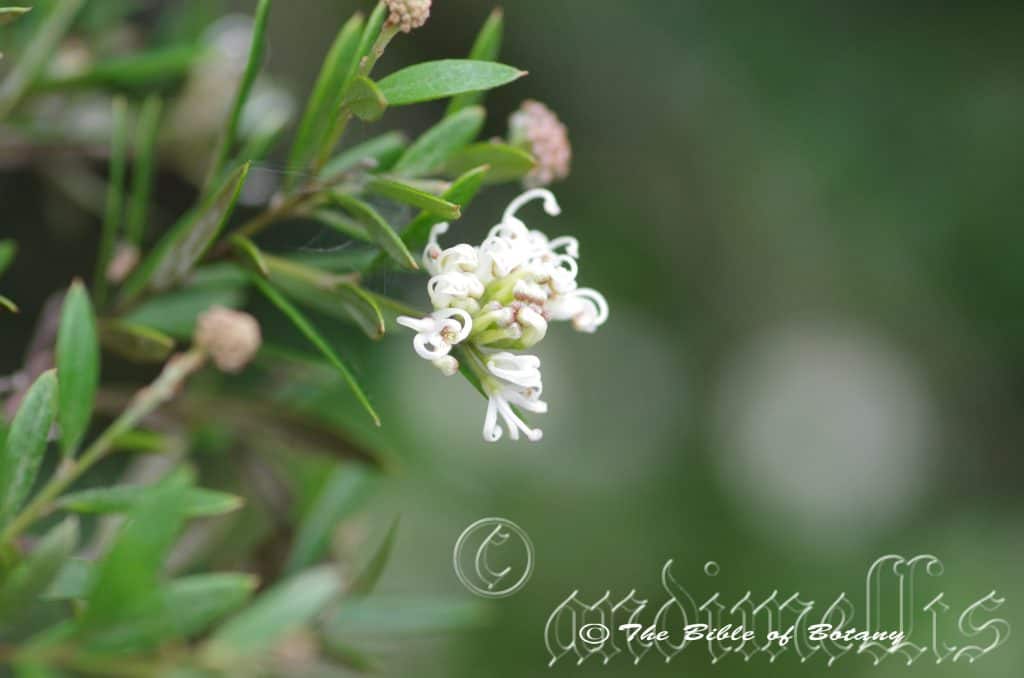
NCBG Coffs Harbour NSW
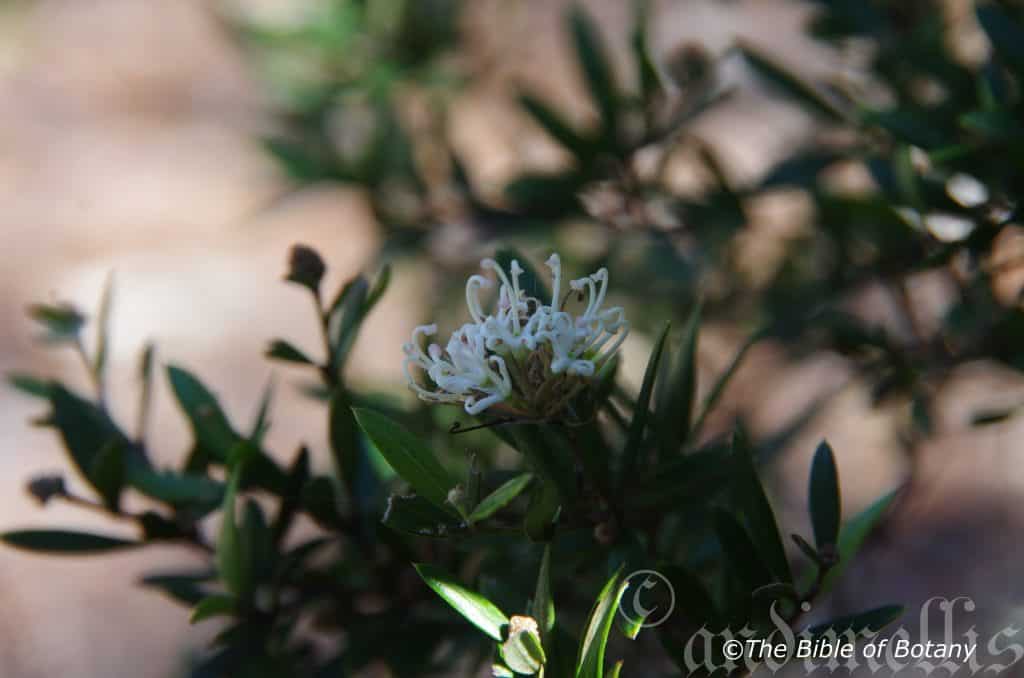
NCBG Coffs Harbour NSW
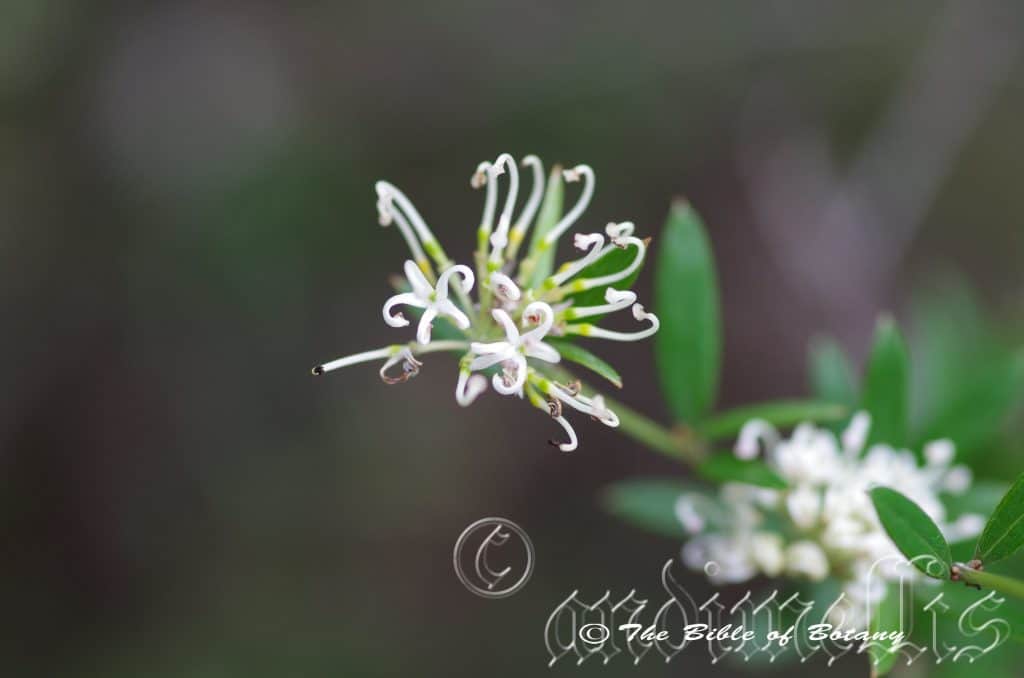
NCBG Coffs Harbour NSW
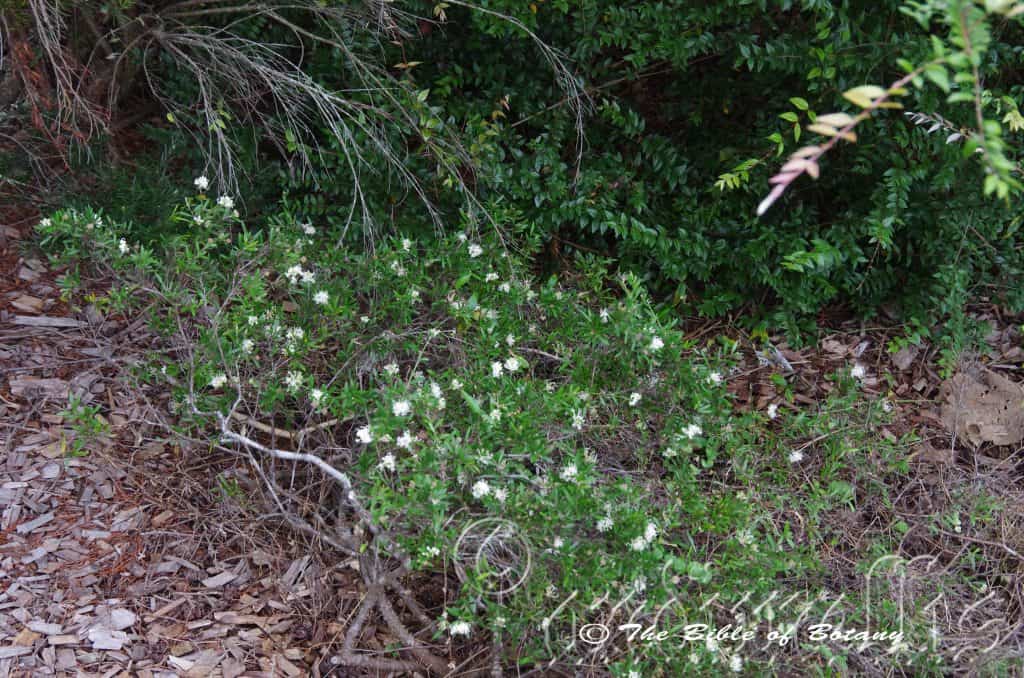
NCBG Coffs Harbour NSW
Grevillea humilis
Classification:
Class: Magnoliopsida
Order: Proteales
Family: Proteaceae
Genus: Is named in honour of C. F. Greville; 1749-1809, who was a British expert botanist on Algae, a foundation member of the London Horticultural Society and a collector of rare plants.
Species: From Humilius, which is Latin for to be humble or the lowest. It refers to plants, which are low growing or do not gain attention.
Sub Species: Grevillea humilis subsp. humilis. From Humilius, which is Latin for to be humble or the lowest. It refers to plants, which are low growing or do not gain attention.
Sub Species: Grevillea humilis subsp. lucens. From Lucen, which is Latin for to shine. It refers to leaves, which are more glossy than the other subspecies in the genus.
Sub Species: Grevillea humilis subsp. maritina. From Maritina, which is Latin for belonging to the sea. It refers to plants, which grow close to the ocean, often behind the frontal dunes.
Common Name:
Distribution:
Grevillea humilis is found south from the Glass House Mountains in southern coastal Queensland to Wollongong in central coastal New South Wales.
Grevillea humilis subsp. humilis is found west of Taree south to west of Wisemans Ferry on the Great Dividing Range.
Grevillea humilis subsp. lucens is found in two disjunct populations between Caloundra and Caboolture and Lismore and Grafton east of the Great Dividing Range.
Grevillea humilis subsp. maritina is found between Lismore and Grafton east of the Pacific Highway except for a disjunct population east of the Summerland Way.
https://avh.ala.org.au/occurrences/search?taxa=Grevillea+humilis#tab_mapView
Habitat Aspect Climate:
Grevillea humilis prefer full sun to dappled shade. It grows in tall sclerophyll forests. The altitude ranges from 4 meters ASL to 200 meters ASL.
The temperatures range from 6 degrees in August to 34 degrees in February.
The rainfall ranges from lows of 950mm to an average 1600mm annually.
Soil Requirements:
Grevillea humilis prefers better quality medium clays to grey podzolic soils. The soils are usually derived from black basalts, brown basalts or old alluvial deposits. The soils pH ranges from 5pH to 6pH are preferred. It does not tolerate waterlogged soils. Non saline soils to moderately saline soils are tolerated.
Height & Spread:
Wild Plants: 0.3m to 1.3m by 0.3m to 0.7m.
Characteristics:
The angulated stems are pale grey to pale red-brown to red, semi glossy to glossy, glabrous. The smallest stems are greenish-brown and very sparsely to moderately covered in white tomentose to sub sericeous hairs.
The alternate leaves are simple or in small clusters of 3. The elliptical, broad linear to narrow lanceolate leaves measure 20mm to 50mm in length by 1.5mm to 10mm in width. The petioles are sessile to 1mm in length. The bases are tapering while the apexes are acute with a short spine. The discolourous laminas are mid green to deep green and are glabrous or covered in faint punctate markings on the upper laminas while the lower laminas are paler and sparsely to densely covered in rusty-brown sub sericeous hairs. The laminas are flat while the margins are entire and recurve to revolute. The obtuse mid vein is strongly prominent on the lower lamina and is clearly visible on the upper lamina.
The acroscopic conflorescence is an erect short raceme or broad secund born terminally. The racemes have 10 to 24 individual flowers and with the peduncles are covered in rusty sericeous hairs. The peduncles measure 8mm to 10mm in length while the rachises measure 40mm to 50mm in length. The perianth and style are the most prominent parts of the flower. The individual perianths are pale pink to deep pink from the base through to the irregular lobes. The perianth is covered in white sub sericeous hairs externally and densely covered in white hirtellous hairs internally while the lobes are glabrous to sparsely covered in white tomentose hairs externally and are glabrous internally. The perianths 2mm to 4mm in length while the 4 linear lobes measure 5mm to 11mm in length at anthesis. The lobes are strongly recurved and are free. The perianth’s pedicels measure 2mm to 3mm in length.
The style is mid pink to deep pink from the base through to the broad, oblique stigma. The pistils measure 7mm to 16mmin length. The erect style is hooked close to the apex. The stipitate on the ovary measures 1mm to 1.7mm in length. The gynoecium is glabrous except for a 2mm ring of papillae or minute puberulent hairs around the style below the stigma. The flowers appear from July to October.
The fruit is an oblong follicle. The style is persistent. The follicles are glabrous, green with scarlet red markings and semi glossy. They turn rusty red with prominent ridges as they ripen. The colliculose follicles measure 8mm to 11mm in length by 5mm to 6mm in width. The brown oval seeds measure 8mm to 10mm in length by 3mm to 4mm diameter.
Differences Between the Sub specie:
Grevillea humilis subsp. humilis is a low erect or rarely spreading shrub to 1 meter in height. The branchlets are densely covered in subsericeous to tomentose except on the ridges. The hairs on branchlets and lower surface of leaves are matted and scarcely sparkle or reflective light in strong sunlight when magnified with a 10 power hand lens. The adult leaves are narrow oblong to elliptic and measure 30mm to 40mm in length by 1.8mm to 2.5mm in width. The upper laminas are glabrous. The pedicels measure 4mm to 6mmin length. The leaves are usually solitary and irregularly arranged along the stems or rarely in clusters of 3.The perianth and style are usually pink or occasionally white. The pistil measures 7mm to 10mm in length.
Grevillea humilis subsp. lucens is an erect shrub to 1.3 meters in height with ascending branchlets and sparse foliage. The smallest stems mainly glabrous. The upper laminas are glabrous or very sparsely covered in white sericeous hairs while the lower laminas are sparsely to densely covered in white sericeous hairs. The hairs on the lower laminas strongly sparkle and reflect sunlight under with a 10 power hand lens. The leaves are narrow oblong to elliptic or almost linear and measure 15mm to 40mm in length by 1.7mm to 3.5mm in width. The pedicels measure 6mm to10mm in length. The flowers perianth and style pink are pink and the gynoecium measures 9mm to16mm in length. The leaves are arranged in clusters of 3 and are alternate on the same shrub. The perianth and style are pink while the pistil measures 9mm to 16mm in length. The flowers appear from June to August.
Grevillea humilis subsp. maritina is a low straggly, erect to well-rounded small shrub to 600mm in height by 600mm in diameter with short stiff branches and dense foliage. The angulated branchlets are densely covered in subsericeous between ridges. The hairs on the smallest stems and lower surface of leaves strongly sparkle and reflect sunlight under with a 10 power hand lens. The adult leaves are narrow elliptic to narrow obovate and measure 14mm to 35mmin length by 1.5mm to 9mm in width. The leaves are alternate and arranged in clusters of 3on the same plant. The pedicels measure 5mm to 9mm in length. The perianth and style are usually white with the style reddening with age, or at times both pink. The pistil measures 7mm to 12mm in length.
Wildlife:
The flowers are a great attraction for small and medium size nectar eating birds, butterflies and native flies.
Cultivation:
Grevillea humilis is an unusual foliaged prostrate plant for small gardens. It would suit most small gardens in semi-arid, temperate and subtropical zones. It is a very reliable and prolific bloomer which has the advantage of a second display of scarlet red seed follicles about 6 weeks after flowering. As garden subjects it will grow from 80mm to 120mm in height by 1 meter to 1.6 meters in diameter when cultivated in the open. It is fast growing, drought and cold tolerant down to at least minus 2 degrees. Tip pruning will assist in maintaining a dense coverage on the ground.
It is most suitable for use around swimming pools, sunny courtyards, besides pathways, rockeries, along sandy banks and for along drive ways. It is too small to be placed in a bush setting and will be lost amongst the other natives unless mass planted.
Because it is best in formal gardens it can be used as the fill in plants or as the main feature plant beside water features, boulders or other formal ornaments to give them height and boldness. Imagine a small pond made with cream coloured rocks, with fish swimming. Now add the soft grey foliage and red flowers of Grevillea humifusa.
Beside a cascade there are two or three Grevillea humifusa, and above if the water cascading down over small rocks. This is very powerful yet formal and relaxing. Interplant with other fine green leaf plants to add to the already strong contrast. Partially surrounding the cascade or other feature the scene is completely different when viewed from different angles yet it still looks very effective. Use them in small groups with larger rocks or in front of a large log but beware do not over plant the area or it will look too congested and cluttered. The large log gives a strong horizontal affect with depth if placed on an angle. Right along the front plant the Hybanthus. It can be a mixture of the purple flowered Hybanthus monopetalus with one of the yellow or orange flowering forms. The vertical stems and linear leaves will create a longer looking log that has a greater diameter. The plants will dainty yet display a very relaxing and thought provoking scene.
Propagation:
Seeds: Sow the seeds of Grevillea humilis directly into a seed raising mix. Cover them with 5mm of fine sand and keep moist not wet. Place the tray in a warm sunny position. When the seedlings are 25mm to 50mm tall, prick them out and plant them into 50mm native tubes using a good organic mix.
Once the seedlings reach 150mm to 200mm in height, nip the tips out before planting them out into their permanent position. For mass plantings plant them out at 0.5 meter to 2 meter centers depending on the sub specie or whether it is used as a hedge, barrier or feature shrub.
Fertilize using Seaweed, fish emulsion or a half strength solution of organic chicken pellets soaked in water on an alternate basis. Fertilize every 3 months until the plants are well established then annually to assist in prolific blooming and healthy growth. Avoid synthetic fertilizers as they may contain high levels of phosphorus and calcium which are toxic to most members of the Proteaceae family.
Cuttings: Use 70mm to 100mm long half ripened material when growing from cuttings from the present season’s growth. Take them in mid-autumn or early spring. Remove half the leaves from the bottom section being careful not to tear the bark.
1 Prepare the cutting mix by adding one third sharp clean river sand, one third peat and one third perlite. These ingredients are sterilize,
2 Select good material from non diseased plants,
3 Select semi green stems for cuttings. Look for a stem with two or three nodes,
4 Place the cutting on a flat, hard surface, and make a clean cut down one side of the cutting at the base for 10mm with a sharp sterile knife or razor blade. – This scarification of the node will increase the chances of roots emerging from this spot. Now remove all but one or two the leaves, leaving the apex leaves in tact. If the leaves are very large in proportion to the stem, cut off the apical halves.
5 Fill a saucer with water, and place a little medium strength rooting hormone into another container like a milk bottle top. Dip the node end of the cutting into the water and then into the rooting hormone. Tap off any excess hormone,
6 Use a small dipple stick or old pencil to poke a hole into the soilless potting mix. Ensure the hole is slightly larger than the stem diameter and be careful not to wipe the rooting hormone off the cuttings base, place the cuttings in a pattern ensuring the cuttings are not touching each other,
7 I like to place the pots in Plastic bags to help maintain temperature and moisture. Place in a semi shaded place like under 50mm shade cloth.
8 When the cuttings have struck, open the bag to allow air circulation for a few days to a week,
9 Once hardened off remove the cuttings from the bag and allow to further hardening for a few more days,
10 Transplant into a good potting mix to grow on.
Fertilize using seaweed, fish emulsion or organic chicken pellets soaked in water on an alternate basis. Fertilize every two months until the plants are established then twice annually in early September or March to maintain health, vitality and better flowering. Avoid synthetic fertilizers as they will most likely contain calcium and phosphorus at levels, which are toxic to most Proteaceae.
Further Comments from Readers:
Hi reader, it seems you use The Bible of Botany a lot. That’s great as we have great pleasure in bringing it to you! It’s a little awkward for us to ask, but our first aim is to purchase land approximately 1,600 hectares to link several parcels of N.P. into one at The Pinnacles NSW Australia, but we need your help. We’re not salespeople. We’re amature botanists who have dedicated over 30 years to saving the environment in a practical way. We depend on donations to reach our goal. If you donate just $5, the price of your coffee this Sunday, We can help to keep the planet alive in a real way and continue to bring you regular updates and features on Australian plants all in one Botanical Bible. Any support is greatly appreciated. Thank you.
In the spirit of reconciliation we acknowledge the Bundjalung, Gumbaynggirr and Yaegl and all aboriginal nations throughout Australia and their connections to land, sea and community. We pay our respect to their Elders past, present and future for the pleasures we have gained.
Grevillea iaspicula
Classification
Class: Magnoliopsida
Order: Proteales
Family: Proteaceae
Genus: Is named in honour of C. F. Greville; 1749-1809, who was a British expert botanist on Algae, a foundation member of the London Horticultural Society and a collector of rare plants.
Species: Maybe from Spicula, which is Latin for a spike. It refers to plants, which have a short stocky flower spike.
Sub Species:
Common Name: Burrinjuck Grevillea or Wee Jasper Grevillea.
Distribution:
Grevillea iaspicula is found in a restricted area in New South Wales between Burrinjuck and Wee Jasper. It is critically endangered of becoming extinct in the wild.
https://avh.ala.org.au/occurrences/search?taxa=Grevillea+iaspicula#tab_mapView
Habitat Aspect Climate:
Grevillea iaspicula prefers full sun to dappled shade. It grows in tall schlerophyll forests to short dry scrub forests on ridges and cliffs. The altitude ranges from 350 meters to 400 meters ASL.
The temperatures range from minus 6 degrees in August to 34 degrees in February.
The rainfalls range from lows of 750mm to an average 1200mm annually.
Soil Requirements:
Grevillea iaspicula prefers to grow on good quality loams on and over limestone or decomposed limestone schist. The soils are usually derived from partially decomposed limestones, metamorphic rocks. The soils pH ranges from 7pH to 8pH are preferred. It does not tolerate waterlogged soils. Non saline soils to moderately saline soils are tolerated.
Height & Spread:
Wild Plants: 1m to 2.5m by 1m to 2m.
Characteristics:
The main stems are deep brown to red-brown, scabrous to glabrous. Young branchlets are red-brown turning pale green as they come within 150mm of the apex. The pale green stems glabrous.
The alternate simple leaves are narrow elliptical to oblong and measure 10mm to 35mm in length by 3mm to 10mm in width. The petiole is sessile to 0.5mm in length. The bases are broadly cuneate and slightly oblique while the apexes are obtuse with a pungent mucronate tip. The concolourous laminas are pale green and glabrous. The mid vein is slightly prominent on the lower lamina and is not visible on the upper lamina. The margins are entire, revolute with a decurve apex.
The inflorescence of Grevillea iaspicula is a short raceme born in the leaf axils. The pendulant racemes are branched 2 to 4 times, have 6 to 8 flowers on a rachis and measure 20mm to 32mm in length. The perianths and styles are the most prominent parts of the flower. The individual perianths are variable, creamy green, cream or pale pink from the base through to the lobes which are very irregular. The perianth is glabrous externally and is covered in white hirtellous hairs internally mainly on the upper section. The perianth and lobes measure 8mm to 9.5mm in length. The lobes are strongly recurved and are free and joined at their apex.
The style is pale pink at the base turning a deep crimson pink as it approaches the stigma. The lateral pollen presenter is pale yellow or cream. The lateral style and ovary measure 16mm to 18mm in length. The lateral style is sparsely covered in white pilose hairs near the base and glabrous for the remainder. The ovary is densely covered in white pilose hairs near the base and glabrous for the remainder. The perianths peduncles are densely covered in white pilose hairs and measure 2.5mm to 3.5mm in length. The flowers appear from August to October with some reports that a lesser secondary flowering occurs between March and May.
The fruit is a flat ellipsoidal follicle. The 18mm to 20mm long style is persistent while the pollen presenter becomes oblique. The follicles are covered in white pilose hairs and deep red-brown stripes or blotches. The pale green follicles turn deep brown externally and deep fawn internally as they ripen. The follicles measure 16mm to 18mm by 8mm to 9mm wide. The flat grey oval seeds measure 12mm to 14mm in length by 6mm to 7mm in width. There is a 1mm to 1.5mm pale grey papery wing surrounding the seed.
Wildlife:
The flowers are a great attraction for small and medium size nectar eating birds, butterflies and native flies.
Cultivation:
Grevillea iaspicula is a beautiful dense foliaged dome shaped small shrub with lovely pink and cream flowers that is worthwhile growing for its beauty and its rarity in small gardens. It would suit most small gardens in cool semi-arid to temperate zones. It is a very reliable and blooms over a long period. As garden subjects it will grow from 0.8 meter to 1.5 meters in height by 1 meter to 2 meters in diameter when cultivated in the open. It is fast growing, drought cold tolerant down to at least minus 4 degrees.
It is most suitable for use around swimming pools, sunny courtyards, besides pathways, rockeries, along sandy banks and for along drive ways, screens, wind breaks or shelter belts for small native animals in cool arid, sub-tropical and temperate zones.
In Native gardens it can be used for attracting smaller birds like silver eyes or butterflies, native bees, native flies or native beetles.
It is a very compact dense foliaged plant for a bush setting and will stand out because of its colour when planted amongst other plants. To high late the colour, select larger leaf plants with pale green leaves. It can be used in more formal or English style gardens because they have a naturally neat rounded appearance that needs very little attention. If used in rockeries which have been planted out to highlight other features like rocks, stumps or fish ponds they should be planted to the rear so as to balance the look because of their size. It can be tip pruned to keep them shorter. It is non-obtrusive easy to maintain yet highly visible when in flower or out of flower.
Propagation:
Seeds: Sow the seeds directly into a seed raising mix. Cover them with 5mm of fine sand and keep moist not wet. Place the tray in a warm sunny position. When the seedlings are 25mm to 50mm tall, prick them out and plant them into 50mm native tubes using a good organic mix.
Once the seedlings reach 150mm to 200mm in height, nip the tips out before planting them out into their permanent position. For mass plantings plant them out at 1 meter to 3 meter centers depending on whether it is used as a hedge or feature shrub.
Fertilize using Seaweed, fish emulsion or a half strength solution of organic chicken pellets soaked in water on an alternate basis. Fertilize every 3 months until the plants are well established then annually to assist in prolific blooming and healthy growth. Avoid synthetic fertilizers as they may contain high levels of phosphorus and calcium which are toxic to most members of the Proteaceae family.
Cuttings: Use 70mm to 100mm long half ripened material when growing from cuttings from the present season’s growth. Take them in mid-autumn or early spring. Remove half the leaves from the bottom section being careful not to tear the bark.
1 Prepare the cutting mix by adding one third sharp clean river sand, one third peat and one third perlite. These ingredients are sterilize,
2 Select good material from non diseased plants,
3 Select semi green stems for cuttings. Look for a stem with two or three nodes,
4 Place the cutting on a flat, hard surface, and make a clean cut down one side of the cutting at the base for 10mm with a sharp sterile knife or razor blade. – This scarification of the node will increase the chances of roots emerging from this spot. Now remove all but one or two the leaves, leaving the apex leaves in tact. If the leaves are very large in proportion to the stem, cut off the apical halves.
5 Fill a saucer with water, and place a little medium strength rooting hormone into another container like a milk bottle top. Dip the node end of the cutting into the water and then into the rooting hormone. Tap off any excess hormone,
6 Use a small dipple stick or old pencil to poke a hole into the soilless potting mix. Ensure the hole is slightly larger than the stem diameter and be careful not to wipe the rooting hormone off the cuttings base, place the cuttings in a pattern ensuring the cuttings are not touching each other,
7 I like to place the pots in Plastic bags to help maintain temperature and moisture. Place in a semi shaded place like under 50mm shade cloth.
8 When the cuttings have struck, open the bag to allow air circulation for a few days to a week,
9 Once hardened off remove the cuttings from the bag and allow to further hardening for a few more days,
10 Transplant into a good potting mix to grow on.
Fertilize using seaweed, fish emulsion or organic chicken pellets soaked in water on an alternate basis. Fertilize every two months until the plants are established then twice annually in early September or March to maintain health, vitality and better flowering. Avoid synthetic fertilizers as they will most likely contain calcium and phosphorus at levels, which are toxic to most Proteaceae.
Further Comments from Readers:
Hi reader, it seems you use The Bible of Botany a lot. That’s great as we have great pleasure in bringing it to you! It’s a little awkward for us to ask, but our first aim is to purchase land approximately 1,600 hectares to link several parcels of N.P. into one at The Pinnacles NSW Australia, but we need your help. We’re not salespeople. We’re amature botanists who have dedicated over 30 years to saving the environment in a practical way. We depend on donations to reach our goal. If you donate just $5, the price of your coffee this Sunday, We can help to keep the planet alive in a real way and continue to bring you regular updates and features on Australian plants all in one Botanical Bible. Any support is greatly appreciated. Thank you.
In the spirit of reconciliation we acknowledge the Bundjalung, Gumbaynggirr and Yaegl and all aboriginal nations throughout Australia and their connections to land, sea and community. We pay our respect to their Elders past, present and future for the pleasures we have gained.
Grevillea ilicifolia
Classification:
Class: Magnoliopsida
Order: Proteales
Family: Proteaceae
Genus: Is named in honour of C. F. Greville; 1749-1809, who was a British expert botanist on Algae, a foundation member of the London Horticultural Society and a collector of rare plants.
Species: From Ilex, which is Ancient Greek for holly oak and from Folia, which is Latin for foliage. It refers to leaves, which resemble the European holly oak.
Sub Species:
Common Name: Holley Leaf Grevillea.
Distribution:
Grevillea ilicifolia is found east from Penong and north to Marree in South Australia.
It is also common in the western half of Victoria.
There are several isolated populations near Griffith, Lake Carlgelligo and Cobar in central western New South Wales.
https://avh.ala.org.au/occurrences/search?taxa=Grevillea+ilicifolia#tab_mapView
Habitat Aspect Climate:
Grevillea ilicifolia prefers full sun to light dappled shade. It grows in warmer mallee scrubs and heaths. The altitude ranges from 30 meters ASL to 650 meters ASL.
The temperatures range from minus 2 degree in August to 42 degrees in January.
The rainfalls range from lows of 150mm to an average of 900mm annually.
Soil Requirements:
Grevillea ilicifolia prefers sandy loams to medium gravely clays containing laterites, calsilicates or feldspar. The soils are usually derived from decomposed sandstones, black basalts, brown basalts calsilicate deposits, granites or accumulated sands. The soils pH ranges from 5pH to 7.5pH are preferred. It does not tolerate waterlogged soils. Non saline soils to moderately saline soils are tolerated.
Height & Spread:
Wild Plants: 0.3m to 2m by 0.3m to 2m.
Characteristics:
The larger stems are a pale grey to fawn and glabrous to sparsely covered in white subsericeous hairs. Branchlets are a pale grey and densely covered in white sericeous-tomentose hairs.
The alternate, broad elliptical, ovate to obovate leaves are shallowly or deeply divided and measure 30mm to 90mm in length by 25mm to 60mm in width. The 3 to 7 lobes are broadly triangular to broadly linear teeth which measure 5mm to 50mm in length by 4mm to 80mm in width. The petiole measures 4mm to 10mm in length. The bases are cuneate while the lobes apexes have a short, rigid, pungent spine. The concolourous laminas are semi glossy to glossy, deep sea green to a deep green with the upper lamina being glabrous to sparsely covered in white sericeous-tomentose hairs while the lower lamina is densely covered in white sericeous-tomentose hairs. The lobe margins are entire, undulating recurved to revolute.
The inflorescence is a decurved, short secund which is born in the leaf axils. The rachis measures 20mm to 50mm in length with 16 to 26 flowers. The style and perianth is the most prominent part of the flower. Individual perianths are cream, yellow, yellow green or grey turning red, yellow or deep burgundy black on the lobes. The perianth is sparsely to densely covered in pale grey appressed hirsute hairs externally and is glabrous internally. The perianth and lobes measure 10mm to 12mm in length.
The styles are deep pink to red or deep burgundy black with a bright green, yellow or pale grey stigma. The pistils measure 20mm to 25mm in length. The style is glabrous and erect while the ovary is densely covered in pale grey hirsute hairs. The conical pollen presenter is erect to semi oblique. The flowers from September to November however some flowers appear throughout the year.
The fruits are narrow ellipsoidal hirsute follicle. The follicles are produced singularly radiating out from raceme. It is 10mm to 16mm in length. The follicles are brown when ripe with brown stripes or blotches. The ovate seeds are brown with a hard testa.
Wildlife:
The dense foliage and proliferation of small flowers throughout the year is a great attraction and safe zone for smaller honeyeaters like the Silver Eyes, Yellow Face Honeyeater, Brown Honeyeater and the eastern Spinebill. (Acanthorhynchus tenuirostris).
Cultivation:
Grevillea ilicifolia is a very beautiful Grevillea for temperate areas in native gardens where sandy, light clays or calcareous soils occur. It is small dense well rounded shrubs from 0.5 meters to 1.2 meter in height by 1.3 meter to 2 meters in diameter in cultivation when grown in the open.
The foliage can be regularly tip pruned to encourage new growth, bushiness and flowering. The foliage is just as attractive as the flowers. When planted in rows with 1 meter centers they make a great safe bird corridor and can be used as a prickly screen or hedge to deter unwanted animals. Here they may attain 2 meters in height.
It is also a good supply of nectar for birds despite having a shorter flowering period than most Grevillea species, however there are some flowers all year especially on plants which have been grown in the garden. In Native gardens it can be used to attract birds.
Grevillea ilicifolia is best situated where it can be the center of attention or can be slipped into a small opening. The foliage contrasts with almost every other plant in a bush garden. Be careful not to over water as it is very sensitive to wet feet. It looks good in small bush gardens where it is surrounded by plants with bright fine pale green foliages. This enhances the foliage of both plants and the flowers will be seen to stand out more when the other prostrate plants are not in flower. This is one plant where it does not matter if you miss out on the main flowering period as there will be many occasions during the year that the foliage and the odd flower will be found. A good contrast prostrate plant would be Myoporum parvifolium or Grevillea biternata but you would have to control any vertical growth tendencies on the latter.
Propagation:
Seeds: Sow the seeds directly into a seed raising mix. Cover them with 5mm of fine sand and keep moist not wet. Place the tray in a warm sunny position. When the seedlings are 25mm to 50mm tall, prick them out and plant them into 50mm native tubes using a good organic mix.
Once the seedlings reach 150mm to 200mm in height, nip the tips out before planting them out into their permanent position. For mass plantings plant them out at 0.5 meter to 3 meter centers depending on whether it is used as a feature shrub or mingled in a bush scene.
Fertilize using Seaweed, fish emulsion or a half strength solution of organic chicken pellets soaked in water on an alternate basis. Fertilize every 3 months until the plants are well established then annually to assist in prolific blooming and healthy growth. Avoid synthetic fertilizers as they may contain high levels of phosphorus and calcium which are toxic to most members of the Proteaceae family.
Cuttings:
Use 70mm to 100mm long half ripened material when growing from cuttings from the present season’s growth. Take them in mid-autumn or early spring. Remove half the leaves from the bottom section being careful not to tear the bark.
1 Prepare the cutting mix by adding one third sharp clean river sand, one third peat and one third perlite. These ingredients are sterilize,
2 Select good material from non diseased plants,
3 Select semi green stems for cuttings. Look for a stem with two or three nodes,
4 Place the cutting on a flat, hard surface, and make a clean cut down one side of the cutting at the base for 10mm with a sharp sterile knife or razor blade. – This scarification of the node will increase the chances of roots emerging from this spot. Now remove all but one or two the leaves, leaving the apex leaves in tact. If the leaves are very large in proportion to the stem, cut off the apical halves.
5 Fill a saucer with water, and place a little medium strength rooting hormone into another container like a milk bottle top. Dip the node end of the cutting into the water and then into the rooting hormone. Tap off any excess hormone,
6 Use a small dipple stick or old pencil to poke a hole into the soilless potting mix. Ensure the hole is slightly larger than the stem diameter and be careful not to wipe the rooting hormone off the cuttings base, place the cuttings in a pattern ensuring the cuttings are not touching each other,
7 I like to place the pots in Plastic bags to help maintain temperature and moisture. Place in a semi shaded place like under 50mm shade cloth.
8 When the cuttings have struck, open the bag to allow air circulation for a few days to a week,
9 Once hardened off remove the cuttings from the bag and allow to further hardening for a few more days,
10 Transplant into a good potting mix to grow on.
Fertilize using seaweed, fish emulsion or organic chicken pellets soaked in water on an alternate basis. Fertilize every two months until the plants are established then twice annually in early September or March to maintain health, vitality and better flowering. Avoid synthetic fertilizers as they will most likely contain calcium and phosphorus at levels, which are toxic to most Proteaceae.
Further Comments from Readers:
Hi reader, it seems you use The Bible of Botany a lot. That’s great as we have great pleasure in bringing it to you! It’s a little awkward for us to ask, but our first aim is to purchase land approximately 1,600 hectares to link several parcels of N.P. into one at The Pinnacles NSW Australia, but we need your help. We’re not salespeople. We’re amature botanists who have dedicated over 30 years to saving the environment in a practical way. We depend on donations to reach our goal. If you donate just $5, the price of your coffee this Sunday, We can help to keep the planet alive in a real way and continue to bring you regular updates and features on Australian plants all in one Botanical Bible. Any support is greatly appreciated. Thank you.
In the spirit of reconciliation we acknowledge the Bundjalung, Gumbaynggirr and Yaegl and all aboriginal nations throughout Australia and their connections to land, sea and community. We pay our respect to their Elders past, present and future for the pleasures we have gained.
Grevillea incrassata
Classification
Class: Magnoliopsida
Order: Proteales
Family: Proteaceae
Genus: Is named in honour of C. F. Greville; 1749-1809, who was a British expert botanist on Algae, a foundation member of the London Horticultural Society and a collector of rare plants.
Species: From Incrassare, which is Latin for to thicken. It refers to leaves or phyllodes, which have a thickness or a swelling of the midrib or a greater thickness on one side of the mid vein.
Sub Species:
Common Name:
Distribution:
Grevillea incrassata is restricted to an area in south western, Western Australia. It is found east from Scadden to Kattanning and north to the Karroun Nature Reserve.
https://avh.ala.org.au/occurrences/search?taxa=Grevillea+incrassata#tab_mapView
Habitat Aspect Climate:
Grevillea incrassata prefers full sun to dappled shade. It grows amongst small shrubs and heath plants on sandy plains in open mixed woodlands or mallee country. The altitude ranges from 50 meters ASL to 650 meters ASL.
The temperatures range from 3 degrees in August to 37 degrees in February.
The rainfalls range from lows of 210mm to an average 450mm annually.
Soil Requirements:
Grevillea incrassata prefers poor grey, white, yellow, red or brown skeletal to shallow sandy loams on rocky terrain to course gravelly light clays. The soils are usually derived from partially decomposed or decomposed sandstones, metamorphic rocks and brown basalts. The soils pH ranges from 5pH to 6.5pH are preferred. It does not tolerate waterlogged soils. Non saline soils to moderately saline soils are tolerated.
Height & Spread:
Wild Plants: 0.3m to 2m by 1m to 2.5m.
Characteristics:
The stems on Grevillea incrassata are deep grey and glabrous. The branchlets are mid reddish-brown and covered in pale grey sub sericeous hairs.
The crowded alternate simple linear leaves linear measure 5mm to 25mm in length by 1mm to 1.5mm in width. The leaves are sessile. The bases are tapering while the apexes are acute. The discolourous laminas are grey-green to deep olive-green, sub terete and covered in pale grey sericeous hairs on the upper laminas while the lower laminas are paler. The margins are entire and straight. The mid vein is slightly prominent on the lower lamina which is strongly channelled and is not visible on the upper lamina.
The umbel like or short cylindrical conflorescences are short, erect, pedunculated, branched racemes which are born terminally. The adaxially orientated racemes are covered in off white sericeous hairs and measure 10mm to 20mm in length. The perianth and style are the most prominent parts of the flower. The individual perianths are usually bright yellow to golden-yellow or at times pale cream from the base through to the regular lobes. The perianth is glabrous externally and internally. The perianths measure 2.5mm to 3mm in length while the lobes measure 3mm to 4mm in length. The lobes are strongly recurved and are free throughout. The perianth’s peduncles measure 0.3mm to 0.5mm in length.
The glabrous style is usually bright yellow, golden yellow or cream at the base through to the stigma. The cylindrical to conical erect stigma and pollen presenter are pale yellow or cream. The pistils measure 6mm to 7mm in length. The ovary is also glabrous. The flowers appear from September to November.
The fruits are sub cylindrical follicles. The style is persistent on the ripe follicles. The smooth, glabrous follicles are pale green and turn grey-brown when ripe. They measure 10mm to 16mm in length by 7mm to 10mm in width. The semi oblong brown seeds measure 6mm to 12mm in length by 4mm to 6mm in width.
Wildlife:
The flowers are a great attraction for small and medium size nectar eating birds, butterflies, beetles and native flies.
Cultivation:
Grevillea incrassata is a small Grevillea for temperate areas in native gardens where sandy, light clays or calcareous soils occur. It is a small dense well rounded shrubs from 0.5 meters to 1.2 meter in height by 1.3 meter to 2 meters in diameter in cultivation when grown in the open.
The foliage can be regularly tip pruned to encourage new growth, bushiness and flowering. The foliage is just as attractive as the flowers. When planted in rows with 1 meter centers it makes a good safe bird corridor and can be used as a prickly screen or hedge to deter unwanted animals. Here it may attain 2 meters in height.
It is also a good supply of nectar for birds despite having a shorter flowering period than most Grevillea species, however there are some flowers all year especially on plants which have been grown in the garden. In Native gardens it can be used to attract birds.
Grevillea ilicifolia is best situated where it can be the center of attention or can be slipped into a small opening. The foliage contrasts with almost every other plant in a bush garden. Be careful not to over water as it is very sensitive to wet feet. It looks good in small bush gardens where it is surrounded by plants with bright fine pale green foliages. This enhances the foliage of both plants and the flowers will be seen to stand out more when the other prostrate plants are not in flower. This is one plant where it does not matter if you miss out on the main flowering period as there will be many occasions during the year that the foliage and the odd flower will be found. A good contrast prostrate plant would be Myoporum parvifolium or Grevillea biternata but you would have to control any vertical growth tendencies on the latter.
Propagation:
Seeds: Sow the seeds directly into a seed raising mix. Cover them with 5mm of fine sand and keep moist not wet. Place the tray in a warm sunny position. When the seedlings are 25mm to 50mm tall, prick them out and plant them into 50mm native tubes using a good organic mix.
Once the seedlings reach 150mm to 200mm in height, nip the tips out before planting them out into their permanent position. For mass plantings plant them out at 0.5 meter to 3 meter centers depending on whether it is used as a feature shrub or mingled in a bush scene.
Fertilize using Seaweed, fish emulsion or a half strength solution of organic chicken pellets soaked in water on an alternate basis. Fertilize every 3 months until the plants are well established then annually to assist in prolific blooming and healthy growth. Avoid synthetic fertilizers as they may contain high levels of phosphorus and calcium which are toxic to most members of the Proteaceae family.
Cuttings: Use 70mm to 100mm long half ripened material when growing from cuttings from the present season’s growth. Take them in mid-autumn or early spring. Remove half the leaves from the bottom section being careful not to tear the bark.
1 Prepare the cutting mix by adding one third sharp clean river sand, one third peat and one third perlite. These ingredients are sterilize,
2 Select good material from non diseased plants,
3 Select semi green stems for cuttings. Look for a stem with two or three nodes,
4 Place the cutting on a flat, hard surface, and make a clean cut down one side of the cutting at the base for 10mm with a sharp sterile knife or razor blade. – This scarification of the node will increase the chances of roots emerging from this spot. Now remove all but one or two the leaves, leaving the apex leaves in tact. If the leaves are very large in proportion to the stem, cut off the apical halves.
5 Fill a saucer with water, and place a little medium strength rooting hormone into another container like a milk bottle top. Dip the node end of the cutting into the water and then into the rooting hormone. Tap off any excess hormone,
6 Use a small dipple stick or old pencil to poke a hole into the soilless potting mix. Ensure the hole is slightly larger than the stem diameter and be careful not to wipe the rooting hormone off the cuttings base, place the cuttings in a pattern ensuring the cuttings are not touching each other,
7 I like to place the pots in Plastic bags to help maintain temperature and moisture. Place in a semi shaded place like under 50mm shade cloth.
8 When the cuttings have struck, open the bag to allow air circulation for a few days to a week,
9 Once hardened off remove the cuttings from the bag and allow to further hardening for a few more days,
10 Transplant into a good potting mix to grow on.
Fertilize using seaweed, fish emulsion or organic chicken pellets soaked in water on an alternate basis. Fertilize every two months until the plants are established then twice annually in early September or March to maintain health, vitality and better flowering. Avoid synthetic fertilizers as they will most likely contain calcium and phosphorus at levels, which are toxic to most Proteaceae.
Further Comments from Readers:
Hi reader, it seems you use The Bible of Botany a lot. That’s great as we have great pleasure in bringing it to you! It’s a little awkward for us to ask, but our first aim is to purchase land approximately 1,600 hectares to link several parcels of N.P. into one at The Pinnacles NSW Australia, but we need your help. We’re not salespeople. We’re amature botanists who have dedicated over 30 years to saving the environment in a practical way. We depend on donations to reach our goal. If you donate just $5, the price of your coffee this Sunday, We can help to keep the planet alive in a real way and continue to bring you regular updates and features on Australian plants all in one Botanical Bible. Any support is greatly appreciated. Thank you.
In the spirit of reconciliation we acknowledge the Bundjalung, Gumbaynggirr and Yaegl and all aboriginal nations throughout Australia and their connections to land, sea and community. We pay our respect to their Elders past, present and future for the pleasures we have gained.
Grevillea infundibularis
Classification:
Class: Magnoliopsida
Order: Proteales
Family: Proteaceae
Genus: Is named in honour of C. F. Greville; 1749-1809, who was a British expert botanist on Algae, a foundation member of the London Horticultural Society and a collector of rare plants.
Species: From In, which is Greek/Latin for in or into and Fundibula, which is Greek/Latin for a funnel shape. It refers to flowers, which have a more rounded funnel shape than all the other species in the genus.
Sub Species:
Common Name:
Distribution:
Grevillea infundibularis is found in a restricted area of Western Australia in the Fitzgerald River National Park between the coast and Thumb Peak.
https://avh.ala.org.au/occurrences/search?taxa=Grevillea+infundibularis#tab_mapView
Habitat Aspect Climate:
Grevillea infundibularis prefers full sun to dappled shade. It grows on heaths behind the frontal dunes or on plains. The altitude ranges from 5 meters ASL to 400 meters ASL. (Based on the summit of Thumb peak being at 492 meters ASL)
The temperatures range from 3 degrees in August to 37 degrees in February.
The rainfalls range from lows of 250mm to an average 400mm annually.
Soil Requirements:
Grevillea infundibularis prefers to grow on course, white quartzite sands. The soils are usually derived from decomposed or fractured quartz lodes or accumulated beach sands. The soils pH ranges from 6pH to 6.5pH. It does not tolerate waterlogged soils. Non saline soils to moderately saline soils are tolerated as are salt laden winds.
Height & Spread:
Wild Plants: 0.2m to 1m by 0.5m to 1.5m.
Characteristics:
The stems are deep red-brown and glabrous near the base. The apex of stems and young branchlets are olive green and brown, glabrous and sparsely covered in white pilose and glandular hairs.
The opposite simple leaves are obovate to orbicular and measure 10mm to 55mm in length by 10mm to 40mm in width. The bases are broad cuneate to amplexicaulis while the apexes are truncate or broad obtuse with 5 to 9 blunt to teeth each with a short pungent spine. The discolourous laminas are deep blue-green to sea-green, slightly glaucous and glabrous on the upper laminas while the lower laminas are paler to glaucous green to mid glaucous blue. The main veins are prominent on the upper laminas running from the base or branched about half way to each tooth. It is faintly visible of the coriaceous leaves. The teeth measure 1.5mm to 2mm in length by 4mm to 8mm in width.
The adaxial, acroscopic conflorescences are a short leafy umbel born terminally or a leafless umbel born from the leaf axils. The umbels have 4 to 8 flowers and measure 12mm to 18mm in length. The raceme and peduncles are sparsely covered in white glandular pilose hairs. The peduncles measure 6mm to 8mm in length. The perianth and style are the most prominent parts of the flower. The individual perianths are scarlet red from the base through to the lobes or are turn reddish-green or reddish-yellow at the regular lobes. The perianths are covered in short white appressed biramous hirsute hairs and glandular hairs externally and are sparsely covered in white pilose hairs internally. The perianths measure 5mm to 6mm in length while the lobes measure 13mm to 14mm in length. The lobes are strongly recurved and are joined at their apexes.
The style and stigma are scarlet red. The oblique stigma has a lime-green pollen presenter. The pistil measure 18mm to 20mm in length. The ovary is also glabrous. The stipitate ovary measures 0.5mm to 1 mm in length. The flowers appear throughout the year with a peak in May.
The fruits erect ovoid follicles. The style is persistent on the ripe follicles. The pale green non viscid follicles are glabrous and turn grey-brown when ripe. There is a longitudinal ridge along the base and 2 triangular depressions on the ventral side. The follicles measure 13mm to 15mm in length by 8mm to 10mm in width.
Wildlife:
Grevillea infundibularis‘s wildlife is unknown to the author.
Cultivation:
Grevillea infundibularis needs to be grown more extensively in southern Western Australia in order to save the plant from extinction due to its highly vulnerable status. The Government needs to promote its use and to coordinate the propagation and distribution to the public.
It is an unusual foliage plant for gardens close to the sea or in high wind locations. It would suit most small gardens in cool semi-arid and temperate zones. As garden subjects Grevillea incrassata will grow from 0.8 meters to 1 meter in height by 1.2 meters to 1.5 meters in diameter when cultivated amongst other shrubs. It requires some pruning to induce any sought of bushiness and heavier flower crops. It is fast growing, drought and cold tolerant down to at least minus 2 degrees.
This is a difficult plant to work with but great for those who love a challenge.
There are two main methods to get the best out of such plants in the garden. Garden beds would need to be open with plenty of space between plants to allow air flow as well as to give the leaves a chance to be appreciated for their unique beauty. Crowding this type of foliage with other plants would effectively ruin the purpose for which it was acquired, so give it room to develop to its full potential or plant them in small groups.
Correct spacing will contrast the foliages better without one overpowering the other. Mass planting is best achieved by planting them at 1.5 meter to 1.8 meter centers. This would allow the stems to develop to their full length and cascade to the ground but leaves an open straggly shrub to work with. The other method is to plant them at 0.5 meter centers and allow the stems to intertwine with each other which give them the appearance of being bushier than they really are. At the same time some stems can be allowed to reach their full length of 1.3 meters when cultivated.
If you are using them amongst rocks or around a small desert garden, plant them sparingly, so not to make the area look cluttered or detract from the other features. 4 or 5 groups in an area of 180 to 300 square meters would be ample. 4 groups separately planted or plant 2 groups close together and separate the other 3 groups to give width and depth where you want it. Each group should consist of 3 or 4 plants. The use of pink or cream flowering annuals helps to attract the viewer to the permanent plants foliage; however the annuals would need to have finer, paler green leaves so they would not detract from the feature plants. In the case of this Grevillea you could substitute other very small Grevillea or natives instead of the native annuals. Most annuals have a proliferation of flowers and these you would expect to become the main focal point during this time however this is when the foliage can dominate the various colour spread around this patch. Annuals mixed with Grevillea infundibularis help to give small gardens depth and make them look larger than what they really are.
Another area would be to use them in place of weedy exotics like Asparagus sprengeri in the ground. The fish pond or frog pond can certainly be developed into a small oasis with the use of Grevillea infundibularis Place a free form pond off to one side. At the rear close to the pond is one or two a small groups of Grevillea infundibularis. Towards the smaller side and around that edge a mass planting of small native Lilies like Thysanotus sp. or Pattersonia sp. could be planted while the other side stretches out into just rocks scattered in the background and sand or pebbles in the foreground. Amongst the pebbles is a lonely Grevillea infundibularis pruned so not to reach the height of those plants immediately behind the pond. The effect would be powerful strong and even exhilarating.
When you design a miniature desert garden, use contours to display the plants to their best.
Propagation:
Seeds: Sow the seeds directly into a seed raising mix. Cover them with 5mm of fine sand and keep moist not wet. Place the tray in a warm sunny position. When the seedlings are 25mm to 50mm tall, prick them out and plant them into 50mm native tubes using a good organic mix.
Once the seedlings reach 150mm to 200mm in height, nip the tips out before planting them out into their permanent position. For mass plantings plant them out at 0.5 meter to 3 meter centers depending on whether it is used as a feature shrub or mingled in a bush scene.
Fertilize using Seaweed, fish emulsion or a half strength solution of organic chicken pellets soaked in water on an alternate basis. Fertilize every 3 months until the plants are well established then annually to assist in prolific blooming and healthy growth. Avoid synthetic fertilizers as they may contain high levels of phosphorus and calcium which are toxic to most members of the Proteaceae family.
Cuttings:
Use 70mm to 100mm long half ripened material when growing from cuttings from the present season’s growth. Take them in mid-autumn or early spring. Remove half the leaves from the bottom section being careful not to tear the bark.
1 Prepare the cutting mix by adding one third sharp clean river sand, one third peat and one third perlite. These ingredients are sterilize,
2 Select good material from non diseased plants,
3 Select semi green stems for cuttings. Look for a stem with two or three nodes,
4 Place the cutting on a flat, hard surface, and make a clean cut down one side of the cutting at the base for 10mm with a sharp sterile knife or razor blade. – This scarification of the node will increase the chances of roots emerging from this spot. Now remove all but one or two the leaves, leaving the apex leaves in tact. If the leaves are very large in proportion to the stem, cut off the apical halves.
5 Fill a saucer with water, and place a little medium strength rooting hormone into another container like a milk bottle top. Dip the node end of the cutting into the water and then into the rooting hormone. Tap off any excess hormone,
6 Use a small dipple stick or old pencil to poke a hole into the soilless potting mix. Ensure the hole is slightly larger than the stem diameter and be careful not to wipe the rooting hormone off the cuttings base, place the cuttings in a pattern ensuring the cuttings are not touching each other,
7 I like to place the pots in Plastic bags to help maintain temperature and moisture. Place in a semi shaded place like under 50mm shade cloth.
8 When the cuttings have struck, open the bag to allow air circulation for a few days to a week,
9 Once hardened off remove the cuttings from the bag and allow to further hardening for a few more days,
10 Transplant into a good potting mix to grow on.
Fertilize using seaweed, fish emulsion or organic chicken pellets soaked in water on an alternate basis. Fertilize every two months until the plants are established then twice annually in early September or March to maintain health, vitality and better flowering. Avoid synthetic fertilizers as they will most likely contain calcium and phosphorus at levels, which are toxic to most Proteaceae.
Further Comments from Readers:
Hi reader, it seems you use The Bible of Botany a lot. That’s great as we have great pleasure in bringing it to you! It’s a little awkward for us to ask, but our first aim is to purchase land approximately 1,600 hectares to link several parcels of N.P. into one at The Pinnacles NSW Australia, but we need your help. We’re not salespeople. We’re amature botanists who have dedicated over 30 years to saving the environment in a practical way. We depend on donations to reach our goal. If you donate just $5, the price of your coffee this Sunday, We can help to keep the planet alive in a real way and continue to bring you regular updates and features on Australian plants all in one Botanical Bible. Any support is greatly appreciated. Thank you.
In the spirit of reconciliation we acknowledge the Bundjalung, Gumbaynggirr and Yaegl and all aboriginal nations throughout Australia and their connections to land, sea and community. We pay our respect to their Elders past, present and future for the pleasures we have gained.
Grevillea insignis
Classification:
Class: Magnoliopsida
Order: Proteales
Family: Proteaceae
Genus: Is named in honour of C. F. Greville; 1749-1809, who was a British expert botanist on Algae, a foundation member of the London Horticultural Society and a collector of rare plants.
Species: From Insignum, which is Latin for remarkable or distinguished or decorative. It refers plants, which have an outstanding number of flowers or flowers, which are particularly decorative.
Sub species: Grevillea insignis subsp. elliotii. From Insignum, which is Latin for remarkable or distinguished or decorative. It refers plants, which have an outstanding number of flowers or flowers, which are particularly decorative.
Sub species: Grevillea insignis subsp. insignis. From Insignum, which is Latin for remarkable or distinguished or decorative. It refers plants, which have an outstanding number of flowers or flowers, which are particularly decorative.
Common Name: Western Holly Leaf Grevillea.
Distribution:
Grevillea insignis subsp. elliotii is restricted to several small populations in south western, Western Australia in a southerly direction from near Narembeen to Lake Grace.
Grevillea insignis subsp. insignis is restricted to several small populations in south western, Western Australia. It is found in the northwest from Northam in a south easterly direction to near Lake Grace.
https://avh.ala.org.au/occurrences/search?taxa=Grevillea+insignis#tab_mapView
Habitat Aspect Climate:
Grevillea insignis prefer full sun. It grows below medium size trees, low trees, or in low dry scrub lands in Eucalyptus woodlands or mallee heaths on gentle slopes and elevated flats. The altitude ranges from 250 meters ASL to 450 meters ASL.
The temperatures range from 4 degrees in July to 38 degrees in January.
The rainfalls range from lows of 600mm to an average of 1100mm annually.
Soil Requirements:
Grevillea insignis prefers yellow sands, white sands and gravelly lateritic sandy loams. The soils are usually derived from decomposed sandstones, granites, metamorphic rocks, or brown basalts. The soils pH ranges from 4.5pH to 5.5pH are preferred. It does not tolerate waterlogged soils. Non saline soils to moderately saline soils are tolerated.
Height & Spread:
Wild Plants: 1m to 5m by 2m to 3m.
Characteristics:
Grevillea insigna‘s bark is brown and scabrous to slightly flaky. Grevillea insignis sub sp. insignis branchlets are glaucous and glabrous while Grevillea insignis subsp. elliotii branchlets are pale red-brown and glabrous.
Grevillea insignis subsp. insignis‘s simple leaves are usually ovate or at times elliptical and measure 25mm to 90mm in length by 25mm to 40mm in width. The petioles measure 8mm to 12mm in length. The bases are truncate or very broad cuneate while the apexes are broadly ovate or broadly dentate. The concolourous laminas are blue to blue-green. The leaves are slightly arculate that is they only curve slightly backwards from the petiole base to the apex. The margins are broadly dentate to broadly sinuate with a prickle at the apex of each lobe. The margins curve strongly upwards from the mid vein. The mid vein is slightly prominent below and is distinctly visible from above. Network of lateral veins and prickles are reddish brown to yellow-brown. The new growth is auburn to golden brown and glossy.
Grevillea insignis subsp. elliotii‘s simple leaves are usually ovate or at times elliptical and measure 25mm to 45mm in length by 15mm to 30mm in width. The petioles measure 8mm to 12mm in length. The bases are broad cuneate to cuneate while the apexes are broadly ovate or broadly dentate. The concolourous laminas are blue to blue-green. The leaves are strongly arcuate that is they curve strongly backwards from the petiole base to the apex. The margins are broadly dentate to broadly sinuate with a prickle at the apex of each lobe. The margins curve strongly upwards from the mid vein. The mid vein is slightly prominent below and is distinctly visible from above. Network of lateral veins and prickles are reddish brown to yellow-brown. The new growth is auburn to golden brown and glossy.
The erect to decurve, acroscopic inflorescence of Grevillea insignis is a short globose raceme which is born terminally. The simple or few branched racemes have 8 to 30 flowers and measure 10mm to 25mm in length. The glabrous pedicels measure 6mm to 11mm in length. The perianth and style are the most prominent parts of the flower. The individual perianths are translucent cream, pastel pink to mid rose pink from the base through to the cream or white regular lobes but can be variable in colour. The perianth is glabrous externally and sparsely covered in white pilose to villous hairs internally. The perianths measure 5mm to 9mm in length while the lobes measure 6mm to 11mm in length. The lobes are strongly recurved and joined at their apexes.
The style is deep crimson to mid rose-pink from the base through to the stigma or can be variable in colour throughout. The lateral pollen presenter is crimson.
The stout pistils measure 11mm to 20mm in length. The ovary is densely covered in white villous hairs while the stile is sparsely covered in white villous hairs on the basal half. The flowers appear from August to December.
Grevillea insignis‘s fruits are ovoidal to ellipsoidal follicles. The style is persistent on the ripe follicles. The non-viscid follicles are covered in caduceous white villous hairs and are glabrous on the ripe fruits. The dull blue-green follicles turn grey-brown as they ripen. They measure 10mm to 14mm in length by 7mm to 10mm in width.
Wildlife:
Grevillea insignis‘s wildlife is unknown to the author.
Cultivation:
Grevillea insignis is an unusual foliage plant for most small gardens in arid and temperate zones. As a garden subject it will grow from 2.5 meters to 3 meter in height by 1.5 meters to 3 meters in diameter when cultivated in the open or as a hedge. Some tip pruning will help induce better flowering and bushier shrubs. It makes an excellent hedge and dog and cat deterrent plant due to its prickly leaves. It is fast growing, drought and cold tolerant down to at least minus 2 degrees.
It is useful as a backdrop tall shrub contrasting with smaller finer leaf shrubs that are planted in the foreground in a garden. This gives the impression that it likes being the center of attention which it deserves.
Placed at the rear of a small bush garden their striking display of flowers and leaves will draw your attention so that you will want to investigate further. A bend in a path can be broken up by placing them at the back of the bend. Place them in the background with medium and smaller plants with finer pale green leaves in front. Plants with either small white or yellow flowers can be used in the midground while the prostrate or smaller shrubs are best with red or white flowers in the front. This will lead your eyes down and over to the background. Whether it is in flower or not these trees will catch your attention because of the proliferation of beautiful flowers and unusual foliage. Red flowering shrubs can also be used to great effect as their flowering will compliment those from this Grevillea. The large blue green leaves will offset the strong flowers of any prostrate Acacia specie planted in the foreground. In fact they would be a very strong complementary contrast if the prostrate or smaller Acacia specie were to flower at the same time or in a different season. In a bush scene it is best scattered through the bush to give patches of colour to attract your attention rather than having a mass planting.
Grevillea insignis looks great in a medium or large rockery as the center of attention. Try planting 2 close together on one side and 1 to 3 on the other side but a little closer to the center for balance. Plant the remainder of the rockery out with smaller shrubs, ranging in height from 0.5 meters to 1.5 meter. Make it undulating and use various foliage forms that complement each other. Do not use annuals strap leaf plants as they will be smothered out and look week against the smooth undulation that has been created.
Propagation:
Seeds: Sow the seeds of Grevillea insignis directly into a seed raising mix. Cover them with 5mm of fine sand and keep moist not wet. Place the tray in a warm sunny position. When the seedlings are 25mm to 50mm tall, prick them out and plant them into 50mm native tubes using a good organic mix.
Once the seedlings reach 150mm to 200mm in height, nip the tips out before planting them out into their permanent position. For mass plantings plant them out at 2 meter to 4 meter centers depending on whether it is used as a feature shrub or mingled in a bush scene.
Fertilize using Seaweed, fish emulsion or a half strength solution of organic chicken pellets soaked in water on an alternate basis. Fertilize every 3 months until the plants are well established then annually to assist in prolific blooming and healthy growth. Avoid synthetic fertilizers as they may contain high levels of phosphorus and calcium which are toxic to most members of the Proteaceae family.
Cuttings: Use 70mm to 100mm long half ripened material when growing from cuttings from the present season’s growth. Take them in mid-autumn or early spring. Remove half the leaves from the bottom section being careful not to tear the bark.
1 Prepare the cutting mix by adding one third sharp clean river sand, one third peat and one third perlite. These ingredients are sterilize,
2 Select good material from non diseased plants,
3 Select semi green stems for cuttings. Look for a stem with two or three nodes,
4 Place the cutting on a flat, hard surface, and make a clean cut down one side of the cutting at the base for 10mm with a sharp sterile knife or razor blade. – This scarification of the node will increase the chances of roots emerging from this spot. Now remove all but one or two the leaves, leaving the apex leaves in tact. If the leaves are very large in proportion to the stem, cut off the apical halves.
5 Fill a saucer with water, and place a little medium strength rooting hormone into another container like a milk bottle top. Dip the node end of the cutting into the water and then into the rooting hormone. Tap off any excess hormone,
6 Use a small dipple stick or old pencil to poke a hole into the soilless potting mix. Ensure the hole is slightly larger than the stem diameter and be careful not to wipe the rooting hormone off the cuttings base, place the cuttings in a pattern ensuring the cuttings are not touching each other,
7 I like to place the pots in Plastic bags to help maintain temperature and moisture. Place in a semi shaded place like under 50mm shade cloth.
8 When the cuttings have struck, open the bag to allow air circulation for a few days to a week,
9 Once hardened off remove the cuttings from the bag and allow to further hardening for a few more days,
10 Transplant into a good potting mix to grow on.
Fertilize using seaweed, fish emulsion or organic chicken pellets soaked in water on an alternate basis. Fertilize every two months until the plants are established then twice annually in early September or March to maintain health, vitality and better flowering. Avoid synthetic fertilizers as they will most likely contain calcium and phosphorus at levels, which are toxic to most Proteaceae.
Further Comments from Readers:
Hi reader, it seems you use The Bible of Botany a lot. That’s great as we have great pleasure in bringing it to you! It’s a little awkward for us to ask, but our first aim is to purchase land approximately 1,600 hectares to link several parcels of N.P. into one at The Pinnacles NSW Australia, but we need your help. We’re not salespeople. We’re amature botanists who have dedicated over 30 years to saving the environment in a practical way. We depend on donations to reach our goal. If you donate just $5, the price of your coffee this Sunday, We can help to keep the planet alive in a real way and continue to bring you regular updates and features on Australian plants all in one Botanical Bible. Any support is greatly appreciated. Thank you.
In the spirit of reconciliation we acknowledge the Bundjalung, Gumbaynggirr and Yaegl and all aboriginal nations throughout Australia and their connections to land, sea and community. We pay our respect to their Elders past, present and future for the pleasures we have gained.
Grevillea involucrata
Classification:
Class: Magnoliopsida
Order: Proteales
Family: Proteaceae
Genus: Is named in honour of C. F. Greville; 1749-1809, who was a British expert botanist on Algae, a foundation member of the London Horticultural Society and a collector of rare plants.
Species: From Involucrum, which is Latin for a wrapper or to wrap around. It refers to the ring of bracts at the base of the florets of a compound umbel.
Sub Species:
Common Name:
Distribution:
Grevillea involucrata is restricted to a small population in south western, Western Australia north of Fitzgerald National Park.
https://avh.ala.org.au/occurrences/search?taxa=Grevillea+involucrata#tab_mapView
Habitat Aspect Climate:
Grevillea involucrata prefer full sun to light dappled shade. It grows on inland sand plains away from the coast. The altitude ranges from 50 meters ASL to 250 meters ASL.
The temperatures range from 3 degrees in August to 39 degrees in January.
The rainfalls range from lows of 300mm to an average of 500mm annually.
Soil Requirements:
Grevillea involucrata prefer to grow on poorer grey, white, yellow, red and brown skeletal gravelly to rocky sandy loams over laterites. The soils are usually derived from decomposed to partially decomposed sandstones. The soils pH ranges from 5pH to 6.5pH are preferred. It does not tolerate waterlogged soils. Non saline soils to moderately saline soils are tolerated.
Height & Spread:
Wild Plants: 0.15m to 0.5m by 1m to 2m.
Characteristics:
The larger stems are a red-brown and glabrous. The branchlets are a pale red-brown and sparsely covered in white appressed sericeous hairs.
The alternate, pinnasect to subpinnasect leaves are held upright along the branchlets and measure 15mm to 40mm in length by 6mm to 10mm in width over all. The 5 to 15 pairs of narrow oblong to linear lobes measure 1mm to 8mm in length by 0.8mm to 1.2mm in width. The petioles measure 4mm to 10mm in length. The bases are rounded while the apexes are acute. The discolourous laminas are blue-green to mid blue-green or grey-green glabrous on the upper laminas while the lower laminas are slightly paler and glabrous or sparsely covered in white sericeous hairs. The laminas are distinctly bisulcate and recurve upwards from the mid vein to the margins while the margins are entire. The mid vein is slightly prominent on the lower lamina and isn’t visible from the upper lamina.
The inflorescences are born singularly or in short racemes of 2 or 3 from the terminals or leaf axils. The racemes and pedicels are glabrous. The racemes measure 0.5mm to 1.5mm in length while the pedicels measure 7mm to 8mm in length. The calyxes, style and perianth are the most prominent part of the flower. Individual elliptical to ovate calyxes are pale pink to rose pink and measure 8mm to 11mm in length by 5mm to 10mm in width. The perianths are variable from pastel pink to deep rose-pink and are glabrous externally and sparsely covered in white pilose or villous hairs internally. The perianths measure 9mm to 10mm in length while the lobes measure 14mm to 15mm in length.
The erect styles are deep pink, red to carmine from the base through to the stigma. The conical, oblique stigma’s pollen presenter is red or carmine. The pistils measure 23mm to 25mm in length. The style is covered in white or pale orange hirsute and hirtellous hairs. The ovary is covered in white to villous hairs while the style is covered in white villous hairs at the base becoming very sparse near the stigma. The flowers appear from June to October.
The fruits are oblong to ellipsoidal follicles. The style is persistent on the ripe follicles. The follicles measure 13mm to 15mm long by 7mm to 8mm in diameter and taper at each end. The follicles are glossy brown when ripe.
Wildlife:
Grevillea involucrata wildlife is unknown to the author though probable attracts most small nectar feeding birds, butterflies and native insects which in return attract small insectivorous birds.
Cultivation:
Grevillea involucrata is a magnificently beautiful small Grevillea when in flower for semi-arid, temperate and subtropical native gardens where sandy, light clays, gravelly clays or where skeletal soils occur. It is small prostrate shrubs growing from 0.2 meters to 0.5 meters in height by 1.2 meter to 1.6 meters in diameter when grown in an open position in the garden. The branchlets can be regularly tip pruned to encourage new growth, bushiness and flowering. The foliage is just as attractive as the flowers.
It is also a good supply of nectar for butterflies having a long flowering period. In Native gardens it can be used to attract birds and butterflies.
Three to five plants planted close together and randomly throughout garden beds make great features especially if the flower colours are mixed with other small prostrate plants with red or yellow flowers. Native annuals look fantastic mixed with small groups of Grevillea involucrata adding a little height and foliage texture. It has a dense matting habit which makes them ideal for planting between smaller fine leaf plants with bright green, grey or glaucous foliages. It can be used to excellent effect with mixed coloured annuals for a desert scene or with other prostrate plants for a bush garden adding an expansive flat terrain with depth and width to the garden. This can be made more effective if medium size rocks are utilized in small areas.
A small confined sunny area can be opened up with the plants place sparingly and strategically amongst the rocks or old logs.
An entirely different scene can be mastered by using rocks and logs with a few strap leaf plants like the smaller Lomandra or taller forms of Dampier species like Dampier stricta. Such a scene would require discipline, sparse plantings with the features being the Grevillea or another taller growing shrub to 0.6 meters to break the flatness and rocks, logs or an old cart wheel. The other plants are to break the monotony and give different colour tones throughout the year.
Propagation:
Seeds: Sow the seeds of Grevillea involucrata directly into a seed raising mix. Cover them with 5mm of fine sand and keep moist not wet. Place the tray in a warm sunny position. When the seedlings are 25mm to 50mm tall, prick them out and plant them into 50mm native tubes using a good organic mix.
Once the seedlings reach 150mm to 200mm in height, nip the tips out before planting them out into their permanent position. For mass plantings plant them out at 1 meter to 3 meter centers depending on whether it is used as a feature shrub or mingled in a bush scene.
Fertilize using Seaweed, fish emulsion or a half strength solution of organic chicken pellets soaked in water on an alternate basis. Fertilize every 3 months until the plants are well established then annually to assist in prolific blooming and healthy growth. Avoid synthetic fertilizers as they may contain high levels of phosphorus and calcium which are toxic to most members of the Proteaceae family.
Cuttings:
Use 70mm to 100mm long half ripened material when growing from cuttings from the present season’s growth. Take them in mid-autumn or early spring. Remove half the leaves from the bottom section being careful not to tear the bark.
1 Prepare the cutting mix by adding one third sharp clean river sand, one third peat and one third perlite. These ingredients are sterilize,
2 Select good material from non diseased plants,
3 Select semi green stems for cuttings. Look for a stem with two or three nodes,
4 Place the cutting on a flat, hard surface, and make a clean cut down one side of the cutting at the base for 10mm with a sharp sterile knife or razor blade. – This scarification of the node will increase the chances of roots emerging from this spot. Now remove all but one or two the leaves, leaving the apex leaves in tact. If the leaves are very large in proportion to the stem, cut off the apical halves.
5 Fill a saucer with water, and place a little medium strength rooting hormone into another container like a milk bottle top. Dip the node end of the cutting into the water and then into the rooting hormone. Tap off any excess hormone,
6 Use a small dipple stick or old pencil to poke a hole into the soilless potting mix. Ensure the hole is slightly larger than the stem diameter and be careful not to wipe the rooting hormone off the cuttings base, place the cuttings in a pattern ensuring the cuttings are not touching each other,
7 I like to place the pots in Plastic bags to help maintain temperature and moisture. Place in a semi shaded place like under 50mm shade cloth.
8 When the cuttings have struck, open the bag to allow air circulation for a few days to a week,
9 Once hardened off remove the cuttings from the bag and allow to further hardening for a few more days,
10 Transplant into a good potting mix to grow on.
Fertilize using seaweed, fish emulsion or organic chicken pellets soaked in water on an alternate basis. Fertilize every two months until the plants are established then twice annually in early September or March to maintain health, vitality and better flowering. Avoid synthetic fertilizers as they will most likely contain calcium and phosphorus at levels, which are toxic to most Proteaceae.
Further Comments from Readers:
Hi reader, it seems you use The Bible of Botany a lot. That’s great as we have great pleasure in bringing it to you! It’s a little awkward for us to ask, but our first aim is to purchase land approximately 1,600 hectares to link several parcels of N.P. into one at The Pinnacles NSW Australia, but we need your help. We’re not salespeople. We’re amature botanists who have dedicated over 30 years to saving the environment in a practical way. We depend on donations to reach our goal. If you donate just $5, the price of your coffee this Sunday, We can help to keep the planet alive in a real way and continue to bring you regular updates and features on Australian plants all in one Botanical Bible. Any support is greatly appreciated. Thank you.
In the spirit of reconciliation we acknowledge the Bundjalung, Gumbaynggirr and Yaegl and all aboriginal nations throughout Australia and their connections to land, sea and community. We pay our respect to their Elders past, present and future for the pleasures we have gained.
Grevillea irrasa
Classification:
Class: Magnoliopsida
Order: Proteales
Family: Proteaceae
Genus: Is named in honour of C. F. Greville; 1749-1809, who was a British expert botanist on Algae, a foundation member of the London Horticultural Society and a collector of rare plants.
Species: From Irrasa, which is Latin for unshorn or unshaven. It refers to the long and short hairs, which look rather unkempt.
Sub Species: Grevillea irrasa subsp. didymochiton. From Didymos, which is Ancient Greek for a twin and Khiton, which is Ancient Greek for a tunic. It refers to flowers, which appear more segregated on each side of the rachis thus looking like a mirror image.
Sub Species: Grevillea irrasa subsp.irrasa. From Irrasa, which is Latin for unshorn or unshaven. It refers to the long and short hairs, which look rather unkempt.
Common Name:
Distribution:
Grevillea irrasa subsp. didymochiton is endemic to and restricted to a small area in far south eastern coastal New South Wales. It is found in a triangle between Pambula, Jindabyne and Moruya on the Great Dividing Range.
Grevillea irrasa subsp. irrasa is endemic to and restricted to a small area in far south eastern coastal New South Wales between west of Pambula and west of Eden.
https://avh.ala.org.au/occurrences/search?taxa=Grevillea+irrasa#tab_mapView
thHabitat Aspect Climate:
Grevillea irrasa prefers full sun to light dappled shade. It grows in the warmer valleys and hills from near the coast to near the alpine line in open eucalyptus forests, closed eucalyptus forests or open woodlands. The altitude ranges from 180 meters ASL to 950 meters ASL.
The temperatures range from minus 5 degree in August to 36 degrees in January.
The rainfalls range from lows of 660mm to an average of 1150mm annually.
Soil Requirements:
Grevillea irrasa prefers light fatty clays to medium clays. The soils are usually derived from brown basalts. The soils pH ranges from 5pH to 6pH are preferred. It does not tolerate waterlogged soils. Non saline soils to moderately saline soils are tolerated.
Height & Spread:
Wild Plants: 1.5m to 3m by 2m to 4m.
Characteristics:
The larger stems are a pale grey to fawn and glabrous. The branchlets are a pale grey and densely covered in fawn to rusty-brown tomentose to villous hairs.
The alternate, oblong to narrow obovate or elliptical leaves measure 30mm to 90mm in length by 8mm to 22mm in width. The petiole is covered in rusty red tomentose to villous hairs and measures 4mm to 10mm in length. The bases are cuneate while the apexes are broad acute to obtuse often with a mucronate tip. The discolourous laminas are mid grey-green to mid green and sparsely covered in off white sericeous hairs on the upper laminas while the lower laminas are slightly paler and covered in fawn to rusty-brown villous or velutinous hairs. The laminas are flat to recurve slightly from the mid vein to the margins while the margins are entire and densely covered in rusty-brown villous or velutinous hairs. The mid vein is obtusely prominent on the lower lamina and is clearly visible from the upper lamina. The mid vein is densely covered in rusty-brown villous or velutinous hairs.
The decurve to pendulous, acroscopic conflorescences of Grevillea irrasa are born on short racemes from the leaf axils. The racemes comprise of 6 to 16 flowers. The racemes and pedicels are covered in short rusty-brown villous hairs. The racemes measure 8mm to 30mm in length while the pedicels measure 10mm to 14mm in length. The style and perianth are the most prominent part of the flower. Individual perianths are deep pink to rose-pink. The perianths are covered in off white, villose hairs externally and are covered in white hirtellous hairs internally. The perianths measure 1mm to 2mm in length while the lobes measure 12mm to 14mm in length. The lobes are united for most their length and are free and are strongly involute near their apexes.
The erect styles are deep pink to rose-pink with a dull pinkish-red lateral stigma. The styles are sparsely covered in off white puberulent hairs for 2mm to 5mm behind the oblique stigma. The pistils measure 15mm to 17mm long. The ovary is glabrous. The flowers appear from September to November.
The fruits are ovoidal to ellipsoidal, glabrous follicles. They measure 12mm to 18mm in length by 7mm to 8mm in diameter and taper at each end. The follicles are glossy brown and have faint longitudinal ridges along each side when ripe. The ovate seeds are brown with a hard testa.
Wildlife:
The dense foliage and proliferation of small flowers throughout the year is a great attraction and safe zone for smaller honeyeaters like the Silver eye, Zosterops lateralis Brown Honeyeater, Lichenostomus chrysops Yellow honeyeater Lichmera indistincta Red headed honeyeater, Myzomela erythrocephala Eastern spinebill, Acanthorhynchus tenuirostris.
Cultivation:
Grevillea irrasa is a very beautiful Grevillea for temperate and subtropical native gardens where sandy, light clays, gravelly clays or rockery soils occur. It is small well rounded shrubs growing from 2 meters to 2.5 meters by 2 meters to 3 meters in an open position in the garden. The foliage can be regularly tip pruned to encourage new growth, bushiness and flowering. The foliage is just as attractive as the flowers.
Once the seedlings reach 150mm to 200mm in height, nip the tips out before planting them out into their permanent position. For mass plantings plant them out at 2 meter to 5 meter centers depending on whether it is used as a feature shrub or mingled in a bush scene.
Fertilize using Seaweed, fish emulsion or a half strength solution of organic chicken pellets soaked in water on an alternate basis. Fertilize every 3 months until the plants are well established then annually to assist in prolific blooming and healthy growth. Avoid synthetic fertilizers as they may contain high levels of phosphorus and calcium which are toxic to most members of the Proteaceae family.
Cuttings:
Use 70mm to 100mm long half ripened material when growing from cuttings from the present season’s growth. Take them in mid-autumn or early spring. Remove half the leaves from the bottom section being careful not to tear the bark.
1 Prepare the cutting mix by adding one third sharp clean river sand, one third peat and one third perlite. These ingredients are sterilize,
2 Select good material from non diseased plants,
3 Select semi green stems for cuttings. Look for a stem with two or three nodes,
4 Place the cutting on a flat, hard surface, and make a clean cut down one side of the cutting at the base for 10mm with a sharp sterile knife or razor blade. – This scarification of the node will increase the chances of roots emerging from this spot. Now remove all but one or two the leaves, leaving the apex leaves in tact. If the leaves are very large in proportion to the stem, cut off the apical halves.
5 Fill a saucer with water, and place a little medium strength rooting hormone into another container like a milk bottle top. Dip the node end of the cutting into the water and then into the rooting hormone. Tap off any excess hormone,
6 Use a small dipple stick or old pencil to poke a hole into the soilless potting mix. Ensure the hole is slightly larger than the stem diameter and be careful not to wipe the rooting hormone off the cuttings base, place the cuttings in a pattern ensuring the cuttings are not touching each other,
7 I like to place the pots in Plastic bags to help maintain temperature and moisture. Place in a semi shaded place like under 50mm shade cloth.
8 When the cuttings have struck, open the bag to allow air circulation for a few days to a week,
9 Once hardened off remove the cuttings from the bag and allow to further hardening for a few more days,
10 Transplant into a good potting mix to grow on.
Fertilize using seaweed, fish emulsion or organic chicken pellets soaked in water on an alternate basis. Fertilize every two months until the plants are established then twice annually in early September or March to maintain health, vitality and better flowering. Avoid synthetic fertilizers as they will most likely contain calcium and phosphorus at levels, which are toxic to most Proteaceae.
Further Comments from Readers:
Hi reader, it seems you use The Bible of Botany a lot. That’s great as we have great pleasure in bringing it to you! It’s a little awkward for us to ask, but our first aim is to purchase land approximately 1,600 hectares to link several parcels of N.P. into one at The Pinnacles NSW Australia, but we need your help. We’re not salespeople. We’re amature botanists who have dedicated over 30 years to saving the environment in a practical way. We depend on donations to reach our goal. If you donate just $5, the price of your coffee this Sunday, We can help to keep the planet alive in a real way and continue to bring you regular updates and features on Australian plants all in one Botanical Bible. Any support is greatly appreciated. Thank you.
In the spirit of reconciliation we acknowledge the Bundjalung, Gumbaynggirr and Yaegl and all aboriginal nations throughout Australia and their connections to land, sea and community. We pay our respect to their Elders past, present and future for the pleasures we have gained.
Grevillea jephcottii
Classification:
Class: Magnoliopsida
Order: Proteales
Family: Proteaceae
Genus: Is named in honour of C. F. Greville; 1749-1809, who was a British expert botanist on Algae, a foundation member of the London Horticultural Society and a collector of rare plants.
Species: Is named in honour of Sydney Wheeler Jephcott; 1864-1951, who was an Australian collector of plants from the age of 14.He lived most of his childhood in a tent and was never educated yet eventually became one of Australia’s best bush poets.
Sub Species:
Common Name:
Distribution:
Grevillea jephcottii is restricted to a few small populations in southern New South Wales and far north eastern Victoria. It is found in two disjunct localities one near Canberra and the second on the Victorian border in the Murray River catchment basin south to Bright in Victoria.
https://avh.ala.org.au/occurrences/search?taxa=Grevillea+jephcottii#tab_mapView
Habitat:
Grevillea jeohcottii prefers full sun to partial shade. It grows in the warmer granitic outcrops in scrubby fields where it often becomes the dominate shrub in open woodlands. The altitude ranges from 550 meters ASL to 750 meters ASL.
The temperatures range from minus 4 degree in August to 36 degrees in January.
The rainfalls range from lows of 600mm to an average of 800mm annually.
Soil Requirements:
Grevillea jeohcottii prefers poor white, skeletal to shallow course sands, fine sands, sandy loams with boulders or course gravelly light fatty clays. The soils are usually derived from partially decomposed to decomposed grey granites, pink granites with quartz outcrops or acidic rhyolites. The soils pH ranges from 5pH to 6.5pH. It does not tolerate waterlogged soils. Non saline soils to moderately saline soils are tolerated.
Height & Spread:
Wild Plants: 1m to 3m by 1.5m to 3m.
Characteristics:
The larger stems are pale grey-brown and glabrous. The smaller branches are grass-green tinged purple as they reach the apex and are densely covered in white pilose hairs.
The opposite decussate leaves are oblong-elliptical to narrow ovate or narrow obovate. They measure 10mm to 35mm in length by 1.5mm to 8mm in width. The petioles are moderately covered in white pilose hairs and measure 0.5mm to 1mm in length. The bases are broad cuneate while the apexes are acute to obtuse with an apiculate tip. The discolourous laminas are pale green to a mid-green and are usually scabrid to tuberculate or rarely sparsely covered in white pilose hairs on the upper laminas while the lower laminas are paler and glabrous. The laminas are strongly saccate near the margins and the apex while the margins are entire and covered in long white ciliate hairs often spreading back onto the edges of the laminas.
The acroscopic conflorescences are erect usually densely clustered and born at the terminals. The rachis and peduncles are covered in white tomentose hairs. The rachis measure 2mm to 3mm in length with 3 to 8 flowers. The peduncles measure 2mm to 3mm in length. The style and perianth are the most prominent part of the flower. Individual perianths are usually pastel, translucent green becoming pastel to pale translucent yellow through to the opaque lobes or at times are pink abaxially on the basal half. The perianths and lobes turn black shortly after anthesis. The perianth is glabrous externally and is covered in white hirtellous hairs internally. The perianths measure 3mm to 3.5mm in length while the lobes measure 6mm to 7mm in length. The lobes are recurved and free for most their length.
The styles are deep burgundy-purple from the base then gradually turn lime-green on the apical half to the stigma. The styles are covered in long white villous hairs on the basal two thirds. The pistils measure 9mm to 11mm long. The oblique to almost lateral stigma has a lime-green to yellow-green pollen presenter. The ovary is covered in white villous hairs. The flowers appear from July to November.
The fruits are pale green narrow ovoidal follicles. The follicles are sparsely covered in white villous to pilose hairs and are non-viscid. It is produced singularly radiating out from the leaf axils. They measure 10mm to 15mm in length by 8mm to 9mm in diameter. The follicles are pale dull grey-brown with faint longitudinal ridges when ripe. The style is persistent on the ripe follicles.
Wildlife:
The dense foliage and proliferation of small flowers throughout the year is a great attraction and safe zone for smaller honeyeaters like the Silver Eyes, Yellow Face Honeyeater, Brown Honeyeater and the eastern Spinebill.
Cultivation:
Grevillea jeohcottii is a very beautiful Grevillea for temperate and subtropical native gardens where sandy, light clays, gravelly clays or rocky soils occur. It is bushy, large well rounded shrubs from 2 meters to 3 meters in height by 2.5 meters to 3 meters in diameter in the garden when grown in the open. The foliage can be regularly tip pruned to encourage new growth, bushiness and flowering. The foliage is just as attractive as the flowers.
It makes a great bird corridor plant and can supply good quantities of nectar for birds from late winter right through spring.
Grevillea jeohcottii is best situated where it can be the center of attention or placed behind prostrate plants so their full beauty can be appreciated in a bush setting. The foliage contrasts well with almost every other plant in a bush garden. The pale green to lime green foliage looks delicate so should be used adjacent to broad large leaf plants as the contrast is very powerful and looks great. At the same time fine leaf plants will blend together with a lot of their character being lost. As the foliage is cascading, adjacent plants with upright habits will make a pleasant contrast in bush gardens. Give them room to grow to their maximum size.
Propagation:
Seeds: Sow the seeds directly into a seed raising mix. Cover them with 5mm of fine sand and keep moist not wet. Place the tray in a warm sunny position. When the seedlings are 25mm to 50mm tall, prick them out and plant them into 50mm native tubes using a good organic mix.
Once the seedlings reach 150mm to 200mm in height, nip the tips out before planting them out into their permanent position. For mass plantings plant them out at 1.5 meter to 5 meter centers depending on whether it is used as a feature shrub or mingled in a bush scene.
Fertilize using Seaweed, fish emulsion or a half strength solution of organic chicken pellets soaked in water on an alternate basis. Fertilize every 3 months until the plants are well established then annually to assist in prolific blooming and healthy growth. Avoid synthetic fertilizers as they may contain high levels of phosphorus and calcium which are toxic to most members of the Proteaceae family.
Cuttings:
Use 70mm to 100mm long half ripened material when growing from cuttings from the present season’s growth. Take them in mid-autumn or early spring. Remove half the leaves from the bottom section being careful not to tear the bark.
1 Prepare the cutting mix by adding one third sharp clean river sand, one third peat and one third perlite. These ingredients are sterilize,
2 Select good material from non diseased plants,
3 Select semi green stems for cuttings. Look for a stem with two or three nodes,
4 Place the cutting on a flat, hard surface, and make a clean cut down one side of the cutting at the base for 10mm with a sharp sterile knife or razor blade. – This scarification of the node will increase the chances of roots emerging from this spot. Now remove all but one or two the leaves, leaving the apex leaves in tact. If the leaves are very large in proportion to the stem, cut off the apical halves.
5 Fill a saucer with water, and place a little medium strength rooting hormone into another container like a milk bottle top. Dip the node end of the cutting into the water and then into the rooting hormone. Tap off any excess hormone,
6 Use a small dipple stick or old pencil to poke a hole into the soilless potting mix. Ensure the hole is slightly larger than the stem diameter and be careful not to wipe the rooting hormone off the cuttings base, place the cuttings in a pattern ensuring the cuttings are not touching each other,
7 I like to place the pots in Plastic bags to help maintain temperature and moisture. Place in a semi shaded place like under 50mm shade cloth.
8 When the cuttings have struck, open the bag to allow air circulation for a few days to a week,
9 Once hardened off remove the cuttings from the bag and allow to further hardening for a few more days,
10 Transplant into a good potting mix to grow on.
Fertilize using seaweed, fish emulsion or organic chicken pellets soaked in water on an alternate basis. Fertilize every two months until the plants are established then twice annually in early September or March to maintain health, vitality and better flowering. Avoid synthetic fertilizers as they will most likely contain calcium and phosphorus at levels, which are toxic to most Proteaceae.
Further Comments from Readers:
Hi reader, it seems you use The Bible of Botany a lot. That’s great as we have great pleasure in bringing it to you! It’s a little awkward for us to ask, but our first aim is to purchase land approximately 1,600 hectares to link several parcels of N.P. into one at The Pinnacles NSW Australia, but we need your help. We’re not salespeople. We’re amature botanists who have dedicated over 30 years to saving the environment in a practical way. We depend on donations to reach our goal. If you donate just $5, the price of your coffee this Sunday, We can help to keep the planet alive in a real way and continue to bring you regular updates and features on Australian plants all in one Botanical Bible. Any support is greatly appreciated. Thank you.
In the spirit of reconciliation we acknowledge the Bundjalung, Gumbaynggirr and Yaegl and all aboriginal nations throughout Australia and their connections to land, sea and community. We pay our respect to their Elders past, present and future for the pleasures we have gained.
Grevillea johnsonii
Classification
Class: Magnoliopsida
Order: Proteales
Family: Proteaceae
Genus: Is named in honour of C. F. Greville; 1749-1809, who was a British expert botanist on Algae, a foundation member of the London Horticultural Society and a collector of rare plants.
Species: Is named in honour of Johnson but which Johnson cannot be substantiated.
Sub Species:
Common Name: Johnsons Grevillea.
Distribution:
Grevillea johnsonii is endemic to New South Wales. It is found south from near Taree to Eden. It is common around Goulburn and Capertee Creek.
https://avh.ala.org.au/occurrences/search?taxa=Grevillea+johnsonii#tab_mapView
Habitat:
Grevillea johnsonii prefers full sun to light dappled shade. It grows in the warmer valleys, hills and ridges east of the Great Dividing Range.
The altitude ranges from 50 meters ASL to 1100 meters ASL.
The temperatures range from minus 3 degree in August to 36 degrees in January.
The rainfalls range from lows of 400mm to an average of 1200mm annually
Soil Requirements:
Grevillea johnsonii prefers poor grey, white, yellow, red or brown skeletal to shallow sandy loams, rocky terrain or course gravelly clays which contain laterites. The soils are usually derived from partially decomposed to decomposed granites or metamorphic rocks. The soils pH ranges from 5.5PH to 7PH are preferred. It does not tolerate waterlogged soils. Non saline soils to moderately saline soils are tolerated.
Height & Spread:
Wild Plants: 2m to 4.5m by 2m to 3m.
Characteristics:
Grevillea johnsonii is a larger single trunked shrub with red-brown to brown, glabrous and semi glossy stems. Branchlets are a pale red-brown and glabrous turning green near the apex.
The alternate, simple or deeply lobed leaves measure 90mm to 250mm in length over all. The 2 to 10 ascending lobes are at times pinnatisect and measure 80mm to 150mm in length by 0.7mm to 2mm in width. The leaf like petiole measures 15mm to 30mm in length. The bases are sessile while the apexes are truncate, obtuse or acute. The discolourous laminas are deep olive-green to deep grass-green and glabrous. The margins are entire, and revolute to involute or bisulcate and covered in white sericeous hairs in the grooves.
The erect acroscopic conflorescences are born on simple or racemes or 2 to 3 branched racemes from the terminals. The rachis and pedicels are covered in reddish-orange puberulent hairs. The rachises measure 4mm to 12mm in length with 12 to 26 individual flowers while the pedicels measure 4mm to 6mm in length. The peduncles measure 1mm to 3mm in length. The style and perianth are the most prominent parts of the flower. Individual perianths are pale pink to deep pink or at times apricot-pink or orange from the base to the cream to yellow lobes. The perianths are covered in pale reddish-pink to reddish-orange sericeous hairs externally and are covered in pale reddish-pink to reddish-orange biramous hairs near the perianth opening and pale reddish-pink to reddish-orange puberulent hairs on the basal half of the perianth. The perianths measure 7mm to 12mm in length while the lobes measure 19mm to 25mm in length. The lobes are strongly recurved and are joined.
The styles curve at the apex and are apricot to vivid orange-red, carmine or scarlet with a dull red stigma. The pistils measure 25mm to 37mm long. The style is covered in reddish-orange sericeous hairs on the basal half and become glabrous towards the stigma. The style is erect while the stigma and pollen presenter are lateral. The ovary is densely covered in reddish-orange sub sericeous to villous hairs. The flowers appear from September to November.
The fruits are ellipsoidal to subglobose follicles. The style is persistent on the follicles. They measure 12mm to 16mm in length by 8mm to 10mm in diameter. The follicles are grass green and are densely rugulose and covered in reddish-orange tomentose to villous hairs. They turn dull grey-brown when ripe.
Wildlife:
The dense foliage and proliferation of flowers on Grevillea johnsonii makes it a great attraction and safe zone for medium size honeyeaters like the White Cheeked Honeyeater (Phylidonyris nigra), the Yellow Face Honeyeater (Lichenostomus chrysops), the Brown Honeyeater (Lichmera indistincta) and the eastern Spinebill. (Acanthorhynchus tenuirostris).
Cultivation:
Grevillea johnsonii is a very beautiful tall Grevillea for temperate, sub-tropical and cool tropical native gardens where sandy, light clays, gravelly clays or rocky soils occur. It is tall open shrubs with a semi weeping habit that grow from 4 meters to 5 meters in height by 2.5 meters to 3 meters in diameter in the garden when grown in an open situation. I would be tempted to grow this Grevillea further inland bordering on semi-arid areas.
The foliage adds interest in a garden because of the pendulous nature of the branchlets and the long weeping leaf lobes. It makes a great bird corridor plant and can supply good quantities of nectar for small nectar eating birds from late winter and right through to late spring.
Grevillea johnsonii is best situated where it can be the center of attention or placed behind prostrate plants so its full beauty can be appreciated. The foliage contrasts well with almost every other plant in a bush garden especially those that are deep green and more rigid. The pale olive green to grass-green foliage looks delicate so should be used adjacent to broad large leaf shorter plants as the contrast is very powerful and looks great. At the same time fine leaf plants will blend together with a lot of their character being lost. As the foliage is cascading, adjacent plants with upright habits will make a pleasant contrast in bush gardens. Give them room to grow to their maximum size.
The plants make good silhouettes against a blue sky so offer an additional aspect of landscaping on flat ground surrounded by lower growing plants that do not exceed 1.5 meters.
Be careful not to over water as it is very sensitive to wet feet. They look especially good in small bush gardens where there bright red flowers are eye catching.
Propagation:
Seeds: Sow the seeds directly into a seed raising mix. Cover them with 5mm of fine sand and keep moist not wet. Place the tray in a warm sunny position. When the seedlings are 25mm to 50mm tall, prick them out and plant them into 50mm native tubes using a good organic mix.
Once the seedlings reach 150mm to 200mm in height, nip the tips out before planting them out into their permanent position. For mass plantings plant them out at 2 meter to 4 meter centers depending on whether it is used as a feature shrub or mingled in a bush scene.
Fertilize using Seaweed, fish emulsion or a half strength solution of organic chicken pellets soaked in water on an alternate basis. Fertilize every 3 months until the plants are well established then annually to assist in prolific blooming and healthy growth. Avoid synthetic fertilizers as they may contain high levels of phosphorus and calcium which are toxic to most members of the Proteaceae family.
Cuttings:
Use 70mm to 100mm long half ripened material when growing from cuttings from the present season’s growth. Take them in mid-autumn or early spring. Remove half the leaves from the bottom section being careful not to tear the bark.
1 Prepare the cutting mix by adding one third sharp clean river sand, one third peat and one third perlite. These ingredients are sterilize,
2 Select good material from non diseased plants,
3 Select semi green stems for cuttings. Look for a stem with two or three nodes,
4 Place the cutting on a flat, hard surface, and make a clean cut down one side of the cutting at the base for 10mm with a sharp sterile knife or razor blade. – This scarification of the node will increase the chances of roots emerging from this spot. Now remove all but one or two the leaves, leaving the apex leaves in tact. If the leaves are very large in proportion to the stem, cut off the apical halves.
5 Fill a saucer with water, and place a little medium strength rooting hormone into another container like a milk bottle top. Dip the node end of the cutting into the water and then into the rooting hormone. Tap off any excess hormone,
6 Use a small dipple stick or old pencil to poke a hole into the soilless potting mix. Ensure the hole is slightly larger than the stem diameter and be careful not to wipe the rooting hormone off the cuttings base, place the cuttings in a pattern ensuring the cuttings are not touching each other,
7 I like to place the pots in Plastic bags to help maintain temperature and moisture. Place in a semi shaded place like under 50mm shade cloth.
8 When the cuttings have struck, open the bag to allow air circulation for a few days to a week,
9 Once hardened off remove the cuttings from the bag and allow to further hardening for a few more days,
10 Transplant into a good potting mix to grow on.
Fertilize using seaweed, fish emulsion or organic chicken pellets soaked in water on an alternate basis. Fertilize every two months until the plants are established then twice annually in early September or March to maintain health, vitality and better flowering. Avoid synthetic fertilizers as they will most likely contain calcium and phosphorus at levels, which are toxic to most Proteaceae.
Further Comments from Readers:
Hi reader, it seems you use The Bible of Botany a lot. That’s great as we have great pleasure in bringing it to you! It’s a little awkward for us to ask, but our first aim is to purchase land approximately 1,600 hectares to link several parcels of N.P. into one at The Pinnacles NSW Australia, but we need your help. We’re not salespeople. We’re amature botanists who have dedicated over 30 years to saving the environment in a practical way. We depend on donations to reach our goal. If you donate just $5, the price of your coffee this Sunday, We can help to keep the planet alive in a real way and continue to bring you regular updates and features on Australian plants all in one Botanical Bible. Any support is greatly appreciated. Thank you.
In the spirit of reconciliation we acknowledge the Bundjalung, Gumbaynggirr and Yaegl and all aboriginal nations throughout Australia and their connections to land, sea and community. We pay our respect to their Elders past, present and future for the pleasures we have gained.
Grevillea juncifolia
Classification:
Class: Magnoliopsida
Order: Proteales
Family: Proteaceae
Genus: Is named in honour of C. F. Greville; 1749-1809, who was a British expert botanist on Algae, a foundation member of the London Horticultural Society and a collector of rare plants.
Species: From Juncus, which is Ancient Greek for a rush or Jingere, which is Latin for to tie or bind and Folium, which is Latin for foliage. It refers to plants, which have foliage resembling that of other members of the Juncus genus.
Sub Species: Grevillea juncifolia subsp. juncifolia. From Juncus, which is Ancient Greek for a rush or Jingere, which is Latin for to tie or bind and Folium, which is Latin for foliage. It refers to plants, which have foliage resembling that of other members of the Juncus genus.
Sub Species: Grevillea juncifolia subsp. temulenta. From Tremulenta, which is Latin for drunk or Tremulant which is Latin for to tremble or shake. It refers to shrubs, which grow in the open and sway or shake and tremble in the slightest of breezes like an alcoholic.
Common Name:
Distribution:
Grevillea juncifolia subsp. juncifolia is a widespread specie through central Australia. Despite its wide distribution it is never the dominant specie in an area. It is found east from near the Western Australian coast to the Roma district in central Queensland.
Grevillea juncifolia subsp. temulenta is a widespread specie through the southern drier parts of Western Australia. There are three isolated populations found in north western South Australia, south eastern Northern Territory and central norther New South Wales towards the Queensland border. This may indicate that the sub species is more widespread than has been reported.
https://avh.ala.org.au/occurrences/search?taxa=Grevillea+juncifolia#tab_mapView
Habitat Aspect Climate:
Grevillea juncifolia prefers full sun to light dappled shade. It grows on plains, hills and dunes in arid areas but not in the true deserts in savannah woodlands, Acacia woodlands, Mallee, Eucalyptus woodlands open Eucalyptus forests or tall open heaths.
The altitude ranges from minus 2 meters ASL to 680 meters ASL.
The temperatures range from minus 3 degree in August to 44 degrees in January.
The rainfalls range from lows of 100mm to an average of 550mm annually.
Soil Requirements:
Grevillea juncifolia prefers yellow, orange or red sands to fatty sandy loams. The soils are usually derived from decomposed sandstones, granites, metamorphic rocks or brown basalts. The soils pH ranges from 5pH to 6.5pH are preferred. It does not tolerate waterlogged soils. Non saline soils to moderately saline soils are tolerated.
Height & Spread:
Wild Plants: 2m to 7m by 2m to 4m.
Characteristics:
The larger stems are pale glaucous grey and pale glaucous grey-pink, glabrous and dull. Branchlets are a pale glaucous grey-pink to pale glaucous grey green, glabrous and dull.
The alternate, deeply lobed leaves measure 80mm to 300mm in length. There are 2 to 6, usually 2 to 4 ascending lobes which measure 50mm to 230mm in length by 1mm to 2.5mm in width. The petiole measures 10mm to 30mm in length. The base of the lobes are truncate while the apexes tapering. The concolourous laminas are dull, glaucous green or dull grey-green and glabrous. The margins are entire, and strongly revolute to the midvein.
The erect conflorescences are long usually terminally born cylindrical racemes or at times on short lateral branches. The rachis is usually branched 2 to 4 with the rachis measuring 50mm to 160mm in length. The style and perianth are the most prominent part of the flower. Individual perianths and lobes are bright lime green turning bright yellow to bright yellow-orange as the style unfolds. The perianth are sparsely covered in pulverulent hairs externally and are covered in internally. The perianths measure 7mm to 11mm in length while the lobes measure 11mm to 16mm in length while the lobes are strongly recurved free and joined at the apex.
The styles are bright yellow to bright orange with a bright yellow-green pollen presenter. The conical pollen presenter is erect to semi oblique while the style is almost erect. The style and ovary measure 18mm to 27mm in length. Grevillea juncifolia subsp. juncifolia style is covered in white to cream villous hairs near the base and becoming glabrous on the external section.
Grevillea juncifolia subsp. temulenta style is covered in white to cream villous hairs near the base becoming covered in fine papillose lumps on the external section. The ovary is subsessile and is covered in white villose hairs. The pedicels measure 12mm to 17mm in length. The flowers appear all year with the heaviest blooming peaking between July and November.
Grevillea juncifolia’s fruits are narrow ovoidal to oblong-ellipsoidal follicles. The follicles are pale green and covered in pulverulent, villous or lanate and biramous with some glandular hairs. They measure 15mm to 29mm in length by 9mm to 18mm in width. The follicles are dull pale grey when ripe. The flattened ovate seeds are pale grey-brown with a hard testa.
Wildlife:
The dense foliage and proliferation of large flowers throughout the year is a great attraction makes it a great attraction and safe zone for medium size honeyeaters like the White Cheeked Honeyeater, Phylidonyris nigra, the Yellow Face Honeyeater, Lichenostomus chrysops, the Brown Honeyeater, Lichmera indistincta and the eastern Spinebill. Acanthorhynchus tenuirostris.
Cultivation:
Grevillea juncifolia is a spectacular flowering Grevillea when in flower but unfortunately is only suitable for semi arid native gardens where sandy, light clays, gravelly clays or rockery soils occur with perfect drainage. It can be a large well rounded shrubs from 3.5 meters to 4.5 meters in height by 3.5 meters to 4.5 meters in diameter or small trees from 6 meters to 8 meters in height by 3 meters to 4 meters in diameter in the garden when grown in the open. The foliage can be regularly tip pruned to encourage new growth, bushiness, and flowering to maintain a smaller plant in the garden. The foliage is just as attractive as the flowers which are displayed well because of the open growth habit.
It makes a great bird corridor plant and can supply good quantities of nectar for birds throughout the year. It should be more widely used against sheds and around homesteads in order to keep them cool and to attract and feed birds in periods of drought taking the pressure off the surrounding countryside.
It is best scattered around the bush garden to break up the greens and browns out of the flowering season. When using them as a feature, try using three plants close together to increase the out of season colour and to make the plants appear to be less open than they really are.
Do not use Acacias as their flowering will be far too powerful. The yellow will clash with Grevillea juncifolia leaving a feeling of too much yellow at the one time.
Grevillea juncifolia are great plants situated behind prostrate plants and other small shrubs so their full beauty can be appreciated or placed at the edge but within a bush setting where the flowers will draw you to that section of the garden. The foliage contrasts well with almost every other plant in a bush garden especially if tall trees are your scene as the fine foliage will give extra height and depth in this situation and soften the large hard trunks. Give them room to grow to their full potential, that is, do not crowd them with mass plantings but use them to lure your visitors deeper and deeper into the garden.
The plants make good silhouettes against a blue sky so offer an additional aspect of landscaping on flat ground surrounded by lower growing plants that do not exceed 1.5 meters.
Be careful not to over water as it is very sensitive to wet feet.
Propagation:
Seeds: Sow the seeds directly into a seed raising mix. Cover them with 5mm of fine sand and keep moist not wet. Place the tray in a warm sunny position. When the seedlings are 25mm to 50mm tall, prick them out and plant them into 50mm native tubes using a good organic mix.
Once the seedlings reach 150mm to 200mm in height, nip the tips out before planting them out into their permanent position. For mass plantings plant them out at 2 meter to 6 meter centers depending on whether it is used as a feature shrub or mingled in a bush scene.
Fertilize using Seaweed, fish emulsion or a half strength solution of organic chicken pellets soaked in water on an alternate basis. Fertilize every 3 months until the plants are well established then annually to assist in prolific blooming and healthy growth. Avoid synthetic fertilizers as they may contain high levels of phosphorus and calcium which are toxic to most members of the Proteaceae family.
Cuttings:
Use 70mm to 100mm long half ripened material when growing from cuttings from the present season’s growth. Take them in mid-autumn or early spring. Remove half the leaves from the bottom section being careful not to tear the bark.
1 Prepare the cutting mix by adding one third sharp clean river sand, one third peat and one third perlite. These ingredients are sterilize,
2 Select good material from non diseased plants,
3 Select semi green stems for cuttings. Look for a stem with two or three nodes,
4 Place the cutting on a flat, hard surface, and make a clean cut down one side of the cutting at the base for 10mm with a sharp sterile knife or razor blade. – This scarification of the node will increase the chances of roots emerging from this spot. Now remove all but one or two the leaves, leaving the apex leaves in tact. If the leaves are very large in proportion to the stem, cut off the apical halves.
5 Fill a saucer with water, and place a little medium strength rooting hormone into another container like a milk bottle top. Dip the node end of the cutting into the water and then into the rooting hormone. Tap off any excess hormone,
6 Use a small dipple stick or old pencil to poke a hole into the soilless potting mix. Ensure the hole is slightly larger than the stem diameter and be careful not to wipe the rooting hormone off the cuttings base, place the cuttings in a pattern ensuring the cuttings are not touching each other,
7 I like to place the pots in Plastic bags to help maintain temperature and moisture. Place in a semi shaded place like under 50mm shade cloth.
8 When the cuttings have struck, open the bag to allow air circulation for a few days to a week,
9 Once hardened off remove the cuttings from the bag and allow to further hardening for a few more days,
10 Transplant into a good potting mix to grow on.
Fertilize using seaweed, fish emulsion or organic chicken pellets soaked in water on an alternate basis. Fertilize every two months until the plants are established then twice annually in early September or March to maintain health, vitality and better flowering. Avoid synthetic fertilizers as they will most likely contain calcium and phosphorus at levels, which are toxic to most Proteaceae.
Further Comments from Readers:
Hi reader, it seems you use The Bible of Botany a lot. That’s great as we have great pleasure in bringing it to you! It’s a little awkward for us to ask, but our first aim is to purchase land approximately 1,600 hectares to link several parcels of N.P. into one at The Pinnacles NSW Australia, but we need your help. We’re not salespeople. We’re amature botanists who have dedicated over 30 years to saving the environment in a practical way. We depend on donations to reach our goal. If you donate just $5, the price of your coffee this Sunday, We can help to keep the planet alive in a real way and continue to bring you regular updates and features on Australian plants all in one Botanical Bible. Any support is greatly appreciated. Thank you.
In the spirit of reconciliation we acknowledge the Bundjalung, Gumbaynggirr and Yaegl and all aboriginal nations throughout Australia and their connections to land, sea and community. We pay our respect to their Elders past, present and future for the pleasures we have gained.
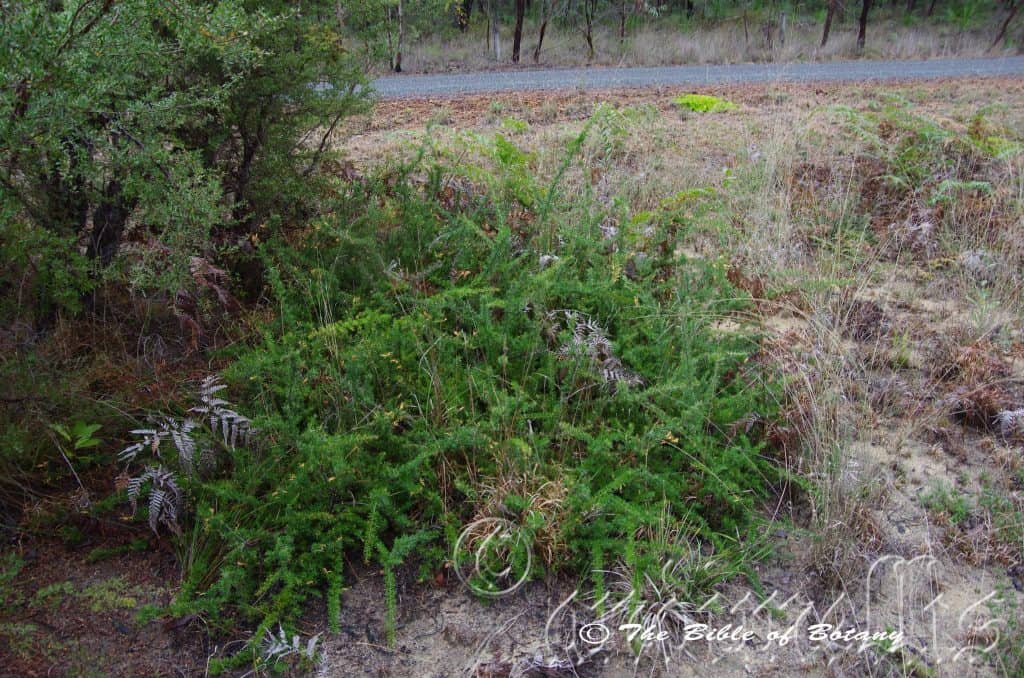
Author’s Garden The Pinnacles NSW
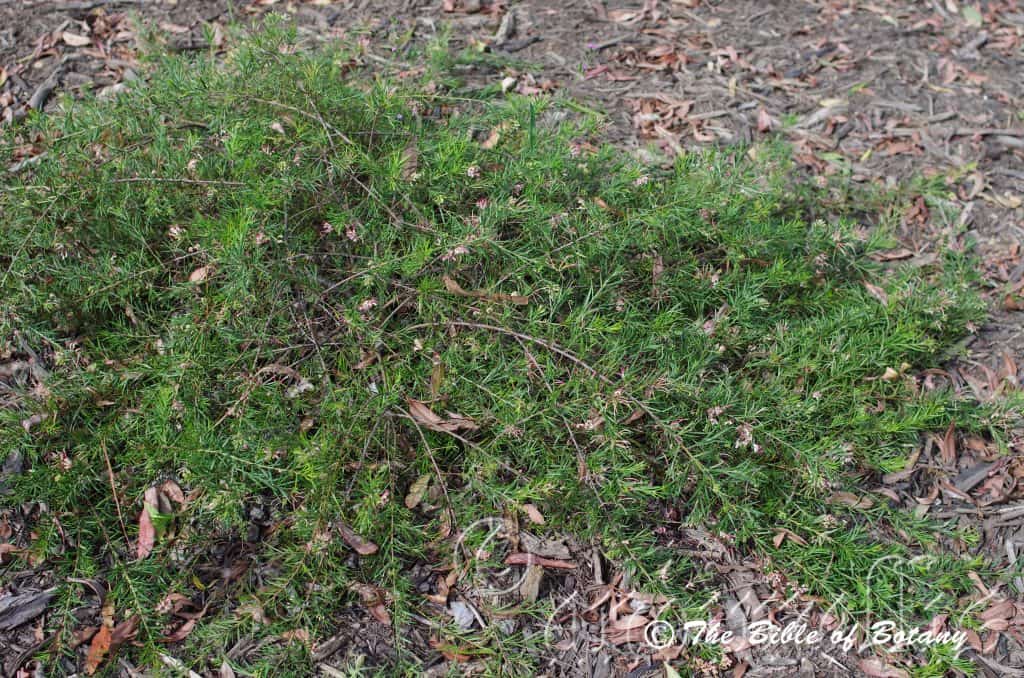
Mount Cootha Botanical Gardens Qld.
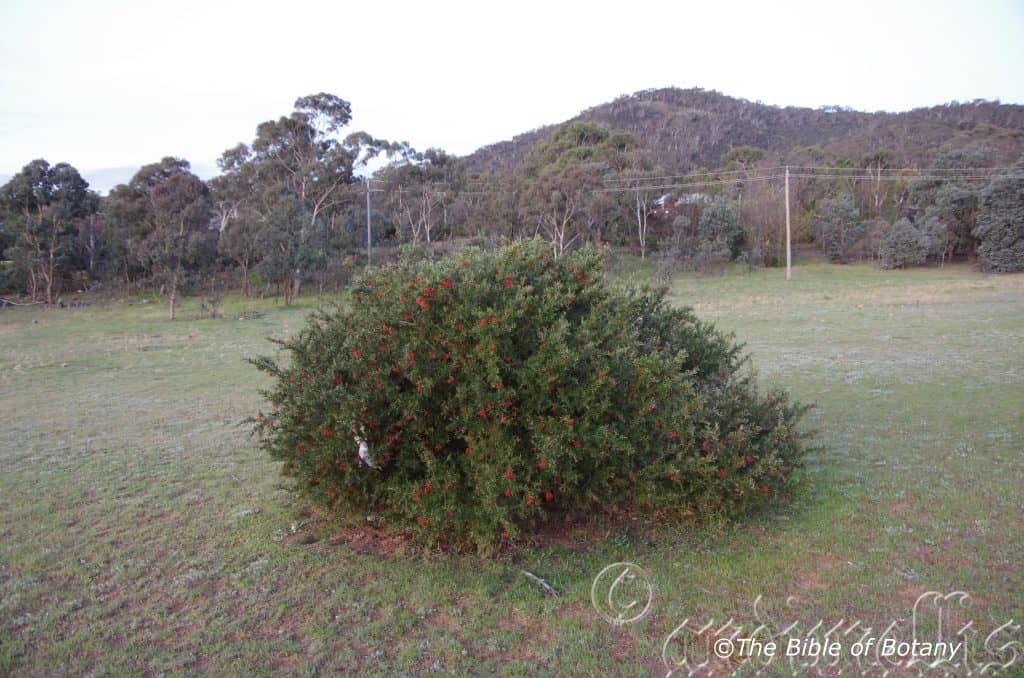
Reid ACT
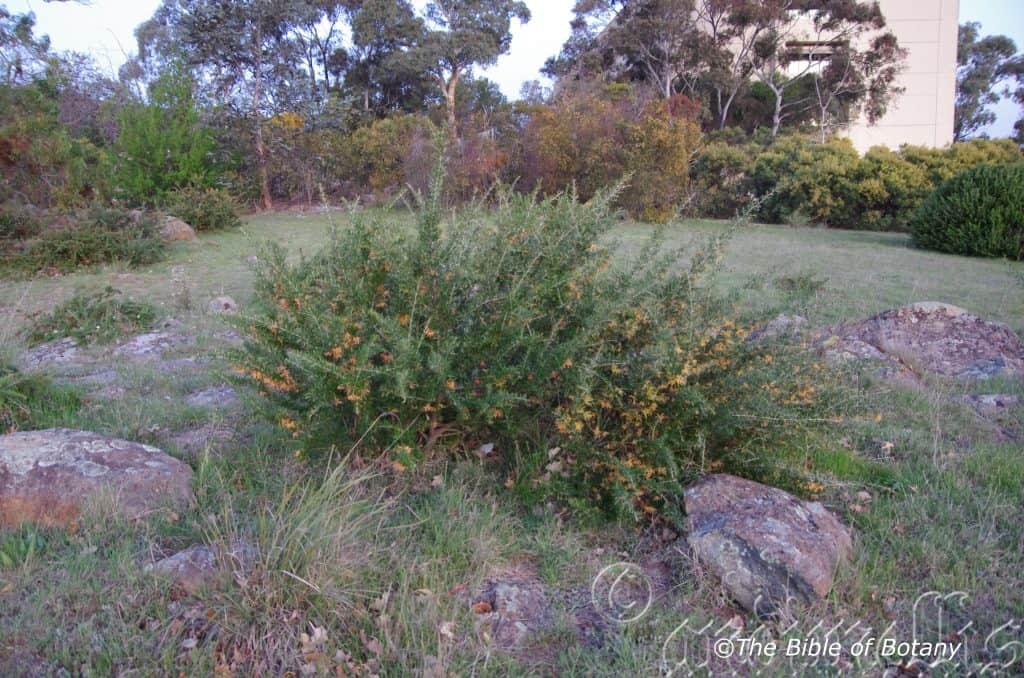
Reid ACT
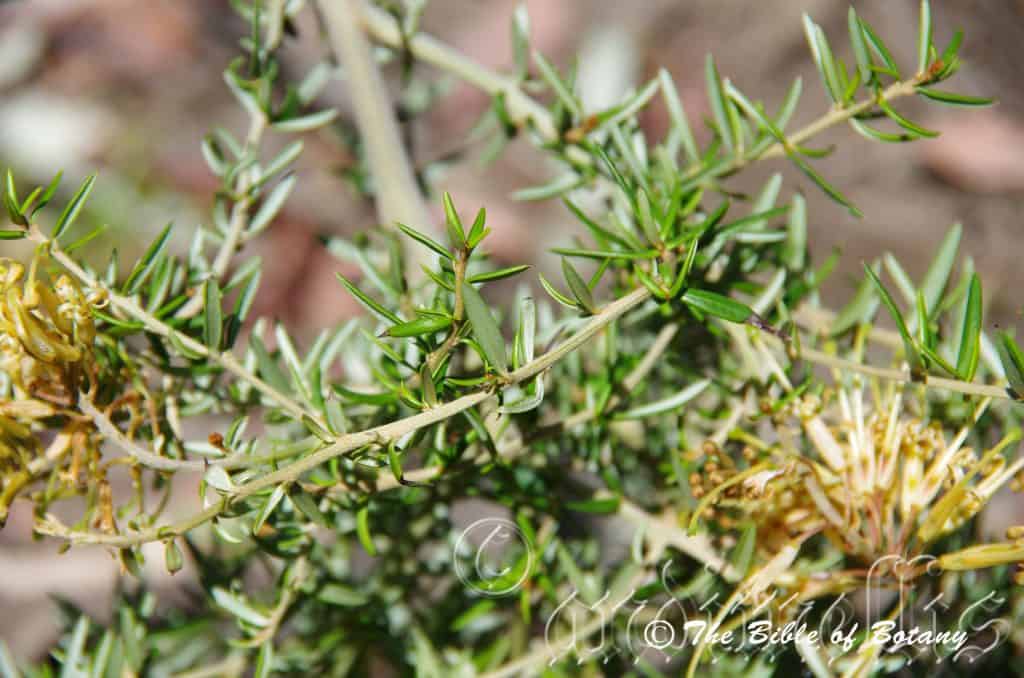
Mount Cootha Botanical Gardens Qld.
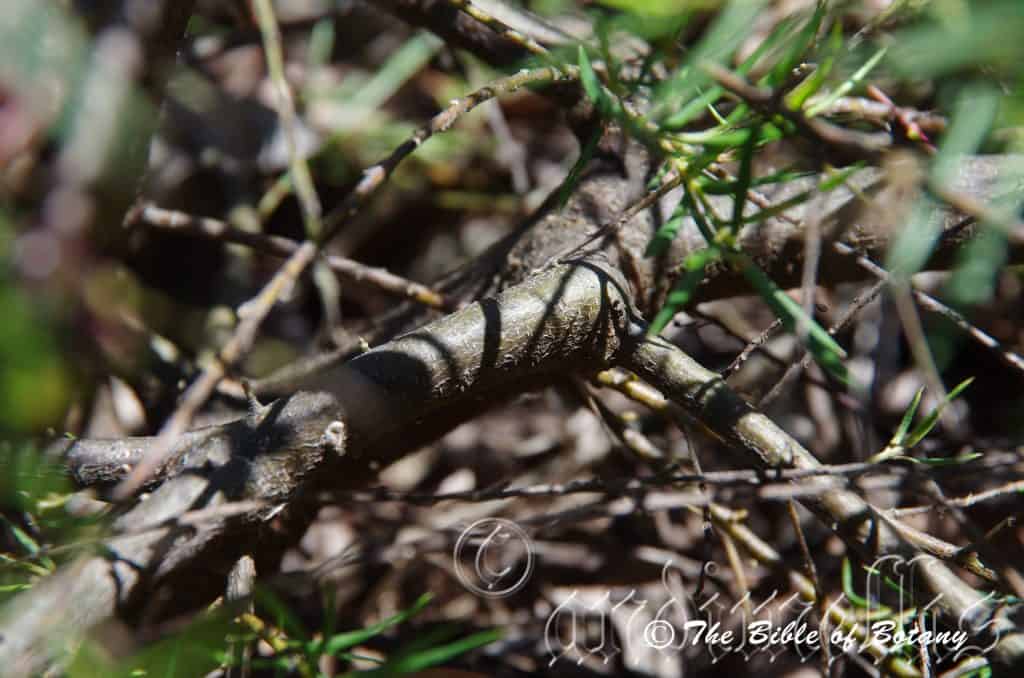
Mount Cootha Botanical Gardens Qld.
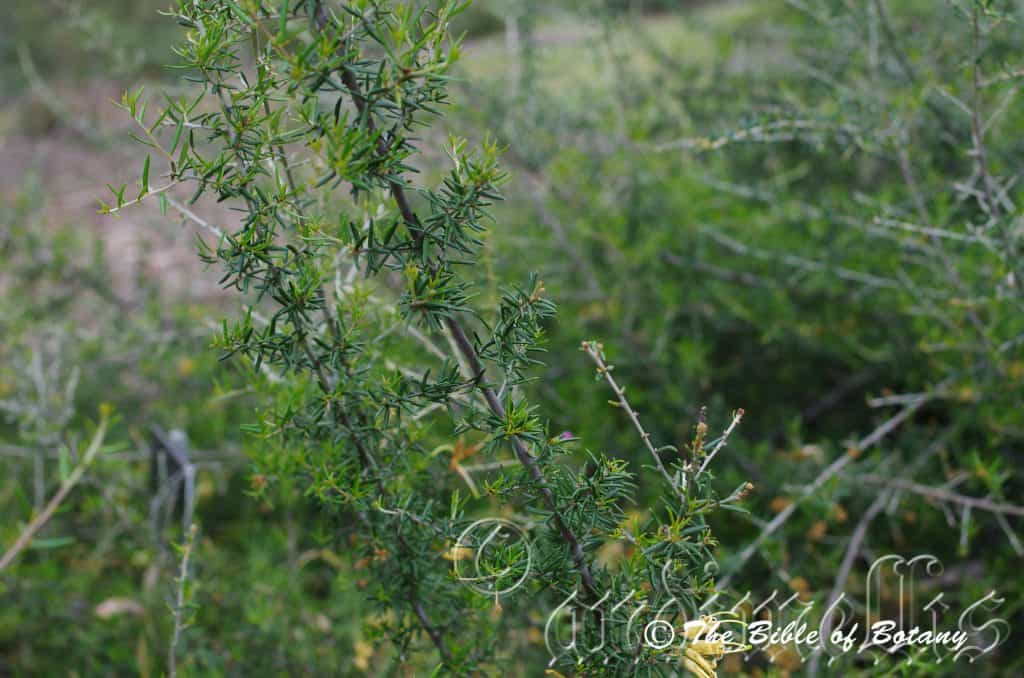
Mount Cootha Botanical Gardens Qld.
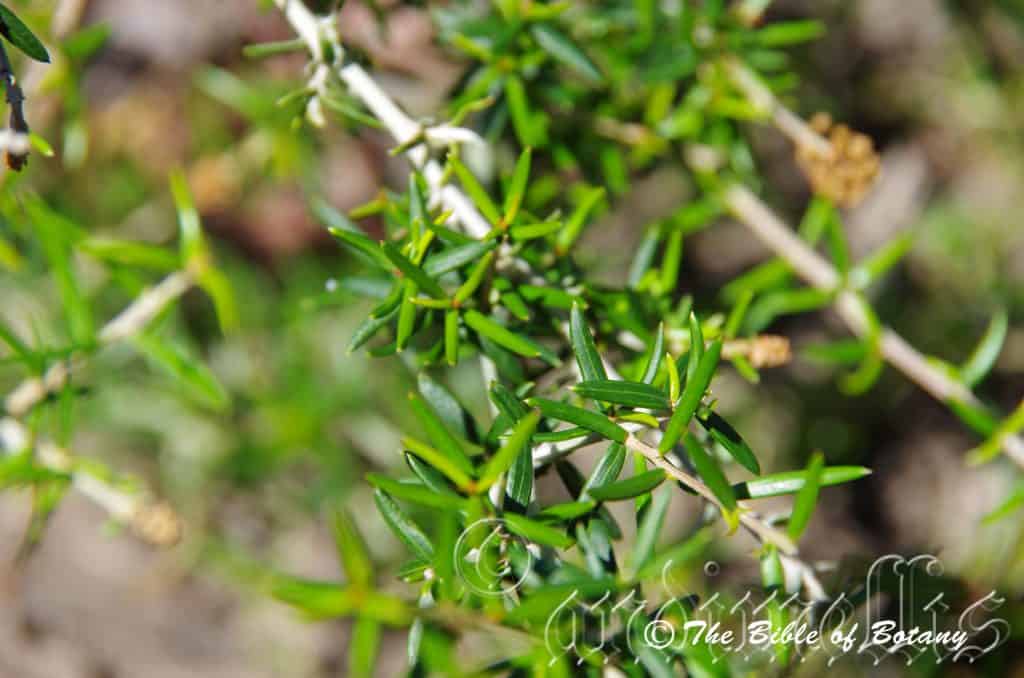
Mount Cootha Botanical Gardens Qld.
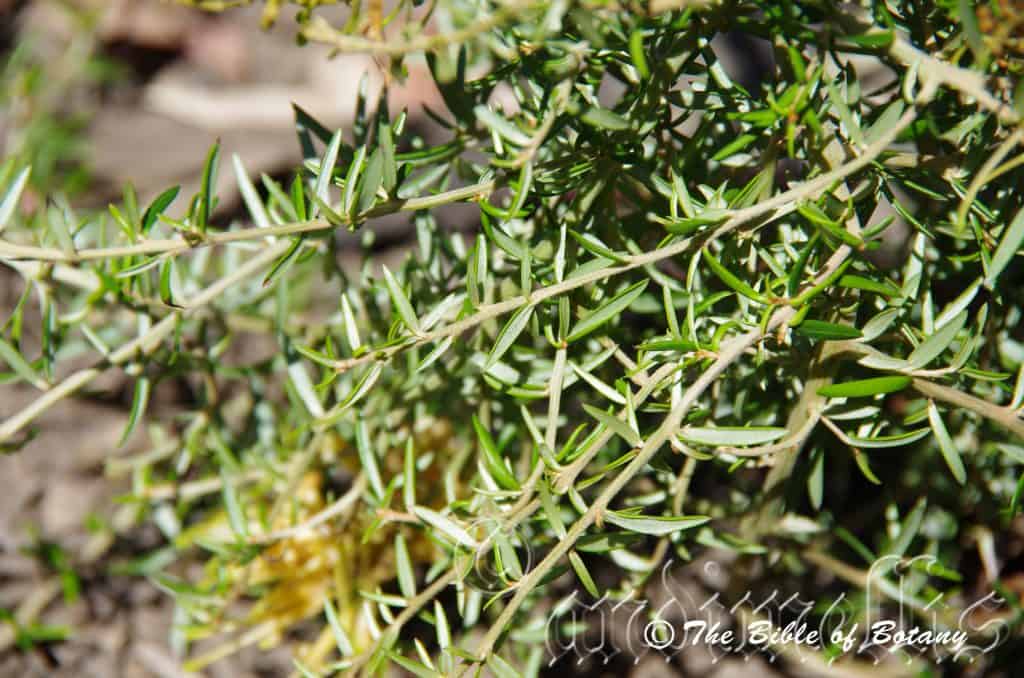
Mount Cootha Botanical Gardens Qld.
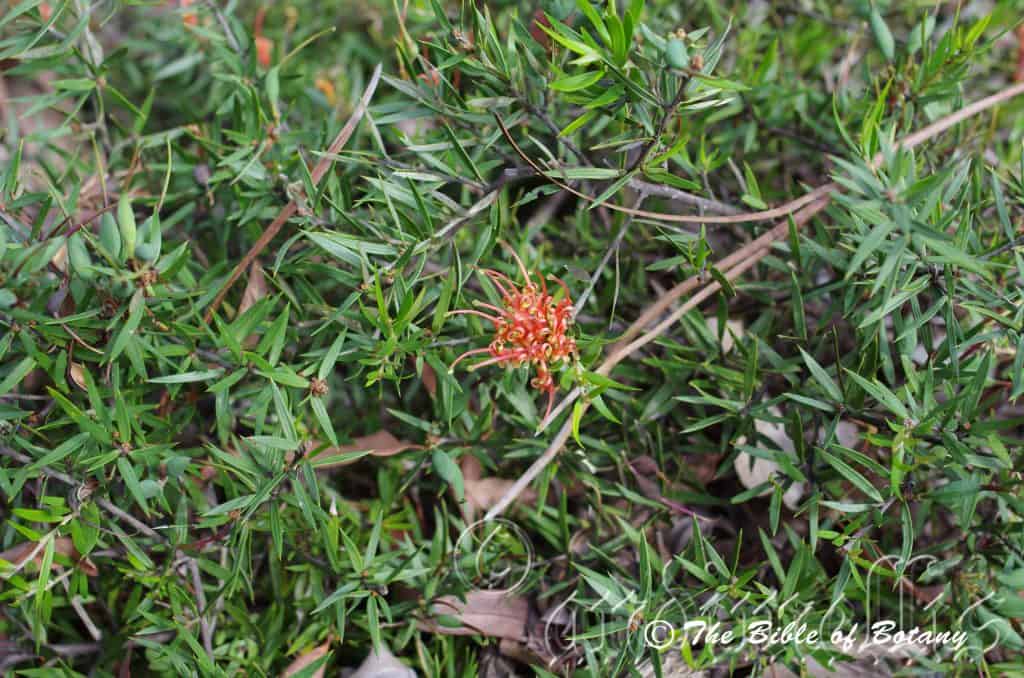
Mount Cootha Botanical Gardens Qld.
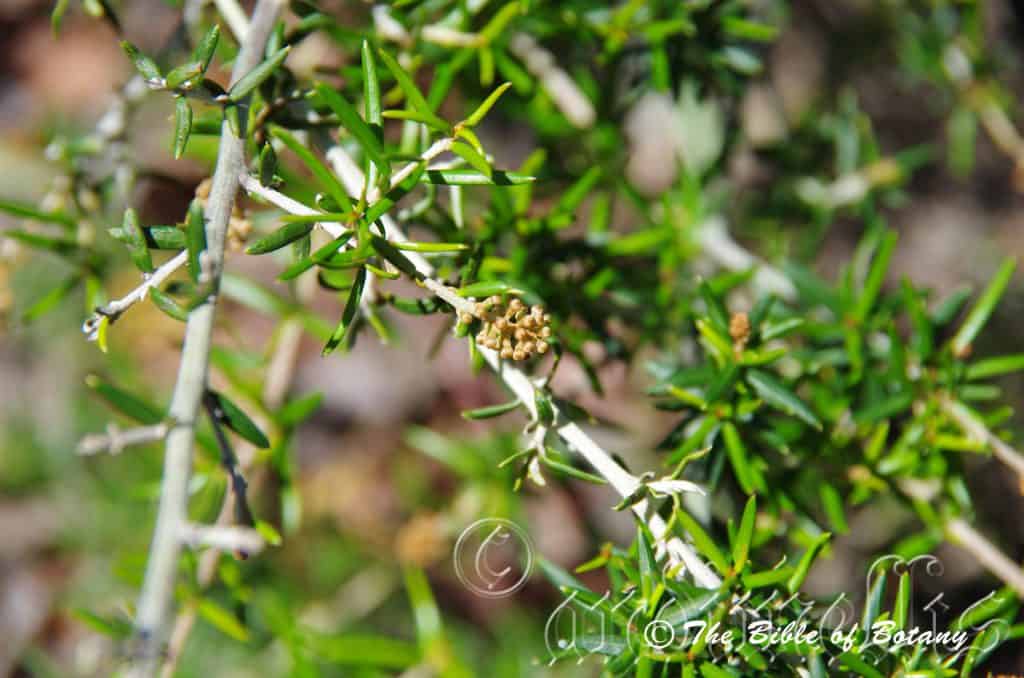
Mount Cootha Botanical Gardens Qld.
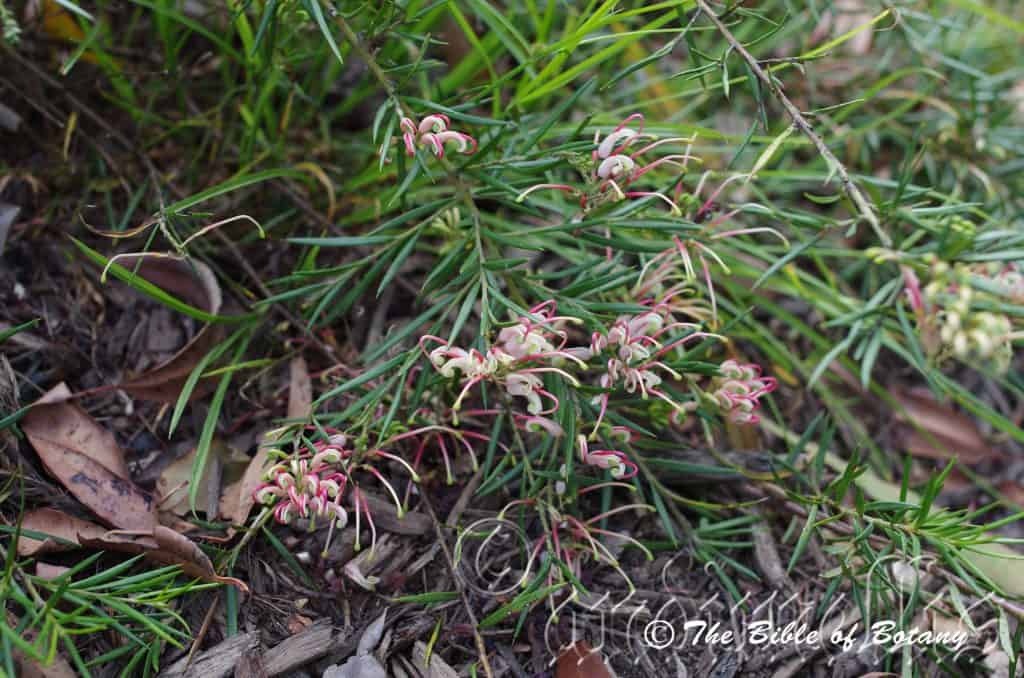
Mount Cootha Botanical Gardens Qld.
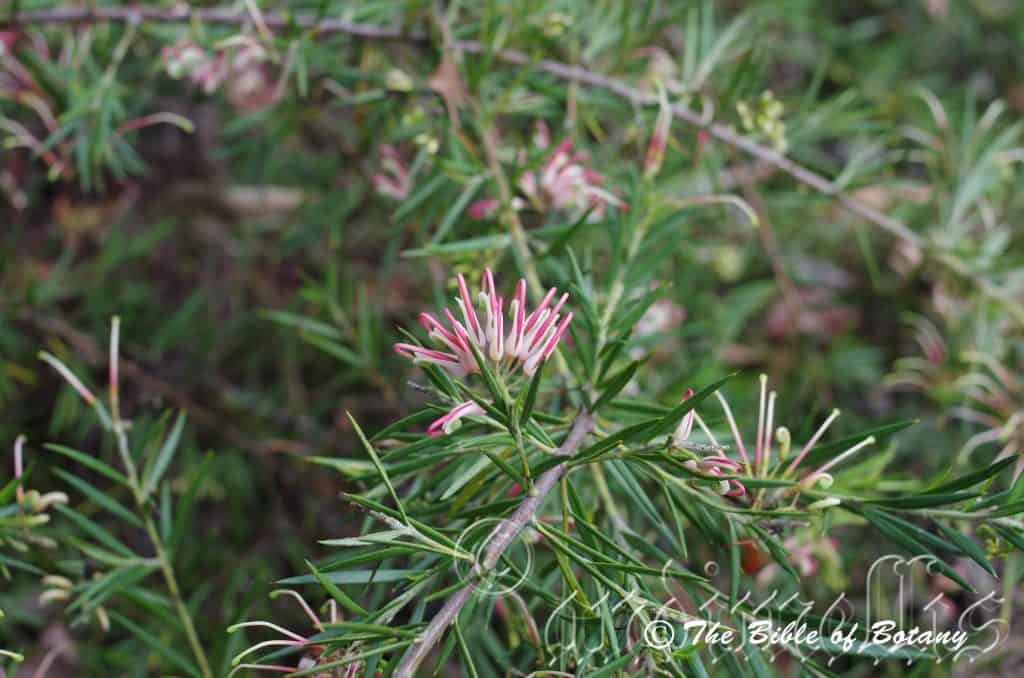
Mount Cootha Botanical Gardens Qld.

Mount Cootha Botanical Gardens Qld.

Mount Cootha Botanical Gardens Qld.
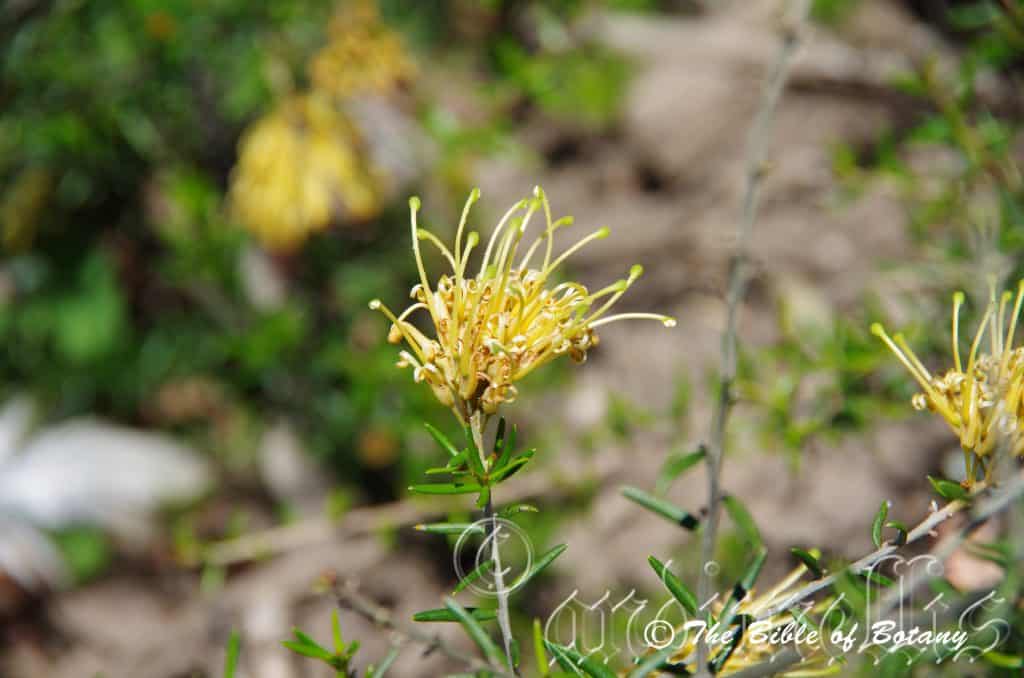
Mount Cootha Botanical Gardens Qld.
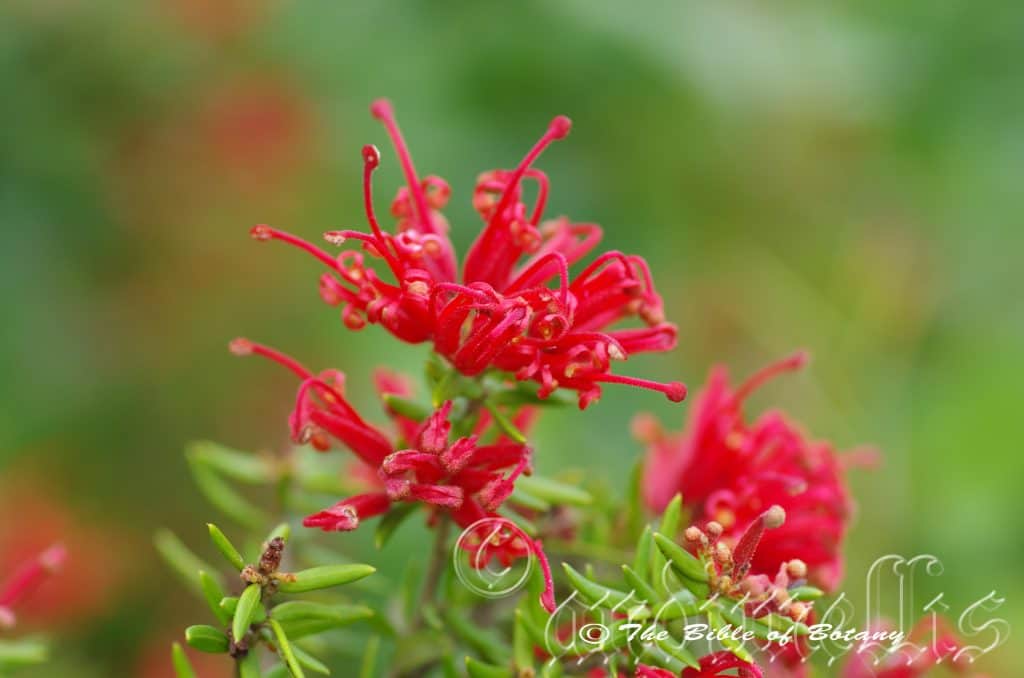
Mount Cootha Botanical Gardens Qld.
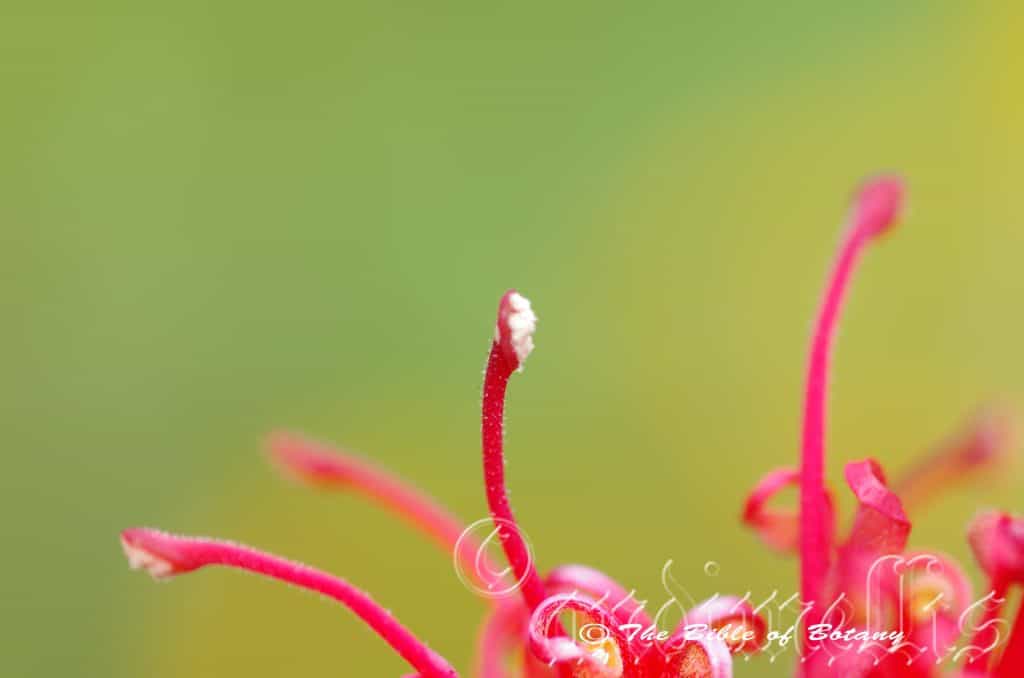
Mount Cootha Botanical Gardens Qld.
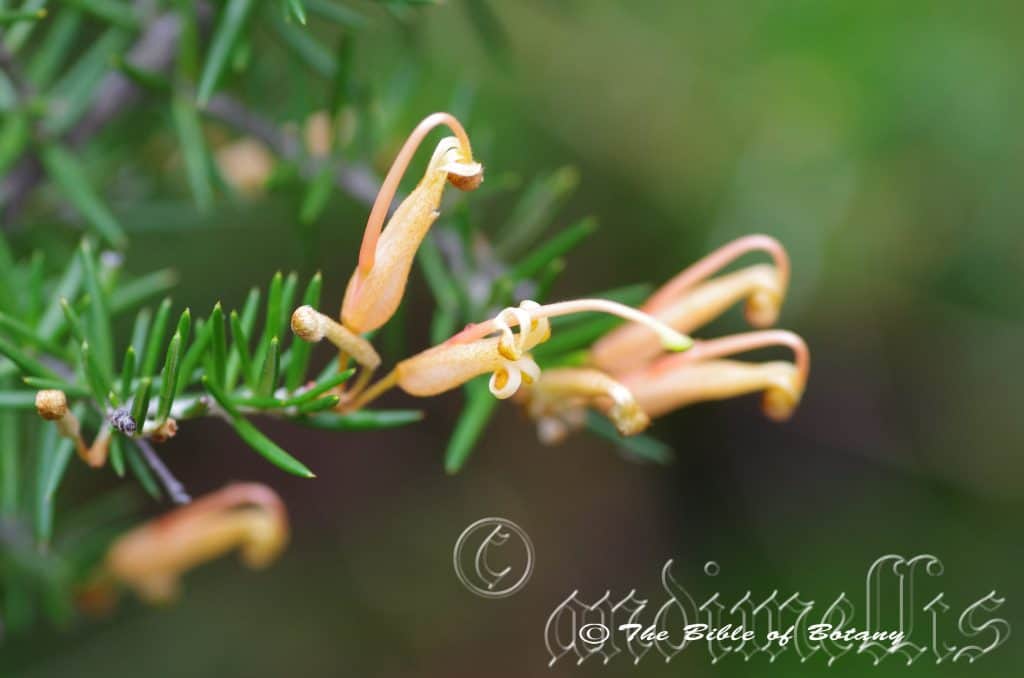
Mount Cootha Botanical Gardens Qld.
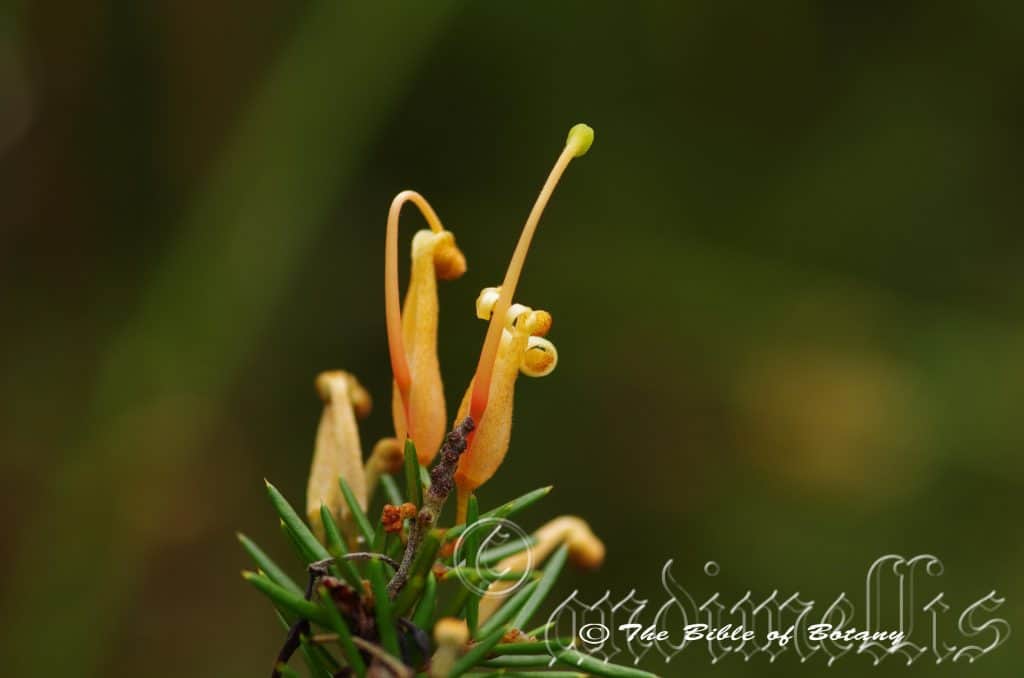
Mount Cootha Botanical Gardens Qld.
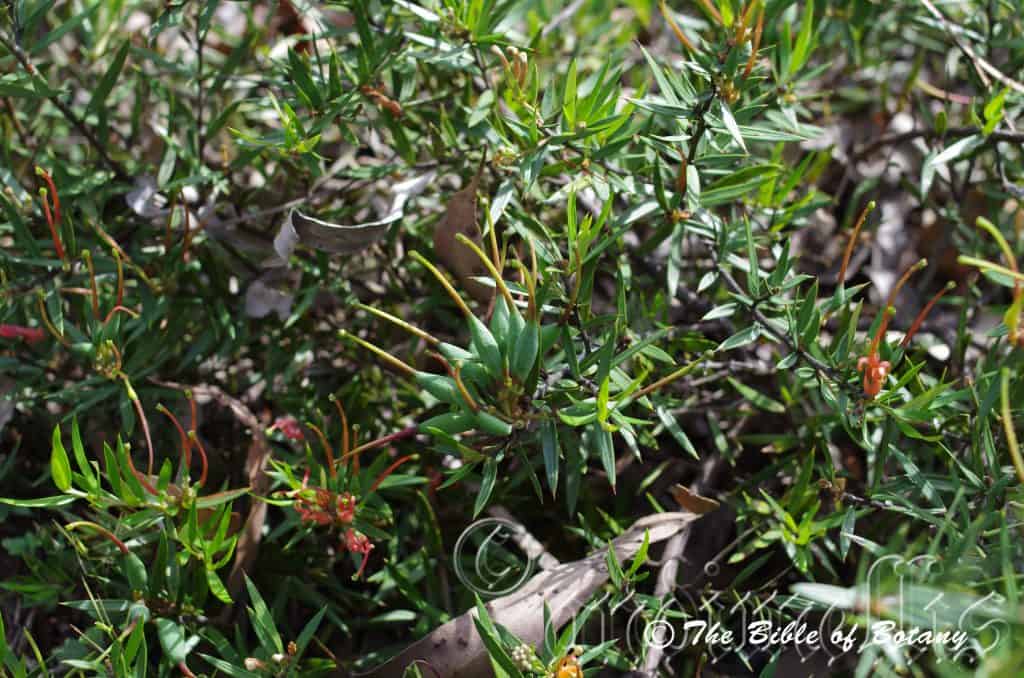
Mount Cootha Botanical Gardens Qld.
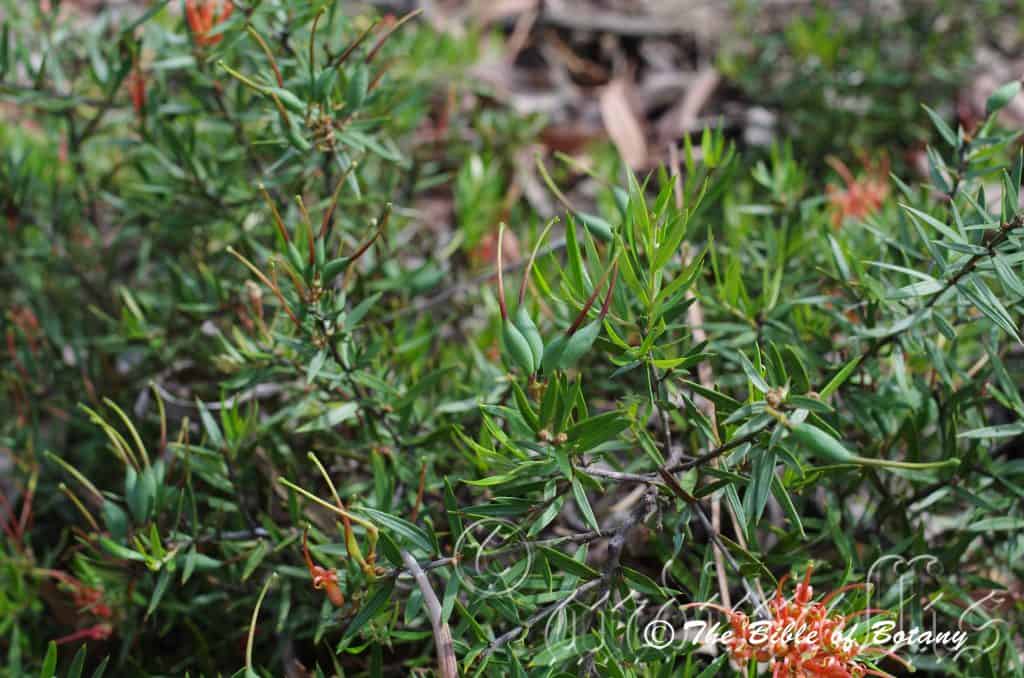
Mount Cootha Botanical Gardens Qld.
Grevillea juniperina
Classification:
Class: Magnoliopsida
Order: Proteales
Family: Proteaceae
Genus: Is named in honour of C. F. Greville; 1749-1809, who was a British expert botanist on Algae, a foundation member of the London Horticultural Society and a collector of rare plants.
Species: From Juniperus which is Latin for a pine tree. It refers to plants, which have an appearance resembling a pine tree, conifer or somewhat acicular, needle like leaves.
Sub Specie: Grevillea juniperina subsp. allojohnsonii. From Allos, which is Ancient Greek for the other or different, and Johnson, which is named in honour of Johnson but which Johnson cannot be established. It may refer to plants, which are named after the other Johnson or plants which resemble the species johnsonii but are not the same as that species.
Sub Specie: Grevillea juniperina subsp. amphitricha. From Amphi, which is Ancient Greek for both sides or double sided and Trichos, which is Ancient Greek for hairy. It refers to stems or leaves, which are very hairy on all sides.
Sub Specie: Grevillea juniperina subsp. fortis. From Fortis, which is Old Latin for to rise, high or a hill. It refer to plants, which grow on hills or undulating rises
Sub Specie: Grevillea juniperina subsp. juniperina. From Juniperus which is Latin for a pine tree. It refers to plants, which have an appearance resembling a pine tree, conifer or somewhat acicular, needle like leaves.
Sub Specie: Grevillea juniperina subsp. sulphurea. From Sulphur, which is Latin for sulphate yellow. It refers to flowers, which are bright sulphur yellow.
Sub Specie: Grevillea juniperina subsp. trinervis. From Treis/Tria, which are Ancient Greek or Tri, which is Latin for three and Neuron, which is Ancient Greek or nervus, which is Latin for a nerve. It refers to leaves or phyllodes, which have three, prominent parallel veins.
Sub Specie: Grevillea juniperina subsp. villosa. From Villosa, which is Latin for shaggy. It refers to organs or structures, which bear short or long, shaggy, curly, “villose” hairs.
Common Name:
Distribution:
Grevillea juniperina is found south from Stanthorpe in south east Queensland to Canberra in the ACT and Windellama in New South Wales. There are 8 sub species 7 of which overlap in the southern districts. Grevillea juniperina subspecies allojohnsonii is found in the northern zone crossing the border into Queensland.
Grevillea juniperina subsp. allojohnsonii is found on the Great Dividing Range south from The Queensland New South Wales border to Niangala.
Grevillea juniperina subsp. amphitricha is found in several disjunct populations between Goulbourn and the Bega Valley in southern New South Wales.
Grevillea juniperina subsp. fortis is found south from the confluence of the Cotter River and the Murrumbidgee River to Pine Island in Lanyon district near Canberra.
Grevillea juniperina subsp. juniperina is found south from the Hawksbury River to Gundungurra Reserve in central coastal New South Wales.
Grevillea juniperina subsp. sulphurea is found south from Rylestone in central Eastern New South Wales to Canberra in the ACT.
Grevillea juniperina subsp. trinervis is found between Bathurst and barbers Creek in central Eastern New South Wales.
Grevillea juniperina subsp. villosa is found south from Corang River and the Mongarlowe River on the Eastern slopes of the Great Dividing Range.
https://avh.ala.org.au/occurrences/search?taxa=Grevillea+juniperina#tab_mapView
Habitat Aspect Climate:
Grevillea juniperina prefers full sun to dappled light. It grows below medium size trees, low trees, or in low dry scrub lands near or adjacent to dry creek beds usually in open woodlands. Open Eucalyptus forests, sclerophyll forests, heaths, cliff faces ridges or on scrubby slopes. The altitude ranges from 150 meters ASL to 1280 meters ASL.
The temperatures range from minus 4 degrees in July to 36 degrees in January.
The rainfalls range from lows of 480mm to an average of 1300mm annually.
Soil Requirements:
Grevillea juniperina prefers to grow on rocky or stony sands, sandy loams, and fatty sands to light clays. The soils are usually derived from partially decomposed to decomposed sandstones or granites. The soils pH ranges from 5pH to 6.5pH. It does not tolerate waterlogged soils. Non saline soils to moderately saline soils are tolerated.
Height & Spread:
Wild Plants: 0.3m to 3m by 2m to 2.5m.
Characteristics:
Grevillea juniperina is very variable specie with 8 named sub species. They vary from prostrate ground covers to small bushy shrubs all with fine pine or juniper like foliage. The terete stems are bright lime-green to reddish brown, glabrous and semi glossy, while the branchlets are green and glabrous or covered in white tomentose or villous hairs.
The leaves are usually crowded on short lateral branches. They vary greatly with the sub species from lanceolate, narrow elliptical or linear and measure 5mm to 35mm in length by 0.5mm to 6mm in width. The bases are truncate while the apexes are narrow acute with a rigid, pungent spine. The concolourous laminas are bright glossy mid green and glabrous on the upper laminas while the lower laminas are usually densely covered in white sericeous hairs or at times sparsely covered in tomentose hairs or rarely glabrous. The laminas are flat while the margins are entire and decurve to revolute. The 3 to 5 longitudinal veins and are slightly prominent on the upper lamina and are not visible from the lower lamina.
The conflorescence are conflorescences and are born terminally or on special lateral branches that the leaves form on. The rachis measure 20mm to 35mm in length. The perianth is the most prominent part of the flower and is scarlet, red to pink, cream, yellow or rarely apricot. The perianths are pale yellow to deep yellow, apricot, orange-red or scarlet-red. The perianths are sparsely to densely covered in white sub sericeous to tomentose hairs externally and covered in white hirsute hairs internally on the basal half or to the base of the lobes splitting. The perianth tube measures 5mm to 9mm in length while the lobes measure 10mm to 18mm in length.
The styles are scarlet, red to pink, cream, yellow or rarely apricot, with a bright yellow-green pollen presenter. The lateral or occasionally oblique pollen presenter is pale yellow-green while the style is almost erect. The pistils measure 21mm to 27mm in length. The style is glabrous except for a few white hirsute hairs near the oblique stigma and pollen presenter. The stipitate ovary is glabrous with the stipule measuring 3mm to 3.5mm in length while the ovary measures 1.4mm to 1.7mm in length by 1.3mm to 1.6mm diameter. Flowering may commence as early as late July and conclude as late as February March, with a peak around October to December. It is not unusual to have some flowers throughout the year.
Grevillea juniperina fruits are narrow ovoidal to oblong-ellipsoidal follicles. The style is persistent and turns to a deep burgundy-red then to black on the ripe follicles. The green, glossy follicles are resinous and turn deep grey-brown externally and creamy fawn internally when ripe. They measure 15mm to 20mm in length by 6mm to 9mm in diameter and contain two seeds. The flattened ellipsoidal seeds have a hard testa and measure 6.5mm to 10mm in length by 2.5mm to 4mmin width.
Confusing Sub specie Varieties:
Grevillea juniperina subsp. allojohnsonii is a small prostrate shrub 200mm to 300mm in height by 1.5 meters to 2.5 meters in diameter or rarely low spreading shrub to 1 meter in height by 1.5 meters in diameter.
Grevillea juniperina subsp. amphitricha: is a prostrate to spreading shrub 300mm to 800mm or rarely to 1200mm in height. The adult and juvenile leaves are both densely covered in soft white appressed puberulent hairs which is almost shortly floccose on the lower laminas. The juvenile leaves range from 1/3 to 1/2 the length of the adult leaves. It is confined to slopes and ridges usually well away from streams. The outer surface of perianth tubes are sparsely to moderately covered in minute puberulent hairs mixed in with much longer biramous hairs.
Grevillea juniperina subsp. fortis grows as a shrub from 1m to 3m in height with a strong erect central stem from the base and many spreading to ascending lateral branches. The deltoid to trigonous leaves are angular in cross-section, not smoothly convex. The adult foliage is much broader than the other sub species and measure 3mm to 6mm in width. The upper lamina has one to three prominent longitudinal veins while the lower lamina is densely covered in a white appressed indumentums. The flowers are red or rarely pink.
Grevillea juniperina subsp. juniperina are low spreading shrubs from 1 meter to 1.5 meters in height by 1 meter to 1.5 meters in diameter.
The leaves are angular deltoid to trigonous in cross-section and are not adaxially convex-rounded. The widest adult leaves measure 0.6mm to 1mm in width. The upper laminas have three prominent longitudinal veins. The leaf margins are somewhat revolute
Grevillea juniperina subsp. sulphurea: Ascending to erect shrub with erect columnar branches to 2 m tall, or rarely prostrate; adult leaves with a sparse to dense indumentum on lower surface; juvenile leaves as long as adult leaves, with a sparse to open indumentum beneath (grows in moist creek-side and swamp habitats) Outer surface of perianth lacking minute erect hairs (biramous hairs only present) Upper leaf surface with only the midvein evident or if intramarginal veins evident then the latter not prominent; adult leaf usually rounded (adaxially convex) in cross-section or sometimes angularly deltoid; leaf margins smoothly to angularly revolute; ascending to erect shrub with columnar branches to 2 m tall, or rarely prostrate
Grevillea juniperina subsp. trinervis are almost prostrate to low growing shrubs, which measure 0.5 meters to 1.2 meters or very rarely attain a height of 2 meters. The adult leaves are elliptic to narrow elliptical or narrow ovate and measure 10mm to 20mm in length by 1.5mm to 2.5mm in width. The margins are angular and very shortly recurved, with most of lower leaf lamina exposed. The upper lamina has three or rarely five prominent pale veins. The flowers are usually yellow or orange, rarely red.
Grevillea juniperina subsp unnamed is a weak, open ascending to spreading, erect shrub to 3 meters in height. The leaves are linear, sublinear, or acicular-subulate. The margins are strongly recurved to revolute and conceal most of the lower lamina. The upper lamina is angular, trigonous or at times deltoid in cross-section and is smoothly convex.
Grevillea juniperina subsp. villosa grows as a strong erect shrub to 2 meters in height by 2 meters in diameter. The leaves are almost linear to narrow elliptical and measure 11mm to 21mm in length by 0.7mm to 2.5mm in width. The upper lamina is convex and glabrous. The lower lamina is sparsely covered in white villous hairs mainly along the midvein. The margins slightly recurve. The limb at apex of flower-bud is covered in tomentose or long sub villous hairs on the outer surface of corolla.
Wildlife:
The dense pungent foliage and proliferation of small flowers is a great attraction and safe haven for smaller honeyeaters like the Silver Eyes, Yellow Face Honeyeater, Brown Honeyeater and the eastern Spinebill. (Acanthorhynchus tenuirostris.) The eastern Spinebill is particularly attracted to the prostrate forms where the more cautious birds fear to tread as long as there is a taller tree nearby that they can flitter back to quickly. The Pencilled blue butterfly (Candalides cyprotus) larvae live on the plant.
Cultivation:
Grevillea juniperina is a very variable species, which offers a pine like foliage with upright forms tp prostrate forms. The flower colour is just as variable being pale lemon, brilliant yellows, oranges, reds to pascal pink. This beautiful small Grevillea which should be more widely grown especially in semi arid locations or on steep hills and banks closer to the coast.. It suits small to large gardens. Garden subjects that grow as shrubs frequently reach 2 meters to 3 meters in height by two meters to three meters in diameter when cultivated in the open. The prostrate forms grow from 200mm to 300mm in height by 1.5 meters to two meters in diameter when grown in the open. There are now several cultivars around to select from which will suit every sunny position in the garden. It is particularly good for adding colour in the garden particularly in the winter months when the pool and surrounds are not all that attractive. In formal gardens they break up the foliage of English type gardens without being overpowering.
Prostrate fine leaf plants with bright green foliage such as this always look great in rockeries or amongst boulders where their foliage looks softer and the flowers lift the plants when in flower. They make the rocks look larger and their earthy colours contrast the foliage exquisitely.
Finer leaf plants often look out of place on banks and escarpments when stuck between large leaf and large flowering plants so avoid using them in such situations. Instead mix them with other finer leaf plants and blend them in a mosaic of different coloured flowers.
It is in Native gardens it excels especially when used with other plants that have fine to medium size leaves.
It is excellent bird attractants. Correctly positioned can force a change of direction. A bend in a path can break up straight lines. Place a smaller cultivar at the end of the path. This will lead your eyes over to the background plants, yet they will walk the bend without noticing the change in direction. Smaller plants or prostrate plants can have the same effect but used in the foreground with taller plants as the backdrop.
Do not place the shrubs next to plants with strong contrasting or large leaves as they always dominate the scene no matter how good a flower the plant is.
The shrub forms are ideal plants for wildlife corridors and hedge rows where they can be planted at 1.5 meter centres.
Propagation:
Seeds: Sow the seeds of Grevillea juniperina directly into a seed raising mix. Cover them with 5mm of fine sand and keep moist not wet. Place the tray in a warm sunny position. When the seedlings are 25mm to 50mm tall, prick them out and plant them into 50mm native tubes using a good organic mix.
Once the seedlings reach 150mm to 200mm in height, nip the tips out before planting them out into their permanent position. For mass plantings plant them out at 2 meter to 4 meter centers depending on which sub species is being grown and whether it is used as a feature shrub or mingled into a bush scene.
Fertilize using Seaweed, fish emulsion or a half strength solution of organic chicken pellets soaked in water on an alternate basis. Fertilize every 3 months until the plants are well established then annually to assist in prolific blooming and healthy growth. Avoid synthetic fertilizers as they may contain high levels of phosphorus and calcium which are toxic to most members of the Proteaceae family.
Cuttings: Use 70mm to 100mm long half ripened material when growing from cuttings from the present season’s growth. Take them in mid-autumn or early spring. Remove half the leaves from the bottom section being careful not to tear the bark.
1 Prepare the cutting mix by adding one third sharp clean river sand, one third peat and one third perlite. These ingredients are sterilize,
2 Select good material from non diseased plants,
3 Select semi green stems for cuttings. Look for a stem with two or three nodes,
4 Place the cutting on a flat, hard surface, and make a clean cut down one side of the cutting at the base for 10mm with a sharp sterile knife or razor blade. – This scarification of the node will increase the chances of roots emerging from this spot. Now remove all but one or two the leaves, leaving the apex leaves in tact. If the leaves are very large in proportion to the stem, cut off the apical halves.
5 Fill a saucer with water, and place a little medium strength rooting hormone into another container like a milk bottle top. Dip the node end of the cutting into the water and then into the rooting hormone. Tap off any excess hormone,
6 Use a small dipple stick or old pencil to poke a hole into the soilless potting mix. Ensure the hole is slightly larger than the stem diameter and be careful not to wipe the rooting hormone off the cuttings base, place the cuttings in a pattern ensuring the cuttings are not touching each other,
7 I like to place the pots in Plastic bags to help maintain temperature and moisture. Place in a semi shaded place like under 50mm shade cloth.
8 When the cuttings have struck, open the bag to allow air circulation for a few days to a week,
9 Once hardened off remove the cuttings from the bag and allow to further hardening for a few more days,
10 Transplant into a good potting mix to grow on.
Fertilize using seaweed, fish emulsion or organic chicken pellets soaked in water on an alternate basis. Fertilize every two months until the plants are established then twice annually in early September or March to maintain health, vitality and better flowering. Avoid synthetic fertilizers as they will most likely contain calcium and phosphorus at levels, which are toxic to most Proteaceae.
Further Comments from Readers:
Hi reader, it seems you use The Bible of Botany a lot. That’s great as we have great pleasure in bringing it to you! It’s a little awkward for us to ask, but our first aim is to purchase land approximately 1,600 hectares to link several parcels of N.P. into one at The Pinnacles NSW Australia, but we need your help. We’re not salespeople. We’re amature botanists who have dedicated over 30 years to saving the environment in a practical way. We depend on donations to reach our goal. If you donate just $5, the price of your coffee this Sunday, We can help to keep the planet alive in a real way and continue to bring you regular updates and features on Australian plants all in one Botanical Bible. Any support is greatly appreciated. Thank you.
In the spirit of reconciliation we acknowledge the Bundjalung, Gumbaynggirr and Yaegl and all aboriginal nations throughout Australia and their connections to land, sea and community. We pay our respect to their Elders past, present and future for the pleasures we have gained.
Grevillea kennedyana
Classification:
Class: Magnoliopsida
Order: Proteales
Family: Proteaceae
Genus: Is named in honour of C. F. Greville; 1749-1809, who was a British expert botanist on Algae, a foundation member of the London Horticultural Society and a collector of rare plants.
Species: Is named in honour of Kennedy, Mary Bozzum (nee Hume); 1838-1915, who was an Australian who collected specimens at the Barrier Range, 1885; the Darling River and Wilcannia, 1885-1889; Yandarlo, 1885- 1886; Mount Lyell, 1886; Netallie, 1886; and Wonnaminta, 1886-1887.She also collated the Aboriginal names of all the plants she collected and those found in the districts she collected in.
Common Name: Flame Spider Flower.
Distribution:
Grevillea kennedyana is restricted to a small area bounded by the Grey Range in far south western Queensland to Yandama Station and Mount Wood east of Cameron Corner in far north western New South Wales. It probably crosses the border in the far north eastern South Australia.
https://avh.ala.org.au/occurrences/search?taxa=Grevillea+kennedyana#tab_mapView
Habitat Aspect Climate:
Grevillea kennedyana prefers full sun. It grows in drainage lines often forming gregarious colonies following the drainage lines on rocky slopes, small gullies along rocky outcrops, hillocks and low ranges adjacent to the Sturt Desert. The altitude ranges from 140 meters ASL to 210 meters ASL.
The temperatures range from 2 degrees in July to 42 degrees in January.
The rainfalls range from lows of 160mm to an average of 270mm annually.
Soil Requirements:
Grevillea kennedyana prefers to grow on exposed silcrete, indurated weathered soils which are verging on the surrounding sandstone flats. The soils are usually derived from partially decomposed to decomposed to sandstone silcrete. The soils pH probably ranges from 5PH to 6PH. It does not tolerate waterlogged soils. Non saline soils to moderately saline soils are tolerated.
Height & Spread:
Wild Plants: 0.7m to 2m by 1m to 2m.
Characteristics:
Grevillea kennedyana is an erect or spreading shrub with a pale grey to a pale grey-brown glaucous bark. The branchlets are pale grey and densely covered in white sericeous hairs. The plants usually regenerate itself by suckering and from lignotuber or at times from seed.
Grevillea kennedyana‘s fasciculate leaves are often ascending to spreading. The simple linear to narrow lanceolate leaves measure 7mm to 33mm in length by 1.2mm to 1.5mm in width. The bases are sessile while the apexes taper to a rigid, pungent, maroon-red spine. The concolourous laminas are deep green and densely covered in white sericeous hairs which may become glabrous over time on the upper laminas while the lower laminas are glabrous. The laminas curve upwards on the basal half and decurve on the apical half while the margins are entire and revolute forming a groove along the mid vein. The mid vein is slightly prominent below and faintly visible from above.
The abaxially conflorescences of Grevillea kennedyana are erect with 8 to 20 individual flowers on a raceme from the terminals. The rachis is covered in white sericeous hairs and measure 2mm to 5mm in length. The perianth and style are the most prominent part of the flower and are greenish-red in bud before turning brilliant scarlet-red to orange-red. The perianth is glabrous or sparsely to moderately covered in white appressed hirsute hairs externally and are covered in white villous hairs internally. The perianths measure 7.5mm to 9mm in length while the lobes measure 19mm to 22mm in length. The lobes are free and recurve strongly on the apical half after anthesis.
The styles are scarlet-red to deep orange-red, with a deeper orange-red to deeper scarlet red stigma and pollen presenter. The stigma and pollen presenter are very strongly oblique to lateral while the style is curved for its entire length. The pistils measure 27mm to 31mm in length. The style is glabrous while the glabrous stipe measures 4mm to 5.5mm in length. The flowers appear from July to November.
Grevillea kennedyana‘s fruits are obovoidal-ellipsoidal follicles. The style is persistent on the ripe follicles. The finely tuberculate to rugulose follicles measure 15mm to 19mm in length by 5.5mm to 7mm in diameter. The deep brown, hard testa seeds are ellipsoidal and measure 9mm to 12mm in length by 3mm to 5mm in width.
Wildlife:
The dense pungent foliage and deep red of the flowers is a great attraction for smaller honeyeaters.
Cultivation:
Grevillea kennedyana is a very beautiful small Grevillea which should be more widely grown around homesteads and outback stations in arid and semi-arid areas west of the Great Dividing Range. Its water and maintenance requirements are very low and with the beauty of the flowers and bird attraction makes them ideal for such positions. It is suitable for small to large gardens. Garden subjects will grow from 1 meter to 1.5 meters in height by 1 meter to 1.5 meters in diameter when grown in an open situation. Plants should be tip pruned in the early stages to induce a smaller r more compact bushier shrub.
In Native gardens it can be used for bird attraction, borders or placed in a position to force a change of direction. A bend in a path can break up straight lines. Use them as a foreground plant with taller plants as the backdrop. Most red flowering Grevillea specie and this one is no exception look great when mixed with small Acacia specie. Try a prostrate Acacia specie surrounded by Grevillea kennedyana or feature it by surrounding it with prostrate Acacia specie, either way they would look brilliant.
This is one plant that deserves every chance for popularity in central Australia and it is a perfect opportunity for protection and long term security of the species by having it widely cultivated for central Australian gardens. The plant is listed as rare and endangered. Anyone who can grow this plant on mass in the center would have an instant market for the seeds alone as an alternative crop. Closer to the coast or where rainfall exceeds the 600mm use raised mounds with mainly sharp sand or rocks and boulders as the base or plant them on exposed rocky knolls. Plants are thriving at Glenmorgan at the Myall Botanic Gardens on sandy loams and a natural rainfall averaging 400mm to 500mm annually.
Propagation:
Seeds: Sow the seeds of Grevillea kennedyana directly into a seed raising mix. Cover them with 5mm of fine sand and keep moist not wet. Place the tray in a warm sunny position. When the seedlings are 25mm to 50mm tall, prick them out and plant them into 50mm native tubes using a good organic mix.
Once the seedlings reach 150mm to 200mm in height, nip the tips out before planting them out into their permanent position. For mass plantings plant them out at 1 meter to 3 meter centers depending on which sub species is being grown and whether it is used as a feature shrub or mingled into a bush scene.
Fertilize using Seaweed, fish emulsion or a half strength solution of organic chicken pellets soaked in water on an alternate basis. Fertilize every 3 months until the plants are well established then annually to assist in prolific blooming and healthy growth. Avoid synthetic fertilizers as they may contain high levels of phosphorus and calcium which are toxic to most members of the Proteaceae family.
Cuttings:
Use 70mm to 100mm long half ripened material when growing from cuttings from the present season’s growth. Take them in mid-autumn or early spring. Remove half the leaves from the bottom section being careful not to tear the bark.
1 Prepare the cutting mix by adding one third sharp clean river sand, one third peat and one third perlite. These ingredients are sterilize,
2 Select good material from non diseased plants,
3 Select semi green stems for cuttings. Look for a stem with two or three nodes,
4 Place the cutting on a flat, hard surface, and make a clean cut down one side of the cutting at the base for 10mm with a sharp sterile knife or razor blade. – This scarification of the node will increase the chances of roots emerging from this spot. Now remove all but one or two the leaves, leaving the apex leaves in tact. If the leaves are very large in proportion to the stem, cut off the apical halves.
5 Fill a saucer with water, and place a little medium strength rooting hormone into another container like a milk bottle top. Dip the node end of the cutting into the water and then into the rooting hormone. Tap off any excess hormone,
6 Use a small dipple stick or old pencil to poke a hole into the soilless potting mix. Ensure the hole is slightly larger than the stem diameter and be careful not to wipe the rooting hormone off the cuttings base, place the cuttings in a pattern ensuring the cuttings are not touching each other,
7 I like to place the pots in Plastic bags to help maintain temperature and moisture. Place in a semi shaded place like under 50mm shade cloth.
8 When the cuttings have struck, open the bag to allow air circulation for a few days to a week,
9 Once hardened off remove the cuttings from the bag and allow to further hardening for a few more days,
10 Transplant into a good potting mix to grow on.
Fertilize using seaweed, fish emulsion or organic chicken pellets soaked in water on an alternate basis. Fertilize every two months until the plants are established then twice annually in early September or March to maintain health, vitality and better flowering. Avoid synthetic fertilizers as they will most likely contain calcium and phosphorus at levels, which are toxic to most Proteaceae.
Further Comments from Readers:
Hi reader, it seems you use The Bible of Botany a lot. That’s great as we have great pleasure in bringing it to you! It’s a little awkward for us to ask, but our first aim is to purchase land approximately 1,600 hectares to link several parcels of N.P. into one at The Pinnacles NSW Australia, but we need your help. We’re not salespeople. We’re amature botanists who have dedicated over 30 years to saving the environment in a practical way. We depend on donations to reach our goal. If you donate just $5, the price of your coffee this Sunday, We can help to keep the planet alive in a real way and continue to bring you regular updates and features on Australian plants all in one Botanical Bible. Any support is greatly appreciated. Thank you.
In the spirit of reconciliation we acknowledge the Bundjalung, Gumbaynggirr and Yaegl and all aboriginal nations throughout Australia and their connections to land, sea and community. We pay our respect to their Elders past, present and future for the pleasures we have gained.
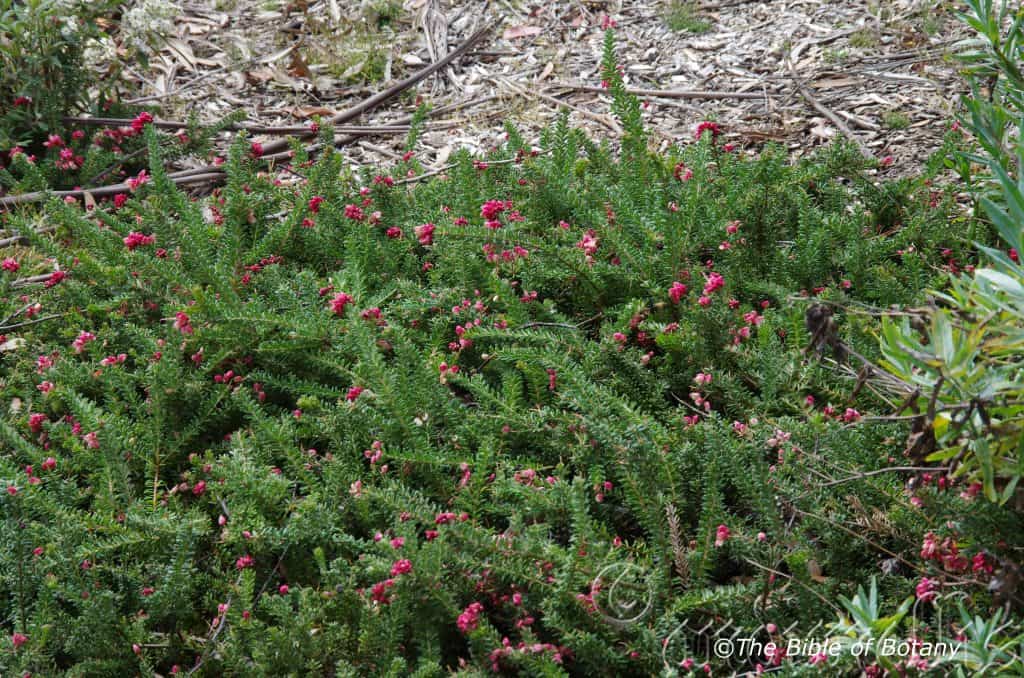
National Botanical Gardens ACT
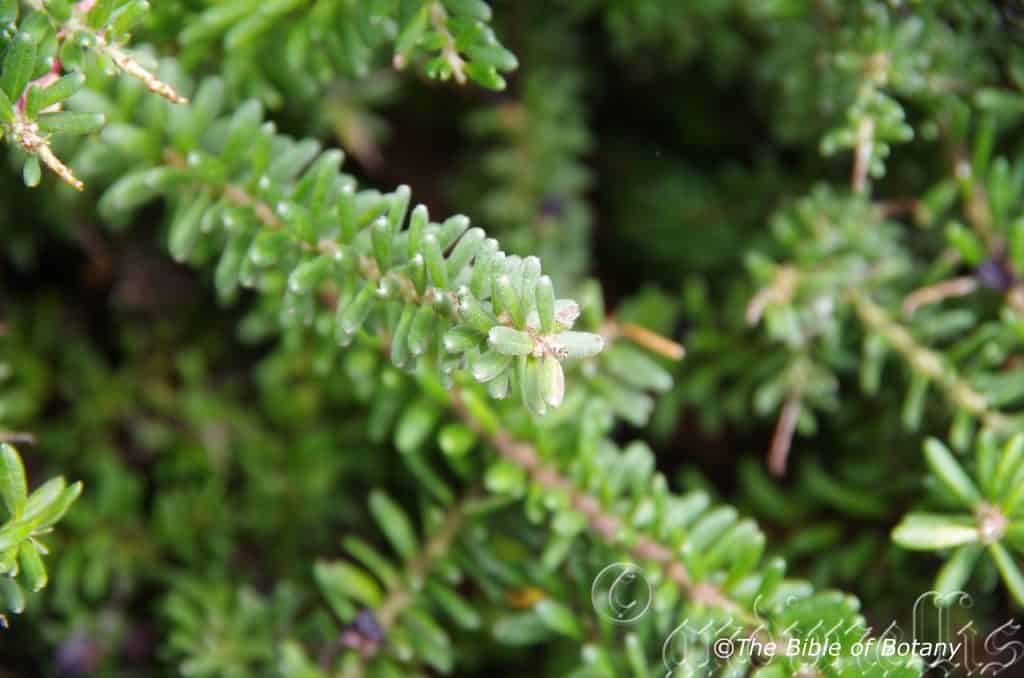
National Botanical Gardens ACT
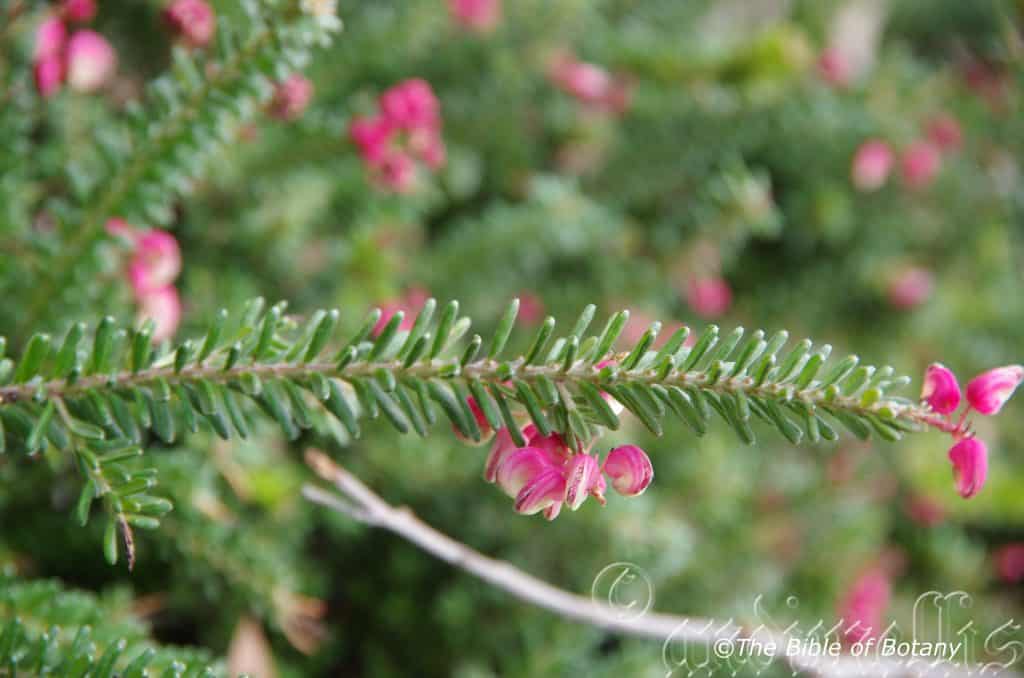
National Botanical Gardens ACT
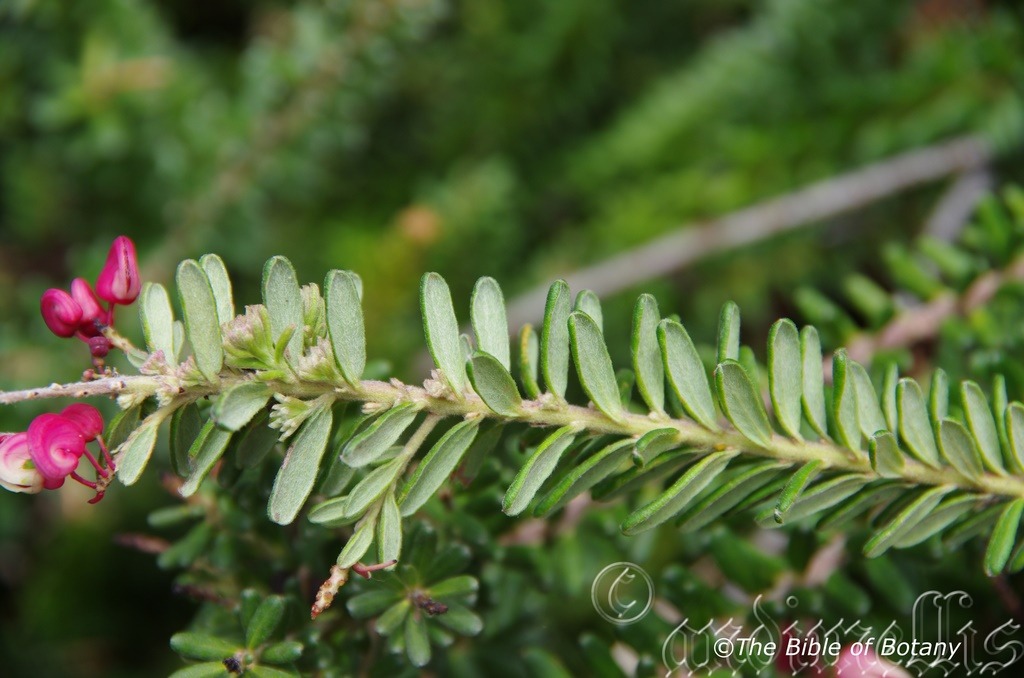
National Botanical Gardens ACT
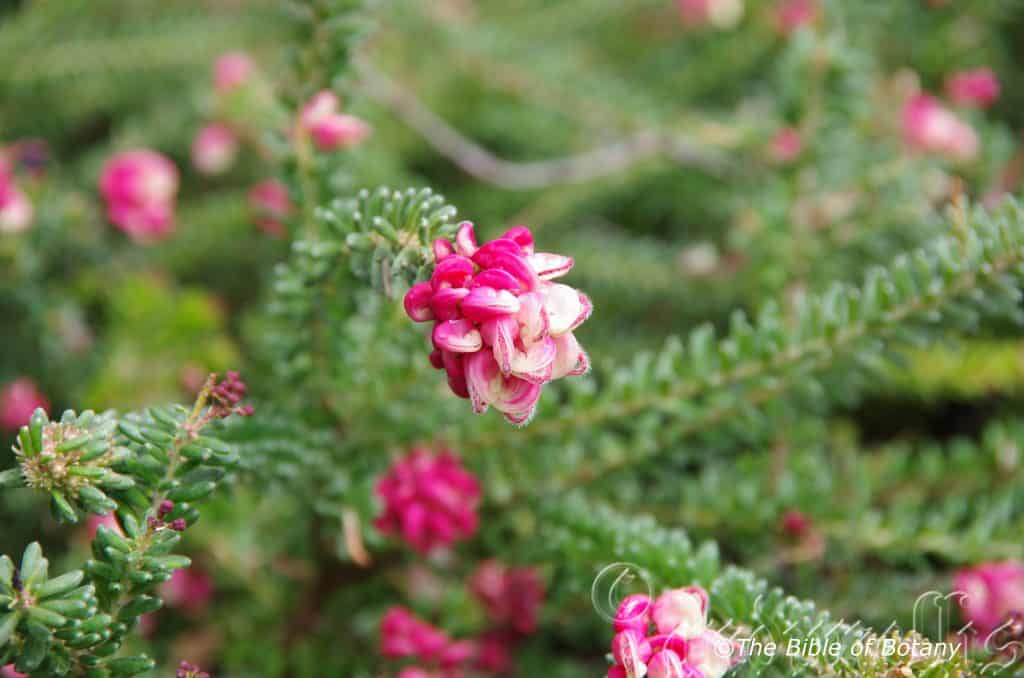
National Botanical Gardens ACT
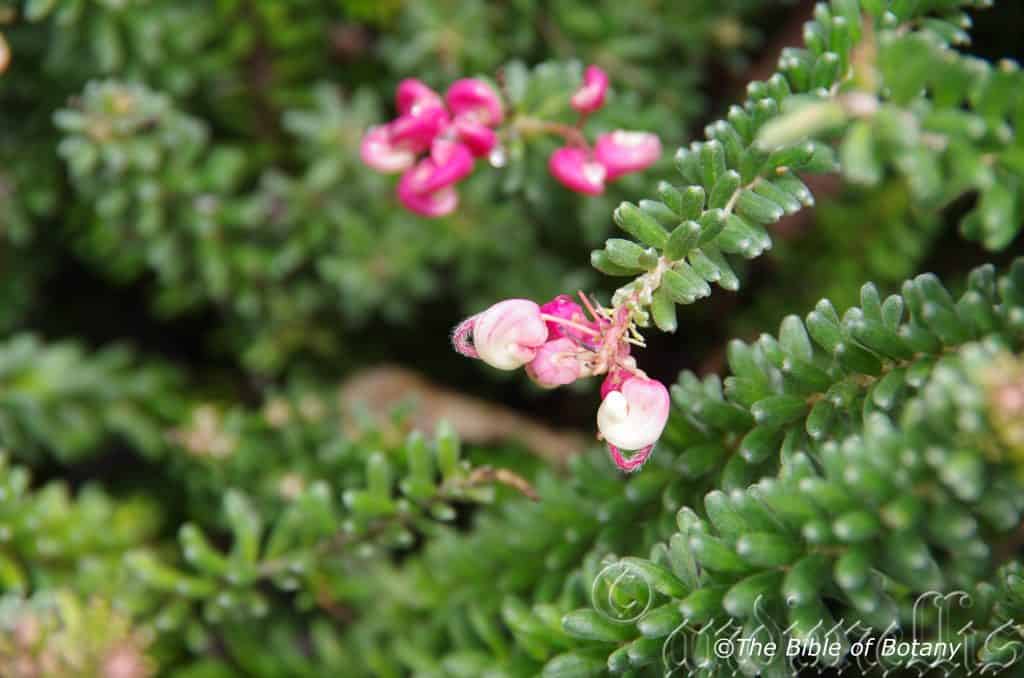
National Botanical Gardens ACT
Grevillea lanigera
Classification:
Class: Magnoliopsida
Order: Proteales
Family: Proteaceae
Genus: Is named in honour of C. F. Greville; 1749-1809, who was a British expert botanist on Algae, a foundation member of the London Horticultural Society and a collector of rare plants.
Species: From Lanos, which is Latin for woolly and Ferra, which is Latin for to bear. It refers to organs, which are sparsely to densely covered in long woolly type hairs.
Sub Species:
Common Name: Woolly Grevillea.
Distribution:
Grevillea lanigera is a widespread specie in the southern eastern half of New South Wales south of Dubbo and on the eastern half of Victoria to Wilsons Promontory.
It is found west to the Grampians, and south to Apollo Bay on the western side of Melbourne. Despite its wide distribution it is never the dominant shrub in an area.
https://avh.ala.org.au/occurrences/search?taxa=Grevillea+lanigera#tab_mapView
Habitat Aspect Climate:
Grevillea lanigera prefers full sun to light dappled shade. It grows on hills, slopes, flats and valleys usually in moist sites near water, including riparian scrubs open snow-gum woodlands or tall eucalypt forests. The altitude ranges from 50 meters ASL to 1280 meters ASL.
The temperatures range from minus 3 degree in August to 33 degrees in January.
The rainfalls range from lows of 300mm to an average of 1600mm annually.
Soil Requirements:
Grevillea lanigera prefers sandy fatty loams, light clay soils or gravelly clays over granite, sandstone, serpentine or limestone. The soils are usually derived from decomposed to partially decomposed granites, sandstone, serpentine, shale, metamorphic rocks or limestone. The soils pH ranges from 5pH to 8pH are preferred. It does not tolerate waterlogged soils. Non saline soils to moderately saline soils are tolerated.
Height & Spread:
Wild Plants: 0. 2m to 2m by 0. 6m to 3m.
Characteristics:
Grevillea lanigera‘s larger stems are pale grey. Branchlets are a pale grey to pale grey green and are glabrous to sparsely covered in white villous hairs.
Its densely packed alternate or almost opposite, simple leaves are narrow oblong-elliptical to narrow oblanceolate or linear. The leaves measure 5mm to 40mm in length by 1mm to 5mm in width. The petioles are covered in white villous hairs and measure 0. 5mm to 1mm in length. The bases are cuneate while the apexes are obtuse to truncate. The concolourous laminas are semi glossy to dull, glaucous-green to dull grey-green and usually scabrous or at times moderately covered in white villous hairs on the upper lamina while the lower lamina is covered in white villous or lanate hairs. The laminas are rounded decurve to revolute at the margins while the margins are entire.
The decurve or erect acroscopic conflorescences are decurve and sub secund, with 2 to 10 individual flowers born terminally or on short lateral branches. The glabrous rachises measure 2. 5mm to 35mm in length while the glabrous pedicels measure 4. 5mm to 6. 5mm in length. The style and perianth are the most prominent part of the flower. Individual perianths are variable, cream, pastel pink to deep, bright rose-pinks and pale crimson turning creamy yellow at the apex of the lobes. The perianth is glabrous externally and is covered in white hirsute hairs internally. The perianths measure 4mm to 6mm in length while the lobes measure 8mm to 12mm in length while the lobes are strongly recurved and joined at the apex.
The styles are pale pink to bright pink with a bright deep pink to pinkish-red stigma. The style is covered in white villous and tomentose hairs form the base almost to the stigma. The pistils measure 13. 5mm to 19. 5mm in length while the lateral stigma and pollen presenter are deep crimson. The stipe is glabrous and measures 0. 5mm to 1mm in length. The ovary is densely covered in white villous hairs. The pedicels measure 3mm to 4mm in length. The flowers appear from July to December.
The fruits are ellipsoidal to narrow ovoidal follicles. The follicles are sparsely covered in white villous hairs and are faintly ridged along the opening. They measure 10mm to 15mm in length by 4mm to 9mm in width. The pale blue-green follicles turn dull grey-brown when ripe.
Wildlife:
The dense foliage and proliferation of small flowers over a long period make the plants very attractive to many pollen and nectar feeding insects which in return feed insectivorous birds.
Cultivation:
Grevillea lanigera is a beautiful small Grevillea when in flower for temperate, arid and sub-tropical native gardens where light to heavy clays, gravelly clays or rockery soils occur. It is small well rounded bushy shrubs from 1 meter to 2 meters in height by 1 meter to 2 meters in diameter or prostrate ground covers from 0. 2 meters to 0. 4 meters in height by 2. 5 meters to 4 meters in diameter in the garden when grown in the open. The foliage can be regularly tip pruned to encourage new growth, bushiness, flowering and to maintain a smaller plant in the garden. The foliage is just as attractive as the flowers and gives the plants a compact dense appearance. There are a number of cultivars available from dwarf forms to prostrate which all have variations in flower colour from almost entirely cream to almost carmine.
A bend in a path can be broken up by placing them at the bend. Place it in the foreground with medium and larger plants behind. Plants with either small red flowers or white flowers can be used in the mid ground while large foliaged plants with large flowers can be placed in the background. In the foreground try using prostrate plants with bright green fine leaves. This will lead your eyes down and over to the background. Whether it is in flower or not these plants will catch your attention and the viewer will be transfixed on the display rather than watching the path. Small Acacias can be used to great effect as their flowering will compliment that of the deeper pinks but do not use the Acacia specie if the pale pink forms or whites are being grown as the Acacia specie will drown them out. If using Acacia specie ensure that it is shorter and the foliage is a pale green to contrast the foliages when it is not in flower.
Because of its small size, beautiful dense foliage and prolific flowering, it can make a great contribution around fish and frog ponds. Mix them with short strap leaf plants leaving space between so you can see the rocks, logs or other features.
When mass planting Grevillea lanigera use curves and irregular patterns so it can be viewed from different angles around the garden. When mass planting in raised garden beds or a large bog garden space the plants at 1. 5 meters should be considered. If you are using them amongst rocks or around the small bog garden plant them sparingly, so not to make the area look cluttered or detract from the other features. 3 or 4 in an area of 50 square meters would be ample. 3 plants separately planted or plant 2 close together and separate the other 2 to give width and depth where you want it.
Grevillea lanigera responds to watering, pruning and fertilizing using native fertilizers.
Propagation:
Seeds: Sow the seeds of Grevillea lanigera directly into a seed raising mix. Cover them with 5mm of fine sand and keep moist not wet. Place the tray in a warm sunny position. When the seedlings are 25mm to 50mm tall, prick them out and plant them into 50mm native tubes using a good organic mix.
Once the seedlings reach 150mm to 200mm in height, nip the tips out before planting them out into their permanent position. For mass plantings plant them out at 1 meter to 3 meter centers depending on which sub species is being grown and whether it is used as a feature shrub or mingled into a bush scene.
Fertilize using Seaweed, fish emulsion or a half strength solution of organic chicken pellets soaked in water on an alternate basis. Fertilize every 3 months until the plants are well established then annually to assist in prolific blooming and healthy growth. Avoid synthetic fertilizers as they may contain high levels of phosphorus and calcium which are toxic to most members of the Proteaceae family.
Cuttings:
Use 50mm to 100mm long half ripened material when growing from cuttings from the present season’s growth. Take them in mid-autumn or early spring. Remove half the leaves from the bottom section being careful not to tear the bark.
1 Prepare the cutting mix by adding one third sharp clean river sand, one third peat and one third perlite. These ingredients need to be sterilized,
2 Select good material from non diseased plants,
3 Select semi green stems for cuttings. Look for a stem with two or three nodes,
4 Place the cutting on a flat, hard surface, and make a clean cut down one side of the cutting at the base for 10mm with a sharp sterile knife or razor blade. – This scarification of the node will increase the chances of roots emerging from this spot. Now remove all but one or two the leaves, leaving the apex leaves in tact. If the leaves are very large in proportion to the stem, cut off the apical halves.
5 Fill a saucer with water, and place a little medium strength rooting hormone into another container like a milk bottle top. Dip the node end of the cutting into the water and then into the rooting hormone. Tap off any excess hormone,
6 Use a small dipple stick or old pencil to poke a hole into the soilless potting mix. Ensure the hole is slightly larger than the stem diameter and be careful not to wipe the rooting hormone off the cuttings base, place the cuttings in a pattern ensuring the cuttings are not touching each other,
7 I like to place the pots in Plastic bags to help maintain temperature and moisture. Place in a semi shaded place like under 50mm shade cloth.
8 When the cuttings have struck, open the bag to allow air circulation for a few days to a week,
9 Once hardened off remove the cuttings from the bag and allow to further hardening for a few more days,
10 Transplant into a good potting mix to grow on.
Fertilize using seaweed, fish emulsion or organic chicken pellets soaked in water on an alternate basis. Fertilize every two months until the plants are established then twice annually in early September or March to maintain health, vitality and better flowering. Avoid synthetic fertilizers as they will most likely contain calcium and phosphorus at levels, which are toxic to most Proteaceae.
Further Comments from Readers:
Hi reader, it seems you use The Bible of Botany a lot. That’s great as we have great pleasure in bringing it to you! It’s a little awkward for us to ask, but our first aim is to purchase land approximately 1,600 hectares to link several parcels of N.P. into one at The Pinnacles NSW Australia, but we need your help. We’re not salespeople. We’re amature botanists who have dedicated over 30 years to saving the environment in a practical way. We depend on donations to reach our goal. If you donate just $5, the price of your coffee this Sunday, We can help to keep the planet alive in a real way and continue to bring you regular updates and features on Australian plants all in one Botanical Bible. Any support is greatly appreciated. Thank you.
In the spirit of reconciliation we acknowledge the Bundjalung, Gumbaynggirr and Yaegl and all aboriginal nations throughout Australia and their connections to land, sea and community. We pay our respect to their Elders past, present and future for the pleasures we have gained.
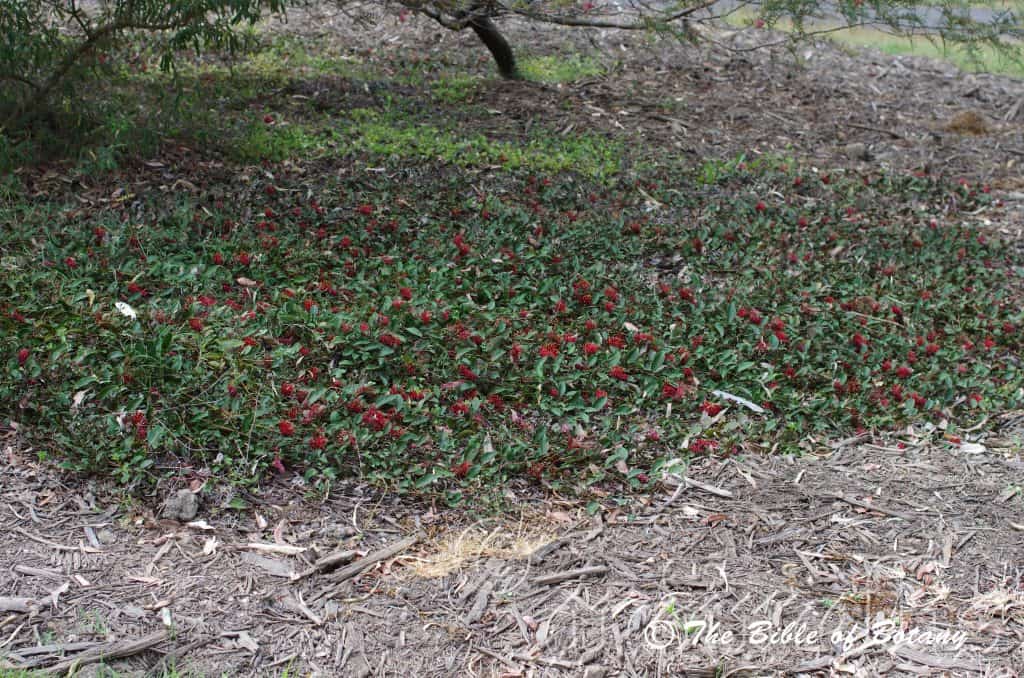
Mount Cootha Botanical Gardens Qld.
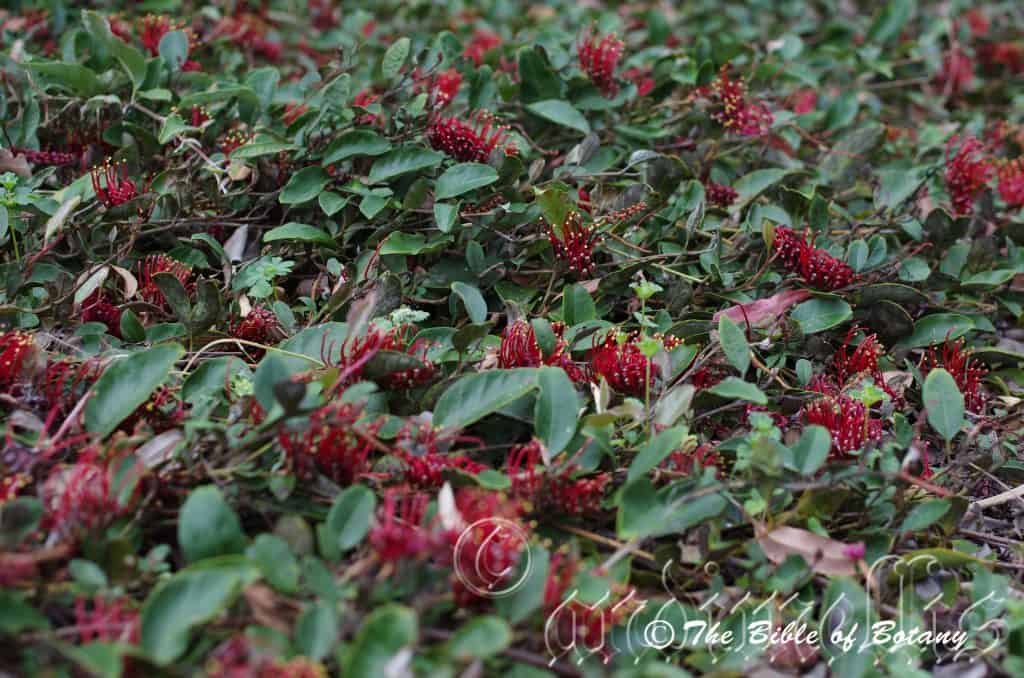
Mount Cootha Botanical Gardens Qld.
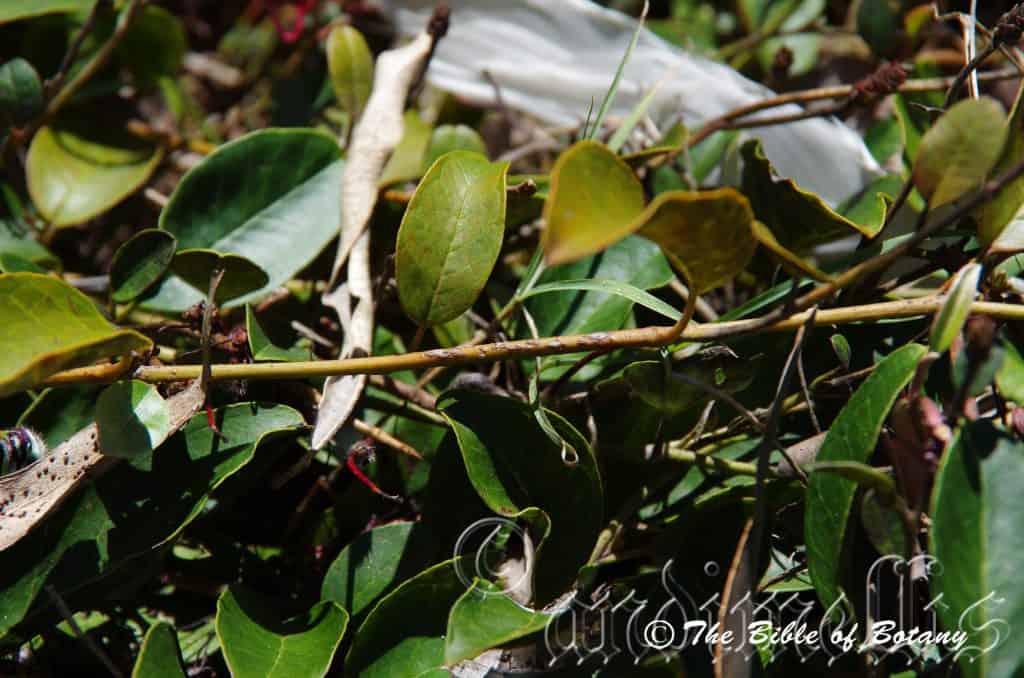
Author’s Garden The Pinnacles NSW
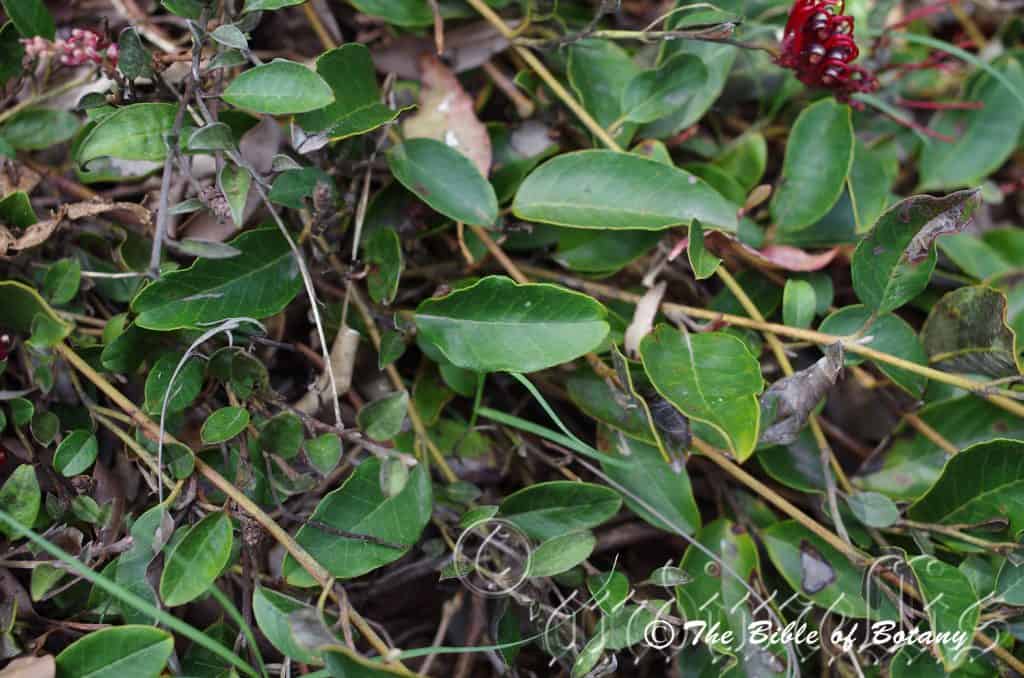
Mount Cootha Botanical Gardens Qld.
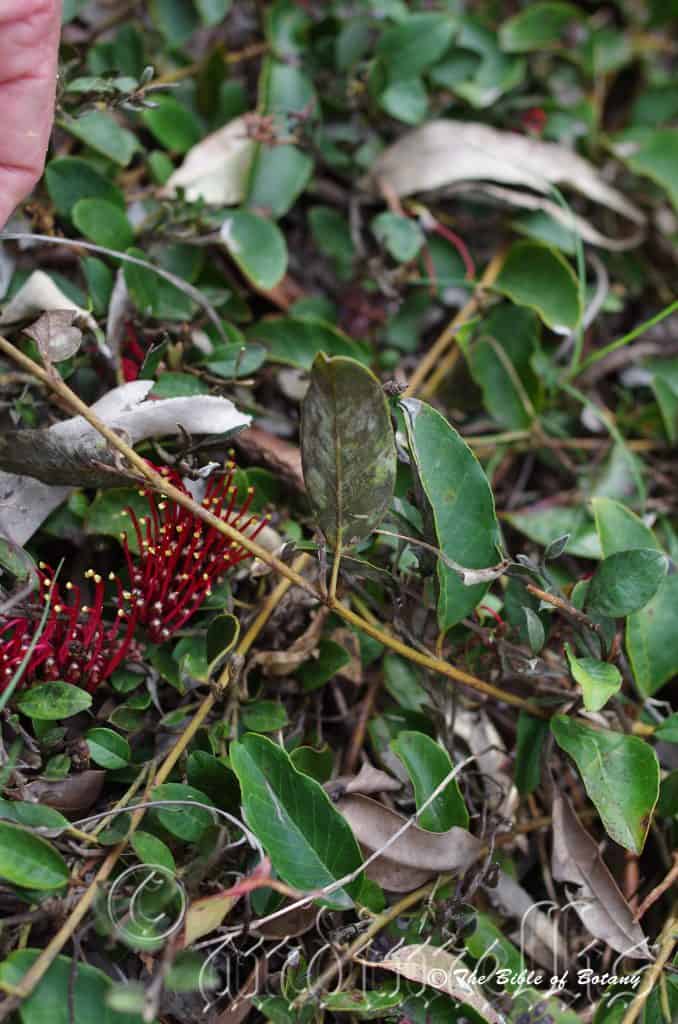
Mount Cootha Botanical Gardens Qld.
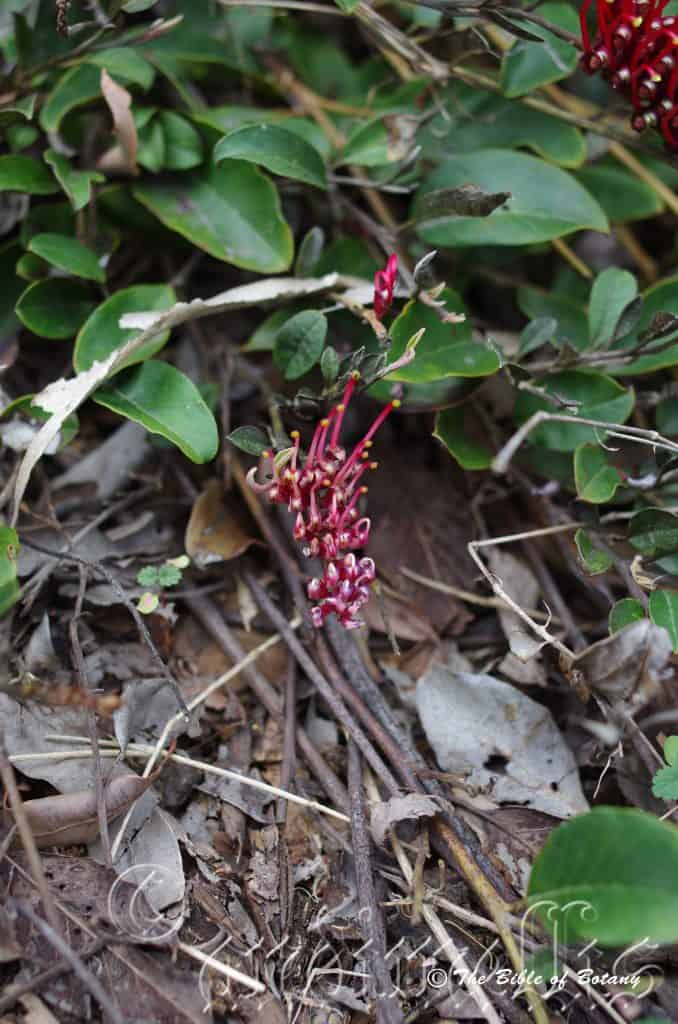
Mount Cootha Botanical Gardens Qld.
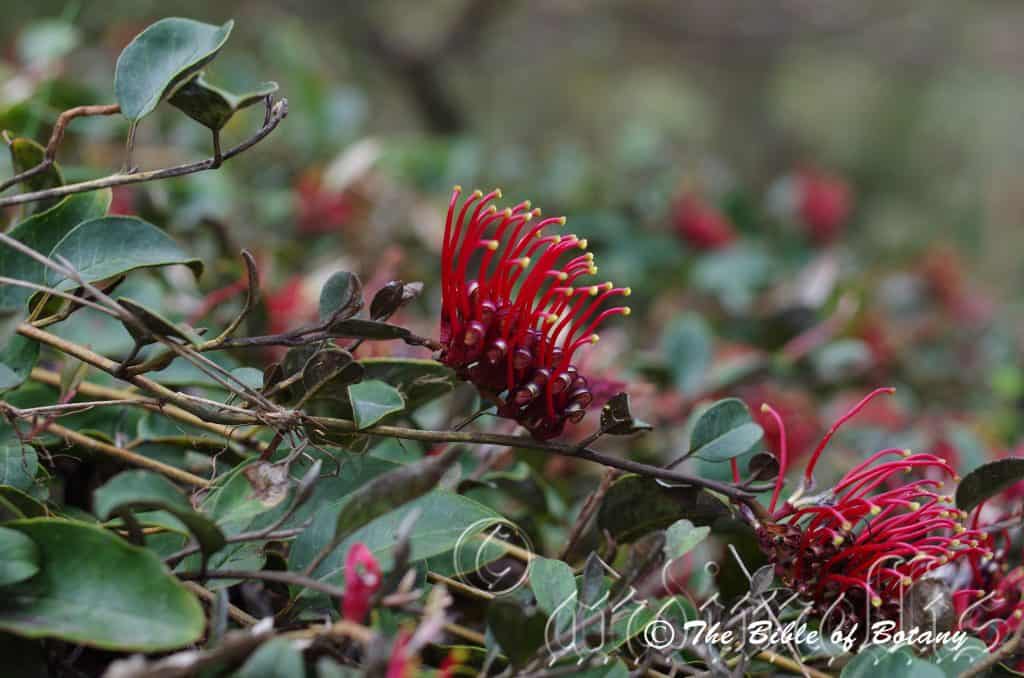
Mount Cootha Botanical Gardens Qld.
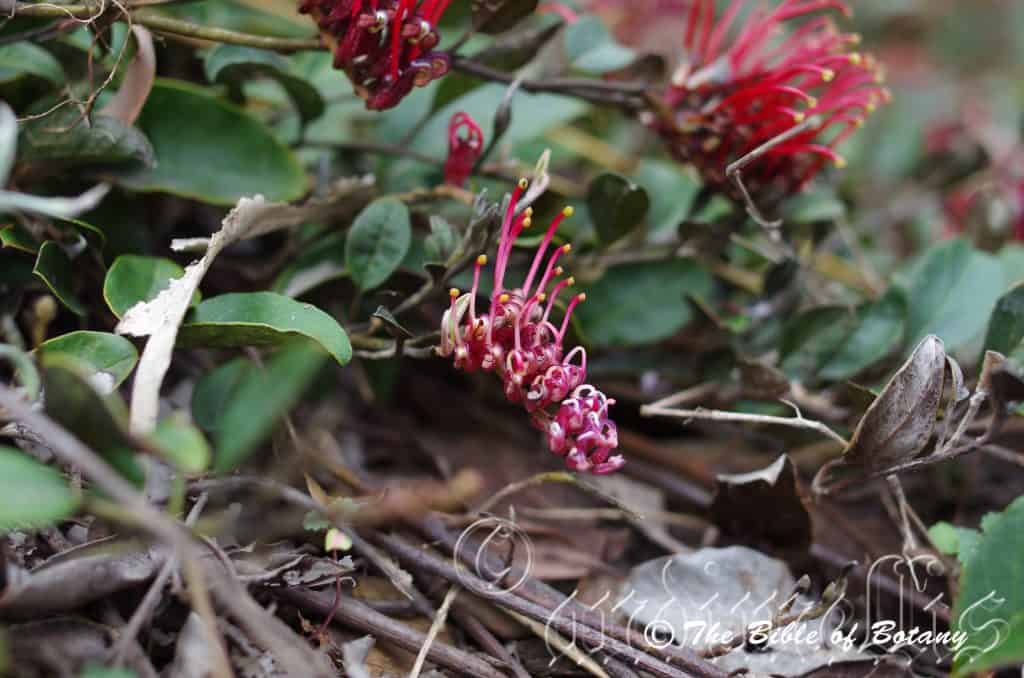
Mount Cootha Botanical Gardens Qld.
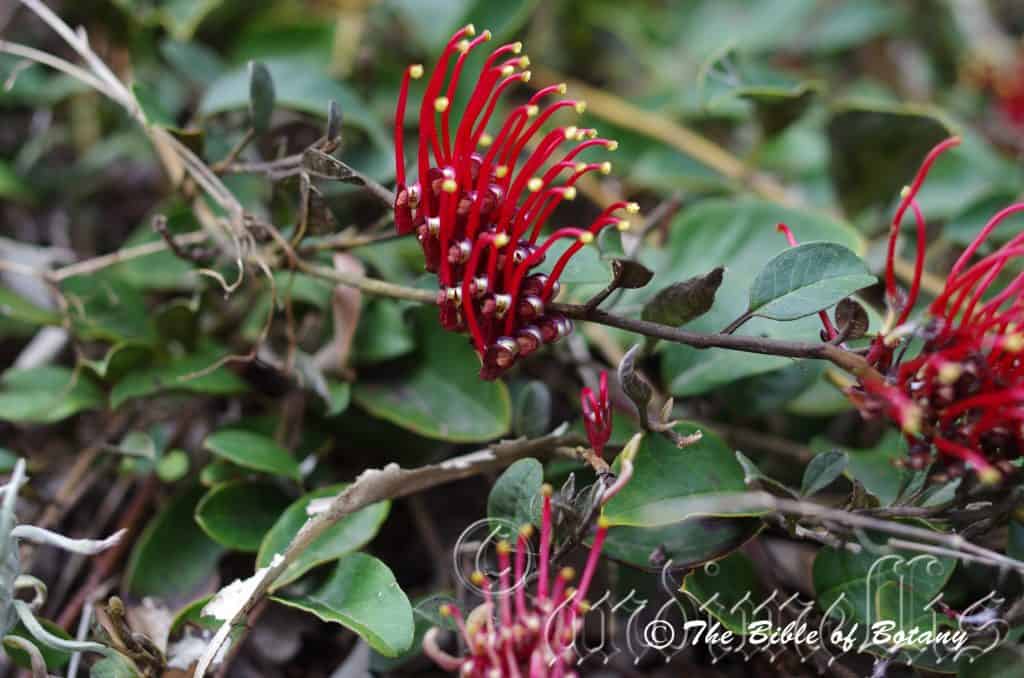
Mount Cootha Botanical Gardens Qld.
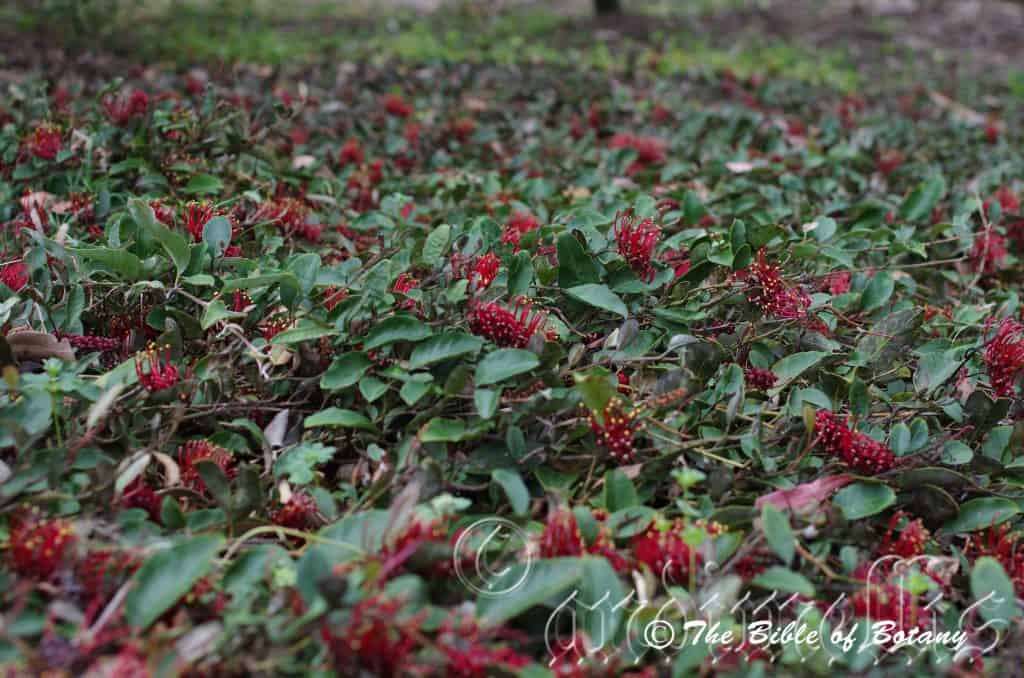
Mount Cootha Botanical Gardens Qld.
Grevillea laurifolia
Classification:
Class: Magnoliopsida
Order: Proteales
Family: Proteaceae
Genus: Is named in honour of C. F. Greville; 1749-1809, who was a British expert botanist on Algae, a foundation member of the London Horticultural Society and a collector of rare plants.
Species: From Laurus, which is Latin for praise or commendation thus praise for the Laurel or Bay tree or a small crown or wreath made from Laurel leaves and Folium, which is Latin for foliage. It refers to leaves, which resemble the European Laurel tree.
Sub species:
Common Name: Laurel Leaf Grevillea.
Distribution:
Grevillea laurifolia is an endemic species to New South Wales. It is found on the lower ranges to high in the Blue Mountains south from Newnes to south of Wombeyan Caves.
https://avh.ala.org.au/occurrences/search?taxa=Grevillea+laurifolia#tab_mapView
Habitat Aspect Climate:
Grevillea laurifolia prefers full sun to dappled shade. It grows below medium size trees in open woodlands and in low dry sclerophyll forests. It is found on gentle slopes, elevated flats, ridges and adjacent to swamps. The altitude ranges from 600 meters ASL to 1180 meters ASL.
The temperatures range from minus 2 degrees in July to 32 degrees in January.
The rainfall ranges from lows of 900mm to an average of 1250mm annually.
Soil Requirements:
Grevillea laurifolia prefers sand to light clays. The soils are derived from various types of decomposed sandstone or quartz outcrops. The soils pH ranges from 5pH to 6pH are preferred. It does not tolerate waterlogged soils. Non saline soils to moderately saline soils are tolerated.
Height & Spread:
Wild Plants: 0. 50m to 0. 75m x 2m to 4. 5m.
Characteristics:
Grevillea laurifolia is a prostrate plant with stems that are flexuosa, thin and reddish-brown, glabrous and dull. New shoots are olive-yellow to olive-green at the apexes glabrous and semi glossy. The apexes are densely covered in deep grey appressed sericeous hairs.
The simple alternate, almost opposite leaves are ovate, elliptical, oblong and sometimes cordate. The leaves measure 25mm to 160mm in length by 20mm to 60mm in width. The olive-yellow petioles are strongly grooved on the upper surface and measure 5mm to 12mm in length. The non-oblique to slightly oblique bases are broadly rounded while the apexes are acute to acuminate. The discolourous upper laminas are deep green to sea-green and glabrous or very sparsely covered in fine deep grey sericeous hairs on the upper laminas while the lower laminas are paler and densely covered in deep grey sericeous hairs. The laminas are flat to recurve upwards from the mid vein to the margins or are concave on the upper surface and strongly decurve downwards close to the apex. The margins are entire and are slightly undulating to strongly undulating. The olive-yellow mid vein is strongly prominent on the lower lamina while the lateral veins are prominent on the lower lamina. It is visible on the upper lamina.
The inflorescence is a short globose raceme which is born terminally or from the leaf axils. The secunds have 12 to 36 individual flowers. The rachis and pedicels are covered in off white appressed sub sericeous hairs. The rachises measure 20mm to 80mm in length while the pedicels measure 5mm to 3mm in length. The perianth and style are the most prominent parts of the flower.
The individual perianths are variable, reddish-grey to maroon-red from the base through to the regular lobes externally and are reddish-grey to maroon-red on the basal third to yellow or greenish-yellow internally while the margins retain the reddish-grey to maroon-red of the base. The perianths are sparsely covered in off white, appressed, sub sericeous to sub tomentose hairs externally and are glabrous internally. The lobes are strongly recurved and are joined at their apex. The perianths measure 4mm to 7mm in length while the lobes measure 8mm to 15mm in length. The pedicel measures 1. 5mm to 4mm in length.
The anthers are white to pale yellow with white or pale yellow pollen. The style is pastel pink to red at the base and turns deep red to deep crimson-red at the stigma. The almost erect to semi oblique stigma is greenish to greenish-yellow while the pollen presenter is dull yellow. The pistils measure 13mm to 25mm in length. The erect style and bends 90 degrees on a curve as it approaches the stigma. The ovary is stipitate and glabrous. The flowers appear from September to January.
The fruit is a thick ellipsoidal follicle. The style is not persistent. The follicles are glabrous, dull to semi glossy and covered in white sericeous hairs. It is blue-green turning a deep red-brown with deep red-brown longitudinal stripes and markings as they ripen. They measure 9mm to 10mm in length by 4mm to 4. 5mm wide.
Wildlife:
Grevillea laurifolia‘s wildlife is unknown to the author.
Cultivation:
Grevillea laurifolia is an unusual foliage plant for most small to medium gardens in temperate and subtropical zones. As garden subjects it will grow from 100mm to 300mm in height by 3 meter to 6 meters in diameter in cultivation when grown in the open. Some tip pruning will help induce better lateral growth and flowering. It is fast growing, drought and cold tolerant down to at least minus 3 degrees.
It is most suitable for use as a solitary plant in sunny courtyards, besides pathways where the mid ground plants are set well back, large uneven rocky rockeries, along sandy banks or behind retaining walls to cascade over and for along driveways giving them breadth.
Because of its prostrate growth, beautiful foliage and deep red maroon flowers and new growth they can make a great contribution large flat rockeries or beneath a large feature tree. Because it is have a dense habit it can be used extensively instead of a lawn. Mix them with small shrubs especially those with yellow flowers for a great spring summer display. Acacia cultiformis dwarf or Acacia gunnii are 2 that will give a good contrast.
When you design a miniature garden, use contours to display the plants to their best. Plant a row of small shrubs on the top to represent the hills or a ridge or use them on the plains to give a feeling of expansive flatness with the hills in the distance. Another method would be to cover the hills in the distance with annuals that have soft grey foliage. This again would effectively represent the haze experienced in real life.
Propagation:
Seeds: Sow the seeds of Grevillea laurifolia directly into a seed raising mix. Cover them with 5mm of fine sand and keep moist not wet. Place the tray in a warm sunny position. When the seedlings are 25mm to 50mm tall, prick them out and plant them into 50mm native tubes using a good organic mix.
Once the seedlings reach 150mm to 200mm in height, nip the tips out before planting them out into their permanent position. For mass plantings plant them out at 1 meter to 3 meter centers depending on which sub species is being grown and whether it is used as a feature shrub or mingled into a bush scene.
Fertilize using Seaweed, fish emulsion or a half strength solution of organic chicken pellets soaked in water on an alternate basis. Fertilize every 3 months until the plants are well established then annually to assist in prolific blooming and healthy growth. Avoid synthetic fertilizers as they may contain high levels of phosphorus and calcium which are toxic to most members of the Proteaceae family.
Cuttings:
Use 40mm to 70mm long half ripened material when growing from cuttings from the present season’s growth. Take them in mid-autumn or early spring. Remove half the leaves from the bottom section being careful not to tear the bark.
1 Prepare the cutting mix by adding one third sharp clean river sand, one third peat and one third perlite. These ingredients are sterilize,
2 Select good material from non diseased plants,
3 Select semi green stems for cuttings. Look for a stem with two or three nodes,
4 Place the cutting on a flat, hard surface, and make a clean cut down one side of the cutting at the base for 10mm with a sharp sterile knife or razor blade. – This scarification of the node will increase the chances of roots emerging from this spot. Now remove all but one or two the leaves, leaving the apex leaves in tact. If the leaves are very large in proportion to the stem, cut off the apical halves.
5 Fill a saucer with water, and place a little medium strength rooting hormone into another container like a milk bottle top. Dip the node end of the cutting into the water and then into the rooting hormone. Tap off any excess hormone,
6 Use a small dipple stick or old pencil to poke a hole into the soilless potting mix. Ensure the hole is slightly larger than the stem diameter and be careful not to wipe the rooting hormone off the cuttings base, place the cuttings in a pattern ensuring the cuttings are not touching each other,
7 I like to place the pots in Plastic bags to help maintain temperature and moisture. Place in a semi shaded place like under 50mm shade cloth.
8 When the cuttings have struck, open the bag to allow air circulation for a few days to a week,
9 Once hardened off remove the cuttings from the bag and allow to further hardening for a few more days,
10 Transplant into a good potting mix to grow on.
Fertilize using seaweed, fish emulsion or organic chicken pellets soaked in water on an alternate basis. Fertilize every two months until the plants are established then twice annually in early September or March to maintain health, vitality and better flowering. Avoid synthetic fertilizers as they will most likely contain calcium and phosphorus at levels, which are toxic to most Proteaceae.
Further Comments from Readers:
Hi reader, it seems you use The Bible of Botany a lot. That’s great as we have great pleasure in bringing it to you! It’s a little awkward for us to ask, but our first aim is to purchase land approximately 1,600 hectares to link several parcels of N.P. into one at The Pinnacles NSW Australia, but we need your help. We’re not salespeople. We’re amature botanists who have dedicated over 30 years to saving the environment in a practical way. We depend on donations to reach our goal. If you donate just $5, the price of your coffee this Sunday, We can help to keep the planet alive in a real way and continue to bring you regular updates and features on Australian plants all in one Botanical Bible. Any support is greatly appreciated. Thank you.
In the spirit of reconciliation we acknowledge the Bundjalung, Gumbaynggirr and Yaegl and all aboriginal nations throughout Australia and their connections to land, sea and community. We pay our respect to their Elders past, present and future for the pleasures we have gained.
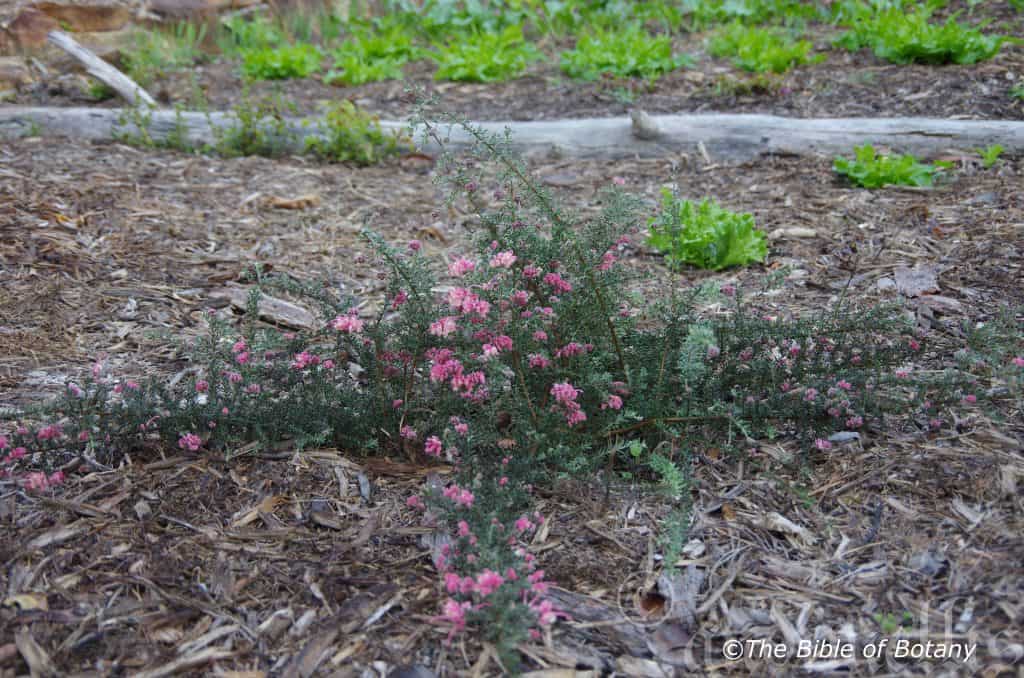
Author’s Garden The Pinnacles NSW
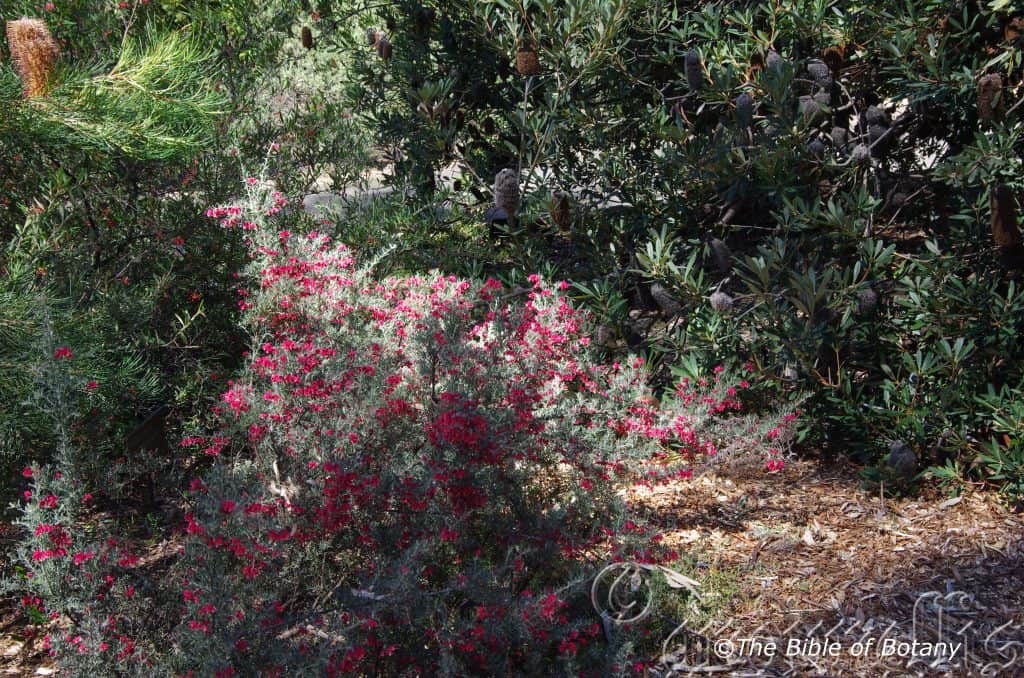
National Botanic Gardens ACT
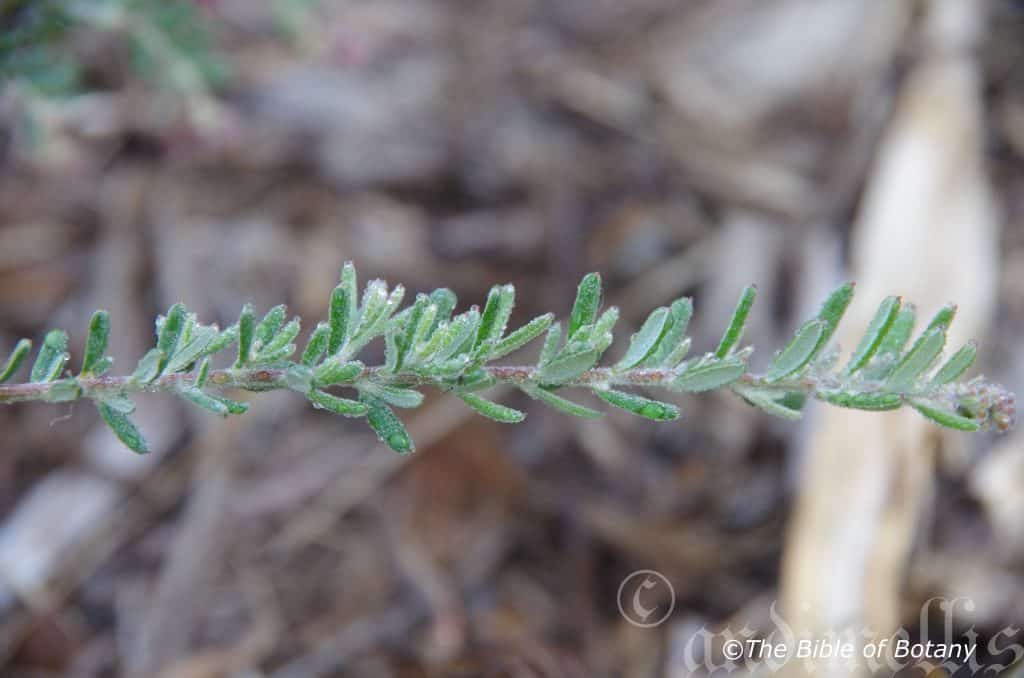
Author’s Garden The Pinnacles NSW
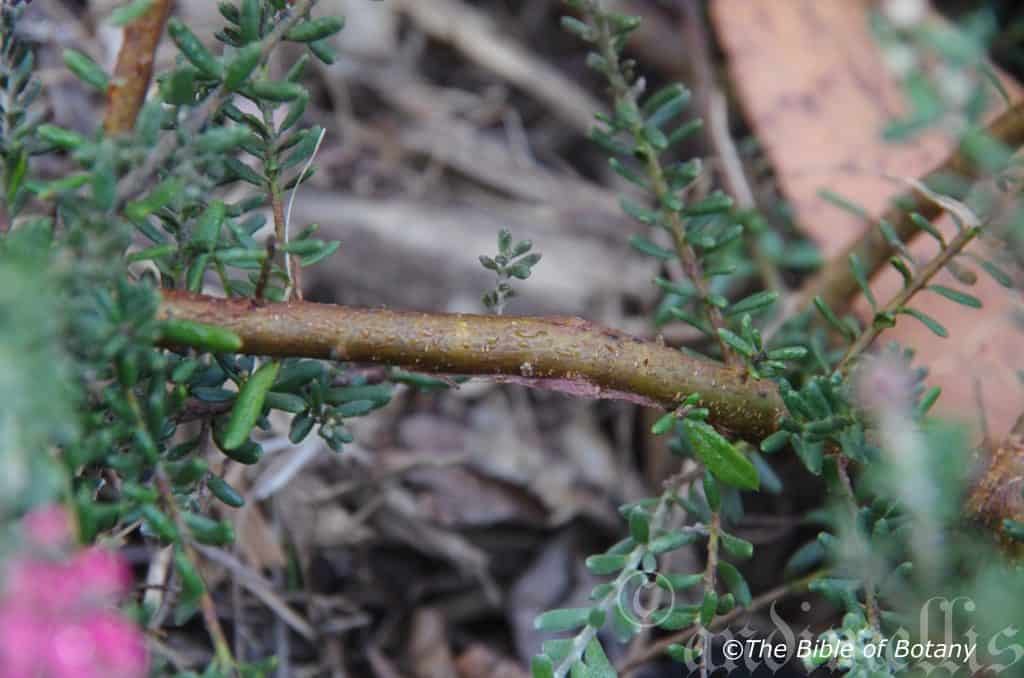
Author’s Garden The Pinnacles NSW
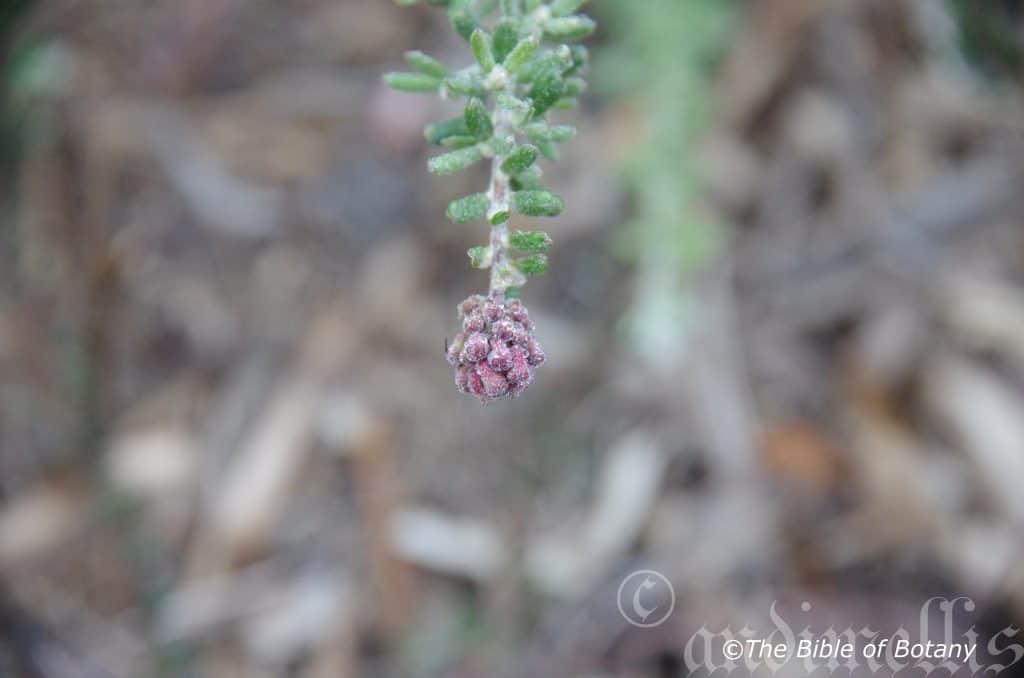
Author’s Garden The Pinnacles NSW
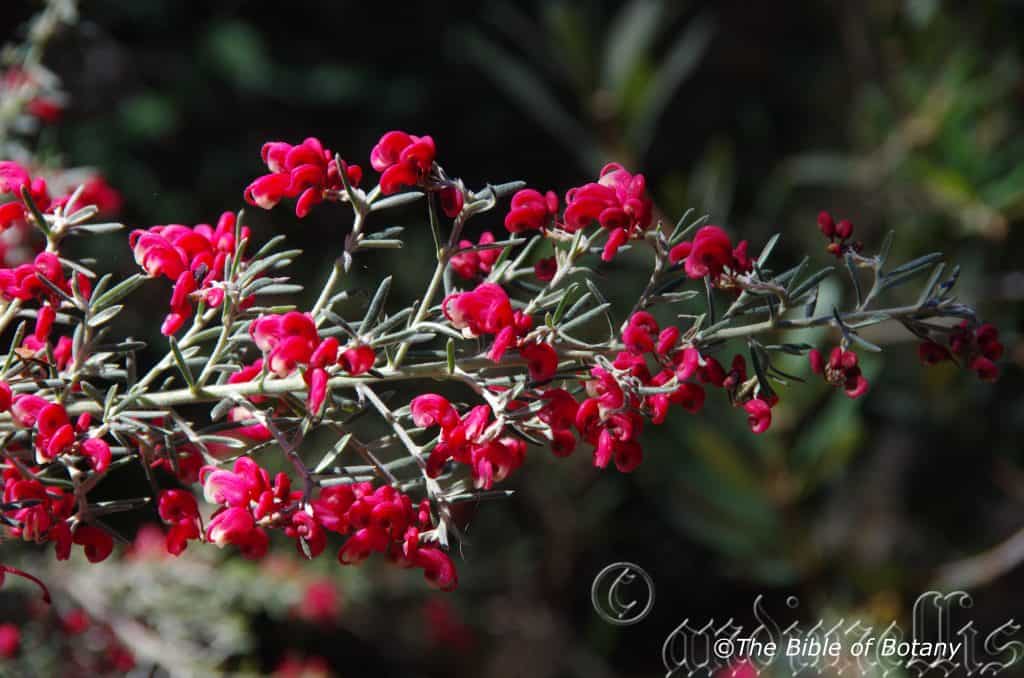
National Botanic Gardens ACT
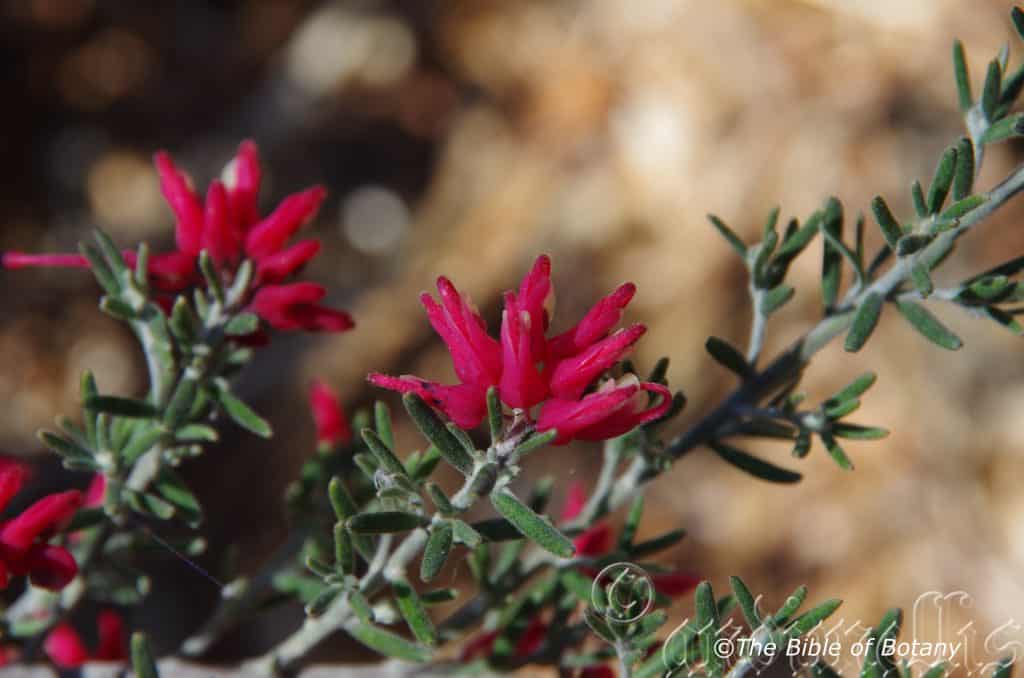
National Botanic Gardens ACT
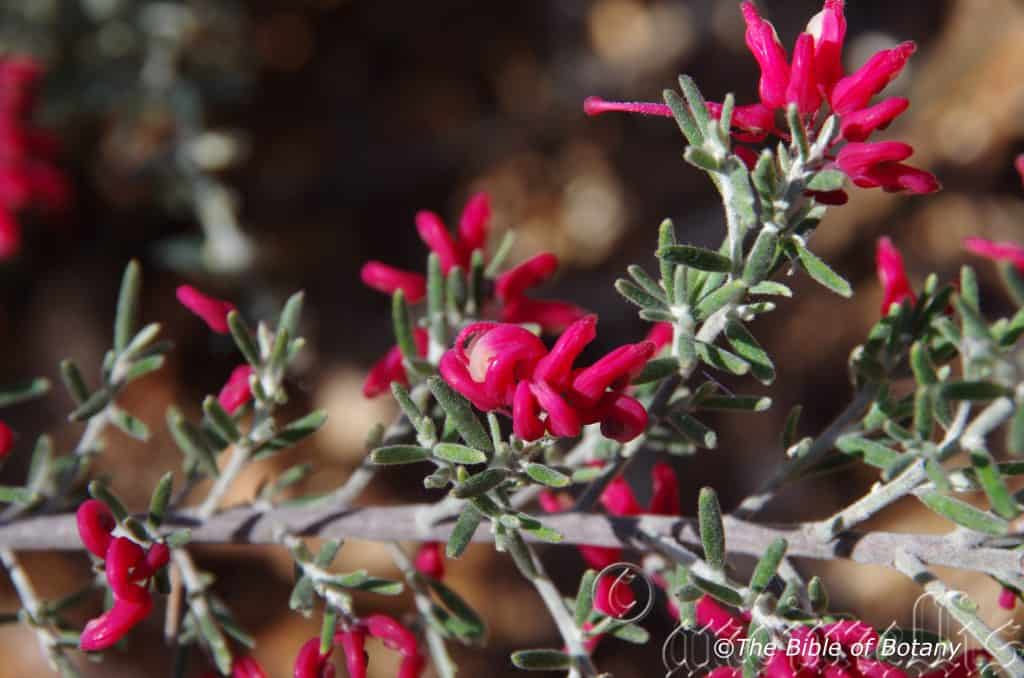
National Botanic Gardens ACT
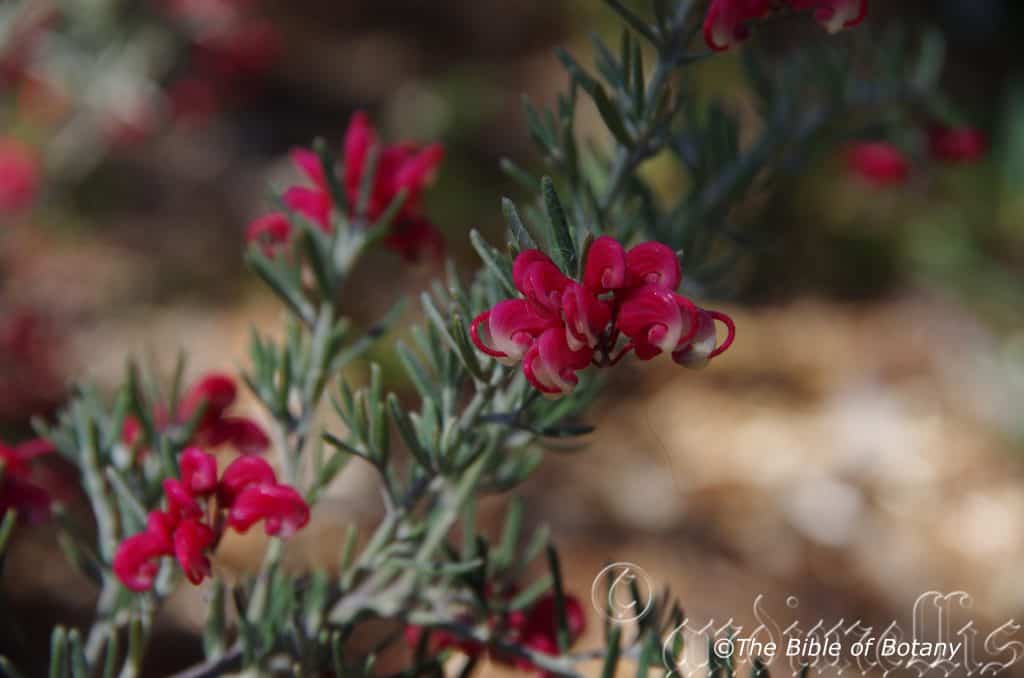
National Botanic Gardens ACT
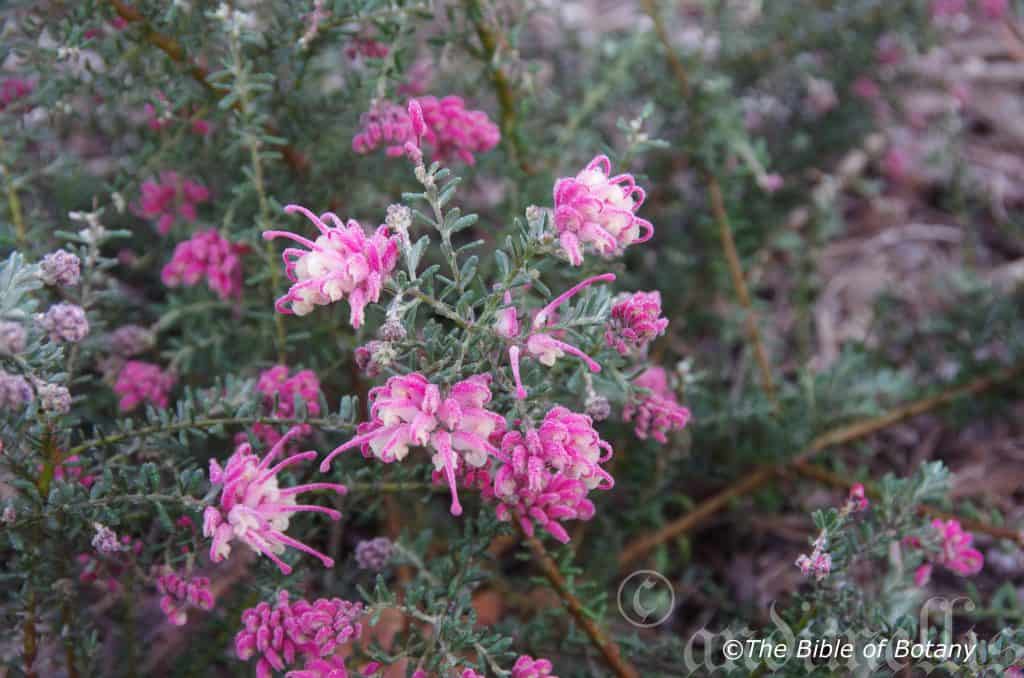
Author’s Garden The Pinnacles NSW
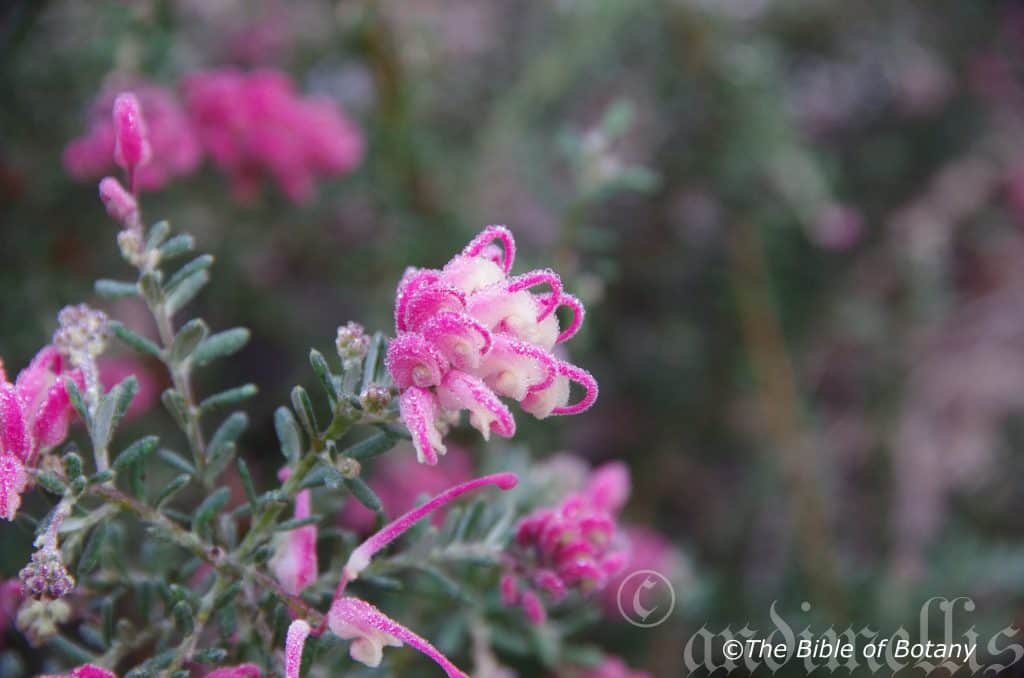
Author’s Garden The Pinnacles NSW
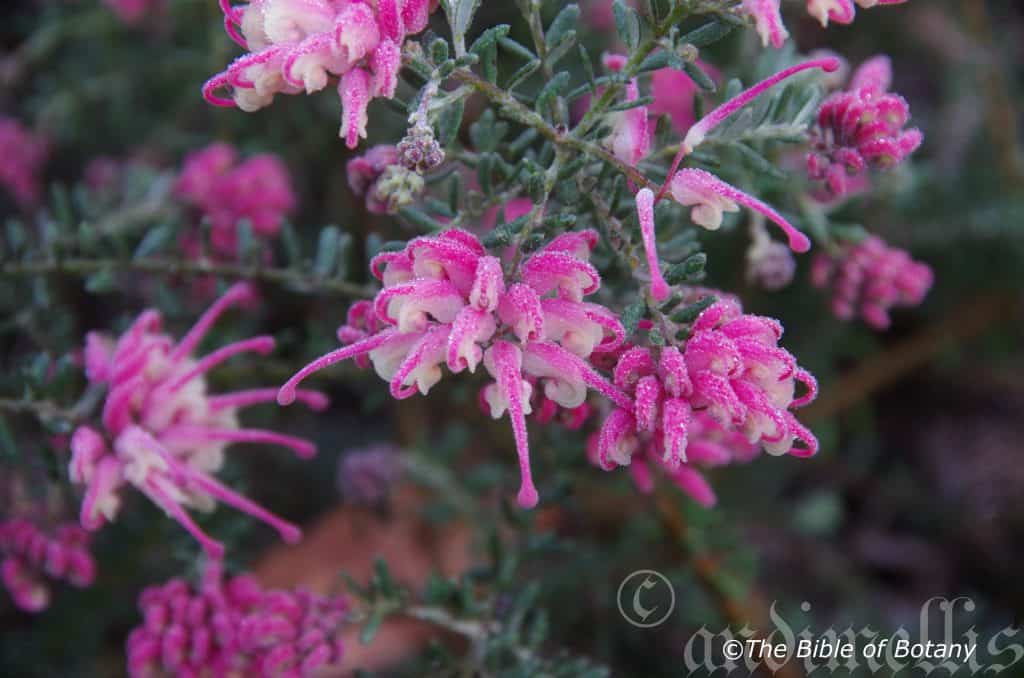
Author’s Garden The Pinnacles NSW
Grevillea lavandulacea
Classification:
Class: Magnoliopsida
Order: Proteales
Family: Proteaceae
Genus: Is named in honour of C. F. Greville; 1749-1809, who was a British expert botanist on Algae, a foundation member of the London Horticultural Society and a collector of rare plants.
Species: From Lavandula, which is Latin for Lavender and Acaea, which is Latin for the family. It refers to plants, which very closely resemble the plants in the Lavender family.
Sub species: Grevillea lavandulacea subsp. lavandulacea. From Lavandula, which is Latin for Lavender and Acaea, which is Latin for the family. It refers to plants, which very closely resemble the plants in the Lavender family.
Sub species: Grevillea lavandulacea subsp. rogersii. Is probably named in honour of Dr. Richard Saunders Rogers; 1862-1942, who was an Australian forensicologist and amateur herbarium collector mainly of native orchids but it cannot be substantiated 100mm.
Common Name: Lavender Grevillea.
Distribution:
Grevillea lavandulacea sub sp. lavandulacea is an endemic species to South Australia and central western Victoria. It is found south from the Flinders Ranges north of Port Augusta in South Australia to Kangaroo Island then south east to near Port Campbell to east of Melbourne in Victoria. There is also an outlying population on the east coast of Tasmania near St Helens.
Grevillea lavandulacea subsp. rogersii is confined to Kangaroo Island off the coast of South Australia.
https://avh.ala.org.au/occurrences/search?taxa=Grevillea+lavandulacea#tab_mapView
Habitat Aspect Climate:
Grevillea lavandulacea prefers full sun to light dappled shade. It grows below medium size trees in open woodlands, open heaths and in mallee heaths. It is found on gentle slopes, elevated flats and ridges. The altitude ranges from sea level to 300 meters ASL.
The temperatures range from minus 3 degrees in July to 35 degrees in January.
The rainfalls range from lows of 240mm to an average of 950mm annually.
Soil Requirements:
Grevillea lavandulacea prefers to grow on fatty sands, sandy loams to gritty medium clays. The soils are usually derived from decomposed to decomposed granites. The soils pH ranges from 5. 5pH to 7. 5pH are preferred. It does not tolerate waterlogged soils. Non saline soils
Height & Spread:
Wild Plants: 0. 3m to 1. 5m x 0. 7m to 1. 5m.
Characteristics:
Grevillea lavandulacea grows as a small rounded shrub with stems that vary greatly from deep grey, pale grey to pale grey-green. The branchlets are pale grey-green and densely covered in white sericeous hairs.
The simple adjacent leaves are sometimes crowded or at times on short lateral branches. The linear, broad linear to narrow elliptical leaves measure 5mm to 40mm in length by 2mm to 9mm in width. The petioles are densely covered in white sericeous hairs and measure 0. 5mm to 1mm in length. The bases taper to the petiole while the apexes are broadly acute. The discolourous laminas are blue-grey and glabrous or scabrous while the lower laminas are paler and moderately to densely covered in white sub sericeous to tomentose hairs in Grevillea lavandulacea sub sp. lavandulacea and densely covered in white lanate hairs in Grevillea lavandulacea subsp. rogersii The laminas decurve from the mid vein to the margins and slightly decurve from the bases to the apexes. The margins are entire and revolute or strongly revolute and may cover the lower lamina to the mid vein. The mid vein is slightly prominent on the lower lamina and is very faintly visible on the upper lamina.
The conflorescences is a short raceme which are born from the terminals or on short lateral branches from leaf axils or 2 flowered from the leaf axils. The subsecundus or densely clustered conflorescences usually have 2 to 8 flowers but can have up to 16 individual flowers while the rachises when present are covered in white tomentose or villous hairs and measure 1mm to 10mm in length. The perianth and style are the most prominent parts of the flower. The individual perianths are usually pale pink to deep rose-pink or at times red or rarely cream from the base through to the pastel pink or cream limbs or turn white at the apex. The limbs are regular and remain joined to the apexes. The perianths and lobes are sparsely covered in short white sericeous hairs externally and are covered in white hirtellous hairs internally. The perianths measure 5mm to 6mm in length while the lobes measure 15mm to 20mm in length.
The style is pale pink to deep pink or red from the base through to the stigma. The lateral pollen presenter is pale pink to deep pink or red. The pistils measure 21. 5mm to 28. 5mm in length. The style is moderately covered in white tomentose hairs at the base becoming glabrous below the stigma. The stipitate ovary is densely covered in white sericeous hairs. The perianth’s pedicels measure 3mm to 5mm in length. The flowers appear from July to December.
Grevillea lavandulacea‘s fruits are narrow ovoidal follicles. The style is persistent on the ripe follicles. The follicles are covered in white pulverulent to sub villous hairs are dull blue-green and turn deep grey-brown when ripe. They measure 11mm to 15mm in length by 6mm to 8mm wide.
Wildlife:
The flowers are a great attraction for small and medium size nectar eating birds, butterflies, beetles and native pollen flies.
Cultivation:
Grevillea lavandulacea is a beautiful small grey leaf shrub for most small gardens in temperate and subtropical zones. As garden subjects it will grow to 0. 2 meters in height by 1. 5 meters in width for the more prostrate forms and 1 meter to 1. 5 meters in height by 1 meter to 1. 5 meters in diameter for the erect forms when cultivated in the open. Some tip pruning will help induce better lateral growth and flowering especially in the erect forms. It is fast growing, drought tolerant once established and cold tolerant down to at least minus 4 degrees.
It is suitable for use around swimming pools, sunny courtyards, besides pathways, rockeries, along sandy banks and for along driveways screens.
In Native gardens it can be used for attracting smaller birds like silver eyes or butterflies, native bees, native flies or native beetles.
Placed near a bend in the garden or along a long driveway with other green leaf Grevillea it will gain a lot of attention and highlight the other green leaf shrubs. Mass plant those in the foreground with medium and large deep green leaf plants with white yellow or red flowers to the rear are very pleasing to the eye. This will lead your eyes down looking for more detail especially where the prostrate forms are grown in the foreground next to paths in a bush garden. I have used it extensively in bush gardens leading away from a path with taller shrubs either side. Whether it is in flower or not these plants will catch your attention and the viewer will be transfixed on the display of flowers rather than watching the path. Small prostrate Acacias or those to 1 meter in diameter with cream or white flowers can also be used to great effect as their flowering will compliment Grevillea lavandulacea. Ensure the prostrate or smaller Acacias have larger leaves and if they flower at the same time or in a different season would be of no consequence as the foliages would still deliver plenty of interest. This is one plant that benefits the gardener if mass planted together in small sections or planted singularly and scattered throughout the garden for contrast and colour. Plant them at 0. 8 meter to 1 meter centers.
Propagation:
Seeds: Sow the seeds directly into a seed raising mix. Cover them with 5mm of fine sand and keep moist not wet. Place the tray in a warm sunny position. When the seedlings are 25mm to 50mm tall, prick them out and plant them into 50mm native tubes using a good organic mix.
Once the seedlings reach 150mm to 200mm in height, nip the tips out before planting them out into their permanent position. For mass plantings plant them out at 1 meter to 3 meter centers depending on which sub species is being grown and whether it is used as a feature shrub or mingled into a bush scene.
Fertilize using Seaweed, fish emulsion or a half strength solution of organic chicken pellets soaked in water on an alternate basis. Fertilize every 3 months until the plants are well established then annually to assist in prolific blooming and healthy growth. Avoid synthetic fertilizers as they may contain high levels of phosphorus and calcium which are toxic to most members of the Proteaceae family.
Cuttings:
Use 40mm to 70mm long half ripened material when growing from cuttings from the present season’s growth. Take them in mid-autumn or early spring. Remove half the leaves from the bottom section being careful not to tear the bark.
1 Prepare the cutting mix by adding one third sharp clean river sand, one third peat and one third perlite. These ingredients are sterilize,
2 Select good material from non diseased plants,
3 Select semi green stems for cuttings. Look for a stem with two or three nodes,
4 Place the cutting on a flat, hard surface, and make a clean cut down one side of the cutting at the base for 10mm with a sharp sterile knife or razor blade. – This scarification of the node will increase the chances of roots emerging from this spot. Now remove all but one or two the leaves, leaving the apex leaves in tact. If the leaves are very large in proportion to the stem, cut off the apical halves.
5 Fill a saucer with water, and place a little medium strength rooting hormone into another container like a milk bottle top. Dip the node end of the cutting into the water and then into the rooting hormone. Tap off any excess hormone,
6 Use a small dipple stick or old pencil to poke a hole into the soilless potting mix. Ensure the hole is slightly larger than the stem diameter and be careful not to wipe the rooting hormone off the cuttings base, place the cuttings in a pattern ensuring the cuttings are not touching each other,
7 I like to place the pots in Plastic bags to help maintain temperature and moisture. Place in a semi shaded place like under 50mm shade cloth.
8 When the cuttings have struck, open the bag to allow air circulation for a few days to a week,
9 Once hardened off remove the cuttings from the bag and allow to further hardening for a few more days,
10 Transplant into a good potting mix to grow on.
Fertilize using seaweed, fish emulsion or organic chicken pellets soaked in water on an alternate basis. Fertilize every two months until the plants are established then twice annually in early September or March to maintain health, vitality and better flowering. Avoid synthetic fertilizers as they will most likely contain calcium and phosphorus at levels, which are toxic to most Proteaceae.
Further Comments from Readers:
Hi reader, it seems you use The Bible of Botany a lot. That’s great as we have great pleasure in bringing it to you! It’s a little awkward for us to ask, but our first aim is to purchase land approximately 1,600 hectares to link several parcels of N.P. into one at The Pinnacles NSW Australia, but we need your help. We’re not salespeople. We’re amature botanists who have dedicated over 30 years to saving the environment in a practical way. We depend on donations to reach our goal. If you donate just $5, the price of your coffee this Sunday, We can help to keep the planet alive in a real way and continue to bring you regular updates and features on Australian plants all in one Botanical Bible. Any support is greatly appreciated. Thank you.
In the spirit of reconciliation we acknowledge the Bundjalung, Gumbaynggirr and Yaegl and all aboriginal nations throughout Australia and their connections to land, sea and community. We pay our respect to their Elders past, present and future for the pleasures we have gained.
Grevillea leptobotrys
Classification
Class: Magnoliopsida
Order: Proteales
Family: Proteaceae
Genus: Is named in honour of C. F. Greville; 1749-1809, who was a British expert botanist on Algae, a foundation member of the London Horticultural Society and a collector of rare plants.
Species: From Leptos, which is Ancient Greek for delicate, fine or slender and Botrys, which is Ancient Greek for a bunch of grapes. It refers to flowers or fruits, which somewhat resemble the flowers or fruits of the commercial grape vines.
Sub species:
Common Name: Tangle Grevillea.
Distribution:
Grevillea leptobotrys is an endemic species to the south eastern corner of Western Australia south from the Swan River Plains to Albany.
https://avh.ala.org.au/occurrences/search?taxa=Grevillea+leptobotrys#tab_mapView
Habitat Aspect Climate:
Grevillea leptobotrys prefers full sun to light dappled shade. It grows below medium to tall trees in open woodlands and dry schlerophyll forests. It can be found gentle slopes, elevated flats and ridges. The altitude ranges from 10 meters ASL to 300 meters ASL.
The temperatures range from 3 degrees in July to 36 degrees in January.
The rainfalls range from lows of 300mm to an average of 1150mm annually.
Soil Requirements:
Grevillea leptobotrys prefers fatty sands, sandy loams to gritty medium clays. The soils are usually derived from decomposed granites, sandstones or quartz often over limestone. The soils pH ranges from 5pH to 7pH. It does not tolerate waterlogged soils. Non saline soils to moderately saline soils are tolerated.
Height & Spread:
Wild Plants: 0. 1m to 0. 5m x 1m to 2m.
Characteristics:
Grevillea leptobotrys stems are blue-green, grey-green to olive-green and glabrous. The young stems are blue-grey to pale soft grey-green and glabrous or sparsely to densely covered in soft, white tomentose hairs.
The adjacent leaves are very variable. The flexuosa or non flexuosa leaves are very variable, simple, toothed, compound pinnatifid or shallowly tripinnatisect with up to 3 orders of division and measure 30mm to 290mm in length by 30 to 200mm in width overall. The 7 to 15 primary ultimate lobes are occasionally divaricate, are triangular to ovate, oblong, or sub linear and usually measure 2mm to 35mmin length though lobes to 11mm in length by 1mm to 5mm in width. The indistinguishable petioles measure 50mm to 130mm in length. The bases are narrow attenuate while the apexes are acute. The concolourous laminas are blue-grey or grey-green and glabrous on the upper lamina while the lower lamina is pale glaucous green and covered in soft, white tomentose hairs. The margins are entire, recurved or tightly revolute and may or may not cover the lower lamina to the mid vein. The mid vein is prominent on the lower lamina and is clearly visible from the upper lamina forming a distinct concave groove.
The acroscopic conflorescences are short globose secunds to obconical are born terminally. The rachises have 24 to 48 flowers, are glabrous to sparsely covered in white sericeous hairs and measure 30mm to 50mm in length. The regular perianth and style are the most prominent parts of the flower. The individual perianths are pale pink to deep pink from the base through to the lobes. The perianth is glabrous to sparsely covered in white hirtellous appressed to erect hairs externally and is papillose internally. The perianths are minute at anthesis while the lobes measure 2mm to 6mm in length. The 4 lobes are dimorphic with 2 short and 2 long recurved and are free and reunite at their apexes. The perianths pedicels are sparsely covered in soft, white appressed tomentose hairs and measure 4. 5mm to 8mm in length.
The style is pale pink to deep pink from the base through to the stigma. The stigma and pollen presenter are pale yellow-green and turn a deeper shade of pink prior to anthesis and deep reddish-pink following anthesis. The erect style is glabrous and bends sharply behind the erect stigma and pollen presenter giving the appearance it is oblique. The pistils measure 4mm to 6. 5mm long. The ovary is glabrous and measures 1. 2mm to 1. 6mm in diameter while the stipule measures 1. 8mm to 2mm in length. The flowers appear from October to December.
Grevillea leptobotrys’ fruits are obovoidal to subclavate follicles. The style is persistent on the ripe follicles. The follicles are dull blue-green and turn deep grey-brown smooth to rugulose when ripe. It is non-viscid. The follicles measure 9mm to 14mm in length by 6mm to 10mm diameter.
Wildlife:
The flowers are a great attraction for butterflies, beetles, native bees and native pollen flies.
Cultivation:
Grevillea leptobotrys is a beautiful prostrate shrub that looks magnificent when in flower. The very unusual blue-grey leaves often with bronze margins will set this shrub apart from all its rivals in a small garden to the largest garden, whether it is in a temperate arid or sub-tropical zone. As garden subjects it will grow from 0. 3 meters to 0. 5 meter in height by 1 meter to 1. 5 meters in diameter when cultivated in the open. It is fast growing, drought tolerant once established and cold tolerant down to at least minus 2 degrees.
Before we venture further it must be pointed out that Grevillea leptobotrys is very difficult and sustaining vigour in the garden maybe a challenge to the best gardener. Perfect drainage on deep sands is paramount to success. Cultivation on heavier soils even sandy loams with lead to many failures as soon as the wet season approaches when grown outside its natural environment. It also has a short life span of 4 to 5 years which also adds to the disappointment for gardeners.
It is most suitable for use around swimming pools, sunny courtyards, besides pathways, rockeries, along sandy banks and for along drive ways. In a sunny court yard they will break up hard lines with the leaves giving a real artistic feeling. Planted by itself or with a large rock or stump a strong statement can be achieved, a distraction when going to work or picking up the children from school.
It is so versatile that despite the deeply dissected leaves it can stand as low shrubs either side of a driveway in a formal garden or either side of a large formal entrance.
Leaf size or flower colour is limited only by your imagination and preference of colour as the pinks and grey go with all colours except pink and grey.
Placed near a bend in the garden or along a long driveway with other green leaf Grevillea specie it will gain a lot of attention and highlight the other green leaf shrubs. Mass plant them (2 to 5) in the foreground with medium and larger plants behind. Plants with broad green leaves with white yellow or red flowers can be used in the midground while large flowering specie can be placed in the background. They would be a very good choice if planted on a tight bend or “U” bends in the garden. Planted either on the inside or outside of the bend, whether it is in flower or not these plants will break your concentration and the viewer will be transfixed on the display of flowers or foliage rather than watching the path. Here the choice of companion plants to use either side or behind is again limited only by your imagination. Plant them at 1. 8 meter to 2. 2 meter centers.
It is a very compact dense foliage shrub for a bush setting and will stand out because of its colour when planted amongst other plants. To highlight the colour, select larger leaf plants with deep green leaves or fine leaf plants with pale green leaves. They can be used in more formal or English style gardens because they have a naturally neat rounded appearance that needs very little attention. If used in rockeries which have been planted out to highlight other features like rocks, stumps or fish ponds it should be planted to the rear so as to balance the look because of their size. It can be tip pruned to keep them shorter. It is non-obtrusive easy to maintain yet highly visible when in flower or out of flower.
This Grevillea looks great in a medium or large rockery as the center of attention. Try planting 2 close together on one side and one on the other side but a little closer to the center for balance. Plant the remainder of the rockery out with smaller shrubs, ranging in height from 0. 5 meters to 1. 5 meter. Make it undulating and use various foliage forms that complement each other. Do not use annuals strap leaf plants as they will be smothered out and look week against the smooth undulation that has been created.
Propagation:
Seeds: Sow the seeds of Grevillea leptobotrys directly into a seed raising mix. Cover them with 5mm of fine sand and keep moist not wet. Place the tray in a warm sunny position. When the seedlings are 25mm to 50mm tall, prick them out and plant them into 50mm native tubes using a good organic mix.
Once the seedlings reach 150mm to 200mm in height, nip the tips out before planting them out into their permanent position. For mass plantings plant them out at 1.5 meter to 3 meter centers depending on which sub species is being grown and whether it is used as a feature shrub or mingled into a bush scene.
Fertilize using Seaweed, fish emulsion or a half strength solution of organic chicken pellets soaked in water on an alternate basis. Fertilize every 3 months until the plants are well established then annually to assist in prolific blooming and healthy growth. Avoid synthetic fertilizers as they may contain high levels of phosphorus and calcium which are toxic to most members of the Proteaceae family.
Cuttings:
Use 40mm to 70mm long half ripened material when growing from cuttings from the present season’s growth. Take them in mid-autumn or early spring. Remove half the leaves from the bottom section being careful not to tear the bark.
1 Prepare the cutting mix by adding one third sharp clean river sand, one third peat and one third perlite. These ingredients are sterilize,
2 Select good material from non diseased plants,
3 Select semi green stems for cuttings. Look for a stem with two or three nodes,
4 Place the cutting on a flat, hard surface, and make a clean cut down one side of the cutting at the base for 10mm with a sharp sterile knife or razor blade. – This scarification of the node will increase the chances of roots emerging from this spot. Now remove all but one or two the leaves, leaving the apex leaves in tact. If the leaves are very large in proportion to the stem, cut off the apical halves.
5 Fill a saucer with water, and place a little medium strength rooting hormone into another container like a milk bottle top. Dip the node end of the cutting into the water and then into the rooting hormone. Tap off any excess hormone,
6 Use a small dipple stick or old pencil to poke a hole into the soilless potting mix. Ensure the hole is slightly larger than the stem diameter and be careful not to wipe the rooting hormone off the cuttings base, place the cuttings in a pattern ensuring the cuttings are not touching each other,
7 I like to place the pots in Plastic bags to help maintain temperature and moisture. Place in a semi shaded place like under 50mm shade cloth.
8 When the cuttings have struck, open the bag to allow air circulation for a few days to a week,
9 Once hardened off remove the cuttings from the bag and allow to further hardening for a few more days,
10 Transplant into a good potting mix to grow on.
Fertilize using seaweed, fish emulsion or organic chicken pellets soaked in water on an alternate basis. Fertilize every two months until the plants are established then twice annually in early September or March to maintain health, vitality and better flowering. Avoid synthetic fertilizers as they will most likely contain calcium and phosphorus at levels, which are toxic to most Proteaceae.
Further Comments from Readers:
Hi reader, it seems you use The Bible of Botany a lot. That’s great as we have great pleasure in bringing it to you! It’s a little awkward for us to ask, but our first aim is to purchase land approximately 1,600 hectares to link several parcels of N.P. into one at The Pinnacles NSW Australia, but we need your help. We’re not salespeople. We’re amature botanists who have dedicated over 30 years to saving the environment in a practical way. We depend on donations to reach our goal. If you donate just $5, the price of your coffee this Sunday, We can help to keep the planet alive in a real way and continue to bring you regular updates and features on Australian plants all in one Botanical Bible. Any support is greatly appreciated. Thank you.
In the spirit of reconciliation we acknowledge the Bundjalung, Gumbaynggirr and Yaegl and all aboriginal nations throughout Australia and their connections to land, sea and community. We pay our respect to their Elders past, present and future for the pleasures we have gained.
Grevillea linearifolia
Classification:
Class: Magnoliopsida
Order: Proteales
Family: Proteaceae
Genus: Is named in honour of C. F. Greville; 1749-1809, who was a British expert botanist on Algae, a foundation member of the London Horticultural Society and a collector of rare plants.
Species: From Linearis, which is Latin for straight lines. It usually refers to leaves, which are narrow and where the veins appear in straight lines.
Sub Species:
Common Name: Linear Leaf Grevillea.
Distribution:
Grevillea linearifolia is a widespread species in Queensland, New South Wales, Victoria, Tasmania and South Australia. It is found in several disjunct localities so could be more widespread than has been reported. It is found south from Maryborough in southern coastal Queensland to southern Eyre Peninsula in South Australia and near Hobart in Tasmania
https://avh.ala.org.au/occurrences/search?taxa=Grevillea+linearifolia#tab_mapView
Habitat Aspect Climate:
Grevillea linearifolia prefers full sun to light dappled shade. It grows in dry open schlerophyll type forests on hills, slopes, flats and valleys where the soils are poor. The altitude ranges from 5 meters ASL to 800 meters ASL.
The temperatures range from minus 4 degree in August to 37 degrees in January.
The rainfalls range from lows of 240mm to an average of 1200mm annually.
Soil Requirements:
Grevillea linearifolia prefers light gritty fatty clays to medium clays. The soils are usually derived from decomposed granite, sandstone brown basalt, black basalt, metamorphic rocks and shale. The soils pH ranges from 5. 5pH to 7pH are preferred. It does not tolerate waterlogged soils. Non saline soils to moderately saline soils are tolerated.
Height & Spread:
Wild Plants: 0. 2m to 1. 2m by 0. 4m to 1m.
Characteristics:
Grevillea linearifolia‘s larger stems are grey-green to a green-brown glabrous, dull or semi glossy. Branchlets are a pale green to pale green fawn, glabrous and dull to semi glossy.
The simple opposite leaves are linear to narrow elliptical or loosely clustered in whirls of 3 with the odd leaf being at right angle to the others. They measure 50mm to 90mm in length by 1mm to 3mm in width. The petiole measures 0. 5mm to 1mm in length. The bases are cuneate to tapering while the apexes are narrow tapering. The concolourous laminas are semi glossy to dull, pale green to dull grey-green. The upper lamina is slightly scabrous or granulated while the lower lamina is covered in white sericeous hairs. The margins are entire, and strongly revolute to the midvein. The mid vein is slightly prominent on the lower lamina and forms a fine groove on the upper lamina.
The conflorescences are decurve and subsecunda, with 1 to 5 branches are born from the terminals. The rachis measure 10mm to 15mm in length while the pedicels measure 8mm to 10mm in length. The style and perianth are the most prominent part of the flower. Individual perianths are silky white to very pale pink or lilac turning white at the base of the lobes. The perianth is covered in pale brown sericeous to tomentose hairs externally and is densely covered in white hirsute hairs internally. The perianth and lobes measure 8mm to 12mm in length while the lobes are free, recurved and measure 4mm to 6mm in length.
The styles are white with a white stigma. The style and ovary measure 8mm to 13mm in length. The style is glabrous except for some fine papillate lumps near the stigma and is crook shaped while the ovary is glabrous. Flowers appear throughout the year with a peak from September to November.
Grevillea linearifolia‘s fruits are ellipsoidal follicles. The follicles are produced singularly radiating out from the central secund. They measure 11mm to 16mm in length by 5mm to 7mm in diameter. The glabrous to resinous follicles are black when ripe. The ovate seeds are pale brown with a hard testa.
Wildlife:
The dense foliage and proliferation of small flowers throughout the year is a great attraction for butterflies and some native bees.
Cultivation:
Grevillea linearifolia is a small Grevillea suitable for temperate and sub-tropical native gardens where light to heavy clays, gravelly clays or rockery soils prevail. It is small well rounded bushy shrubs which grow from 0. 6 meters to 0. 8 meters in height by 0. 6 meters to 0. 8 meters in diameter in the garden when grown in the open. It can be regularly tip pruned to encourage new growth, bushiness, flowering and to maintain a smaller plant in the garden if desired.
Because of their small size, beautiful dense foliage when pruned can make a great contribution around small fish and frog ponds. Mix them with short strap leaf plants leaving space between so you can see the rocks, logs or other features.
It is well suited to heath land settings. When you design a flat heath garden which this Grevillea is well suited. Try not to use contours to display the plants as heath lands are almost always flat or have a slight rise and plant it randomly throughout the scene. Plants must be planted close together and be short so you can see over the tallest ones with the exception of one or two plants at the most. The idea is to achieve a feeling of expansive flatness. This can be achieved by using Grevillea linearifolia‘s green linear leaves and having them contrasting finer pale green or soft grey to glaucous coloured foliages. Use a lot of procumbent plants like the Hibbertia specie or a taller plant like some of the Correa specie. Mix them with other smaller shrubs so none of them dominate the scene but blend in to give a mosaic of foliage colours that you oversee. Here I think of Actinotis helianthi or Grevillea thelemanniana for two great contrasting foliages.
Grevillea linearifolia responds to watering, pruning and fertilizing using native fertilizers.
Propagation:
Seeds: Sow the seeds directly into a seed raising mix. Cover them with 5mm of fine sand and keep moist not wet. Place the tray in a warm sunny position. When the seedlings are 25mm to 50mm tall, prick them out and plant them into 50mm native tubes using a good organic mix.
Once the seedlings reach 150mm to 200mm in height, nip the tips out before planting them out into their permanent position. For mass plantings plant them out at 1.5 meter to 3 meter centers depending on which sub species is being grown and whether it is used as a feature shrub or mingled into a bush scene.
Fertilize using Seaweed, fish emulsion or a half strength solution of organic chicken pellets soaked in water on an alternate basis. Fertilize every 3 months until the plants are well established then annually to assist in prolific blooming and healthy growth. Avoid synthetic fertilizers as they may contain high levels of phosphorus and calcium which are toxic to most members of the Proteaceae family.
Cuttings:
Use 40mm to 70mm long half ripened material when growing from cuttings from the present season’s growth. Take them in mid-autumn or early spring. Remove half the leaves from the bottom section being careful not to tear the bark.
1 Prepare the cutting mix by adding one third sharp clean river sand, one third peat and one third perlite. These ingredients are sterilize,
2 Select good material from non diseased plants,
3 Select semi green stems for cuttings. Look for a stem with two or three nodes,
4 Place the cutting on a flat, hard surface, and make a clean cut down one side of the cutting at the base for 10mm with a sharp sterile knife or razor blade. – This scarification of the node will increase the chances of roots emerging from this spot. Now remove all but one or two the leaves, leaving the apex leaves in tact. If the leaves are very large in proportion to the stem, cut off the apical halves.
5 Fill a saucer with water, and place a little medium strength rooting hormone into another container like a milk bottle top. Dip the node end of the cutting into the water and then into the rooting hormone. Tap off any excess hormone,
6 Use a small dipple stick or old pencil to poke a hole into the soilless potting mix. Ensure the hole is slightly larger than the stem diameter and be careful not to wipe the rooting hormone off the cuttings base, place the cuttings in a pattern ensuring the cuttings are not touching each other,
7 I like to place the pots in Plastic bags to help maintain temperature and moisture. Place in a semi shaded place like under 50mm shade cloth.
8 When the cuttings have struck, open the bag to allow air circulation for a few days to a week,
9 Once hardened off remove the cuttings from the bag and allow to further hardening for a few more days,
10 Transplant into a good potting mix to grow on.
Fertilize using seaweed, fish emulsion or organic chicken pellets soaked in water on an alternate basis. Fertilize every two months until the plants are established then twice annually in early September or March to maintain health, vitality and better flowering. Avoid synthetic fertilizers as they will most likely contain calcium and phosphorus at levels, which are toxic to most Proteaceae.
Further Comments from Readers:
Hi reader, it seems you use The Bible of Botany a lot. That’s great as we have great pleasure in bringing it to you! It’s a little awkward for us to ask, but our first aim is to purchase land approximately 1,600 hectares to link several parcels of N.P. into one at The Pinnacles NSW Australia, but we need your help. We’re not salespeople. We’re amature botanists who have dedicated over 30 years to saving the environment in a practical way. We depend on donations to reach our goal. If you donate just $5, the price of your coffee this Sunday, We can help to keep the planet alive in a real way and continue to bring you regular updates and features on Australian plants all in one Botanical Bible. Any support is greatly appreciated. Thank you.
In the spirit of reconciliation we acknowledge the Bundjalung, Gumbaynggirr and Yaegl and all aboriginal nations throughout Australia and their connections to land, sea and community. We pay our respect to their Elders past, present and future for the pleasures we have gained.
Grevillea linsmithii
Classification:
Class: Magnoliopsida
Order: Proteales
Family: Proteaceae
Genus: Is named in honour of C. F. Greville; 1749-1809, who was a British expert botanist on Algae, a foundation member of the London Horticultural Society and a collector of rare plants.
Species: Is named in honour of Lindsay Stuart Smith; 1917-1970, who was an Australian botanist working on Australian and New Guinee rainforest plants.
Sub Species:
Common Name:
Distribution:
Grevillea linsmithii is restricted to 3 disjunct populations south from Boonah in south eastern Queensland to the Forbes River and the Hastings River in the coastal ranges of central coastal New South Wales. It is found on and east of the Great Dividing Range.
https://avh.ala.org.au/occurrences/search?taxa=Grevillea+linsmithii#tab_mapView
Habitat Aspect Climate:
Grevillea linsmithii prefers full sun to light dappled shade. It grows in dry open schlerophyll type forests on hills, slopes, flats and valleys where the soils are poor. The altitude ranges from 240 meters ASL to 800 meters ASL.
The temperatures range from minus 4 degree in August to 36 degrees in January.
The rainfalls range from lows of 900mm to an average of 1800mm annually.
Soil Requirements:
Grevillea linsmithii prefers sandy loams to light fatty clays. The soils are usually derived from decomposed granite and high feldspar ductile soils. The soils pH ranges from 5. 5pH to 7pH are preferred. It does not tolerate waterlogged soils. Non saline soils to moderately saline soils are tolerated.
Height & Spread:
Wild Plants: 0. 5m to 2m by 0. 8m to 3m.
Characteristics:
Grevillea linsmithii‘slarger stems are mid brown glabrous, dull or semi glossy. The terete branchlets are a pale olive-green and covered in fawn sub villous hairs.
Grevillea linsmithii‘s, simple opposite leaves are narrow elliptical to obovate and measure 20mm to 90mm in length by 4mm to 10mm in width. The petioles are covered in white villous hairs and measure 2mm to 4mm in length. The bases are cuneate to tapering while the apexes are narrow tapering. The concolourous laminas are dull, mid blue-green to mid-green on the upper laminas while the lower laminas are covered in white villous hairs. The laminas are flat, slightly twist and decurve on the apical half while the margins are entire, and slightly revolute. The mid vein is prominent on the lower lamina and slightly prominent on the upper lamina.
The new growth is maroon to burgundy and densely covered in villous hairs.
The acroscopic conflorescences are usually decurve secunds born from the terminals. There are 2 to 9 individual flowers on a rachis. The peduncles, rachises and pedicels are sparsely covered in short fawn villous hairs. The peduncles measure 5mm to 25mm in length while the rachises measure 3mm to 25mm in length and the pedicels measure 2mm to 3mm in length. The style and perianth are the most prominent part of the flower. The individual perianths are mid-green on the basal half and orange-pink to bright red on the apical half. The perianths are covered in off white sub sericeous to sub tomentose and puberulent hairs externally and are covered in white hirsute hairs internally. The perianths measure 7. 5mm to 13mm in length by 6mm to 8mm in diameter while the lobes measure 2. 5mm to 3mm in length. The lobes are free and decurve to expose the cream anthers.
The styles are pinkish-grey to drab pale pink from the base to the lateral stigma and pollen presenter. The pistils measure 10mm to 16mm in length. The erect style is glabrous on the basal half and are sparsely to moderately covered in white pulverulent hairs on the apical half. The ovary is glabrous. The flowers appear from March to November.
Grevillea linsmithii‘s fruits are ellipsoidal follicles. The style is persistent on the truncate apexes on and are 70 degrees to divaricate on the rachises. The follicles are colliculose, have 1 or 2 prominent longitudinal ridges and turn deep chocolate brown when ripe. They measure 16mm to 18mm in length by 5mm to 6. 5mm in width. The glabrous to resinous follicles are black when ripe. The ovate seeds are pale brown with a hard testa.
Wildlife:
The dense foliage and proliferation of small flowers throughout the year is a great attraction for butterflies and some native bees.
Cultivation:
Grevillea linsmithii is a medium size Grevillea suitable for temperate and sub-tropical native gardens where light to heavy clays, gravelly clays or rockery soils prevail. It is well rounded bushy shrub which grows from 2 meters to 3 meters in height by 1 meter to 2.5 meters in diameter in the garden when grown in the open. It can be regularly tip pruned to encourage new growth, bushiness, flowering and to maintain a smaller plant in the garden if desired.
Because of its smaller size, beautiful dense foliage it can make a great contribution around fish and frog ponds. Mix it with short strap leaf plants leaving space between so you can see the rocks, logs or other features.
It is well suited to heath land settings. When you design a flat heath garden which this Grevillea is well suited don’t use contours to display the plants as heath lands are almost always flat or have a slight rise. Plants must be planted close together and be short so you can see over the tallest ones with the exception of one or two plants at the most. The idea is to achieve a feeling of expansive flatness. This can be achieved by using Grevillea linsmithii in the background. The bright green leaves will contrast well with finer pale blueish or soft grey to glaucous coloured foliages. Use a lot of procumbent plants like the Hibbertia specie like Hibbertia diffusa or a taller plant like some of the Correa specie. Mix them with other smaller shrubs so none of them dominate the scene but blend in to give a mosaic of foliage colours that you oversee. Here I immediately think of Actinotis helianthi or Grevillea thelemanniana for two great contrasting foliages.
Grevillea linsmithii responds to watering, pruning and fertilizing using native fertilizers.
Propagation:
Sow the seeds of Grevillea linsmithii directly into a seed raising mix. Cover them with 5mm of fine sand and keep moist not wet. Place the tray in a warm sunny position. When the seedlings are 25mm to 50mm tall, prick them out and plant them into 50mm native tubes using a good organic mix.
Once the seedlings reach 150mm to 200mm in height, nip the tips out before planting them out into their permanent position. For mass plantings plant them out at 1.5 meter to 3 meter centers depending on which sub species is being grown and whether it is used as a feature shrub or mingled into a bush scene.
Fertilize using Seaweed, fish emulsion or a half strength solution of organic chicken pellets soaked in water on an alternate basis. Fertilize every 3 months until the plants are well established then annually to assist in prolific blooming and healthy growth. Avoid synthetic fertilizers as they may contain high levels of phosphorus and calcium which are toxic to most members of the Proteaceae family.
Cuttings:
Use 40mm to 70mm long half ripened material when growing from cuttings from the present season’s growth. Take them in mid-autumn or early spring. Remove half the leaves from the bottom section being careful not to tear the bark.
1 Prepare the cutting mix by adding one third sharp clean river sand, one third peat and one third perlite. These ingredients are sterilize,
2 Select good material from non diseased plants,
3 Select semi green stems for cuttings. Look for a stem with two or three nodes,
4 Place the cutting on a flat, hard surface, and make a clean cut down one side of the cutting at the base for 10mm with a sharp sterile knife or razor blade. – This scarification of the node will increase the chances of roots emerging from this spot. Now remove all but one or two the leaves, leaving the apex leaves in tact. If the leaves are very large in proportion to the stem, cut off the apical halves.
5 Fill a saucer with water, and place a little medium strength rooting hormone into another container like a milk bottle top. Dip the node end of the cutting into the water and then into the rooting hormone. Tap off any excess hormone,
6 Use a small dipple stick or old pencil to poke a hole into the soilless potting mix. Ensure the hole is slightly larger than the stem diameter and be careful not to wipe the rooting hormone off the cuttings base, place the cuttings in a pattern ensuring the cuttings are not touching each other,
7 I like to place the pots in Plastic bags to help maintain temperature and moisture. Place in a semi shaded place like under 50mm shade cloth.
8 When the cuttings have struck, open the bag to allow air circulation for a few days to a week,
9 Once hardened off remove the cuttings from the bag and allow to further hardening for a few more days,
10 Transplant into a good potting mix to grow on.
Fertilize using seaweed, fish emulsion or organic chicken pellets soaked in water on an alternate basis. Fertilize every two months until the plants are established then twice annually in early September or March to maintain health, vitality and better flowering. Avoid synthetic fertilizers as they will most likely contain calcium and phosphorus at levels, which are toxic to most Proteaceae.
Further Comments from Readers:
Hi reader, it seems you use The Bible of Botany a lot. That’s great as we have great pleasure in bringing it to you! It’s a little awkward for us to ask, but our first aim is to purchase land approximately 1,600 hectares to link several parcels of N.P. into one at The Pinnacles NSW Australia, but we need your help. We’re not salespeople. We’re amature botanists who have dedicated over 30 years to saving the environment in a practical way. We depend on donations to reach our goal. If you donate just $5, the price of your coffee this Sunday, We can help to keep the planet alive in a real way and continue to bring you regular updates and features on Australian plants all in one Botanical Bible. Any support is greatly appreciated. Thank you.
In the spirit of reconciliation we acknowledge the Bundjalung, Gumbaynggirr and Yaegl and all aboriginal nations throughout Australia and their connections to land, sea and community. We pay our respect to their Elders past, present and future for the pleasures we have gained.
Grevillea longifolia
Classification
Class: Magnoliopsida
Order: Proteales
Family: Proteaceae
Genus: Is named in honour of C. F. Greville; 1749-1809, who was a British expert botanist on Algae, a foundation member of the London Horticultural Society and a collector of rare plants.
Species: From Longitia/Longus, which is Latin for long in length and Folium, which is Latin for foliage. It refers to leaves, which are long and strap like.
Sub Species:
Common Name: Long Leaf Grevillea.
Distribution:
Grevillea longifolia is endemic to New South Wales from the southern Sydney basin to the Woronora plateau west of Sydney.
https://avh.ala.org.au/occurrences/search?taxa=Grevillea+longifolia#tab_mapView
Habitat Aspect Climate:
Grevillea longifolia prefers full sun to light dappled shade. It grows in moister areas of dry schlerophyll type forests on slopes, flats and valleys close to rivers and creeks. The altitude ranges from 20 meters ASL to 300 meters ASL.
The temperatures range from minus 2 degree in August to 37 degrees in January.
The rainfalls range from lows of 700mm to an average of 1200mm annually.
Soil Requirements:
Grevillea longifolia prefers fatty sand, sandy loams to medium clays. The soils are usually derived from decomposed to partially decomposed sandstones. The soils pH ranges from 5. 5pH to 7. 5pH are preferred. It does not tolerate waterlogged soils. Non saline soils to moderately saline soils are tolerated.
Height & Spread:
Wild Plants: 1.5m to 5m by 1.5m to 5m.
Characteristics:
The larger stems are red-brown, glabrous and dull or semi glossy. Branchlets are a pale green to green-brown, with silky pale grey hairs.
The opposite, linear to narrow lanceolate leaves measure 100mm to 220mm in length by 10mm to 20mm in width. The bases are cuneate while the apexes are acute to narrow acute. The petioles measure 5mm to 10mm in length. The discolourous laminas are pale olive grey-green to mid grey-green or deep green and glabrous while the lower lamina is paler and densely covered in white to fawn or pale pink cannate hairs. The laminas are flat and slightly to moderately twisted while the margins are entire or coarsely toothed especially on the apical half, with the teeth being 4mm to 10mm apart by 3mm to 6mm in length. The new foliage is pale green with a bronze tinge to pale bronze.
The inflorescences are born on short racemes from the leaf axils. The rachis measures 45mm to 75mm in length. The style is the most prominent part of the flower. The perianths are pale pinkish-fawn to deep pinkish-brown from the base to the lobes. The perianths are covered in short pale grey to off white sub sericeous to semi appressed sub tomentose hairs externally and are glabrous internally. Individual perianths measure 4mm to 5mm in length while the regular, united lobes measure 10mm to 12mm in length.
The erect styles are deep pink to deep pinkish-red from the base to below the stigma while the semi oblique stigma and the pollen collector are lime-green. The gynoecium measure 21mm to 25mm in length including the 1. 2mm long by 1. 6mm diameter ovary. The ovary is densely covered in fawn to pale brown villous hairs. The crimson style is glabrous with a yellow to lime green oblique stigma presenter. Flowering occurs from August to November.
Grevillea longifolia‘s fruits are ellipsoidal follicles. The follicles are produced singularly radiating out from rachis and are covered in pale grey or fawnish-grey sericeous hairs. The green follicles turn reddish-brown with longitudinal stripes or blotches when ripe. The style is persistent on the follicle when ripe. The follicles measure 11mm to 12mm in length by 7mm to 8mm in width.
Wildlife:
The dense foliage and proliferation of smaller flowers of Grevillea longifolia is a great attraction and safe zone for smaller honeyeaters like the Silver Eyes (Zosterops lateralis), Yellow Face Honeyeater (Lichenostomus chrysops), Brown Honeyeater (Lichmera indistincta) and the eastern Spinebill. (Acanthorhynchus tenuirostris).
Cultivation:
Grevillea longifolia is strictly for temperate and cool sub tropical areas. It then offers the gardener a wide range of variety so can be used in native gardens or in formal English gardens. It is a hemispherical shrub with an open neat appearance so would look great in a formal setting or English style gardens. The branchlets can be regularly tip pruned ensuring the bushiness and to promote the bronze coloured new growth. This makes them ideal for larger borders, screens, hedges or mid ground plants. In cultivation they will generally grow from 3 meters to 4. 5 meters in height by 3 meters to 4. 5 meters in width.
It is also a good supply of nectar for birds over a long period. In Native gardens it can be used for bird attraction. A bend in a path can break hide what is around the corner due to their bushiness and height. Place small plants at the end of the path with Grevillea longifolia behind. This will lead your eyes over to the midground plants or to down to the foreground plants when it is not in flower, or at them from July to November, yet they will walk the bend without noticing the change in direction.
Whether it is in flower or not Grevillea asplenifolia will catch your attention and the viewer will be transfixed on the display rather than watching the path. When it is not in flower you need the other plants to become the main focal point in the garden so try and select plants that flower during different seasons. Small prostrate Acacia specie with cream, white or yellow flowers can be used to great effect as their flowering will compliment those from Grevillea longifolia. The large deep pink or red flowers will offset the abundance of flowers from the Acacias and in fact would be a very strong complementary contrast if the prostrate or smaller Acacia specie were to flower at the same time. This is one plant that benefits the gardener if surrounded either by shorter or taller growing plants. If taller growing plants are used make sure there is an appreciable difference in height and that the Grevillea is not crowded out. To ensure the non-crowding give the Greville an extra meter so the foliages do not overlap. Also make sure both the Acacia specie and Grevillea specie are in full sun as dappled light would affect the growing habits and flowering in such a situation. Plant them at 4 meters to 4. 5 meter centers.
Propagation:
Seeds: Sow the seeds of Grevillea longifolia directly into a seed raising mix. Cover them with 5mm of fine sand and keep moist not wet. Place the tray in a warm sunny position. When the seedlings are 25mm to 50mm tall, prick them out and plant them into 50mm native tubes using a good organic mix.
Once the seedlings reach 150mm to 200mm in height, nip the tips out before planting them out into their permanent position. For mass plantings plant them out at 1.5 meter to 5 meter centers depending on whether it is to be used as a feature shrub or mingled into a bush scene.
Fertilize using Seaweed, fish emulsion or a half strength solution of organic chicken pellets soaked in water on an alternate basis. Fertilize every 3 months until the plants are well established then annually to assist in prolific blooming and healthy growth. Avoid synthetic fertilizers as they may contain high levels of phosphorus and calcium which are toxic to most members of the Proteaceae family.
Cuttings: Use 40mm to 80mm long half ripened material when growing from cuttings from the present season’s growth. Take them in mid-autumn or early spring. Remove half the leaves from the bottom section being careful not to tear the bark.
1 Prepare the cutting mix by adding one third sharp clean river sand, one third peat and one third perlite. These ingredients are sterilize,
2 Select good material from non diseased plants,
3 Select semi green stems for cuttings. Look for a stem with two or three nodes,
4 Place the cutting on a flat, hard surface, and make a clean cut down one side of the cutting at the base for 10mm with a sharp sterile knife or razor blade. – This scarification of the node will increase the chances of roots emerging from this spot. Now remove all but one or two the leaves, leaving the apex leaves in tact. If the leaves are very large in proportion to the stem, cut off the apical halves.
5 Fill a saucer with water, and place a little medium strength rooting hormone into another container like a milk bottle top. Dip the node end of the cutting into the water and then into the rooting hormone. Tap off any excess hormone,
6 Use a small dipple stick or old pencil to poke a hole into the soilless potting mix. Ensure the hole is slightly larger than the stem diameter and be careful not to wipe the rooting hormone off the cuttings base, place the cuttings in a pattern ensuring the cuttings are not touching each other,
7 I like to place the pots in Plastic bags to help maintain temperature and moisture. Place in a semi shaded place like under 50mm shade cloth.
8 When the cuttings have struck, open the bag to allow air circulation for a few days to a week,
9 Once hardened off remove the cuttings from the bag and allow to further hardening for a few more days,
10 Transplant into a good potting mix to grow on.
Fertilize using seaweed, fish emulsion or organic chicken pellets soaked in water on an alternate basis. Fertilize every two months until the plants are established then twice annually in early September or March to maintain health, vitality and better flowering. Avoid synthetic fertilizers as they will most likely contain calcium and phosphorus at levels, which are toxic to most Proteaceae.
Further Comments from Readers:
Hi reader, it seems you use The Bible of Botany a lot. That’s great as we have great pleasure in bringing it to you! It’s a little awkward for us to ask, but our first aim is to purchase land approximately 1,600 hectares to link several parcels of N.P. into one at The Pinnacles NSW Australia, but we need your help. We’re not salespeople. We’re amature botanists who have dedicated over 30 years to saving the environment in a practical way. We depend on donations to reach our goal. If you donate just $5, the price of your coffee this Sunday, We can help to keep the planet alive in a real way and continue to bring you regular updates and features on Australian plants all in one Botanical Bible. Any support is greatly appreciated. Thank you.
In the spirit of reconciliation we acknowledge the Bundjalung, Gumbaynggirr and Yaegl and all aboriginal nations throughout Australia and their connections to land, sea and community. We pay our respect to their Elders past, present and future for the pleasures we have gained.
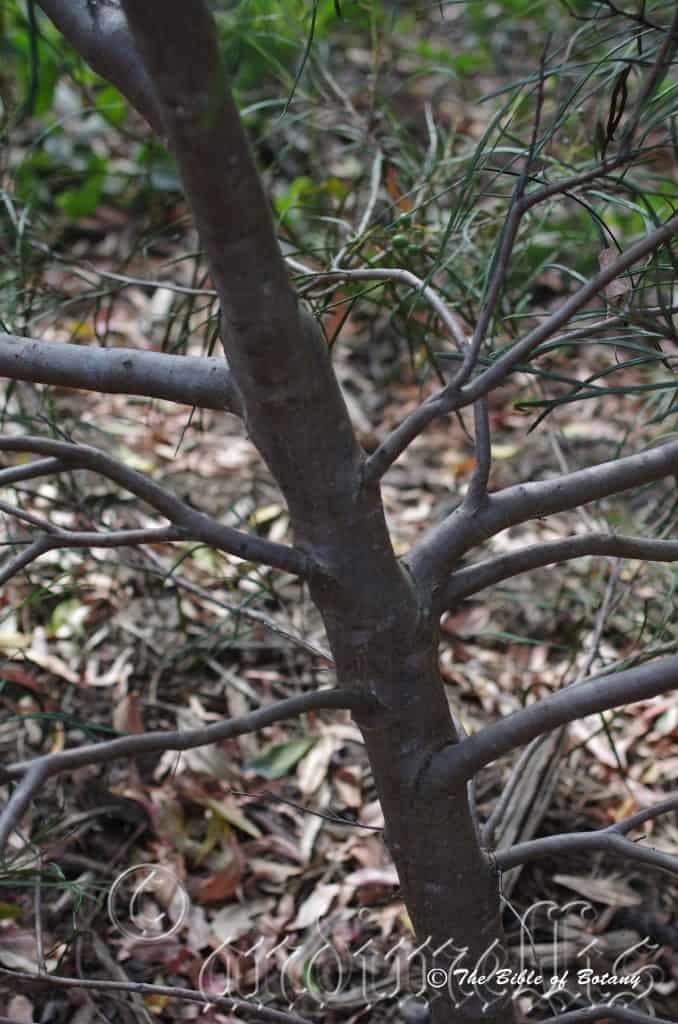
Mount Cootha Botanic Gardens Qld.
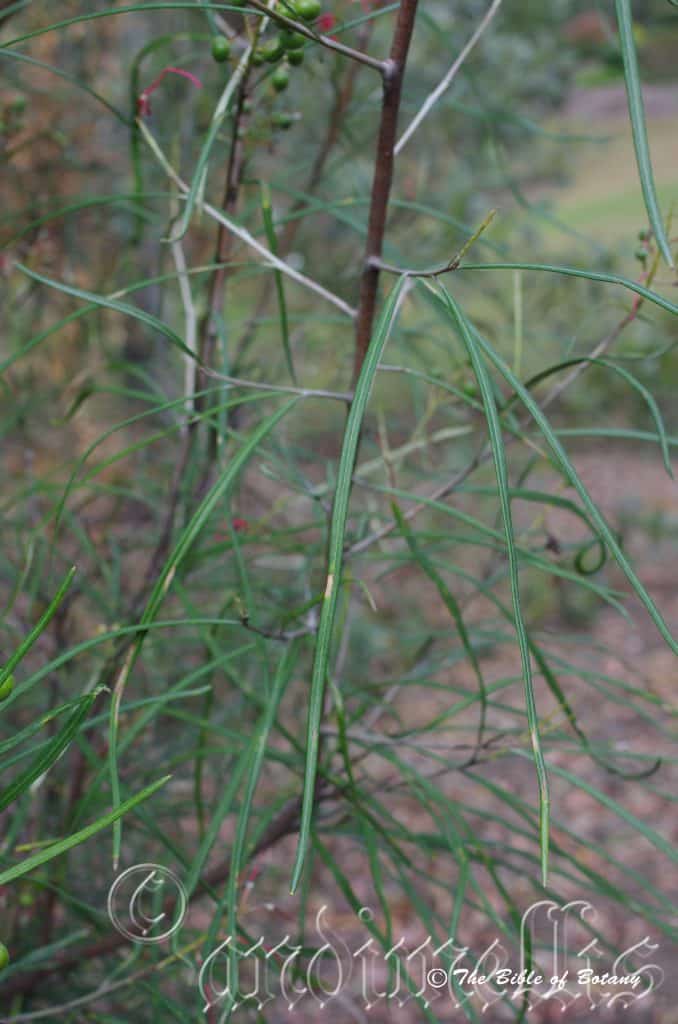
Mount Cootha Botanic Gardens Qld.
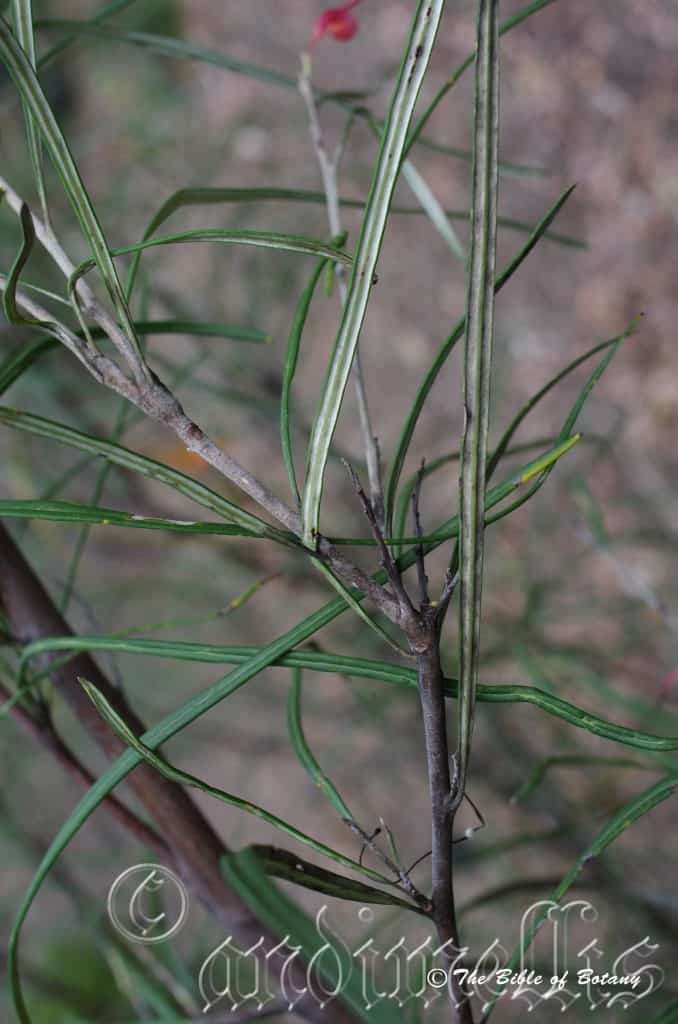
Mount Cootha Botanic Gardens Qld.
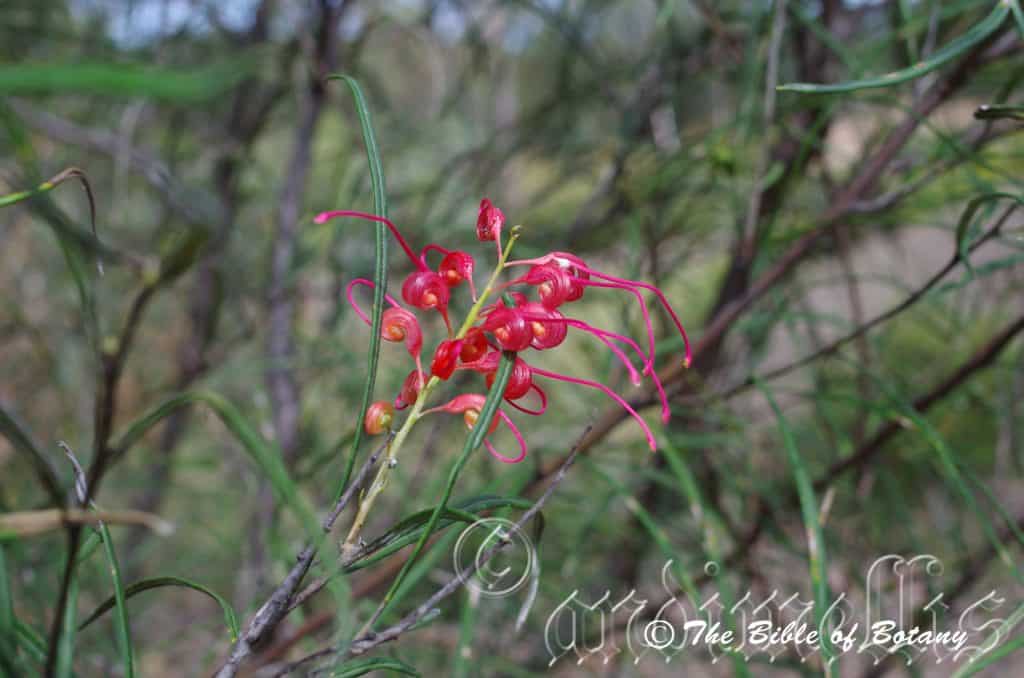
Mount Cootha Botanic Gardens Qld.
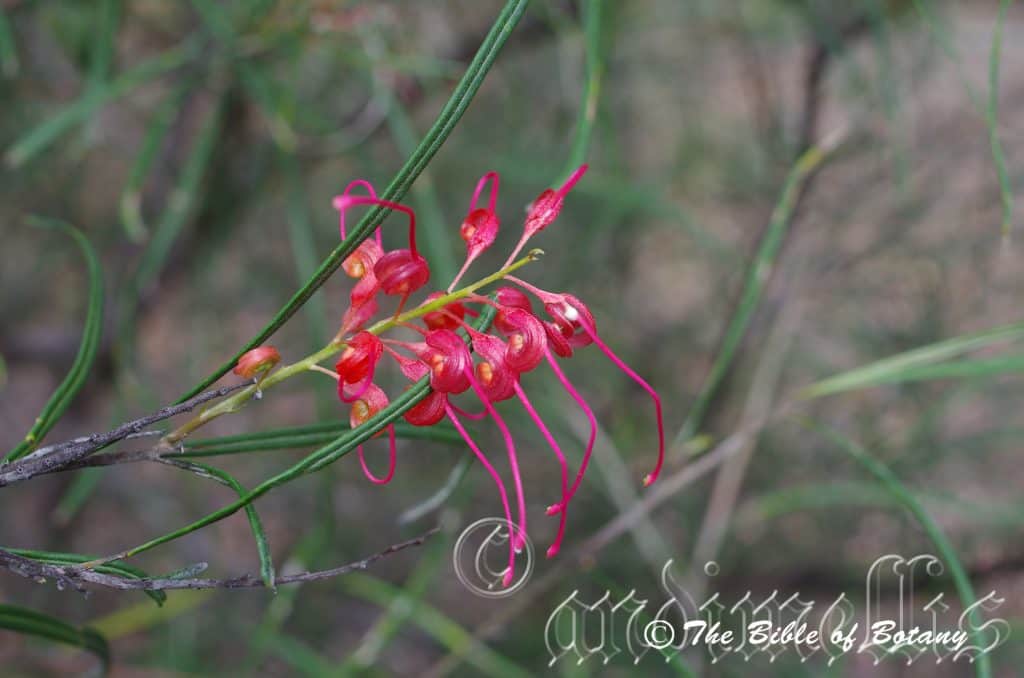
Mount Cootha Botanic Gardens Qld.

Mount Cootha Botanic Gardens Qld.
Grevillea longistyla
Classification:
Class: Magnoliopsida
Order: Proteales
Family: Proteaceae
Genus: Is named in honour of C. F. Greville; 1749-1809, who was a British expert botanist on Algae, a foundation member of the London Horticultural Society and a collector of rare plants.
Species: From Longitia/Longus, which is Latin for long in length and Stylus, which is Latin for part of the female reproductive organ a style. It refers to styles, which are noticeably longer than other species in the genus.
Sub Species:
Common Name:
Distribution:
Grevillea longistyla is found south from Mount White National Park to Gurulmundi and Chinchilla. It is found on the Western Plains, Western Slopes and on the Great Dividing Range.
https://avh.ala.org.au/occurrences/search?taxa=Grevillea+longistyla#tab_mapView
Habitat Aspect Climate:
Grevillea longistyla prefers full sun to light dappled shade. It grows in moister areas of dry schlerophyll type forests on slopes, flats and valleys close to rivers and creeks. The altitude ranges from 20 meters ASL to 300 meters ASL.
The temperatures range from minus 2 degree in August to 40 degrees in January.
The rainfalls range from lows of 700mm to an average of 1200mm annually.
Soil Requirements:
Grevillea longistyla prefers fatty sands, sandy loams to medium clays. The soils are usually derived from decomposed or partially decomposed sandstones. The soils pH ranges from 5. 5pH to 7. 5pH are preferred. It does not tolerate waterlogged soils. Non saline soils to moderately saline soils are tolerated. The altitude ranges from 10 meters ASL to 1280 meters ASL.
Height & Spread:
Wild Plants: 1. 5m to 5m by 1. 5m to 5m.
Characteristics:
Grevillea longistyla‘s larger deep red-brown stems develop from a lignotuber. The smaller stems are reddish-brown and glabrous.
The linear to narrow lanceolate leaves measure 120mm to 3000mm in length overall. The leaves are simple or have 2 to 6 partite ascending lobes. The lobes measure 30mm to 170mm in length by 1mm to 4. 5mm in width. The petioles measure 6mm to 12mm in length. The bases are cuneate while the apexes are acute to narrow acute. The discolourous laminas are pale olive grey-green to mid grey-green or deep green and glabrous on the upper lobes while the lower laminas are paler and densely covered in white to fawn sub villous hairs. The laminas are flat while the margins are entire and revolute almost to the midvein. The new foliage is pale green with a bronze tinge to pale bronze.
The basiscopic conflorescence of Grevillea longistyla are simple or with 2 to 5 born on short racemes usually from the terminals. The rachises measure 10mm to 125mm in length. The style is the most prominent part of the flower. The perianth corolla is pale pink to reddish-pink or rarely orange-pink from to the base with paler lobes. The perianths are sparsely covered in short white glandular hairs externally and are covered in white appressed and ascending biramous hirsute hairs internally. The individual perianths measure 11mm usually 16mm to 20mm in length while the lobes measure 8mm usually 12mm to 16mmin length.
The styles are deep pink to pinkish-red from the base to the stigma. The pistils measure 28mm usually 40mm to 52mm in length. The erect style curves near the stigma and is glabrous except for a 1mm to 1. 5mm ring of white appressed puberulent hairs around the base. The oblique stigma and pollen presenter are glabrous while the ovary is covered in white villous hairs. The flowers appear from late July to November.
Grevillea longistyla‘s fruits are obovoidal to ellipsoidal follicles with a short truncate apex. The follicles are produced singularly radiating out from rachis and are rugulose and sparsely covered in white sericeous hairs. The green follicles turn brown when ripe. They measure 10mm to 14mm in length by 6mm to7mm in diameter. The style is persistent on the ripe follicle.
Wildlife:
The dense foliage and proliferation of flowers on Grevillea longistyla are a great attraction and safe zone for small to medium honeyeaters like the Silver Eyes (Zosterops lateralis), Yellow Face Honeyeater (Lichenostomus chrysops), Brown Honeyeater (Lichmera indistincta) and the eastern Spinebill. (Acanthorhynchus tenuirostris).
Cultivation:
Grevillea longistyla is strictly for temperate and cool tropical areas and offer a wide range of variety so can be used in native gardens or in formal English gardens. It is a hemispherical shrub with an open neat appearance so would look great in a formal setting or English style gardens. The branchlets can be regularly tip pruned ensuring the bushiness and to promote the bronze coloured new growth. This makes them ideal for larger borders, screens, hedges or mid ground plants. In cultivation it will generally grow from 3 meters to 4 meters in height by 3 meters to 4 meters in width.
It is also a good supply of nectar for birds over a long period. In Native gardens they can be used for bird attraction. A bend in a path can break hide what is around the corner due to their bushiness and height. Place small plants at the end of the path with Grevillea longistyla behind. This will lead your eyes over to the midground plants or to down to the foreground plants when it is not in flower, or at them from July to November, yet it will walk the bend without noticing the change in direction.
Whether it is in flower or not Grevillea longistyla will catch your attention and the viewer will be transfixed on the display rather than watching the path. When it is not in flower you need the other plants to become the main focal point in the garden so try and select plants that flower during different seasons. Small prostrate Acacia specie with cream, white or yellow flowers can be used to great effect as their flowering will compliment those from Grevillea longistyla. The large deep pink or red flowers will offset the abundance of flowers from the Acacia specie and in fact would be a very strong complementary contrast if the prostrate or smaller Acacia specie were to flower at the same time. This is one plant that benefits the gardener if surrounded either by shorter or taller growing plants. If taller growing plants are used make sure there is an appreciable difference in height and that the Grevillea is not crowded out. To ensure the non-crowding give the Greville an extra meter so the foliages do not overlap. Also make sure both the Acacia specie and Grevillea specie are in full sun as dappled light would affect the growing habits and flowering in such a situation. Plant them at 4 meters to 4. 5 meter centers.
Propagation:
Seeds: Sow the seeds directly into a seed raising mix. Cover them with 5mm of fine sand and keep moist not wet. Place the tray in a warm sunny position. When the seedlings are 25mm to 50mm tall, prick them out and plant them into 50mm native tubes using a good organic mix.
Once the seedlings reach 150mm to 200mm in height, nip the tips out before planting them out into their permanent position. For mass plantings plant them out at 1.5 meter to 5 meter centers depending on whether it is to be used as a feature shrub or mingled into a bush scene.
Fertilize using Seaweed, fish emulsion or a half strength solution of organic chicken pellets soaked in water on an alternate basis. Fertilize every 3 months until the plants are well established then annually to assist in prolific blooming and healthy growth. Avoid synthetic fertilizers as they may contain high levels of phosphorus and calcium which are toxic to most members of the Proteaceae family.
Cuttings: Use 40mm to 80mm long half ripened material when growing from cuttings from the present season’s growth. Take them in mid-autumn or early spring. Remove half the leaves from the bottom section being careful not to tear the bark.
1 Prepare the cutting mix by adding one third sharp clean river sand, one third peat and one third perlite. These ingredients are sterilize,
2 Select good material from non diseased plants,
3 Select semi green stems for cuttings. Look for a stem with two or three nodes,
4 Place the cutting on a flat, hard surface, and make a clean cut down one side of the cutting at the base for 10mm with a sharp sterile knife or razor blade. – This scarification of the node will increase the chances of roots emerging from this spot. Now remove all but one or two the leaves, leaving the apex leaves in tact. If the leaves are very large in proportion to the stem, cut off the apical halves.
5 Fill a saucer with water, and place a little medium strength rooting hormone into another container like a milk bottle top. Dip the node end of the cutting into the water and then into the rooting hormone. Tap off any excess hormone,
6 Use a small dipple stick or old pencil to poke a hole into the soilless potting mix. Ensure the hole is slightly larger than the stem diameter and be careful not to wipe the rooting hormone off the cuttings base, place the cuttings in a pattern ensuring the cuttings are not touching each other,
7 I like to place the pots in Plastic bags to help maintain temperature and moisture. Place in a semi shaded place like under 50mm shade cloth.
8 When the cuttings have struck, open the bag to allow air circulation for a few days to a week,
9 Once hardened off remove the cuttings from the bag and allow to further hardening for a few more days,
10 Transplant into a good potting mix to grow on.
Fertilize using seaweed, fish emulsion or organic chicken pellets soaked in water on an alternate basis. Fertilize every two months until the plants are established then twice annually in early September or March to maintain health, vitality and better flowering. Avoid synthetic fertilizers as they will most likely contain calcium and phosphorus at levels, which are toxic to most Proteaceae.
Further Comments from Readers:
Hi reader, it seems you use The Bible of Botany a lot. That’s great as we have great pleasure in bringing it to you! It’s a little awkward for us to ask, but our first aim is to purchase land approximately 1,600 hectares to link several parcels of N.P. into one at The Pinnacles NSW Australia, but we need your help. We’re not salespeople. We’re amature botanists who have dedicated over 30 years to saving the environment in a practical way. We depend on donations to reach our goal. If you donate just $5, the price of your coffee this Sunday, We can help to keep the planet alive in a real way and continue to bring you regular updates and features on Australian plants all in one Botanical Bible. Any support is greatly appreciated. Thank you.
In the spirit of reconciliation we acknowledge the Bundjalung, Gumbaynggirr and Yaegl and all aboriginal nations throughout Australia and their connections to land, sea and community. We pay our respect to their Elders past, present and future for the pleasures we have gained.
Grevillea macleayana
Classification:
Class: Magnoliopsida
Order: Proteales
Family: Proteaceae
Subfamily:
Genus: Is named in honour of C. F. Greville; 1749-1809, who was a British expert botanist on Algae, a foundation member of the London Horticultural Society and a collector of rare plants.
Species: Is named in honour of Sir William Macleay; 1767-1848, who first collected the seeds in which the type specimen was grown.
Sub Species:
Common Name: Jervis Bay Grevillea.
Distribution:
Grevillea macleayana is restricted to a small area in New South Wales south from Ulladulla to Nowra and west to Morton National Park.
https://avh.ala.org.au/occurrences/search?taxa=Grevillea+macleayana#tab_mapView
Habitat Aspect Climate:
Grevillea macleayana prefers full sun to light dappled shade. It grows in dry sandy scrub forests and open woodlands on sandy flats.
The altitude ranges from 5 meters ASL to 300 meters ASL.
The temperatures range from minus 3 degree in August to 36 degrees in January.
The rainfalls range from lows of 700mm to an average of 1200mm annually.
Soil Requirements:
Grevillea macleayana prefers fatty sand, sandy loams to gritty medium clays. The soils are usually derived from decomposed sandstone. The soils pH ranges from 5pH to 6pH are preferred. It does not tolerate waterlogged soils. Non saline soils to moderately saline soils are tolerated.
Height & Spread:
Wild Plants: 1m to 4m by 1m to 5m.
Characteristics:
Grevillea macleayana‘s larger stems are pale red-brown, glabrous and dull. Branchlets are a pale pink-fawn to pink-brown only turning green-brown close to the apex. The new growth is covered in fawn to pale pinkish pulverulent to sub villous hairs.
The adjacent simple leaves are usually elliptical to ovate or rarely pinnatifid with 1 or 5 oblong to ovate lobes. The simple leaves measure 25mm to 200mm in length by 10mm to 80mm in width while the lobes when present measure 5mm to 30mm in length by 5mm to 20mm in width. The petiole measures 5mm to 15mm in length. The bases are cuneate-attenuate while the apex is acuminate. The discolourous laminas are mid green to deep green on the upper laminas while the lower laminas are paler and are densely covered in white pubescent or villous hairs. The laminas are slightly undulating to strongly undulating and decurve from the mid vein to the margins and decurve on the apical third or close to the apex. The margins are entire. The mid vein is strongly prominent on the lower lamina and slightly prominent on the upper lamina and is a paler green or white.
The juvenile plants are often tri-lobed which may persist with the odd leaf on older shrubs.
The conflorescence is an erect secund born from the terminals. The rachises measure 40mm to 50mm in length. The style is the most prominent part of the flower. The individual sessile perianths are pale drab greenish-white, pinkish-grey pastel pink. The perianths are densely covered in off white, white or pastel pink tomentose or sub villous to sublanata hairs externally and are glabrous internally. The perianths measure 6mm to 8mm in length while the lobes measure 6mm to 8mm in length. The lobes strongly recurved and joined from the base to the apex. The pedicels are densely covered in white canescent hairs and measure 1mm to 1. 5mm in length.
The styles are pale pink to deep rose-pink with a yellow-green to a green stigma and pollen presenter. The pistils measure 22mm to 29mm in length. The erect style is glabrous while the ovary is stipitate and densely covered in white hirsute hairs. The conical pollen presenter is erect. The flowers appear from late September to January.
Thefruits are ovate follicles. The follicles are produced singularly radiating out from the central rachises. They measure 12mm to 19mm in length. The follicles are covered in white villous hairs.
Wildlife:
The dense foliage of Grevillea macleayana, with the flowers hidden on the inside make them very attractive and safe havens for small to medium honeyeaters like the Silver Eyes (Zosterops lateralis), Yellow Face Honeyeater (Lichenostomus chrysops), Brown Honeyeater (Lichmera indistincta) and the eastern Spinebill. (Acanthorhynchus tenuirostris).
Cultivation:
Grevillea macleayana is a small Grevillea suitable for temperate and sub-tropical native gardens where light clays, gravelly clays or rockery soils occur. It is small well rounded shrubs which grow from 2. 5 meters to 3 meters in height by 3 meters to 4 meters in diameter in the garden when grown in the open. The foliage can be regularly tip pruned to encourage new growth, bushiness, and flowering and to maintain a smaller plant in the garden if desired. The very long deep green foliage is very attractive part of the plant as are the profusion of bird attracting flowers.
Garden beds would need to be open with plenty of space between plants to allow air flow as well as to give the branchlets a chance to spread and be appreciated for their unique beauty. Crowding this type of foliage with other plants will see them lose all the effectiveness of the colour and form you require or want. Correct spacing will contrast the foliages and shape better without one overpowering the other. For mass planting space the plants at least 4 meters to 4. 5 meter centers.
The use of annuals helps to attract the viewer to the permanent plants foliage as it is the predominant foliage you want people to notice in the patch. In the case of this Grevillea you could substitute very small Grevillea specie or other fine leaf natives instead of the native annuals.
Small Acacia specie can also be used to great effect as their flowering will compliment those from this Grevillea. The large deep green leaves will offset the strong flowers of the Acacia specie and in fact would be a very strong complementary contrast whether the prostrate or smaller Acacia specie were to flower at in a different season or at the same time.
When mass planting Grevillea macleayana use curves and irregular patterns so they can be viewed from different angles around the garden. Use them where foreground and background plants have light green leaves so their beautiful leaves are highlighted. For hedges and screens plant it at 3meters to 4 meters or in garden beds plant them at 3. 5 meters to 5 meter centers.
Propagation:
Seeds: Sow the seeds of Grevillea macleayana directly into a seed raising mix. Cover them with 5mm of fine sand and keep moist not wet. Place the tray in a warm sunny position. When the seedlings are 25mm to 50mm tall, prick them out and plant them into 50mm native tubes using a good organic mix.
Once the seedlings reach 150mm to 200mm in height, nip the tips out before planting them out into their permanent position. For mass plantings plant them out at 1 meter to 5 meter centers depending on whether it is to be used as a feature shrub or mingled into a bush scene.
Fertilize using Seaweed, fish emulsion or a half strength solution of organic chicken pellets soaked in water on an alternate basis. Fertilize every 3 months until the plants are well established then annually to assist in prolific blooming and healthy growth. Avoid synthetic fertilizers as they may contain high levels of phosphorus and calcium which are toxic to most members of the Proteaceae family.
Cuttings:
Use 40mm to 80mm long half ripened material when growing from cuttings from the present season’s growth. Take them in mid-autumn or early spring. Remove half the leaves from the bottom section being careful not to tear the bark.
1 Prepare the cutting mix by adding one third sharp clean river sand, one third peat and one third perlite. These ingredients are sterilize,
2 Select good material from non diseased plants,
3 Select semi green stems for cuttings. Look for a stem with two or three nodes,
4 Place the cutting on a flat, hard surface, and make a clean cut down one side of the cutting at the base for 10mm with a sharp sterile knife or razor blade. – This scarification of the node will increase the chances of roots emerging from this spot. Now remove all but one or two the leaves, leaving the apex leaves in tact. If the leaves are very large in proportion to the stem, cut off the apical halves.
5 Fill a saucer with water, and place a little medium strength rooting hormone into another container like a milk bottle top. Dip the node end of the cutting into the water and then into the rooting hormone. Tap off any excess hormone,
6 Use a small dipple stick or old pencil to poke a hole into the soilless potting mix. Ensure the hole is slightly larger than the stem diameter and be careful not to wipe the rooting hormone off the cuttings base, place the cuttings in a pattern ensuring the cuttings are not touching each other,
7 I like to place the pots in Plastic bags to help maintain temperature and moisture. Place in a semi shaded place like under 50mm shade cloth.
8 When the cuttings have struck, open the bag to allow air circulation for a few days to a week,
9 Once hardened off remove the cuttings from the bag and allow to further hardening for a few more days,
10 Transplant into a good potting mix to grow on.
Fertilize using seaweed, fish emulsion or organic chicken pellets soaked in water on an alternate basis. Fertilize every two months until the plants are established then twice annually in early September or March to maintain health, vitality and better flowering. Avoid synthetic fertilizers as they will most likely contain calcium and phosphorus at levels, which are toxic to most Proteaceae.
Further Comments from Readers:
Hi reader, it seems you use The Bible of Botany a lot. That’s great as we have great pleasure in bringing it to you! It’s a little awkward for us to ask, but our first aim is to purchase land approximately 1,600 hectares to link several parcels of N.P. into one at The Pinnacles NSW Australia, but we need your help. We’re not salespeople. We’re amature botanists who have dedicated over 30 years to saving the environment in a practical way. We depend on donations to reach our goal. If you donate just $5, the price of your coffee this Sunday, We can help to keep the planet alive in a real way and continue to bring you regular updates and features on Australian plants all in one Botanical Bible. Any support is greatly appreciated. Thank you.
In the spirit of reconciliation we acknowledge the Bundjalung, Gumbaynggirr and Yaegl and all aboriginal nations throughout Australia and their connections to land, sea and community. We pay our respect to their Elders past, present and future for the pleasures we have gained.
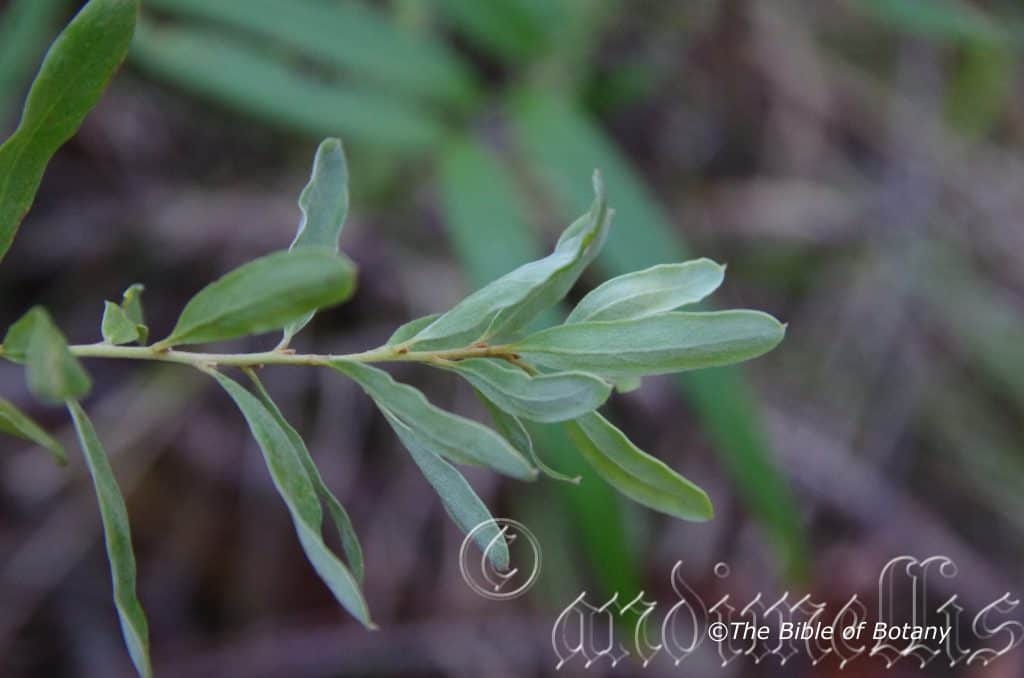
Kungala NSW
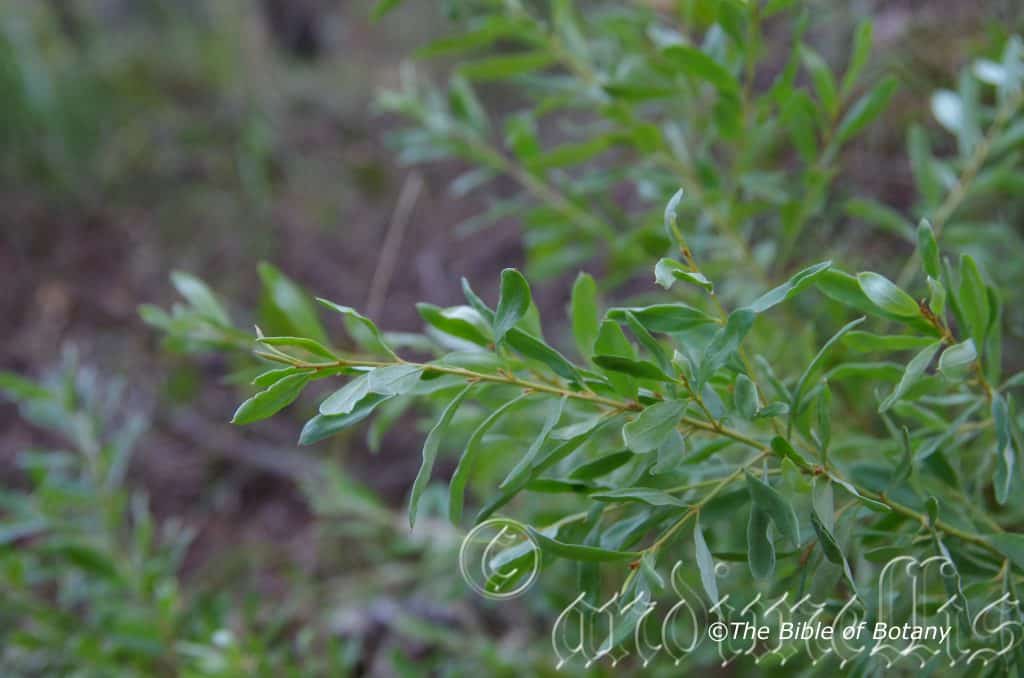
Kungala NSW
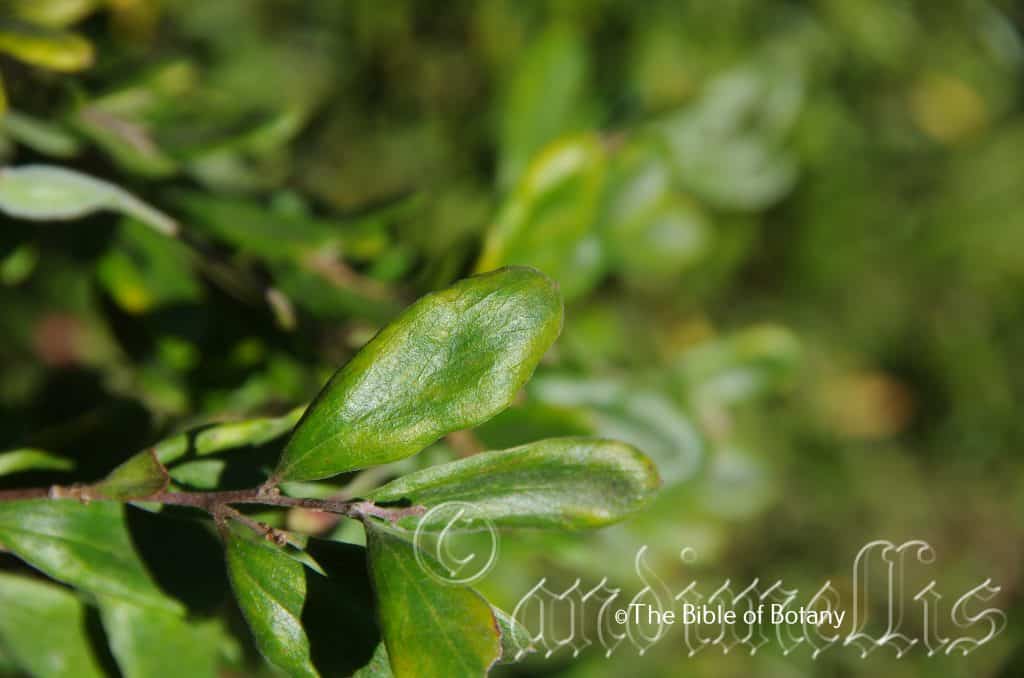
Fortis Creek National Park NSW
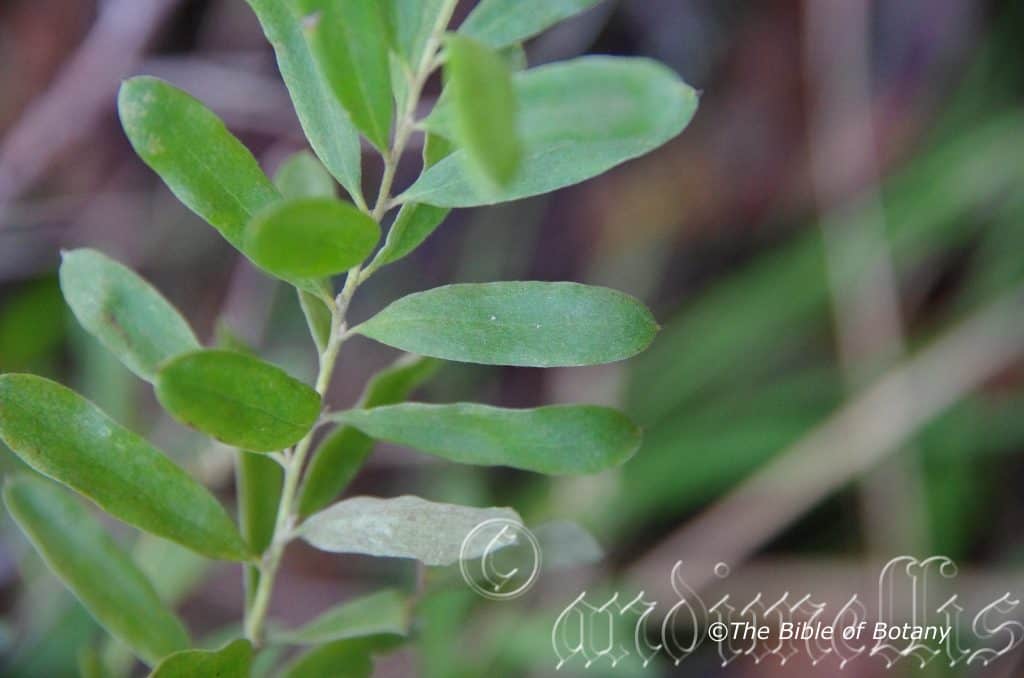
Kungala NSW
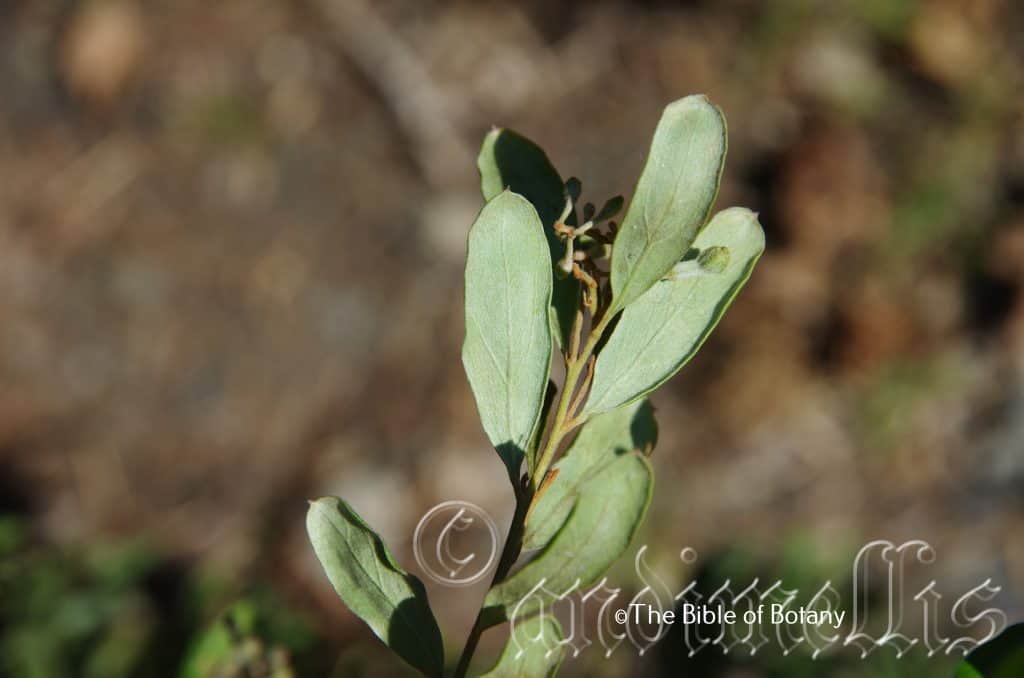
Fortis Creek National Park NSW
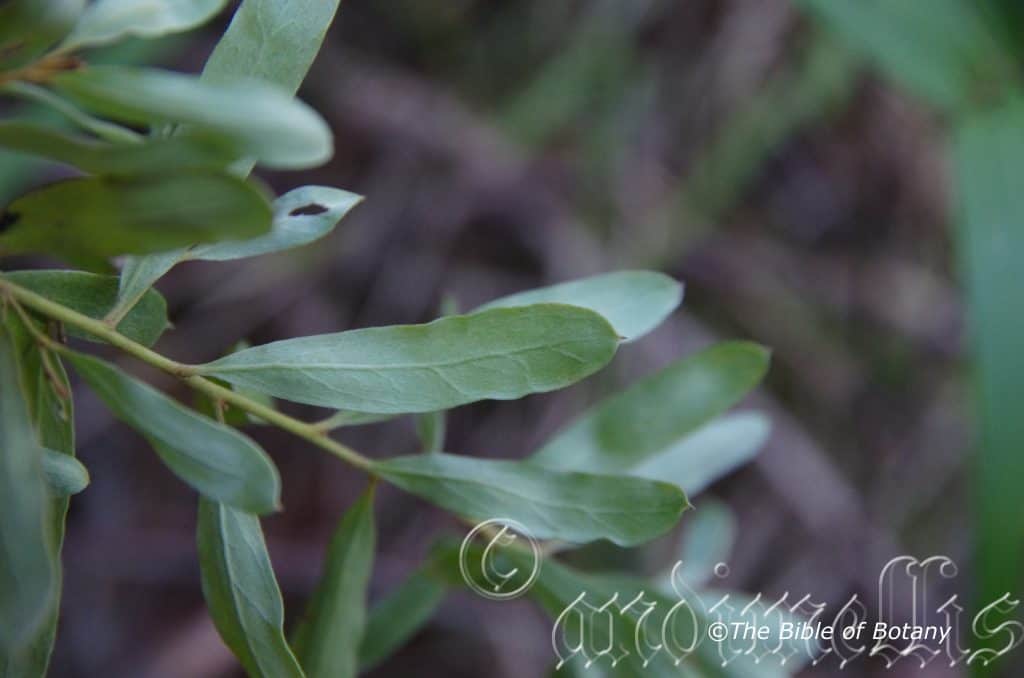
Kungala NSW
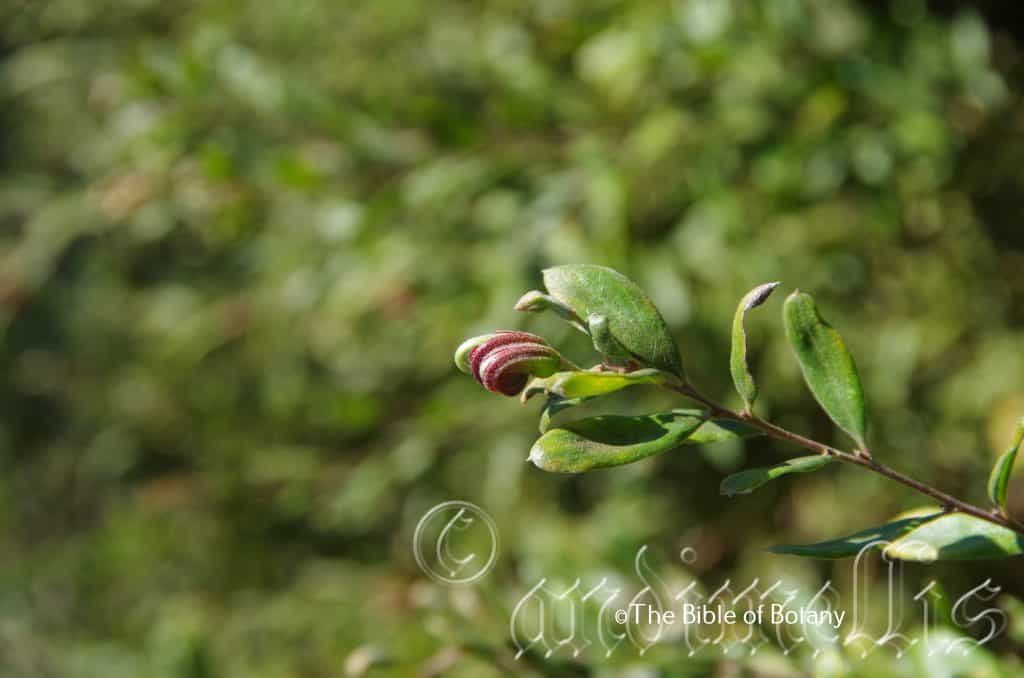
Fortis Creek National Park NSW
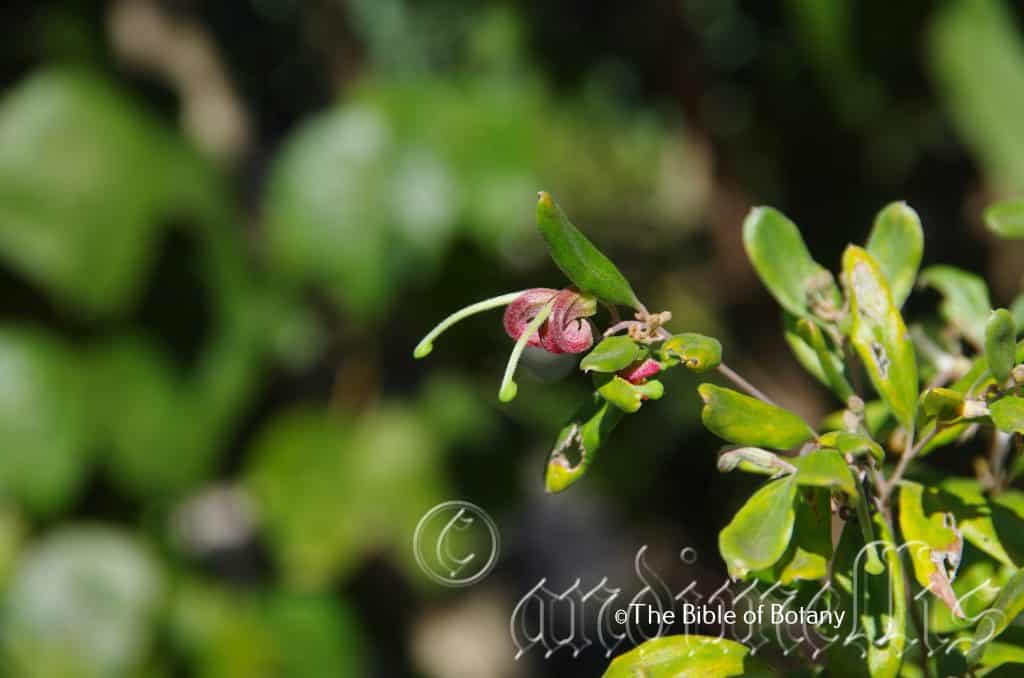
Fortis Creek National Park NSW
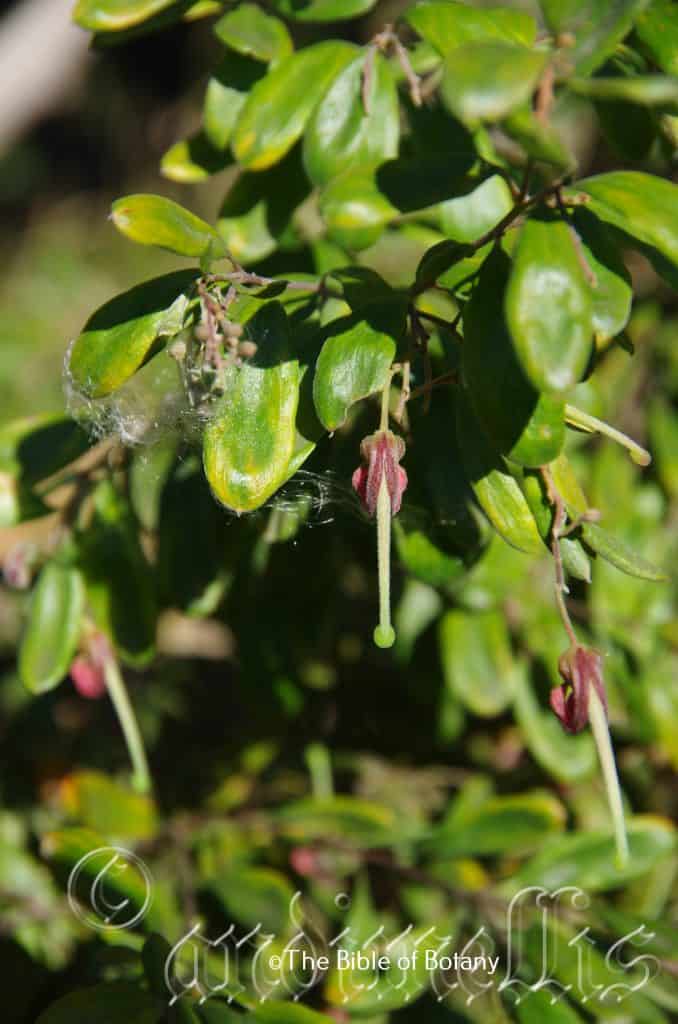
Fortis Creek National Park NSW
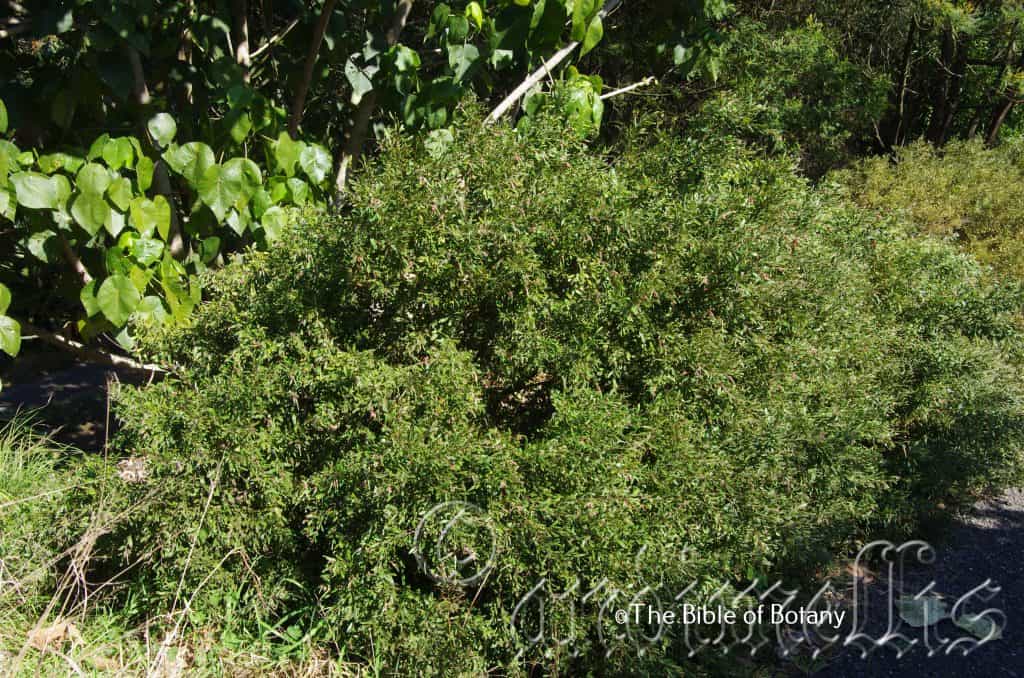
Fortis Creek National Park NSW
Grevillea masonii
Classification:
Class: Magnoliopsida
Order: Proteales
Family: Proteaceae
Genus: Is named in honour of C. F. Greville; 1749-1809, who was a British expert botanist on Algae, a foundation member of the London Horticultural Society and a collector of rare plants.
Species: Is named in honour of Mason but which Mason cannot be substantiated.
Sub Species:
Common Name: Grafton Grevillea.
Distribution:
Grevillea masonii is endemic to New South Wales and is restricted to a few plants in remnant dry schlerophyll forests north of Grafton.
https://avh.ala.org.au/occurrences/search?taxa=Grevillea+masonii#tab_mapView
Habitat Aspect Climate:
Grevillea masonii prefers full sun to light dappled shade. It grows in dry, degraded, flat scrub forests and open Eucalyptus woodlands. The altitude ranges from 60 meters ASL to 200 meters ASL.
The temperatures range from 2 degree in August to 40 degrees in January.
The rainfall ranges from lows of 800mm to an average of 1200mm annually.
Soil Requirements:
Grevillea masonii prefer to grow on gravelly sandy loams. The soils are usually derived from sandstone. The soils pH ranges from 5pH to 6pH are preferred. It does not tolerate waterlogged soils. Non saline soils to moderately saline soils are tolerated.
Height & Spread:
Wild Plants: 0. 2m to 0. 5m by 0. 5m to 1m.
Characteristics:
Grevillea masonii‘s larger stems are red-brown, glabrous and semi glossy. Branchlets are a red-brown, and covered in white sericeous hairs. They form a lignotuber below the surface for protection against fire which is a common occurrence in their habitat.
Grevillea masonii‘s, alternate simple leaves are narrow obovate to elliptical and measure 5mm to 30mm in length by 2mm to 11mm in width. The petiole measures 1mm to 2mm in length. The bases are cuneate while the apexes are broad acute to obtuse with a short mucronate tip. The discolourous upper laminas are semi glossy, pale green to mid olive green and granulose while the lower laminas are paler and are densely covered in white sub sericeous to sub tomentose hairs. The laminas are flat or slightly recurve from the midvein to the margins and decurve strongly on the apical third. The margins are entire. The mid vein is prominent on the lower lamina and barely visible on the upper lamina.
The acroscopic conflorescence of Grevillea masonii are simple to 3 branched and born in small clusters or are semi secunds from the terminal leaf axils. The clusters number 2 usually 5 to 10 flowers. The rachises and the pedicels are covered in white sub sericeous hairs. The rachises measure 1mm to 5mm in length while the pedicels measure 6mm to 9mm in length. The perianth and style are the most prominent parts of the flower. Individual perianths are dull to semi glossy, greenish red at the base turning to a reddish-maroon on the limbs. The perianths are sparsely covered in white tomentose hairs externally and are covered in white hirsute or hirtellous internally. The perianth and limb measure 10mm to 17mm in length while the limbs are strongly recurved.
The styles are pale green with a maroon tinge stigma. The style and ovary measure 18mm to 24mm in length. The style is covered in tomentose hairs at the base changing to white hirtellous hairs as it approaches the stigma. The style is erect while the ovary is densely covered in white villous hairs. The style is not persistent on the ripe follicles. The pollen presenter is lateral. Flowers appear from July to November.
Grevillea masonii‘s fruit is a globose follicle. The follicles are produced singularly radiating out from the central cluster. The style is persistent on the ripe follicles and there is a faint longitudinal ridge on each side. They measure 11mm to 18mm in length by 5mm to 6mm in diameter. The grass-green follicles are sparsely covered in white villous hairs and turn brown when ripe with fawn markings. The flattened, ovate, grey seeds have a white papery wing surrounding the testa. The seeds measure 6. 5mm to 9mm in length by 3mm to 4mm wide. The wing is variable surrounding the seed, varying from 0. 4mm to 1. 3mm.
Confusing Species:
Grevillea masonii does not have a lignotuber type habit. The longer tepal apiculation is greater than 1mm in length. The perianth’s beard is on the basal half. The pistil is longer at 25mm to 27mm in length.
Grevillea banyabba has a gently curving lime-green style which is black and persistent on the follicles. Most or all of the leaves are greater than 20mm in length. The follicles have 3 to 5 faint longitudinal ridges.
Wildlife:
The dense foliage of Grevillea masonii, with the flowers hidden on the inside make them very attractive and safe havens for small to medium honeyeaters like the Silver Eyes (Zosterops lateralis), Yellow Face Honeyeater (Lichenostomus chrysops), Brown Honeyeater (Lichmera indistincta) and the eastern Spinebill. (Acanthorhynchus tenuirostris).
Cultivation:
Grevillea masonii is a small rare Grevillea suitable for temperate and sub-tropical native gardens where light clays, gravelly clays or rockery soils occur. It is a well rounded shrub growing from 0. 4 meters to 0. 6 meters in height by 0. 5 to 0. 6 meters in diameter in the garden when grown in the open. The foliage can be regularly tip pruned to encourage new growth, bushiness and flowering. The plant has no virtual great qualities and in fact is average in every aspect and that is what makes it special and appealing.
It can be grown in small sunny courtyards, around swimming pools, near paths, along driveways, around fish or frog pond, in rockeries both large and small, in miniature gardens, formal beds Japanese gardens or snuck in between other larger plants. So versatile are they that I am really surprised that they have not taken the garden world by surprise yet.
A bend in a path can be broken up by placing them at the bend. Place them in the foreground with medium and larger plants behind. Plants with either small red flowers or white flowers can be used in the midground while large flowering specie can be placed in the background. This will lead your eyes down and over to the back ground. Whether it is in flower or not these plants will catch your attention and the viewer will be transfixed on the display rather than watching the path. Small Acacias can also be used to great effect as their flowering will compliment those from this Grevillea specie. The large deep green leaves will offset the strong flowers of the Acacia specie and in fact would be a very strong complementary contrast if the prostrate or smaller Acacia specie were to flower at in a different season.
Grevillea masonii is at its best in small garden beds or as feature plants in miniature landscapes.
Because of their small size, beautiful dense foliage when pruned can make a great contribution around fish and frog ponds. Mix them with short strap leaf plants or small clumpy annual leaving space between so you can see the rocks, logs or other features. A good companion plant is Viola betonicifolia and they do look great together.
When mass planting Grevillea masonii use curves and irregular patterns so they can be viewed from different angles around the garden. When mass planting them in raised garden beds or large heath gardens, plant them at 0. 5 meter to 0. 7 meter centers. If you are using them amongst rocks or around the small bog garden plant it sparingly, so not to make the area look cluttered or detract from the other features. 3 or 4 in an area of 50 square meters would be ample. 3 plants separately planted or plant 2 close together and separate the other 2 to give width and depth where you want it.
When designing miniature garden use contours to display the plants to their best. Planted a row on the top to represent the hills or a ridge they would taller than those planted in valleys or on plains. Don’t make the ridge straight curve it winds it around. Use small tussock grasses or Lomandra specie adjacent to Grevillea masonii to give them height. Prune plants up the valleys so they remain shorter than those in the foreground to give depth.
Place them near old stumps and roots to make the stumps or roots look larger. Select an area of ground and let your hair down and be imaginative and this is the plant that may just change your life.
Propagation:
Seeds: Sow the seeds of Grevillea masonii directly into a seed raising mix. Cover them with 5mm of fine sand and keep moist not wet. Place the tray in a warm sunny position. When the seedlings are 25mm to 50mm tall, prick them out and plant them into 50mm native tubes using a good organic mix.
Once the seedlings reach 150mm to 200mm in height, nip the tips out before planting them out into their permanent position. For mass plantings plant them out at 1 meter to 5 meter centers depending on whether it is to be used as a feature shrub or mingled into a bush scene.
Fertilize using Seaweed, fish emulsion or a half strength solution of organic chicken pellets soaked in water on an alternate basis. Fertilize every 3 months until the plants are well established then annually to assist in prolific blooming and healthy growth. Avoid synthetic fertilizers as they may contain high levels of phosphorus and calcium which are toxic to most members of the Proteaceae family.
Cuttings:
Use 40mm to 80mm long half ripened material when growing from cuttings from the present season’s growth. Take them in mid-autumn or early spring. Remove half the leaves from the bottom section being careful not to tear the bark.
1 Prepare the cutting mix by adding one third sharp clean river sand, one third peat and one third perlite. These ingredients are sterilize,
2 Select good material from non diseased plants,
3 Select semi green stems for cuttings. Look for a stem with two or three nodes,
4 Place the cutting on a flat, hard surface, and make a clean cut down one side of the cutting at the base for 10mm with a sharp sterile knife or razor blade. – This scarification of the node will increase the chances of roots emerging from this spot. Now remove all but one or two the leaves, leaving the apex leaves in tact. If the leaves are very large in proportion to the stem, cut off the apical halves.
5 Fill a saucer with water, and place a little medium strength rooting hormone into another container like a milk bottle top. Dip the node end of the cutting into the water and then into the rooting hormone. Tap off any excess hormone,
6 Use a small dipple stick or old pencil to poke a hole into the soilless potting mix. Ensure the hole is slightly larger than the stem diameter and be careful not to wipe the rooting hormone off the cuttings base, place the cuttings in a pattern ensuring the cuttings are not touching each other,
7 I like to place the pots in Plastic bags to help maintain temperature and moisture. Place in a semi shaded place like under 50mm shade cloth.
8 When the cuttings have struck, open the bag to allow air circulation for a few days to a week,
9 Once hardened off remove the cuttings from the bag and allow to further hardening for a few more days,
10 Transplant into a good potting mix to grow on.
Fertilize using seaweed, fish emulsion or organic chicken pellets soaked in water on an alternate basis. Fertilize every two months until the plants are established then twice annually in early September or March to maintain health, vitality and better flowering. Avoid synthetic fertilizers as they will most likely contain calcium and phosphorus at levels, which are toxic to most Proteaceae.
Further Comments from Readers:
Hi reader, it seems you use The Bible of Botany a lot. That’s great as we have great pleasure in bringing it to you! It’s a little awkward for us to ask, but our first aim is to purchase land approximately 1,600 hectares to link several parcels of N.P. into one at The Pinnacles NSW Australia, but we need your help. We’re not salespeople. We’re amature botanists who have dedicated over 30 years to saving the environment in a practical way. We depend on donations to reach our goal. If you donate just $5, the price of your coffee this Sunday, We can help to keep the planet alive in a real way and continue to bring you regular updates and features on Australian plants all in one Botanical Bible. Any support is greatly appreciated. Thank you.
In the spirit of reconciliation we acknowledge the Bundjalung, Gumbaynggirr and Yaegl and all aboriginal nations throughout Australia and their connections to land, sea and community. We pay our respect to their Elders past, present and future for the pleasures we have gained.
Grevillea microstegia
Classification:
Class: Magnoliopsida
Order: Proteales
Family: Proteaceae
Genus: Is named in honour of C. F. Greville; 1749-1809, who was a British expert botanist on Algae, a foundation member of the London Horticultural Society and a collector of rare plants.
Species: From Mikros, which is Ancient Greek for small or very small and Stigma, which is Ancient Greek for a roof or Deck on a ship. It may refers to the manner in which the flowers hang down where the upper flowers act as a protective covering for the lower flowers.
Sub species:
Common Name: Mount Cassel Grevillea.
Distribution:
Grevillea microstegia is restricted to a small area from Mount Buangor to the Grampians and the Mount Cassel area of the Mount William Range in central western Victoria.
https://avh.ala.org.au/occurrences/search?taxa=Grevillea+microstegia#tab_mapView
Habitat Aspect Climate:
Grevillea microstegia prefers full sun to dappled shade. It grows on hills, mountains rocky ridges boulder country and granite outcrops in dry schlerophyll forests, open woodlands especially in association with Iron bark country. The altitude ranges from 600 meters ASL to 950 meters ASL.
The temperatures range from 3 degrees in August to 30 degrees in February.
The rainfall varies from lows of 500mm to 800mm average annually.
Soil Requirements:
Grevillea microstegia prefers grey sandy loams to medium clays. The soils are usually derived from granite. The soils pH ranges from 5pH to 6pH are preferred. It does not tolerate waterlogged soils. Non saline soils to moderately saline soils are tolerated.
Height & Spread:
Wild Plants: 0. 3m to 1m by 2m to 4m.
Characteristics:
Grevillea microstegia‘s stems are brown and glabrous. The young branchlets are pale pink-brown and densely covered in short white or fawn sericeous hairs.
The alternate pinnatifid leaves are deeply and regularly pinnatipartite with 5 to 13 primary lobes which are usually entire to 5-fid, dentate or occasionally with a few tertiary teeth. The leaves measure 20mm to 60mm in length by 15mm to 50mm in width over all. The ultimate lobes divaricate, narrow triangular to subulate and measure 2mm to 25mm in length by 0. 5mm to 2 mm in width. The petiole measures 7mm to 25mm in length and is glabrous. The bases are shortly attenuate while the apexes are dentate and taper to a sharp, rigid, pungent spine. The discolourous laminas are mid blue-green to a mid grass-green and glabrous on the upper lamina while the lower laminas are glabrous to sparsely covered in white pilose to lanate hairs which are more concentrated around the mid vein. The mid vein is prominent on the lower lamina and is visible on the upper lamina. The lobes strongly recurve upwards while the margins are entire.
The conflorescences are seconds born terminally. The usually erect pendent or decurve peduncles of the secunds have 24 to 36 flowers. The rachis is covered in fawnish tomentose hairs and measure 35mm to 50mm in length. The perianth and style are the most prominent parts of the flower. The individual perianths are dull brick red to reddish-brown and covered in fawnish subsericeous to tomentose hairs externally and are glabrous internally. The perianths peduncles are sessile to subsessile. The lobes are strongly recurved and are joined from the base to the apex.
The style is reddish-pink to brick red from the base through to the green the broad green stigma and pollen presenter. The pollen presenter is yellow-green. The erect style is refracted below the stigma while the pistils measure 13. 5mm to 16mm in length. The style is glabrous while the ovary is stipitate and glabrous. The flowers appear from October to December.
The fruits are ovoidal follicles. The style is persistent on the ripe follicles. The follicles are dull green and turn grey on ripening. It is covered in fawnish sub sericeous to short, sub tomentose hairs. They measure 9. 5mm to 12mm in length by 5mm to 7mm in width.
Wildlife:
The dense foliage of Grevillea microstegia and prolific flowering make them very attractive and safe havens for small to medium honeyeaters like the Silver Eyes (Zosterops lateralis), Yellow Face Honeyeater (Lichenostomus chrysops), Brown Honeyeater (Lichmera indistincta) and the eastern Spinebill. (Acanthorhynchus tenuirostris).
Butterflies, beetles, native flies and native bees are also attracted to the plants.
Cultivation:
Grevillea microstegia is a small shrub with very unusual foliage for most gardens in semi-arid and temperate zones. As garden subjects it will grow from 0. 8 meters to 1. 2 meter in height by 2 meters to 3 meters in diameter in cultivation when grown in the open. It is fast growing, drought tolerant resistant and cold tolerant, at least down to temperatures of minus 5 degrees.
It is most suitable for planting along large or steep banks and hedges. For mass planting hedges use spacing of 2 meters to 2. 5 meters centers.
It is best mixed with annuals or other small prostrate plants on banks and slopes of hills on sandy loams to medium clays so that any excess water drains from the site quickly. Plants with complimentary fine foliages or large pale green foliages should be used and those that flower at different periods or smaller plants with yellow flowers so they stand out in the crowd.
The flowers make a reasonable cut flower though the stems would be short; however the creative minded person would find this a challenge rather than an obstacle.
Propagation:
Seeds: Sow the seeds of Grevillea microstegia directly into a seed raising mix. Cover them with 5mm of fine sand and keep moist not wet. Place the tray in a warm sunny position. When the seedlings are 25mm to 50mm tall, prick them out and plant them into 50mm native tubes using a good organic mix.
Once the seedlings reach 150mm to 200mm in height, nip the tips out before planting them out into their permanent position. For mass plantings plant them out at 1 meter to 5 meter centers depending on whether it is to be used as a feature shrub or mingled into a bush scene.
Fertilize using Seaweed, fish emulsion or a half strength solution of organic chicken pellets soaked in water on an alternate basis. Fertilize every 3 months until the plants are well established then annually to assist in prolific blooming and healthy growth. Avoid synthetic fertilizers as they may contain high levels of phosphorus and calcium which are toxic to most members of the Proteaceae family.
Cuttings:
Use 40mm to 80mm long half ripened material when growing from cuttings from the present season’s growth. Take them in mid-autumn or early spring. Remove half the leaves from the bottom section being careful not to tear the bark.
1 Prepare the cutting mix by adding one third sharp clean river sand, one third peat and one third perlite. These ingredients are sterilize,
2 Select good material from non diseased plants,
3 Select semi green stems for cuttings. Look for a stem with two or three nodes,
4 Place the cutting on a flat, hard surface, and make a clean cut down one side of the cutting at the base for 10mm with a sharp sterile knife or razor blade. – This scarification of the node will increase the chances of roots emerging from this spot. Now remove all but one or two the leaves, leaving the apex leaves in tact. If the leaves are very large in proportion to the stem, cut off the apical halves.
5 Fill a saucer with water, and place a little medium strength rooting hormone into another container like a milk bottle top. Dip the node end of the cutting into the water and then into the rooting hormone. Tap off any excess hormone,
6 Use a small dipple stick or old pencil to poke a hole into the soilless potting mix. Ensure the hole is slightly larger than the stem diameter and be careful not to wipe the rooting hormone off the cuttings base, place the cuttings in a pattern ensuring the cuttings are not touching each other,
7 I like to place the pots in Plastic bags to help maintain temperature and moisture. Place in a semi shaded place like under 50mm shade cloth.
8 When the cuttings have struck, open the bag to allow air circulation for a few days to a week,
9 Once hardened off remove the cuttings from the bag and allow to further hardening for a few more days,
10 Transplant into a good potting mix to grow on.
Fertilize using seaweed, fish emulsion or organic chicken pellets soaked in water on an alternate basis. Fertilize every two months until the plants are established then twice annually in early September or March to maintain health, vitality and better flowering. Avoid synthetic fertilizers as they will most likely contain calcium and phosphorus at levels, which are toxic to most Proteaceae.
Further Comments from Readers:
Hi reader, it seems you use The Bible of Botany a lot. That’s great as we have great pleasure in bringing it to you! It’s a little awkward for us to ask, but our first aim is to purchase land approximately 1,600 hectares to link several parcels of N.P. into one at The Pinnacles NSW Australia, but we need your help. We’re not salespeople. We’re amature botanists who have dedicated over 30 years to saving the environment in a practical way. We depend on donations to reach our goal. If you donate just $5, the price of your coffee this Sunday, We can help to keep the planet alive in a real way and continue to bring you regular updates and features on Australian plants all in one Botanical Bible. Any support is greatly appreciated. Thank you.
In the spirit of reconciliation we acknowledge the Bundjalung, Gumbaynggirr and Yaegl and all aboriginal nations throughout Australia and their connections to land, sea and community. We pay our respect to their Elders past, present and future for the pleasures we have gained.
Grevillea miniata
Classification:
Class: Magnoliopsida
Order: Proteales
Family: Proteaceae
Genus: Is named in honour of C. F. Greville; 1749-1809, who was a British expert botanist on Algae, a foundation member of the London Horticultural Society and a collector of rare plants.
Species: From Miniata which is Latin for scarlet or orange-red. It refers to flowers, which are scarlet red in colour.
Sub species:
Common Name: Kimberley Gold.
Distribution:
Grevillea miniata is found in a restricted area east from the western Kimberley region, the southern end of the King Leopold Range to the Bungle Bungle Ranges in north western, Western Australia to the Victoria River District and Gregory National Park in the Northern Territory.
https://avh.ala.org.au/occurrences/search?taxa=Grevillea+miniata#tab_mapView
Habitat Aspect Climate:
Grevillea miniata prefers full sun to partial shade. It grows in open Eucalyptus forests and mixed Acacia Grevillea scrub lands. It is found on gentle slopes, elevated flats or along dry skeletal creek banks particularly over sandstone and granites or screes. (Screes are a mixture of material sizes usually deposited by water or landslides which includes fine clay particles, pebbles, stones, gibbers and rocks. ) The altitude ranges from 230 meters ASL to 500 meters ASL.
Temperatures range from 14 degrees in July to 44 degrees in January.
Rainfalls range from lows of 600mm to an average of 1000mm annually.
Soil Requirements:
Grevillea miniata prefers red orange or yellow sandy loams to fatty sands over sandstone or granite. The soils are usually derived from sandstones or at times granites. The soils pH ranges from 5pH to 6pH are preferred. It does not tolerate waterlogged soils. Non saline soils to moderately saline soils are tolerated.
Height & Spread:
Wild Plants: 2m to 4. 5m x 2m to 4m.
Characteristics:
Grevillea miniata‘s stems are brown to grey-green and glabrous. The young stems are brown to pale grey-brown and densely covered in white or pale grey velutinous hairs.
The alternate broad oblong leaves measure 45mm to 150mm in length by 30 to 70mm in width. The petioles are covered in white to pale grey velutinous hairs and measure 7mm to 21mm in length. The bases are cuneate to rounded while the apexes are obtuse to truncate. The concolourous laminas are pale grey-green to mid grey-green and densely covered in white to pale grey velutinous hairs. The laminas are thick, velvety, very pliable recurve upwards from the midvein to the margins or are cupping shape while the margins are shallowly sinuate or dentate with 9 to 25 evenly spaced teeth with a sharp, pungent spine. The mid vein, lateral veins and ultimate veins are strongly prominent on the lower lamina and are visible from above.
The conflorescences are simple to few branched, short, pendulant, loosely globose racemes which are born from the leaf axils. The racemes have 18 to 36 individual flowers and measure 15mm to 50mm in length. The perianth and style are the most prominent parts of the flower. The individual perianths are variable, bright yellow from the base through to the bright yellow, with a few scarlet-red streaked lobes prior to anthesis and turn orange-yellow following anthesis. The perianth is glabrous to sparsely covered in pastel yellow pilose hairs externally and pastel yellow glandular hirtellous hairs internally. The perianth and lobes measure 12mm to 15mm in length. The lobes are recurved and are free at the apex. The slightly retrorse perianth’s pedicels are covered in white pilose hairs and measure 8mm to 9mm in length.
The erect style is bright yellow from the base through to the stigma. The pistils measure 11mm to 13. 5mm in length. The lateral stigma and pollen presenter are bright yellow and measure 2mm to 2. 6mm in length. The style is glandular to covered in pastel yellow puberulent hairs within the perianth and glabrous where exserted while the stipitate ovary is glabrous. The flowers appear from April to August.
The fruits are obloidal to ellipsoidal follicles. The style is a persistent broken stub on the apexes of the ripe fruits. The follicles are glabrous and turn pale grey-fawn or pale purplish-grey as they ripen. They measure 14mm to 18mm in length by 11mm to 14mm in width and 9mm to12mm in depth. The deep grey, almost black, compressed, ellipsoidal seeds measure 11mm to 15mm in length by 8mm to 11mm in width. The seeds are surrounded by a 2mm to 2. 5mm fawn, chartaceous wing which completely surrounds the seed.
Wildlife:
The brilliant large flowers of Grevillea miniata make them very attractive for medium to larger honeyeaters.
Cultivation:
Grevillea miniata is a beautiful small open tree or shrub that looks magnificent when in flower. The very unusual blue grey leaves will set this shrub apart from all its rivals in a small garden to the largest garden, whether it is in arid, tropical, sub-tropical and in particular monsoonal zones. As a garden subject it will grow from 4 meters to 5 meters in height by 3 meters to 3. 5 meters in diameter as a tree or 3 meters in height by 3 meters in diameter as a shrub when cultivated in the open. Light tip pruning when young will help induce better lateral growth inducing the plant to grow as a shrub and give more terminal growth, which in return will give more racemes to produce flowers. It is fast growing; drought tolerant once established but is cold sensitive even with temperatures as low as 5 degrees.
This is a difficult plant to work with but great for those of us who love a challenge.
It is most suitable for use around sunny courtyards, besides pathways, rockeries or shelter belts for small native animals in warm arid areas or against the northern side of sheds.
Planted alone or with a large rock or 2, or stump a strong statement can be achieved especially if planted out below with pink or blue flowering annuals.
In Native gardens it can be used for attracting smaller medium to large honeyeaters and more aggressive nectar feeding birds in arid areas and monsoonal districts.
It is useful as a backdrop small tree contrasting with smaller finer leaf shrubs that are planted in the foreground. This gives the impression that they like being the center of attention which they deserve.
It is best used adjacent to small areas of bush close to paths or the house so their flowers can be viewed regularly. It is great in small or large rockeries. Here they can be planted in small groups of 2 or 3 or as a standalone plant to create a harsh barren look with other arid plants. If it is surrounded by shorter plants with fine foliages and red flowers they will dominate at the center giving height and strength to the bed especially when it is in flower.
Do not use plants with large leaves as these will be too overpowering and they will blend into each other. Planted with a mass of smaller plants and groundcovers with mixed coloured flowers and foliages will ensure a great display during the winter and spring months and for the rest of the year. This would be particularly strong, if a mixture of different finer foliages of different colours and textures are incorporated together. This will give a strong uplifting of central height. Be sure to plant any plant exactly in the center for a formal look or well off to one side for an informal look. 2 or 3 small trees close together on one side looks even more spectacular than just a single plant is placed on the other side to give balance to the picture. Mass plant below so the whole bed is covered for a sub-tropical scene or sparsely plant for an arid scene. Both scenarios would work equally well. Mass planting offsets the open habit of this small tree where as an area sparsely planted would bring out the sparseness and harshness of the desert picture. Here a few annuals scattered around would complete the picture. The plants planted out below should have a mixture of bold colours so use reds and whites and avoid yellows and pinks. Grevillea miniata has broad leaves and large enough flowers to dominate the scene when in flower and when not in flower their strong outline will give the contrast required for strength provide those plants covering the ground have smaller leaves and the majority are a pale green and no blue grey leaves are used.
Propagation:
Seeds: Sow the seeds of Grevillea miniata directly into a seed raising mix. Cover them with 5mm of fine sand and keep moist not wet. Place the tray in a warm sunny position. When the seedlings are 25mm to 50mm tall, prick them out and plant them into 50mm native tubes using a good organic mix.
Once the seedlings reach 150mm to 200mm in height, nip the tips out before planting them out into their permanent position. For mass plantings plant them out at 2 meter to 5.5 meter centers depending on whether it is to be used as a feature shrub or mingled into a bush scene.
Fertilize using Seaweed, fish emulsion or a half strength solution of organic chicken pellets soaked in water on an alternate basis. Fertilize every 3 months until the plants are well established then annually to assist in prolific blooming and healthy growth. Avoid synthetic fertilizers as they may contain high levels of phosphorus and calcium which are toxic to most members of the Proteaceae family.
Cuttings:
Use 40mm to 80mm long half ripened material when growing from cuttings from the present season’s growth. Take them in mid-autumn or early spring. Remove half the leaves from the bottom section being careful not to tear the bark.
1 Prepare the cutting mix by adding one third sharp clean river sand, one third peat and one third perlite. These ingredients are sterilize,
2 Select good material from non diseased plants,
3 Select semi green stems for cuttings. Look for a stem with two or three nodes,
4 Place the cutting on a flat, hard surface, and make a clean cut down one side of the cutting at the base for 10mm with a sharp sterile knife or razor blade. – This scarification of the node will increase the chances of roots emerging from this spot. Now remove all but one or two the leaves, leaving the apex leaves in tact. If the leaves are very large in proportion to the stem, cut off the apical halves.
5 Fill a saucer with water, and place a little medium strength rooting hormone into another container like a milk bottle top. Dip the node end of the cutting into the water and then into the rooting hormone. Tap off any excess hormone,
6 Use a small dipple stick or old pencil to poke a hole into the soilless potting mix. Ensure the hole is slightly larger than the stem diameter and be careful not to wipe the rooting hormone off the cuttings base, place the cuttings in a pattern ensuring the cuttings are not touching each other,
7 I like to place the pots in Plastic bags to help maintain temperature and moisture. Place in a semi shaded place like under 50mm shade cloth.
8 When the cuttings have struck, open the bag to allow air circulation for a few days to a week,
9 Once hardened off remove the cuttings from the bag and allow to further hardening for a few more days,
10 Transplant into a good potting mix to grow on.
Fertilize using seaweed, fish emulsion or organic chicken pellets soaked in water on an alternate basis. Fertilize every two months until the plants are established then twice annually in early September or March to maintain health, vitality and better flowering. Avoid synthetic fertilizers as they will most likely contain calcium and phosphorus at levels, which are toxic to most Proteaceae.
Further Comments from Readers:
Hi reader, it seems you use The Bible of Botany a lot. That’s great as we have great pleasure in bringing it to you! It’s a little awkward for us to ask, but our first aim is to purchase land approximately 1,600 hectares to link several parcels of N.P. into one at The Pinnacles NSW Australia, but we need your help. We’re not salespeople. We’re amature botanists who have dedicated over 30 years to saving the environment in a practical way. We depend on donations to reach our goal. If you donate just $5, the price of your coffee this Sunday, We can help to keep the planet alive in a real way and continue to bring you regular updates and features on Australian plants all in one Botanical Bible. Any support is greatly appreciated. Thank you.
In the spirit of reconciliation we acknowledge the Bundjalung, Gumbaynggirr and Yaegl and all aboriginal nations throughout Australia and their connections to land, sea and community. We pay our respect to their Elders past, present and future for the pleasures we have gained.
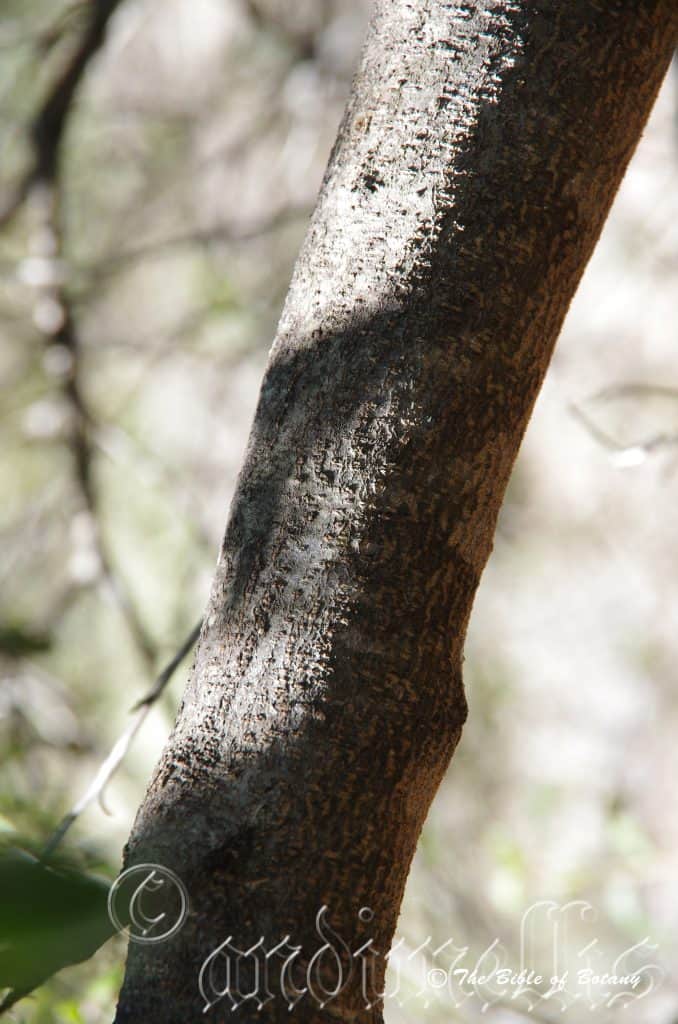
Mount Cootha Botanical Gardens Qld.
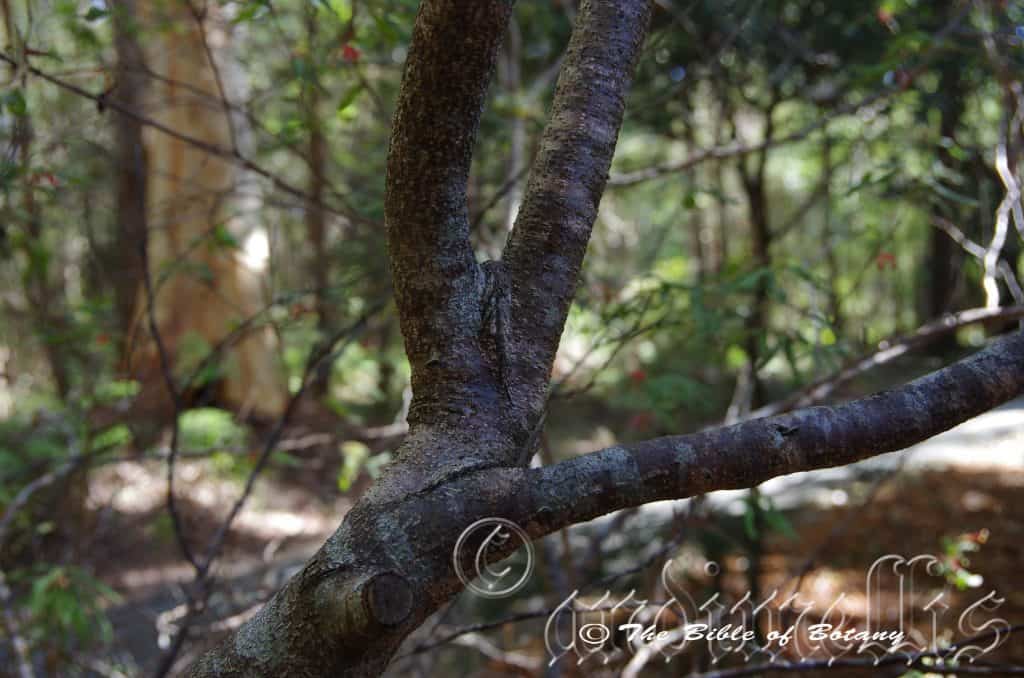
Gibralta Range National Park Ebor NSW
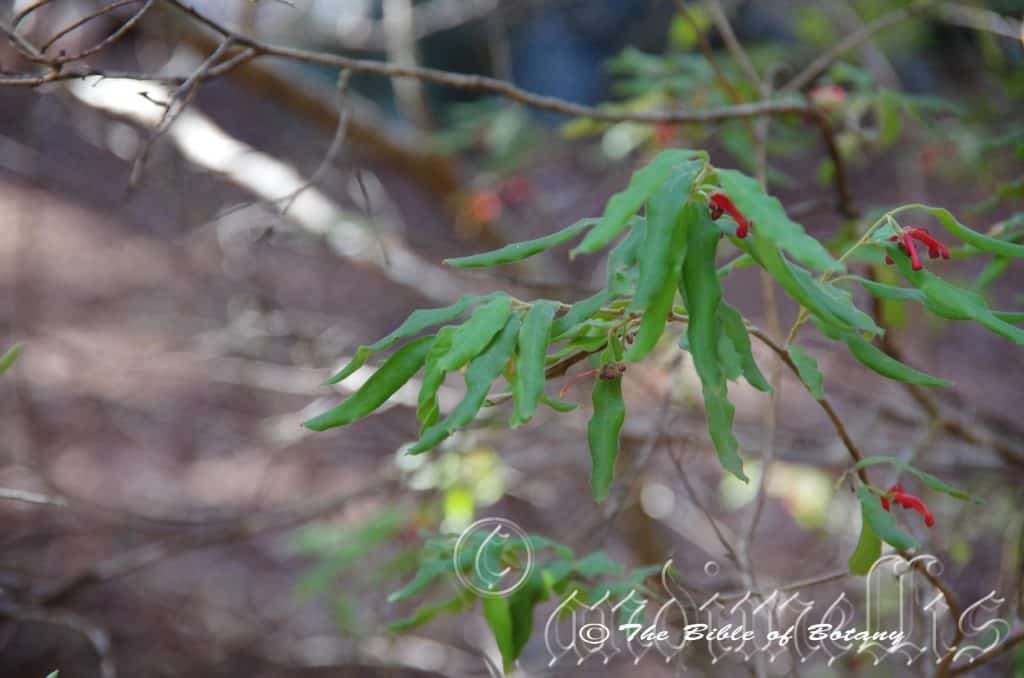
Gibralta Range National Park Ebor NSW
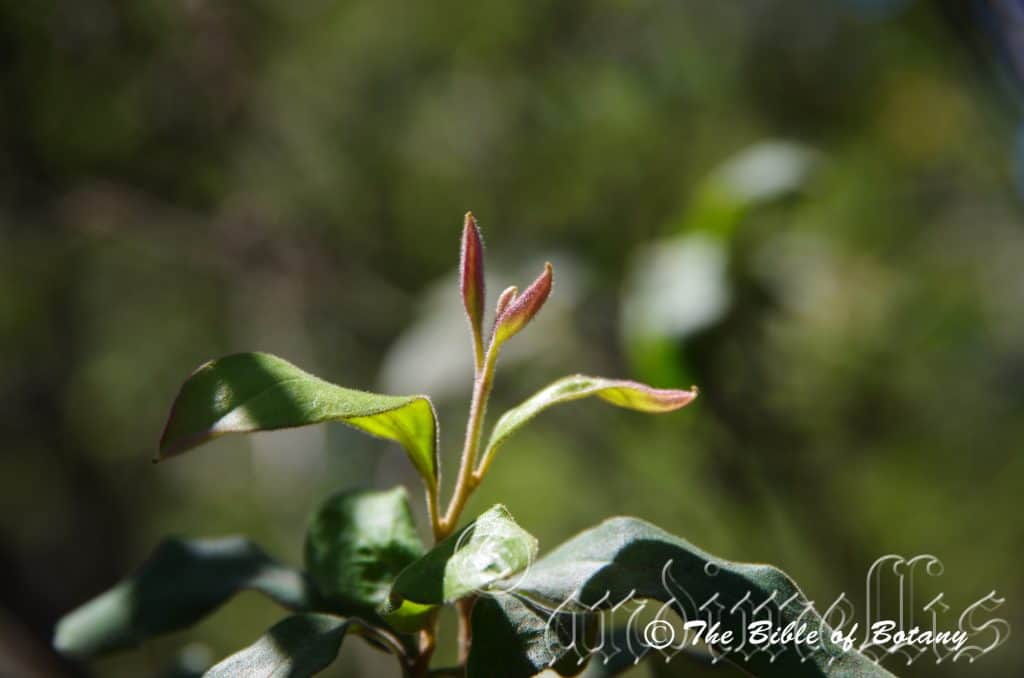
Gibralta Range National Park Ebor NSW
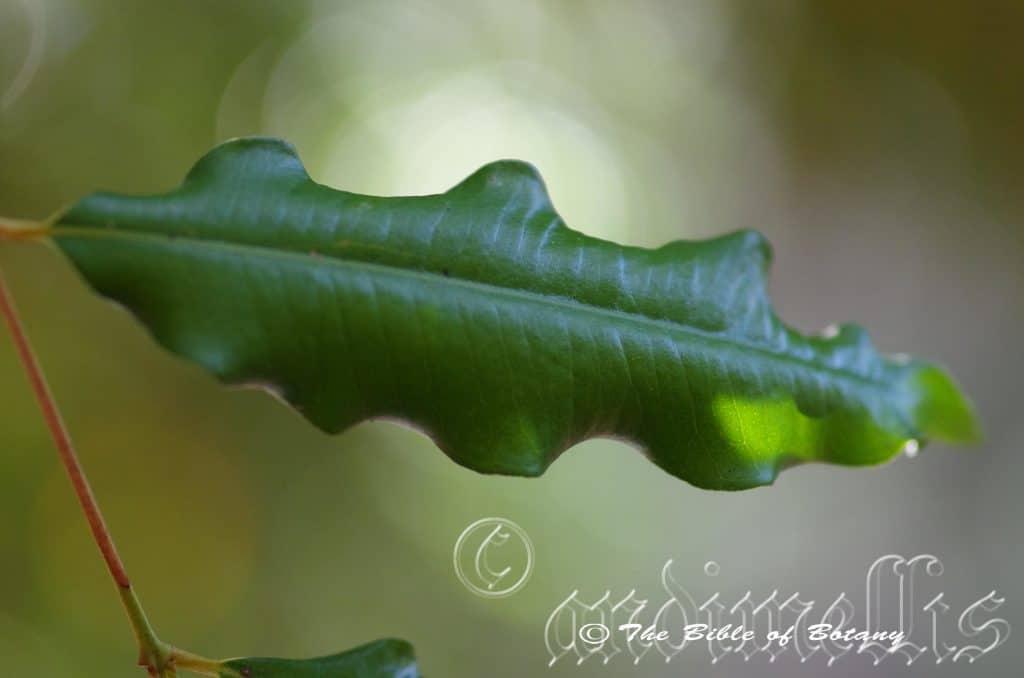
Gibralta Range National Park Ebor NSW
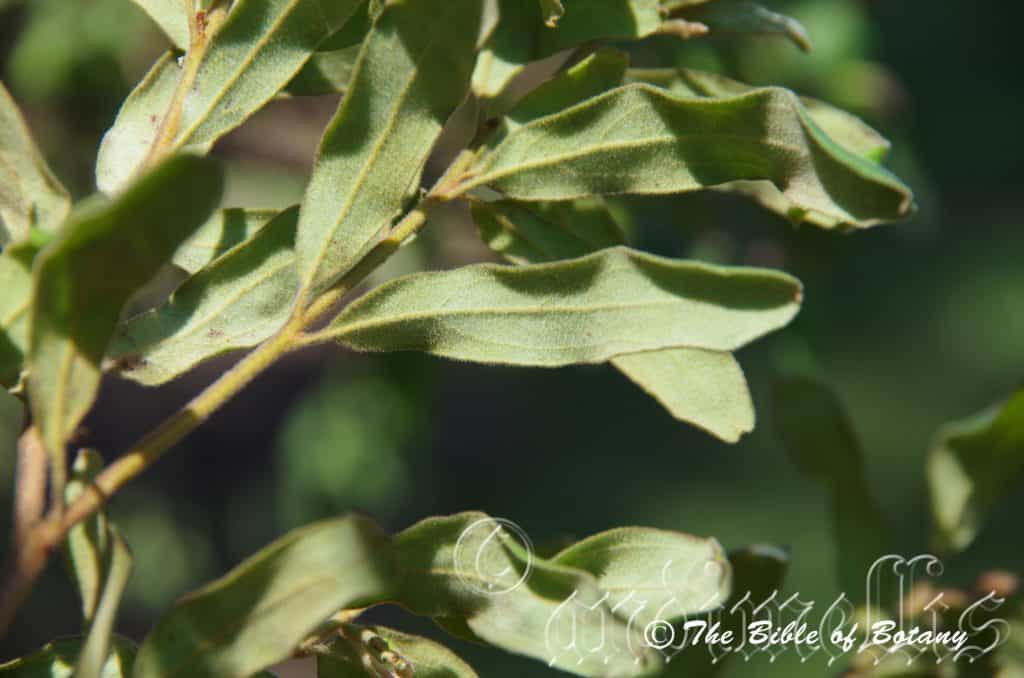
Mount Cootha Botanical Gardens Qld.
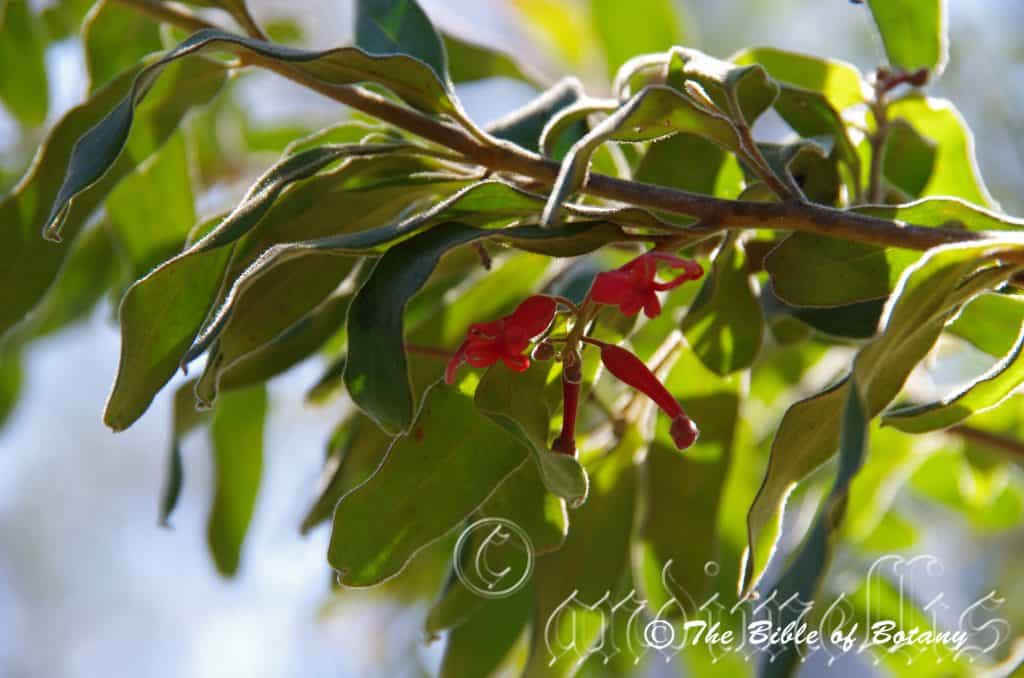
Mount Cootha Botanical Gardens Qld.
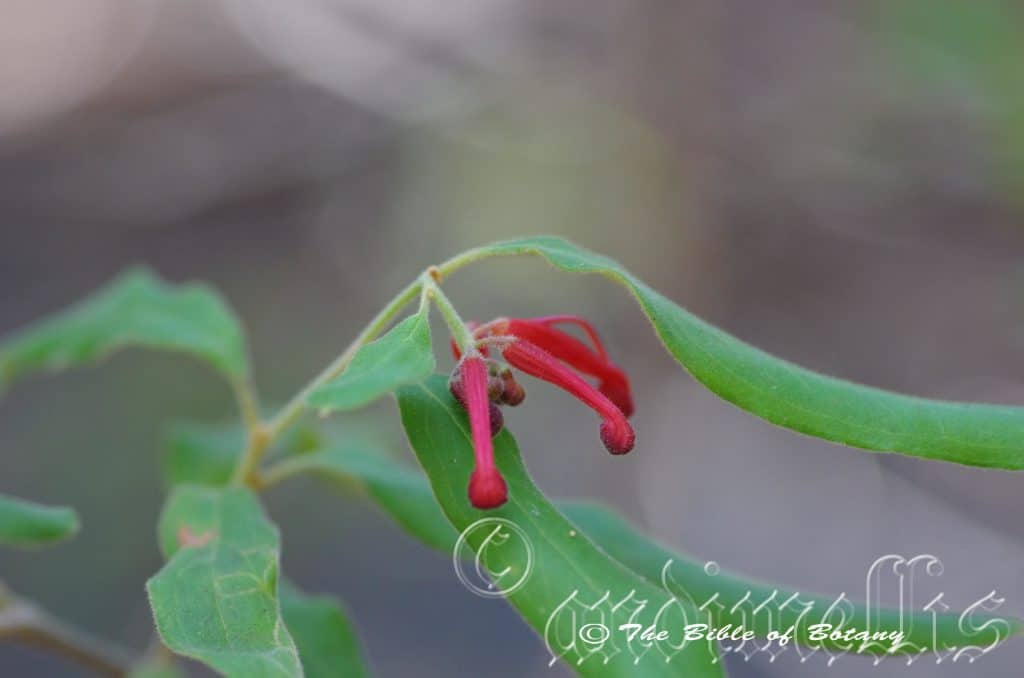
Mount Cootha Botanical Gardens Qld.
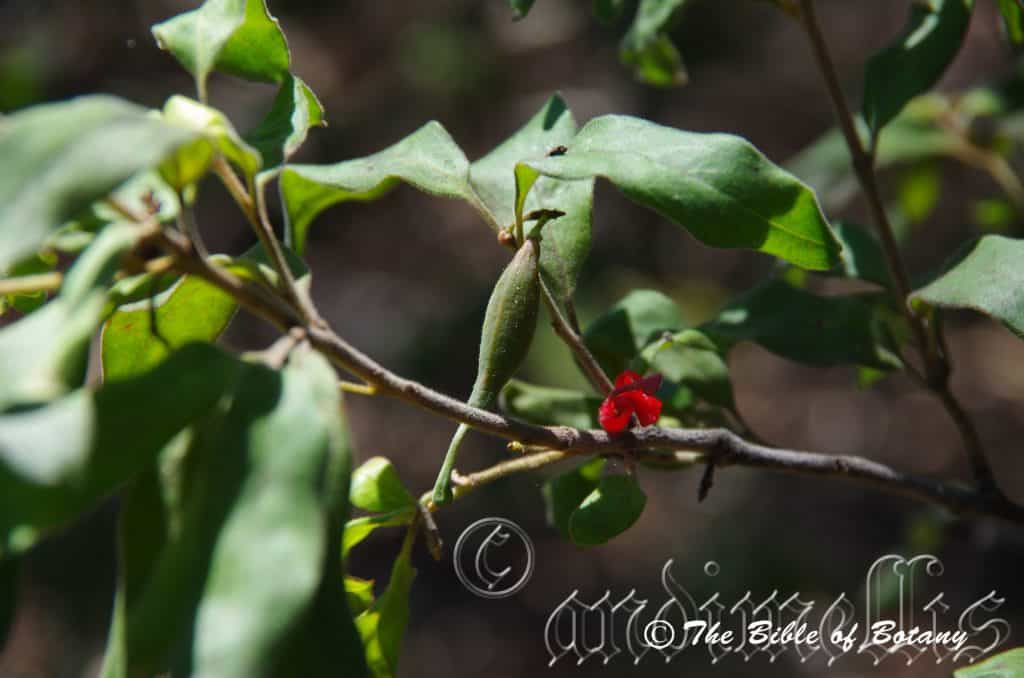
Mount Cootha Botanical Gardens Qld.
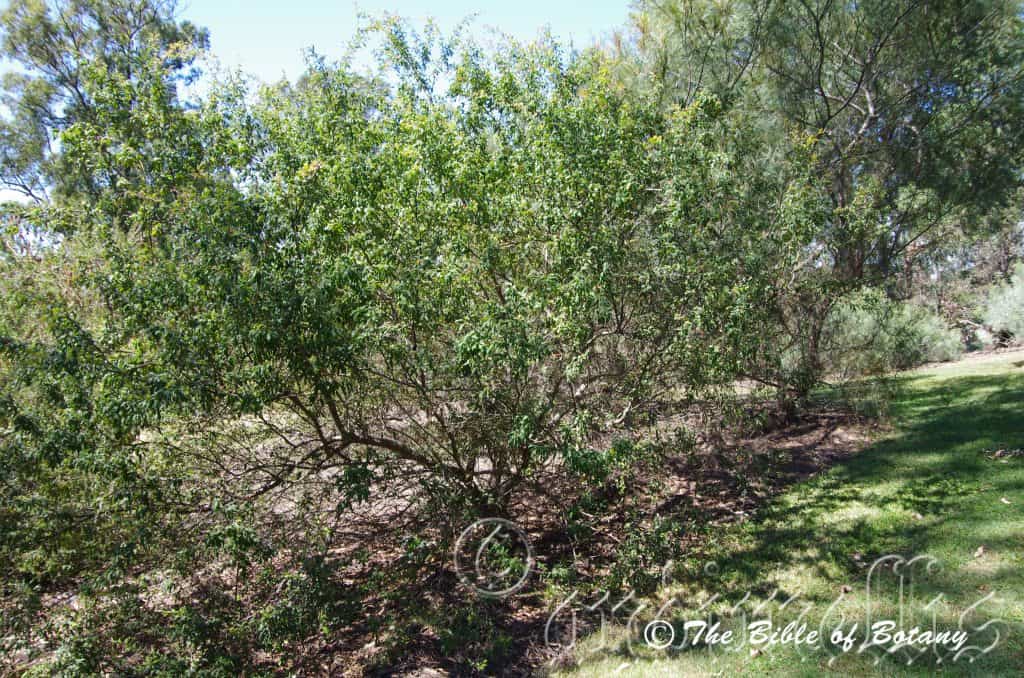
Mount Cootha Botanical Gardens Qld.
Grevillea mollis
Classification:
Class: Magnoliopsida
Order: Proteales
Family: Proteaceae
Genus: Is named in honour of C. F. Greville; 1749-1809, who was a British expert botanist on Algae, a foundation member of the London Horticultural Society and a collector of rare plants.
Species: From Mollis, which is Latin for softly hairy and supple. It usually refers to leaves or phyllodes, which have short, soft white hairs on a supple lamina.
Sub Species:
Common Name: Granite Grevillea.
Distribution:
Grevillea mollis is restricted to a small population on the Granite Belt in northern New South Wales south east from Glen Innes to the Nymboida National Park.
https://avh.ala.org.au/occurrences/search?taxa=Grevillea+mollis#tab_mapView
Habitat Aspect Climate:
Grevillea mollis prefers full sun to light dappled shade. It grows in dry scrub forests, open woodlands or dry schlerophyll forests amongst granite boulders. The altitude ranges from 200 meters ASL to 900 meters ASL.
The temperatures range from minus 3 degree in August to 38 degrees in January.
The rainfall ranges from lows of 500mm to an average of 900mm annually.
Soil Requirements:
Grevillea mollis prefers white to grey screes. The soils are usually derived from granite. The soils pH ranges from 5pH to 6pH are preferred. It does not tolerate waterlogged soils. Non saline soils to moderately saline soils are tolerated.
Height & Spread:
Wild Plants: 1m to 2m by 1. 5m to 3m.
Characteristics:
The larger stems are pale brown, glabrous and semi glossy. The terete branchlets are pale brown to fawn and sparsely covered in fawn villous hairs.
The alternate to sub opposite, simple leaves are straight to slightly falcate and oblong to narrow elliptical. They measure 28mm to 100mm in length by 5mm to 14mm in width. The petiole measures 1mm to 4. 5mm in length. The bases are slightly obliqua and cuneate while the apex is broad acute to obtuse. The discolourous laminas are pale green to pale olive green, sparsely covered in white puberulent hairs and dull on the upper laminas while the lower laminas are moderately to densely covered in soft white villous hairs. The laminas are undulating while the margins are entire, slightly undulating and slightly recurved. The mid vein is strongly prominent on the lower lamina and is distinctly visible and is clearly visible on the upper lamina.
The acroscopic to adaxial conflorescences are born in small decurve, clusters or short racemes from the upper leaf axils. The peduncles, rachises and pedicels are covered in white villous hairs. The peduncles measure 5mm to 12mm in length while the rachises measure 4mm to 14mm in length and the pedicels measure 2mm to 3mm in length. The perianth and style are the most prominent parts of the flower. The individual perianths are bright carmine-red to scarlet-red from the base through to the lobes. The perianth is covered in short white tomentose and hirsute hairs externally and is covered in white hirtellous hairs internally. The perianth and lobes measure 16mm to 17mm in length while the limbs are strongly recurved and free at the apex.
The 4 bright yellow anthers are well exposed. The styles are carmine red to scarlet-red from the base to the stigma and pollen presenter. The pistils measure 16mm to 17mm in length. The gently curving style is covered in white puberulent hairs on the apical half including the stigma. The lateral pollen presenter is broad oblong and measures 4mm to 5mm in length. The ovary is glabrous. There are 2, usually 4 to 8 individual flowers on the odd rachis throughout the year and 8 to 20 individual flowers from late August to early November.
The fruits are ellipsoidal with a pronounced obtuse apex on the follicles. The style is persistent on the ripe follicles. Follicles are produced singularly radiating out from the rachis. The follicles measure 16mm to 17mm in length by 6mm to 8mm in width. The glabrous pale green follicles turn grey-brown when ripe with a faint longitudinal ridge along the mid line.
Wildlife:
The dense foliage of Grevillea macleayeana with the flowers hidden on the inside make them very attractive and safe havens for small to medium honeyeaters like the Silver Eyes (Zosterops lateralis), Yellow Face Honeyeater (Lichenostomus chrysops), Brown Honeyeater (Lichmera indistincta) and the eastern Spinebill. (Acanthorhynchus tenuirostris).
Cultivation:
Grevillea mollis is a small Grevillea suitable for temperate and sub-tropical native gardens where light clays, gravelly clays or rockery soils occur. It is normally small slender shrubs that have responded well to cultivation and are very suitable for medium to large gardens. In cultivation it is dense and will grow from 2 meters to 3 meters in height by 2. 4 meter to 4. 5 meters in diameter when grown in the open. The soft foliage can be regularly tip pruned to encourage new growth, bushiness and flowering. The plant’s very soft foliage is what makes it special and appealing along with its prolonged flowering period. It is best used adjacent to large areas of bush where there light green foliage and upright habit is beautifully contrasted against the long hard straight boles of Eucalyptus and other dry schlerophyll trees.
Because of their size they offer protection for small birds which will use them as a corridor to gain access to other shrubs.
When mass planting Grevillea mollis use curves and irregular patterns so that they can be viewed from different angles around the garden. Use them where foreground and background plants have deep green leaves so their beautiful leaves are highlighted. For hedges and screens plant them at 2. 5 meters to 3. 5 meter centers or in garden beds plant them at 4 meters to 5 meter centers.
Propagation:
Seeds: Grevillea mollis seeds need to be treated before sowing. This can be done by placing the seeds into a small calico bag with sharp clean sand and rubbing them to scarify the surface or they can be nicked individually with a knife. Another method is to rub the individual seeds lightly over fine sandpaper. Sow the freshly treated seeds directly into a seed raising mix. Cover them with 5mm of fine sand and keep moist not wet. Place the tray in a warm sunny position. When the seedlings are 25mm to 50mm tall, prick them out and plant them into 50mm native tubes using a good organic mix.
Once the seedlings reach 150mm to 200mm in height, nip the tips out before planting them out into their permanent position.
Cuttings:
Use 40mm to 80mm long half ripened material when growing from cuttings from the present season’s growth. Take them in mid-autumn or early spring. Remove half the leaves from the bottom section being careful not to tear the bark.
1 Prepare the cutting mix by adding one third sharp clean river sand, one third peat and one third perlite. These ingredients are sterilize,
2 Select good material from non diseased plants,
3 Select semi green stems for cuttings. Look for a stem with two or three nodes,
4 Place the cutting on a flat, hard surface, and make a clean cut down one side of the cutting at the base for 10mm with a sharp sterile knife or razor blade. – This scarification of the node will increase the chances of roots emerging from this spot. Now remove all but one or two the leaves, leaving the apex leaves in tact. If the leaves are very large in proportion to the stem, cut off the apical halves.
5 Fill a saucer with water, and place a little medium strength rooting hormone into another container like a milk bottle top. Dip the node end of the cutting into the water and then into the rooting hormone. Tap off any excess hormone,
6 Use a small dipple stick or old pencil to poke a hole into the soilless potting mix. Ensure the hole is slightly larger than the stem diameter and be careful not to wipe the rooting hormone off the cuttings base, place the cuttings in a pattern ensuring the cuttings are not touching each other,
7 I like to place the pots in Plastic bags to help maintain temperature and moisture. Place in a semi shaded place like under 50mm shade cloth.
8 When the cuttings have struck, open the bag to allow air circulation for a few days to a week,
9 Once hardened off remove the cuttings from the bag and allow to further hardening for a few more days,
10 Transplant into a good potting mix to grow on.
Fertilize using seaweed, fish emulsion or organic chicken pellets soaked in water on an alternate basis. Fertilize every two months until the plants are established then twice annually in early September or March to maintain health, vitality and better flowering. Avoid synthetic fertilizers as they will most likely contain calcium and phosphorus at levels, which are toxic to most Proteaceae.
Further Comments from Readers:
Hi reader, it seems you use The Bible of Botany a lot. That’s great as we have great pleasure in bringing it to you! It’s a little awkward for us to ask, but our first aim is to purchase land approximately 1,600 hectares to link several parcels of N.P. into one at The Pinnacles NSW Australia, but we need your help. We’re not salespeople. We’re amature botanists who have dedicated over 30 years to saving the environment in a practical way. We depend on donations to reach our goal. If you donate just $5, the price of your coffee this Sunday, We can help to keep the planet alive in a real way and continue to bring you regular updates and features on Australian plants all in one Botanical Bible. Any support is greatly appreciated. Thank you.
In the spirit of reconciliation we acknowledge the Bundjalung, Gumbaynggirr and Yaegl and all aboriginal nations throughout Australia and their connections to land, sea and community. We pay our respect to their Elders past, present and future for the pleasures we have gained.
Grevillea molyneuxii
Classification:
Class: Magnoliopsida
Order: Proteales
Family: Proteaceae
Genus: Is named in honour of C. F. Greville; 1749-1809, who was a British expert botanist on Algae, a foundation member of the London Horticultural Society and a collector of rare plants.
Species: Is probably named in honour of Albert Molyneux; 1832-1009 who was a British born Australian agriculturalist supporter and editor of Garden and Field, and advocated the need for experimental farms.
Sub Species:
Common Name:
Distribution:
Grevillea molyneuxii is endemic to New South Wales and is restricted to a few populations in south west of Wollongong.
https://avh.ala.org.au/occurrences/search?taxa=Grevillea+molyneuxii#tab_mapView
Habitat Aspect Climate:
Grevillea molyneuxii prefer full sun to light dappled shade. It grows in dry woodlands or remnant dry schlerophyll forests in large shallow depressions which are seasonally wet. The altitude ranges from 30 meters ASL to 400 meters ASL.
The temperatures range from minus 3 degree in August to 38 degrees in January.
The rainfall ranges from lows of 650mm to an average of 900mm annually.
Soil Requirements:
Grevillea molyneuxii prefers skeletal to shallow red sandy loams to light fatty clays over sandstone. The soils are derived from decomposed or partially decomposed sandstone. The soils pH ranges from 5PH to 6pH are preferred. It tolerates seasonally wet soils. Non saline soils to moderately saline soils are tolerated.
Height & Spread:
Wild Plants: 0. 2m to 1m by 0. 5m to 1. 5m.
Characteristics:
The larger stems are pale grey-brown, glabrous and slightly scurfy. The branchlets are olive-brown, glabrous and covered in white subsericeous hairs.
The opposite, simple leaves are linear to narrow elliptical and measure 15mm to 45mm in length by 1mm to 5mm in width. The petioles measure 0mm to 1mm in length. The bases are tapering to attenuate while the apexes are narrow acute with a short pungent mucronate tip. The discolourous laminas are pale green to sea-green, semi glossy and glabrous on the upper lamina while the lower lamina is covered in white sub sericeous to sub tomentose hairs. The laminas are straight and decurve slightly and gently downwards from the midvein to the margins while the margins are entire and refracted close to the edge. The vein is prominent on the lower lamina and is distinctly visible on the upper lamina forming a groove.
The acroscopic conflorescences are short subsecunda born terminally or in the leaf axils. The peduncles, rachises and pedicels are covered in off white subsericeous hairs. The peduncles measure 3mm to 15mm in length while the rachises measure 3mm to 6mm in length and the pedicels measure 1. 5mm to 2. 5mm in length. There are 5 to 15 individual flowers on a rachis. The styles are the most prominent parts of the flower. Individual perianths are variable, scarlet-red from the base through to the lobes. The perianths are sparsely covered in white subsericeous to sub tomentose hairs externally and are covered in white hirtellous hairs internally. The perianth and lobes measure 15mm to 18mm in length while the lobes are strongly recurved and free.
The styles are deep red with a deep red stigma. The pistils measure 18mm to 21mm long. The style is glabrous except for a 3mm to 4mm ring below the oblique stigma and pollen presenter. The style gently curves from on the apical third. The pollen presenter is scarlet red. The ovary is glabrous and measures 1mm to 1. 2mm in diameter. Flowers appear from August to November.
Grevillea molyneuxii‘s fruits are ovoidal-ellipsoidal follicles. The style is persistent on the ripe follicles. They measure 12mm to 14mm in length by 5mm to 6mm in diameter. The glabrous, semi glossy green follicles are turn grey when ripe.
Wildlife:
Grevillea molyneuxii flowers are hidden on the inside of the foliage which makes them very attractive and safe havens for small to medium honeyeaters like the Silver Eyes (Zosterops lateralis), Yellow Face Honeyeater (Lichenostomus chrysops), Brown Honeyeater (Lichmera indistincta) and the eastern Spinebill. (Acanthorhynchus tenuirostris).
Cultivation:
Grevillea molyneuxii is a small Grevillea suitable for temperate and sub-tropical native gardens where light clays, gravelly clays or rockery soils occur. It is normally small well rounded shrubs that have responded well to cultivation and are very suitable for medium to large gardens. In cultivation it is dense and grows from 0. 5 meters to 1 meter in height by 1 meter to 1. 5 meters in diameter when cultivated in the open. The foliage can be regularly tip pruned to encourage new growth, bushiness and flowering and is recommended immediately after flowering ceases. The flowers appear from September and May with two peak during this period, the first is in September with the second flush coming in late March. This is what makes it very appealing in cultivation.
It is best used adjacent to small areas of bush away from paths but near the house so their flowers can be viewed regularly.
It can be grown in small sunny courtyards, around swimming pools, near paths, along driveways, around fish or frog ponds, in rockeries both large and small, in miniature gardens, formal beds Japanese gardens or snuck in between other larger plants.
Because of their small size, beautiful dense foliage when pruned can make a great contribution around fish and frog ponds. Mix them with short strap leaf plants or small clumpy annual leaving space between so you can see the rocks, logs or other features.
When mass planting Grevillea molyneuxii use curves and irregular patterns so they can be viewed from different angles around the garden. When mass planting in raised garden beds or a large heath garden space the plants at 1 meter centers should be considered. If you are using them amongst rocks or around the small heath gardens plant them sparingly, so not to make the area look cluttered or detract from the other features. 3 or 4 in an area of 100 square meters would be ample. 3 plants separately planted or plant 2 close together and separate the other 2 to give width and depth where you want it.
Propagation:
Seeds: Sow the seeds of Grevillea molyneuxii directly into a seed raising mix. Cover them with 5mm of fine sand and keep moist not wet. Place the tray in a warm sunny position. When the seedlings are 25mm to 50mm tall, prick them out and plant them into 50mm native tubes using a good organic mix.
Once the seedlings reach 150mm to 200mm in height, nip the tips out before planting them out into their permanent position. For mass plantings plant them out at 0.6 meter to 2.5 meter centers depending on whether it is to be used as a feature shrub or mingled into a bush scene.
Fertilize using Seaweed, fish emulsion or a half strength solution of organic chicken pellets soaked in water on an alternate basis. Fertilize every 3 months until the plants are well established then annually to assist in prolific blooming and healthy growth. Avoid synthetic fertilizers as they may contain high levels of phosphorus and calcium which are toxic to most members of the Proteaceae family.
Cuttings:
Use 40mm to 80mm long half ripened material when growing from cuttings from the present season’s growth. Take them in mid-autumn or early spring. Remove half the leaves from the bottom section being careful not to tear the bark.
1 Prepare the cutting mix by adding one third sharp clean river sand, one third peat and one third perlite. These ingredients are sterilize,
2 Select good material from non diseased plants,
3 Select semi green stems for cuttings. Look for a stem with two or three nodes,
4 Place the cutting on a flat, hard surface, and make a clean cut down one side of the cutting at the base for 10mm with a sharp sterile knife or razor blade. – This scarification of the node will increase the chances of roots emerging from this spot. Now remove all but one or two the leaves, leaving the apex leaves in tact. If the leaves are very large in proportion to the stem, cut off the apical halves.
5 Fill a saucer with water, and place a little medium strength rooting hormone into another container like a milk bottle top. Dip the node end of the cutting into the water and then into the rooting hormone. Tap off any excess hormone,
6 Use a small dipple stick or old pencil to poke a hole into the soilless potting mix. Ensure the hole is slightly larger than the stem diameter and be careful not to wipe the rooting hormone off the cuttings base, place the cuttings in a pattern ensuring the cuttings are not touching each other,
7 I like to place the pots in Plastic bags to help maintain temperature and moisture. Place in a semi shaded place like under 50mm shade cloth.
8 When the cuttings have struck, open the bag to allow air circulation for a few days to a week,
9 Once hardened off remove the cuttings from the bag and allow to further hardening for a few more days,
10 Transplant into a good potting mix to grow on.
Fertilize using seaweed, fish emulsion or organic chicken pellets soaked in water on an alternate basis. Fertilize every two months until the plants are established then twice annually in early September or March to maintain health, vitality and better flowering. Avoid synthetic fertilizers as they will most likely contain calcium and phosphorus at levels, which are toxic to most Proteaceae.
Further Comments from Readers:
Hi reader, it seems you use The Bible of Botany a lot. That’s great as we have great pleasure in bringing it to you! It’s a little awkward for us to ask, but our first aim is to purchase land approximately 1,600 hectares to link several parcels of N.P. into one at The Pinnacles NSW Australia, but we need your help. We’re not salespeople. We’re amature botanists who have dedicated over 30 years to saving the environment in a practical way. We depend on donations to reach our goal. If you donate just $5, the price of your coffee this Sunday, We can help to keep the planet alive in a real way and continue to bring you regular updates and features on Australian plants all in one Botanical Bible. Any support is greatly appreciated. Thank you.
In the spirit of reconciliation we acknowledge the Bundjalung, Gumbaynggirr and Yaegl and all aboriginal nations throughout Australia and their connections to land, sea and community. We pay our respect to their Elders past, present and future for the pleasures we have gained.
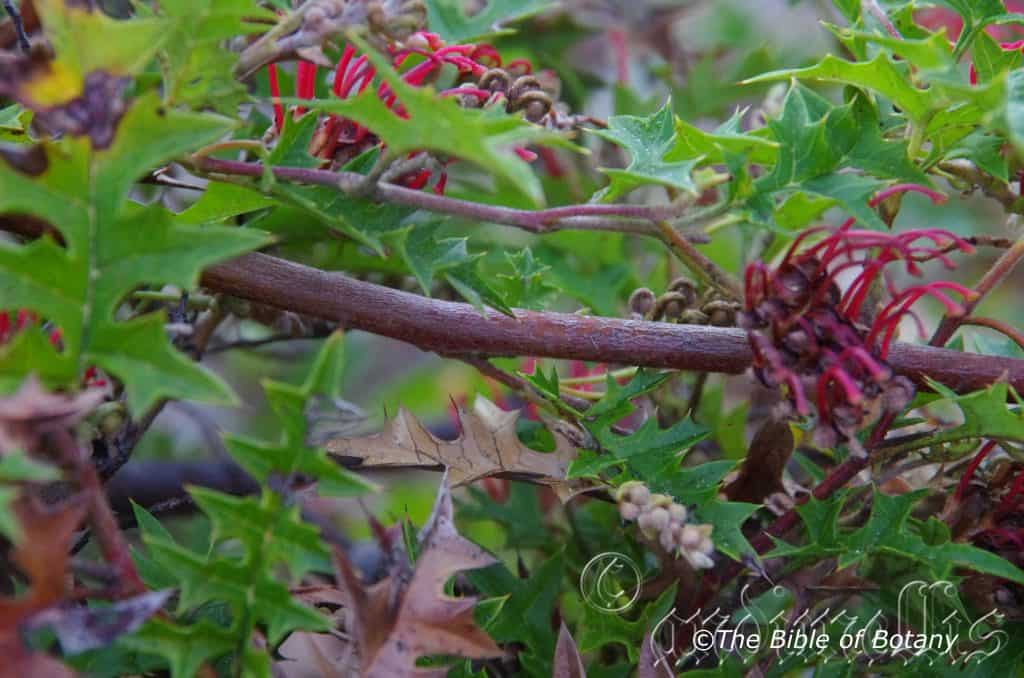
National Botanic Gardens ACT
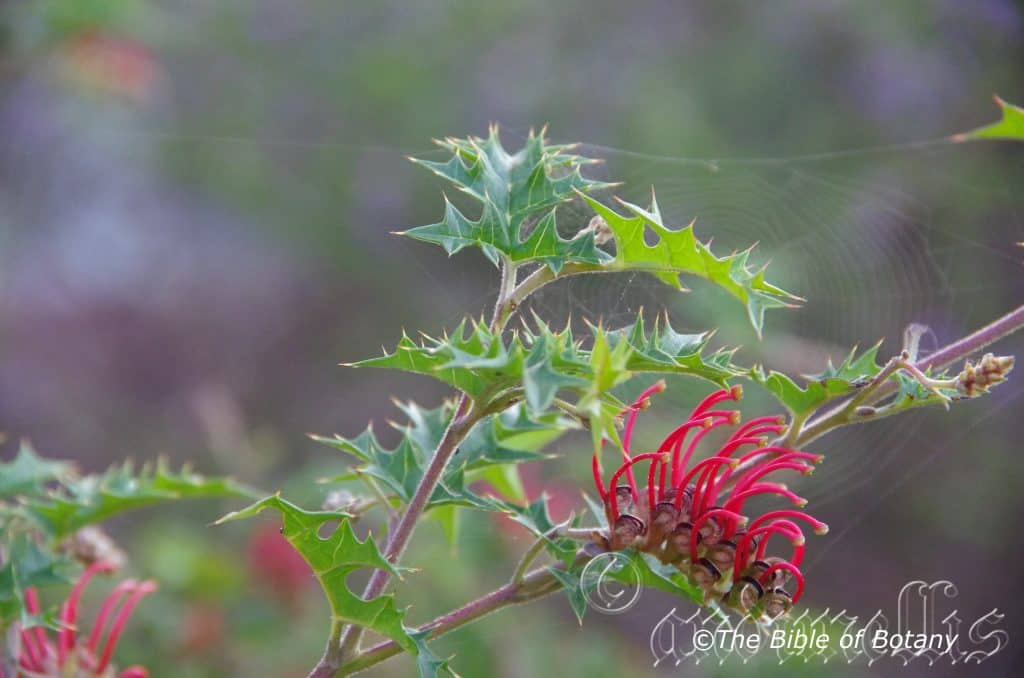
National Botanic Gardens ACT
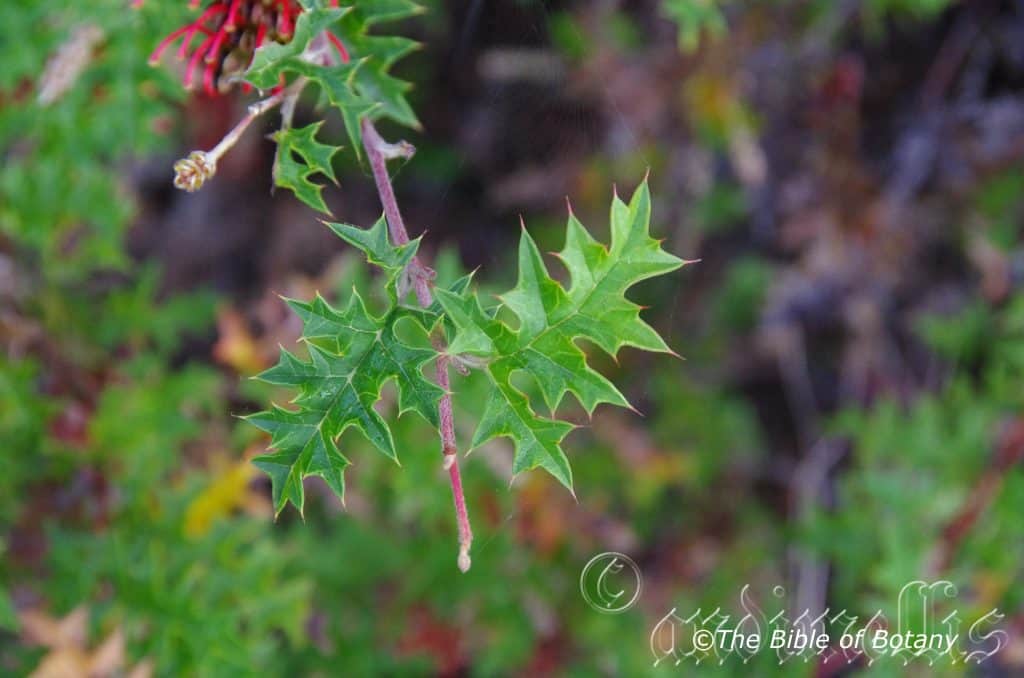
National Botanic Gardens ACT
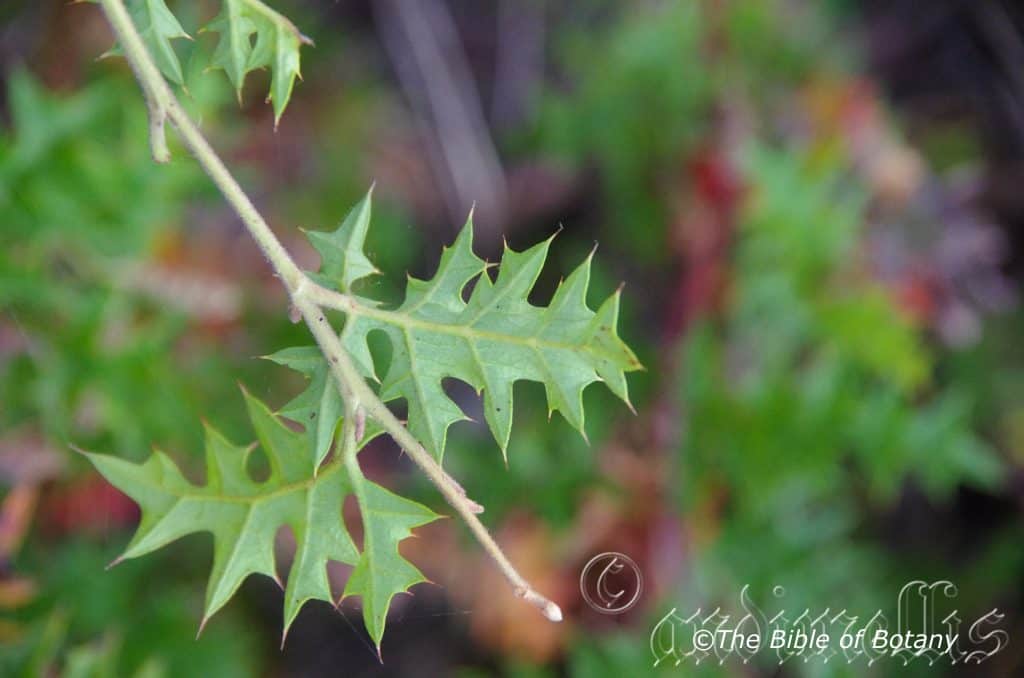
National Botanic Gardens ACT
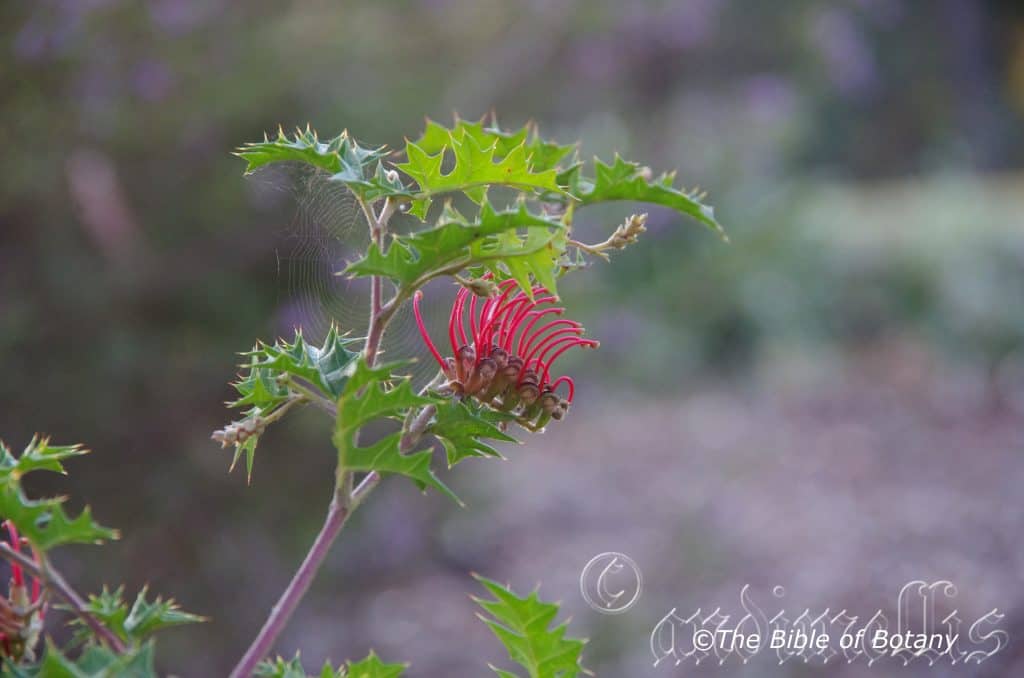
National Botanic Gardens ACT
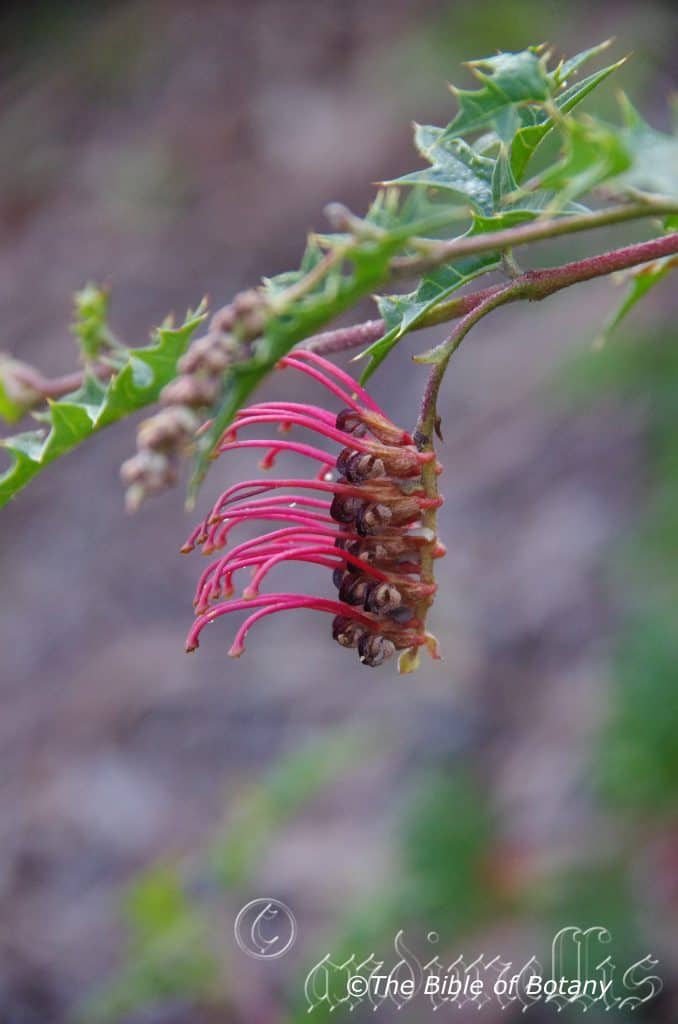
National Botanic Gardens ACT
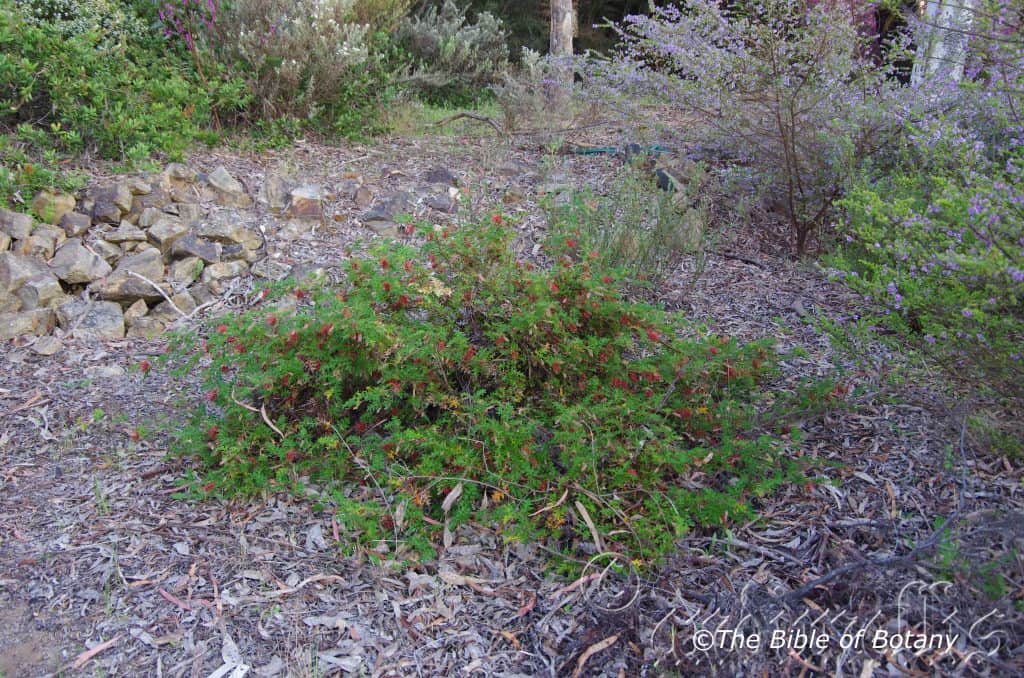
National Botanic Gardens ACT
Grevillea montis-cole
Classification:
Class: Magnoliopsida
Order: Proteales
Family: Proteaceae
Genus: Is named in honour of C. F. Greville; 1749-1809, who was a British expert botanist on Algae, a foundation member of the London Horticultural Society and a collector of rare plants.
Species: From Mons, which is Latin for a mount or mountain and from Cole, which is Latinized for the Cole Forest. It refers to plants which grow in or on the forests on Cole Mountain forests.
Sub Species: Grevillea montis-cole subsp. montis-cole. From Mons, which is Latin for a mount or mountain and from Cole, which is Latinized for the Cole Forest. It refers to plants which grow in or on the forests on Cole Mountain forests.
Grevillea montis-cole subsp. brevistyla from brivis, which is Latin for short or small and Stylos, which is Ancient Greek for a pillar or post. It refers to the plants which have short styles or styles, which are shorter than other subspecies in the genus. This may be declared a new species in its own right once DNA is carried out on fresh material.
Common Name:
Distribution:
Grevillea montis-cole is restricted to a small area north west of Ballarat in central Victoria.
Grevillea montis-cole subsp. montis-cole is found in the Mount Cole State Forrest.
Grevillea montis-cole subsp. brevistyla is found on Mount Langi Ghiran.
https://avh.ala.org.au/occurrences/search?taxa=Grevillea+montis-cole#tab_mapView
Habitat Aspect Climate:
Grevillea montis-cole prefers full sun to light dappled shade. It grows in dry clay scrub forests and open woodlands in large shallow depressions which are seasonally wet or rocky terrains.
Grevillea montis-cole subsp. montis-cole altitude ranges from 500 meters ASL to 900 meters ASL.
Grevillea montis-cole subsp. brevistyla altitude ranges from 800 meters ASL to 900 meters ASL.
The temperatures range from minus 8 degree in August to 38 degrees in January.
The rainfalls range from lows of 550mm to an average of 700mm annually however orographic precipitation would assist in keeping the soil moist for long periods after rain.
Soil Requirements:
Grevillea montis-cole prefers red sandy loams to medium clays or podsolic loams. The soils are derived from decomposed or partially decomposed granite. The soils pH ranges from 4. 5pH to 6pH are preferred. It tolerates seasonally wet soils. Non saline soils to moderately saline soils are tolerated.
Height & Spread:
Wild Plants: 1m to 3m by 1m to 2m.
Characteristics:
Grevillea montis-cole subsp. montis-cole is spreading prostrate shrub growing 0.5 meters to 1 m in height. The larger stems are deep reddish-brown, and slightly scurfy. Branchlets are a pale soft green or pinkish-red and moderately to densely covered in erect and spreading, soft, white hairs.
Grevillea montis-cole subsp. brevistyla is an erect small shrub growing 1 meter to 2.2 meters in height. The larger stems are deep reddish-brown, and slightly scurfy. Branchlets are a pale soft green or pinkish-red and moderately to densely covered in erect and spreading, soft ferruginous to reddish-purple hairs.
Leaves are ovate in outline, with 5 to 15 spreading primary lobes that are further divided into sub-triangular ultimate lobes and measure 30mm to 70mm in length by 15mm to 55mm in width at the basal lobes.
The discolourous mature leaves are bright, mid green, and glabrous on the upper surface, while the lower lamina is dull pale green and glabrous. The mid vein is strongly prominent on the lower lamina and is paler on the upper lamina and is sparsely to moderately covered in erect and spreading, while the lateral veins are similar an at 55 to 65 degrees to the main vein.
The terminal conflorescences are decurved, simple secunds and measure 20mm to 65mm in length. Individual flowers have a narrow pale greenish-brown perianth at the apex. The secunds are glabrous internally, while the rachise and perianth are densely covered in long white, tomentose hairs externally.
Grevillea montis-cole subsp. brevistyla has erect and spreading, soft ferruginous to reddish-purple hairs.
Grevillea montis-cole subsp. montis-cole has a pistil that measures 20mm to 23mm in length, with a villous stipitate ovary.
Grevillea montis-cole subsp. brevistyla has a pistil that measures 15mm to 17 mm in length, with a villous stipitate ovary.
The glabrous bright red style has a slightly to very oblique, ochre pollen presenter. The flowers appear in late September to November,
Grevillea montis-cole‘s fruits are ovoidal follicles, which are moderately to densely covered in tomentose hairs and with decurve or deflexed on the ripe follicles.
Wildlife:
Grevillea montis-cole‘s flowers are very attractive and safe havens for small to medium honeyeaters like the Silver Eyes (Zosterops lateralis), Yellow Face Honeyeater (Lichenostomus chrysops), Brown Honeyeater (Lichmera indistincta) and the eastern Spinebill. (Acanthorhynchus tenuirostris).
Cultivation:
Grevillea montis-cole is a small Grevillea suitable for temperate and sub-alpine native gardens where light clays, gravelly clays or rockery soils occur. It is normally a wide spreading procumbent shrub that have responded well to cultivation and is very suitable for small to medium gardens. In cultivation it usually grows 0.3 meters to 0.5 meter in height by 1.5 to 2 meters in diameter for the prostrate form and 1.5 meters to 2 meters in height by 1.5 meters to 2 meters in diameter for the uprightform when cultivated in the open. The foliage can be regularly tip pruned to encourage new growth, the procumbent habit and better flowering. It is recommended pruning immediately after flowering ceases. The plant’s brilliant flowering period is what makes it very appealing in cultivation.National Botanic Gardens ACT
It goes well in the foreground near bends in a path and will attract attention if surrounded by white flowering spring annuals. Grevillea montis-cole is at its best in small garden beds as feature plants or in miniature landscapes.
Because of its small size, beautiful dense foliage when pruned can make a great contribution around fish and frog ponds or rockeries. Mix it with short strap leaf plants or small clumpy annual leaving space between so you can see the rocks, logs or other features.
When mass planting Grevillea montis-cole use curves and irregular patterns so they can be viewed from different angles around the garden. When mass planting in raised garden beds or a large bog garden space the plants at 1 meter centers should be considered. If you are using them amongst rocks or around the small bog garden plant them sparingly, so not to make the area look cluttered or detract from the other features. 3 or 4 in an area of 50 square meters would be ample. 3 plants separately planted or plant 2 close together and separate the other 2 to give width and depth where you want it. The use of annuals helps to attract the viewer to the permanent plants foliage as it is the predominant green in sight. In addition most annuals flower when this Grevillea is resting during the summer.
When designing miniature garden use contours to display the plants to their best and this also makes the bed look larger. The use of small tussock grasses or Lomandra specie adjacent to Grevillea montis-cole to give them height. Prune plants up the valleys so they remain shorter than those in the foreground to give depth.
Place the procumbent forms near old stumps rocks and roots to make the stumps or roots look larger. Select an area of ground and let your hair down and be imaginative and this is the plant that may just change your life.
Propagation:
Seeds: Sow the seeds of Grevillea montis-cole directly into a seed raising mix. Cover them with 5mm of fine sand and keep moist not wet. Place the tray in a warm sunny position. When the seedlings are 25mm to 50mm tall, prick them out and plant them into 50mm native tubes using a good organic mix.
Once the seedlings reach 150mm to 200mm in height, nip the tips out before planting them out into their permanent position. For mass plantings plant them out at 1.5 meter to 2.5 meter centers depending on whether it is to be used as a feature shrub or mingled into a bush scene.
Fertilize using Seaweed, fish emulsion or a half strength solution of organic chicken pellets soaked in water on an alternate basis. Fertilize every 3 months until the plants are well established then annually to assist in prolific blooming and healthy growth. Avoid synthetic fertilizers as they may contain high levels of phosphorus and calcium which are toxic to most members of the Proteaceae family.
Cuttings:
Use 40mm to 80mm long half ripened material when growing from cuttings from the present season’s growth. Take them in mid-autumn or early spring. Remove half the leaves from the bottom section being careful not to tear the bark.
1 Prepare the cutting mix by adding one third sharp clean river sand, one third peat and one third perlite. These ingredients are sterilize,
2 Select good material from non diseased plants,
3 Select semi green stems for cuttings. Look for a stem with two or three nodes,
4 Place the cutting on a flat, hard surface, and make a clean cut down one side of the cutting at the base for 10mm with a sharp sterile knife or razor blade. – This scarification of the node will increase the chances of roots emerging from this spot. Now remove all but one or two the leaves, leaving the apex leaves in tact. If the leaves are very large in proportion to the stem, cut off the apical halves.
5 Fill a saucer with water, and place a little medium strength rooting hormone into another container like a milk bottle top. Dip the node end of the cutting into the water and then into the rooting hormone. Tap off any excess hormone,
6 Use a small dipple stick or old pencil to poke a hole into the soilless potting mix. Ensure the hole is slightly larger than the stem diameter and be careful not to wipe the rooting hormone off the cuttings base, place the cuttings in a pattern ensuring the cuttings are not touching each other,
7 I like to place the pots in Plastic bags to help maintain temperature and moisture. Place in a semi shaded place like under 50mm shade cloth.
8 When the cuttings have struck, open the bag to allow air circulation for a few days to a week,
9 Once hardened off remove the cuttings from the bag and allow to further hardening for a few more days,
10 Transplant into a good potting mix to grow on.
Fertilize using seaweed, fish emulsion or organic chicken pellets soaked in water on an alternate basis. Fertilize every two months until the plants are established then twice annually in early September or March to maintain health, vitality and better flowering. Avoid synthetic fertilizers as they will most likely contain calcium and phosphorus at levels, which are toxic to most Proteaceae.
Further Comments from Readers:
Hi reader, it seems you use The Bible of Botany a lot. That’s great as we have great pleasure in bringing it to you! It’s a little awkward for us to ask, but our first aim is to purchase land approximately 1,600 hectares to link several parcels of N.P. into one at The Pinnacles NSW Australia, but we need your help. We’re not salespeople. We’re amature botanists who have dedicated over 30 years to saving the environment in a practical way. We depend on donations to reach our goal. If you donate just $5, the price of your coffee this Sunday, We can help to keep the planet alive in a real way and continue to bring you regular updates and features on Australian plants all in one Botanical Bible. Any support is greatly appreciated. Thank you.
In the spirit of reconciliation we acknowledge the Bundjalung, Gumbaynggirr and Yaegl and all aboriginal nations throughout Australia and their connections to land, sea and community. We pay our respect to their Elders past, present and future for the pleasures we have gained.
Grevillea mucronulata
Classification:
Class: Magnoliopsida
Order: Proteales
Family: Proteaceae
Genus: Is named in honour of C. F. Greville; 1749-1809, who was a British expert botanist on Algae, a foundation member of the London Horticultural Society and a collector of rare plants.
Species: From Mucronatum, which is Latin for a short sharp tip. It refers to the apexes of a leaf, petal, sepal or bracts, which are generally obtuse with a short sharp point at the apex.
Sub Species:
Common Name: Green Spider Flower.
Distribution:
Grevillea mucronulata is endemic to New South Wales and is found south from the upper Hawksberry River Catchment to near Wollongong.
https://avh.ala.org.au/occurrences/search?taxa=Grevillea+mucronulata#tab_mapView
Habitat Aspect Climate:
Grevillea mucronulata prefers full sun to light dappled shade. It grows in dry clay scrub forests and open woodlands in large shallow depressions which are seasonally wet or rocky terrains. The altitude ranges from 20 meters ASL to 850 meters ASL.
The temperatures range from minus 3 degree in August to 38 degrees in January.
The rainfalls range from lows of 600mm to an average of 1000mm annually.
Soil Requirements:
Grevillea mucronulata prefers red sandy loams to medium clays or podsolic loams. The soils are usually derived from sandstones or shales. The soils pH ranges from 4. 5pH to 6pH are preferred. It tolerates seasonally wet soils. Non saline soils to moderately saline soils are tolerated.
Height & Spread:
Wild Plants: 0. 3m to 3. 5m by 1m to 2m.
Characteristics:
The larger stems are pale grey-brown, glabrous and slightly scurfy. Branchlets are an olive-brown to purple-brown and covered in white subsericeous hairs.
The opposite or alternate simple leaves vary considerably from being narrow elliptical, elliptical to obovate or orbicular and measure 4mm to 40mm in length by 2mm to 18mm in width. The petiole is moderately covered in white subsericeous hairs measures 2mm to 4mm in length. The oblique bases are rounded to broad cuneate while the apexes are obtuse with a raised apiculate tip. The discolourous laminas are deep grass-green and are sparsely to densely covered in white sericeous to villous hairs. The lower lamina is deep green and are glabrous to glandulous on the upper laminas while the lower laminas are sparsely to moderately covered in white villous to subsericeous. The laminas are decurve from the midvein to the margins and straight to strongly decurve on the apical half. The margins are entire and are refracted near the apex. The mid vein is prominent on the lower lamina and is not visible on the upper lamina.
The acroscopic conflorescence are short loose secunds or clusters of 6 to 18 flowers are born from the terminals or the leaf axils. The peduncles, rachises and pedicels are covered in white tomentose to villous hairs. The peduncles measure 8mm to 18mm in length while the rachis measures 3mm to 10mm in length and the pedicels measure 4. 5mm to 7mm in length.
The perianth and style are the most prominent parts of the flower. The individual perianths are pale lime green from the base through to the slightly paler limbs which are often tinged purple. The perianths are covered in white appressed to semi erect tomentose hairs externally and are covered in white hirtellous hairs internally on the basal third. The perianth and limbs measure 10mm to 12mm in length while the limbs are strongly recurved.
The style is purple to purple-red turning a deep lime green at the stigma. The pistils measure 18mm to 28mm in length. The erect style is sparsely to moderately covered in white villous hairs. The stigma and pollen collector are usually lateral or at timers almost lateral, lime green and glabrous while the ovary is also covered in white villose hairs. The flowers appear from May to October.
The fruits are ovoidal follicles. The styles are persistent and decurve or deflexed on the ripe follicles. They measure 13mm to 20mm in length by 6mm to 11mm in diameter. The glossy green follicles are covered in white villous hairs and turn brown when ripe.
Wildlife:
Grevillea mucronulata’s flowers are hidden on the inside of the foliage which makes them very attractive and safe havens for small to medium honeyeaters like the Silver Eyes (Zosterops lateralis), Yellow Face Honeyeater (Lichenostomus chrysops), Brown Honeyeater (Lichmera indistincta) and the eastern Spinebill. (Acanthorhynchus tenuirostris).
Cultivation:
Grevillea mucronulata is a small Grevillea suitable for temperate and sub-tropical native gardens where light clays, gravelly clays or rockery soils occur. It is normally small wide spreading procumbent shrubs that have responded well to cultivation and are very suitable for medium to large gardens. In cultivation it usually grows 0.5 meters to 2.5 meters in height by 3.5 meters to 2 meters in diameter for the procumbent form when cultivated in the open. The foliage can be regularly tip pruned to encourage new growth, the procumbent habit and better flowering. It is recommended pruning immediately after flowering ceases. The plant’s prolonged flowering period and the beautiful lime green flowers are what makes it very appealing in cultivation.
It can be grown in small sunny courtyards, around swimming pools, near paths, along driveways, around fish or frog ponds, in rockeries both large and small, in miniature gardens, formal beds Japanese gardens or snuck in between other larger plants.
A bend in a path can be broken up by placing them at the bend. Place them in the foreground with medium and larger plants behind. Plants with either small red flowers or white flowers can be used in the midground while large flowering specie can be placed in the background. This will lead your eyes down and over to the back ground. Whether it is in flower or not these plants will catch your attention and the viewer will be transfixed on the display rather than watching the path.
Grevillea mucronulata is at their best in small garden beds as feature plants or in miniature landscapes.
Because of their small size, beautiful dense foliage when pruned can make a great contribution around fish and frog ponds or rockeries. Mix them with short strap leaf plants or small clumpy annual leaving space between so you can see the rocks, logs or other features.
When mass planting Grevillea mucronulata use curves and irregular patterns so they can be viewed from different angles around the garden. When mass planting in raised garden beds or a large bog garden space the plants at 1 meter centers should be considered. If you are using them amongst rocks or around the small bog garden plant them sparingly, so not to make the area look cluttered or detract from the other features. 3 or 4 in an area of 50 square meters would be ample. 3 plants separately planted or plant 2 close together and separate the other 2 to give width and depth where you want it. The use of annuals helps to attract the viewer to the permanent plants foliage as it is the predominant green in sight. In addition most annuals flower when this Grevillea is resting during the summer.
When designing miniature garden use contours to display the plants to their best. Planted a row on the top to represent the hills or a ridge they would taller than those planted in valleys or on plains. Don’t make the ridge straight curve it winds it around. Use small tussock grasses or Lomandra specie adjacent to Grevillea masonii to give them height. Prune plants up the valleys so they remain shorter than those in the foreground to give depth.
Place the procumbent forms near old stumps rocks and roots to make the stumps or roots look larger. Select an area of ground and let your hair down and be imaginative and this is the plant that may just change your life.
Propagation:
Seeds: Sow the seeds of Grevillea mucronulata directly into a seed raising mix. Cover them with 5mm of fine sand and keep moist not wet. Place the tray in a warm sunny position. When the seedlings are 25mm to 50mm tall, prick them out and plant them into 50mm native tubes using a good organic mix.
Once the seedlings reach 150mm to 200mm in height, nip the tips out before planting them out into their permanent position. For mass plantings plant them out at 1.5 meter to 3.5 meter centers depending on whether it is to be used as a feature shrub or mingled into a bush scene.
Fertilize using Seaweed, fish emulsion or a half strength solution of organic chicken pellets soaked in water on an alternate basis. Fertilize every 3 months until the plants are well established then annually to assist in prolific blooming and healthy growth. Avoid synthetic fertilizers as they may contain high levels of phosphorus and calcium which are toxic to most members of the Proteaceae family.
Cuttings:
Use 40mm to 80mm long half ripened material when growing from cuttings from the present season’s growth. Take them in mid-autumn or early spring. Remove half the leaves from the bottom section being careful not to tear the bark.
1 Prepare the cutting mix by adding one third sharp clean river sand, one third peat and one third perlite. These ingredients are sterilize,
2 Select good material from non diseased plants,
3 Select semi green stems for cuttings. Look for a stem with two or three nodes,
4 Place the cutting on a flat, hard surface, and make a clean cut down one side of the cutting at the base for 10mm with a sharp sterile knife or razor blade. – This scarification of the node will increase the chances of roots emerging from this spot. Now remove all but one or two the leaves, leaving the apex leaves in tact. If the leaves are very large in proportion to the stem, cut off the apical halves.
5 Fill a saucer with water, and place a little medium strength rooting hormone into another container like a milk bottle top. Dip the node end of the cutting into the water and then into the rooting hormone. Tap off any excess hormone,
6 Use a small dipple stick or old pencil to poke a hole into the soilless potting mix. Ensure the hole is slightly larger than the stem diameter and be careful not to wipe the rooting hormone off the cuttings base, place the cuttings in a pattern ensuring the cuttings are not touching each other,
7 I like to place the pots in Plastic bags to help maintain temperature and moisture. Place in a semi shaded place like under 50mm shade cloth.
8 When the cuttings have struck, open the bag to allow air circulation for a few days to a week,
9 Once hardened off remove the cuttings from the bag and allow to further hardening for a few more days,
10 Transplant into a good potting mix to grow on.
Fertilize using seaweed, fish emulsion or organic chicken pellets soaked in water on an alternate basis. Fertilize every two months until the plants are established then twice annually in early September or March to maintain health, vitality and better flowering. Avoid synthetic fertilizers as they will most likely contain calcium and phosphorus at levels, which are toxic to most Proteaceae.
Further Comments from Readers:
Hi reader, it seems you use The Bible of Botany a lot. That’s great as we have great pleasure in bringing it to you! It’s a little awkward for us to ask, but our first aim is to purchase land approximately 1,600 hectares to link several parcels of N.P. into one at The Pinnacles NSW Australia, but we need your help. We’re not salespeople. We’re amature botanists who have dedicated over 30 years to saving the environment in a practical way. We depend on donations to reach our goal. If you donate just $5, the price of your coffee this Sunday, We can help to keep the planet alive in a real way and continue to bring you regular updates and features on Australian plants all in one Botanical Bible. Any support is greatly appreciated. Thank you.
In the spirit of reconciliation we acknowledge the Bundjalung, Gumbaynggirr and Yaegl and all aboriginal nations throughout Australia and their connections to land, sea and community. We pay our respect to their Elders past, present and future for the pleasures we have gained.
Grevillea nana
Classification:
Class: Magnoliopsida
Order: Proteales
Family: Proteaceae
Genus: Is named in honour of C. F. Greville; 1749-1809, who was a British expert botanist on Algae, a foundation member of the London Horticultural Society and a collector of rare plants.
Species: From Nana which is Latin for dwarf. It refers to plants, which are smaller than other species in the genus.
Sub species: Grevillea nana subsp. abbreviata. From Abbreviata which is Latin for shortened or abbreviated. It refers to plants, which are smaller than other subspecies in the genus.
Sub species: Grevillea nana subsp. nana. From Nana which is Latin for dwarf. It refers to plants, which are smaller than other species in the genus.
Common Name: Dwarf Grevillea.
Distribution:
Grevillea nana subsp. abbreviata is an endemic species to Western
Australia and is restricted to a small area south from Karroun Hill
Nature Reserve to Westonia. There is an outlying population near
Jitarning.
Grevillea nana subsp. Nana is an endemic species to Western
Australia and is restricted to a small area south from Karroun Hill
Nature Reserve to Westonia. There is an outlying population in the
Swan River tributary catchment.
https://avh.ala.org.au/occurrences/search?taxa=Grevillea+nana#tab_mapView
Habitat Aspect Climate:
Grevillea nana prefers full sun or light dappled shade. It grows in open woodlands and dry schlerophyll forests. It can be found on flat plans, gentle slopes or along dry creek beds. The altitude ranges from 100 meters ASL to 400 meters ASL.
The temperatures range from 4 degrees in July to 36 degrees in January.
The rainfalls range from lows of 150mm to an average of 400mm annually.
Soil Requirements:
Grevillea nana prefers to grow on red sandy loams to light clays, fatty sands clays or podsolic loams. The soils are usually derived from sandstone, granite or quartzites. The soils pH ranges from 5. 5pH to 7pH are preferred. It does not tolerate waterlogged soils. Non saline soils to moderately saline soils are tolerated.
Height & Spread:
Wild Plants: 0. 3m to 0. 5m x 1m to 2m.
Characteristics:
Grevillea nana’s stems are pale grey-green and slightly scabrous. The young stems are pale grey-green turning pale green as they approach the apex.
Grevillea nana subsp. nana‘s alternate leaves are subpinnatisect and measure 100mm to 290mm in length by 60 to 120mm in width overall. The opposite lobes are linear and measure 30mm to 80mm in length by 1mm to 1. 5mm in width.
Grevillea nana subsp. abreviata‘s alternate leaves are subpinnatisect and measure 30mm to 90mm in length by 5mm to 45mm in width overall. The opposite lobes are linear and measure 3mm to 25mm in length by 0. 7mm to 1mm in width.
The leaves have 5 to 19 linear entire lobes. The bases are tapering while the apexes taper to a fine point with a short pungent spine. The concolourous laminas are deep green to sea-green and semi glossy on the upper laminas while the lower laminas are covered in white tomentose hairs. The margins are entire and strongly revolute fully enclosing the lower lamina except for the mid vein. The mid vein is prominent on the lower lamina and is not visible from the upper lamina.
The conflorescences are secunds which are usually erect to decurve or at times lax are born from the leaf axils. The racemes have 60 to 120 individual flowers and measure 60mm to 170mm in length. The perianth and style are the most prominent parts of the flower. The individual perianths are variable, orange-red to apricot from the base through to the apricot limbs which are variable and irregular. The perianths are sparsely covered in white subsericeous to lanate hairs externally and are glabrous internally. The perianth and lobes measure 8mm to 10mm in length. The lobes are strongly recurved and joined at their apexes. The perianths and pedicels measure 18mm to 20mm in length.
The style is bright orange to deep apricot from the base through to the apricot stigma. The slightly oblique stigma and pollen presenter are conical and glabrous. The pistils measure 24mm to 28mm in length. The erect style is covered in subsericeous hairs at the base then white biramous hirsute hairs extend upwards on the basal third while the apical two thirds is glabrous and gently bends on the apical third. The ovary is glabrous. The flowers appear from June to October.
Grevillea nana‘s fruits are ellipsoidal follicles. The style is persistent on the ripe follicles. The dull green follicles turn a deep red-brown when ripe. It is sparsely covered in white tomentose hairs with a mixture of biramous hirsute hairs and erect simple hairs. They measure 15mm to 19mm in length by 8mm to 11mm in diameter. The brownish-grey hemispherical seeds measure 5mm to 7mm in length by 5mm to 7mm in width.
Wildlife:
The flowers of Grevillea nana are a great attraction for small to medium honeyeaters like the Silver Eyes (Zosterops lateralis), Yellow Face Honeyeater (Lichenostomus chrysops), Brown Honeyeater (Lichmera indistincta) and the eastern Spinebill. (Acanthorhynchus tenuirostris).
Cultivation:
Grevillea nana is a dense small rounded shrub that looks magnificent when in flower. The flowers are unusually large for a small shrub. It is very suitable for small gardens or for small corners whether it is in arid, tropical, sub-tropical zones. As garden subjects it will grow from 0.3 meters to 0.6 meters in height by 0.4 meters to 0.7 meters in diameter when cultivated in the open. Light tip pruning will help induce better lateral growth and keep the plants nice and compact. It is fast growing, drought tolerant once established and cold tolerant to temperatures as low as minus 2 degrees.
It is most suitable for use around swimming pools, sunny courtyards, besides pathways, rockeries, along sandy banks, for along drive ways, screens, wind breaks or shelter belts for small native animals in cool arid areas, temperate zones. I would be prepared to try this little beauty in cooler and drier sub topical areas.
In a sunny court yard it will break up hard lines with the leaves giving a real artistic feeling. Planted by itself or with a large rock or stump a strong statement can be achieved, a distraction when going to work or picking up the children from school.
If it is placed around a pool then I would bring them into the center not at the ends and plant 2 or 3 in a straight row for a very formal look or use curves for the natural look. Here the choice of companion plants to use either side is limited only by size of the area to be landscaped.
In Native gardens it can be used for attracting smaller honeyeaters and butterflies.
Two, three or four planted on a bend will become a very strong focal point when in flower gain a lot of attention whether you are coming or going because of the fresh clean look of the foliage even in the driest of times. It can be tip pruned if a smaller shrub is required. It responds well to pruning recovering quickly and often increasing the number of flowers in the following season. Place it in the midground with large leaf ground covers, very small shrubs or annuals in front. To the rear use fine wispy, leaf large plants. Plants with white, cream or yellow flowers can be used in both the foreground and background. This will lead your eyes directly at the red and apricot flowers for a longer period.
Propagation:
Seeds: Sow the seeds of Grevillea nana directly into a seed raising mix. Cover them with 5mm of fine sand and keep moist not wet. Place the tray in a warm sunny position. When the seedlings are 25mm to 50mm tall, prick them out and plant them into 50mm native tubes using a good organic mix.
Once the seedlings reach 150mm to 200mm in height, nip the tips out before planting them out into their permanent position. For mass plantings plant them out at 1 meter to 3 meter centers depending on whether it is to be used as a feature shrub or mingled into a bush scene.
Fertilize using Seaweed, fish emulsion or a half strength solution of organic chicken pellets soaked in water on an alternate basis. Fertilize every 3 months until the plants are well established then annually to assist in prolific blooming and healthy growth. Avoid synthetic fertilizers as they may contain high levels of phosphorus and calcium which are toxic to most members of the Proteaceae family.
Cuttings:
Use 40mm to 80mm long half ripened material when growing from cuttings from the present season’s growth. Take them in mid-autumn or early spring. Remove half the leaves from the bottom section being careful not to tear the bark.
1 Prepare the cutting mix by adding one third sharp clean river sand, one third peat and one third perlite. These ingredients are sterilize,
2 Select good material from non diseased plants,
3 Select semi green stems for cuttings. Look for a stem with two or three nodes,
4 Place the cutting on a flat, hard surface, and make a clean cut down one side of the cutting at the base for 10mm with a sharp sterile knife or razor blade. – This scarification of the node will increase the chances of roots emerging from this spot. Now remove all but one or two the leaves, leaving the apex leaves in tact. If the leaves are very large in proportion to the stem, cut off the apical halves.
5 Fill a saucer with water, and place a little medium strength rooting hormone into another container like a milk bottle top. Dip the node end of the cutting into the water and then into the rooting hormone. Tap off any excess hormone,
6 Use a small dipple stick or old pencil to poke a hole into the soilless potting mix. Ensure the hole is slightly larger than the stem diameter and be careful not to wipe the rooting hormone off the cuttings base, place the cuttings in a pattern ensuring the cuttings are not touching each other,
7 I like to place the pots in Plastic bags to help maintain temperature and moisture. Place in a semi shaded place like under 50mm shade cloth.
8 When the cuttings have struck, open the bag to allow air circulation for a few days to a week,
9 Once hardened off remove the cuttings from the bag and allow to further hardening for a few more days,
10 Transplant into a good potting mix to grow on.
Fertilize using seaweed, fish emulsion or organic chicken pellets soaked in water on an alternate basis. Fertilize every two months until the plants are established then twice annually in early September or March to maintain health, vitality and better flowering. Avoid synthetic fertilizers as they will most likely contain calcium and phosphorus at levels, which are toxic to most Proteaceae.
Further Comments from Readers:
Hi reader, it seems you use The Bible of Botany a lot. That’s great as we have great pleasure in bringing it to you! It’s a little awkward for us to ask, but our first aim is to purchase land approximately 1,600 hectares to link several parcels of N.P. into one at The Pinnacles NSW Australia, but we need your help. We’re not salespeople. We’re amature botanists who have dedicated over 30 years to saving the environment in a practical way. We depend on donations to reach our goal. If you donate just $5, the price of your coffee this Sunday, We can help to keep the planet alive in a real way and continue to bring you regular updates and features on Australian plants all in one Botanical Bible. Any support is greatly appreciated. Thank you.
In the spirit of reconciliation we acknowledge the Bundjalung, Gumbaynggirr and Yaegl and all aboriginal nations throughout Australia and their connections to land, sea and community. We pay our respect to their Elders past, present and future for the pleasures we have gained.
Grevillea nematophylla
Classification:
Class: Magnoliopsida
Order: Proteales
Family: Proteaceae
Genus: Is named in honour of C. F. Greville; 1749-1809, who was a British expert botanist on Algae, a foundation member of the London Horticultural Society and a collector of rare plants.
Species: From Nema, which is Ancient Greek or Nema, which is Latin for a thread and Phullon/Phyllon, which is Ancient Greek for a leaf. It refers to leaves, which are acicular and resemble pine needles.
Sub Species: Grevillea nematophylla subsp. nematophylla. From Nema, which is Ancient Greek or Nema, which is Latin for a thread and Phullon/Phyllon, which is Ancient Greek for a leaf. It refers to leaves, which are acicular and resemble pine needles.
Sub Species: Grevillea nematophylla subsp. planicosta. From Planum, which is Latin for flat or level and Costa, which is Latin for ribbed. It may refer to plants, which prefer to grow on relatively flat, plains with some undulation in the environment.
Sub Species: Grevillea nematophylla subsp. supraplana. From Supra, which is Latin for rarer or above and Planum, which is Latin for flat or a plain. It refers to habitats or environments, which are relatively flat.
Common Name:
Distribution:
Grevillea nematophylla subsp. nematophylla is a widespread species from central Western Australia through to central northern, South Australia and the southern portion of the Northern Territory. It is probably now extinct in New South Wales and Queensland with three very old records.
Grevillea nematophylla subsp. planicosta is a widespread species found in scattered populations in central eastern portion of southern central Western Australia.
Grevillea nematophylla subsp. supraplana is a widespread species found in scattered populations from east of Sharks Bay south to Moores Lake then in a south easterly direction to the South Australian border central eastern portion of southern central Western Australia.
https://avh.ala.org.au/occurrences/search?taxa=Grevillea+nematophylla#tab_mapView
Habitat:
Grevillea nematophylla prefers full sun. It grows in mallee country in large shallow depressions which are seasonally wet or along creek banks; river courses drainage lines and soaks. The altitude ranges from minus 3 meters BSL to 900 meters ASL.
The temperatures range from minus 3 degree in August to 40 degrees in January.
The rainfalls range from lows of 100mm to an average of 400mm annually.
Soil Requirements:
Grevillea nematophylla prefers to grow on red orange, yellow or grey medium clays to light clay loams over lateritic rocky outcrops, and lateritic rocky and stony soils. The soils are usually derived from sandstones or granites. The soils pH ranges from 5pH to 7. 5pH are preferred. It tolerates seasonal wet soils and seasonal flooding for short periods. Non saline soils to very saline soils are tolerated.
Height & Spread:
Wild Plants:
Grevillea nematophylla subsp. nematophylla 3m to 10m by 3m to 8m.
Grevillea nematophylla subsp. planicosta 1. 5m to 3m by 1m to 4m.
Grevillea nematophylla subsp. supraplana 2m to 9m by 3m to 8m.
Characteristics:
The larger stems are grey and slightly scabrous. Branchlets are deep green with a purple tinge.
Grevillea nematophylla subsp. nematophylla‘s alternate simple leaves are very narrowly elliptical to linear. The sub terete leaves measure 65mm to 300mm in length by 0. 5mm to 3mm in width. The leaves are sessile. The base and apex are narrow tapering. The concolourous laminas are glabrous, dull grey-green to grass green. The margins are entire. The mid vein is prominent on the lower lamina and is not visible on the upper lamina.
Grevillea nematophylla subsp. planicosta‘s alternate simple leaves and divided leaves are very narrowly elliptical to linear. The flat leaves are sub pinnate and measure 65mm to 100mm in overall length. The lobes measure 40mm to 80mm length by 2mm to 3mm in width. The leaves are sessile. The bases are tapering while the apexes are narrow tapering. The concolourous laminas are glabrous, dull grey-green to grass green. The margins are entire and flat. The mid vein is prominent on the lower lamina and is not visible on the upper lamina.
Grevillea nematophylla subsp. supraplana‘s alternate simple leaves and divided are linear. The dissected leaves measure 55mm to 300mm in length over all. The terete lobes measure 40mm to 80mm in length by 1mm to 1. 5mm in width. The leaves are sessile. The bases are tapering while the apexes are narrow tapering. The concolourous laminas are glabrous, dull grey-green to grass green and are sparsely covered in white hirsute hairs. The margins are entire. The mid vein is prominent on the lower lamina and is not visible on the upper lamina.
The inflorescence of Grevillea nematophylla subsp. nematophylla is a long cylindrical raceme born terminally. The rachis measures 70mm to 100mm in length. The perianth and style are the most prominent parts of the flower. Individual perianths are variable, pale cream to creamy yellow or yellow from the base through to the limbs. The irregular perianth is glabrous to very sparsely covered in white hirtellous hairs externally and glabrous internally. The perianth and lobes measure 1mm to 3mm in length while the lobes are strongly recurved and are free. The pedicels measure 0. 5mm to 3mm in length.
The style is variable cream, creamy yellow or pink. The style and ovary are glabrous and measure 12mm to 15mm in length. The style is erect while the conical pollen presenter erect. Flowers appear from November to December.
The inflorescence of Grevillea nematophylla subsp. planicosta is a long cylindrical raceme born terminally. The rachis measures 70mm to 100mm in length. The perianth and style are the most prominent parts of the flower. Individual perianths are variable, white to pale cream to creamy yellow from the base through to the limbs. The irregular perianth is glabrous to very sparsely covered in white hirtellous hairs externally and glabrous internally. The perianth and lobes measure 3mm to 4. 5mm in length while the lobes are strongly recurved and are free. The pedicels measure 0. 5mm in length.
The style is variable white to cream. The pistils are glabrous and measure 7mm to 9mm in length. The style is erect while the conical pollen presenter erect. Flowers appear during December.
The inflorescence of Grevillea nematophylla subsp. supraplana is a long cylindrical raceme born terminally. The rachis measures 70mm to 100mm in length. The perianth and style are the most prominent parts of the flower. Individual perianths are variable, pale cream to creamy yellow or pink from the base through to the limbs. The irregular perianth is glabrous to very sparsely covered in white hirtellous hairs externally and glabrous internally. The perianth and lobes measure 3mm to 4. 5mm in length while the lobes are strongly recurved and are free. The pedicels measure 0. 5mm to 0. 6mm in length.
The style is variable cream, creamy yellow or pink. The pistils are glabrous and measure 5mm to 6mm in length. The style is erect while the conical pollen presenter erect. Flowers appear from November to December.
Grevillea nematophylla‘s fruits are compressed ellipsoidal to sub lenticular follicles. The glabrous, rugulose follicles measure 13mm to 24mm in length by 8mm to 15mm in width. The flattened, ovate, grey seeds have a fawn papery wing surrounding the testa. The seeds measure 10mm to 18mm in length by 4mm to 8mm in width including the chartaceous wing.
Wildlife:
Grevillea nematophylla flowers are very attractive to small to medium honeyeaters like the Silver Eyes (Zosterops lateralis), Yellow Face Honeyeater (Lichenostomus chrysops), Brown Honeyeater (Lichmera indistincta) and the eastern Spinebill. (Acanthorhynchus tenuirostris).
Cultivation:
Grevillea nematophylla is a very beautiful and variable Grevillea which should be more widely grown in temperate to sub-tropical arid gardens. It suit small to large gardens. Garden subjects will grow from 8 meters to 10 meters in height by 4 meters to 5 meters in diameter when grown in the open. It is fast growing and can be tip pruned; especially when at the juvenile stage to induce a large rounded bushier shrub.
In Native gardens it can be used for bird attraction or to help regulate the temperatures in sheds and around the house. Placed along the western or northern walls of sheds they can drop temperatures dramatically within.
Grevillea nematophylla looks great with scattered plants throughout the arid bush garden or small pockets of mass plantings are just as eye catching.
It can stand periods of drought and torrential rains though they have a tendency under ideal conditions to succumbed to strong winds after wet weather by being uprooted especially when grown on heavier or shallow sandy soils on the east coast.
Propagation:
Seeds: Sow the seeds of Grevillea nematophylla directly into a seed raising mix. Cover them with 5mm of fine sand and keep moist not wet. Place the tray in a warm sunny position. When the seedlings are 25mm to 50mm tall, prick them out and plant them into 50mm native tubes using a good organic mix.
Once the seedlings reach 150mm to 200mm in height, nip the tips out before planting them out into their permanent position. For mass plantings plant them out at 3 meter to 10 meter centers depending on whether it is to be used as a feature shrub or mingled into a bush scene.
Fertilize using Seaweed, fish emulsion or a half strength solution of organic chicken pellets soaked in water on an alternate basis. Fertilize every 3 months until the plants are well established then annually to assist in prolific blooming and healthy growth. Avoid synthetic fertilizers as they may contain high levels of phosphorus and calcium which are toxic to most members of the Proteaceae family.
Cuttings:
Use 40mm to 80mm long half ripened material when growing from cuttings from the present season’s growth. Take them in mid-autumn or early spring. Remove half the leaves from the bottom section being careful not to tear the bark.
1 Prepare the cutting mix by adding one third sharp clean river sand, one third peat and one third perlite. These ingredients are sterilize,
2 Select good material from non diseased plants,
3 Select semi green stems for cuttings. Look for a stem with two or three nodes,
4 Place the cutting on a flat, hard surface, and make a clean cut down one side of the cutting at the base for 10mm with a sharp sterile knife or razor blade. – This scarification of the node will increase the chances of roots emerging from this spot. Now remove all but one or two the leaves, leaving the apex leaves in tact. If the leaves are very large in proportion to the stem, cut off the apical halves.
5 Fill a saucer with water, and place a little medium strength rooting hormone into another container like a milk bottle top. Dip the node end of the cutting into the water and then into the rooting hormone. Tap off any excess hormone,
6 Use a small dipple stick or old pencil to poke a hole into the soilless potting mix. Ensure the hole is slightly larger than the stem diameter and be careful not to wipe the rooting hormone off the cuttings base, place the cuttings in a pattern ensuring the cuttings are not touching each other,
7 I like to place the pots in Plastic bags to help maintain temperature and moisture. Place in a semi shaded place like under 50mm shade cloth.
8 When the cuttings have struck, open the bag to allow air circulation for a few days to a week,
9 Once hardened off remove the cuttings from the bag and allow to further hardening for a few more days,
10 Transplant into a good potting mix to grow on.
Fertilize using seaweed, fish emulsion or organic chicken pellets soaked in water on an alternate basis. Fertilize every two months until the plants are established then twice annually in early September or March to maintain health, vitality and better flowering. Avoid synthetic fertilizers as they will most likely contain calcium and phosphorus at levels, which are toxic to most Proteaceae.
Further Comments from Readers:
Hi reader, it seems you use The Bible of Botany a lot. That’s great as we have great pleasure in bringing it to you! It’s a little awkward for us to ask, but our first aim is to purchase land approximately 1,600 hectares to link several parcels of N.P. into one at The Pinnacles NSW Australia, but we need your help. We’re not salespeople. We’re amature botanists who have dedicated over 30 years to saving the environment in a practical way. We depend on donations to reach our goal. If you donate just $5, the price of your coffee this Sunday, We can help to keep the planet alive in a real way and continue to bring you regular updates and features on Australian plants all in one Botanical Bible. Any support is greatly appreciated. Thank you.
In the spirit of reconciliation we acknowledge the Bundjalung, Gumbaynggirr and Yaegl and all aboriginal nations throughout Australia and their connections to land, sea and community. We pay our respect to their Elders past, present and future for the pleasures we have gained.